
Tomorrow's Lawyers: An Introduction to Your Future
by
Richard Susskind
Published 10 Jan 2013
This philosophy could equally extend to small businesses and individuals—new-look legal businesses will no doubt spring up to serve communities of legal users rather than individuals or organizations on their own. 3 Commoditizing the Law Central to the efficiency and collaboration strategies, as introduced in the previous chapter, and also to the general idea of working differently, is a term that is vile and yet vital—that of ‘commoditization’. This has become a rather overused notion in the legal world and, unhelpfully, it is a word that is often bandied about with little precision. When many lawyers speak of commoditization, they are prone to do so in bleak and dismissive terms—commoditized legal work, it is intoned with deep regret, is work from which we can no longer make money.
…
A further source of confusion here is the oversimplification in thinking which concludes that work is either bespoke or in some vague sense commoditized. This dichotomy urges many lawyers to insist that if they are to avoid non-profitable commoditized work, they must then focus only on bespoke endeavour. They believe these are the only two options. The Evolution of Legal Service I maintain that this binary distinction between bespoke and commoditized legal work is a false dichotomy and that legal services are in fact evolving through five different stages which I call bespoke, standardized, systematized, packaged, and commoditized, as depicted in Figure 3.1. In practice, most good practitioners do not undertake much of their work in a bespoke manner.
…
I do suggest that some legal work will evolve yet further and become commoditized, by which I mean readily available at no or low cost on the Internet, as a form of online legal service (see Chapter 9). Whereas many lawyers confuse standardization with commoditization, I believe the latter is most usefully confined to referring to legal work that is so commonplace and routinizable that it can be made available, in open-source spirit, on the Web. I acknowledge that lawyers will not benefit commercially from the commoditization of legal services in this sense, but I urge that commoditization will be fundamental in radically increasing access to justice for those who cannot currently afford legal services. 4 Working Differently I am anxious to add one point of clarification to my discussion of the evolution of legal services in the previous chapter.
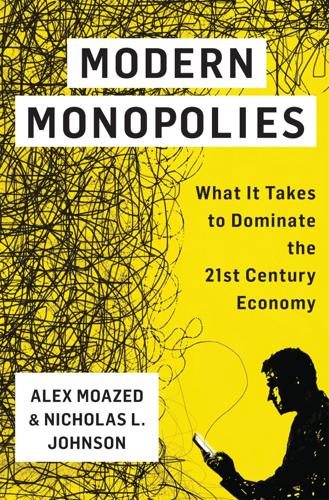
Modern Monopolies: What It Takes to Dominate the 21st Century Economy
by
Alex Moazed
and
Nicholas L. Johnson
Published 30 May 2016
Development platform: a software program Each platform type exists along a commoditization spectrum that defines how it should be built and designed. The level of commoditization is a reflection of the amount of complexity inherent in the core transaction. To put it another way, you can think of commoditization as a reflection of the transaction costs incurred by consumers and producers to complete a transaction. More commoditized platforms operate in industries with naturally lower transaction costs. For example, within services marketplaces, platforms vary depending on how commoditized the service offering is. What makes a service “commoditized” in this context?
…
To be clear, that a platform’s core transaction is more commoditized doesn’t mean that its business is at a disadvantage. (What we’re talking about is different from the business becoming commoditized, which would be a concern.) Instead, understanding a platform’s commoditization level shapes how its business model should be designed in order to optimize its core transaction. The hard part is determining how commoditized or noncommoditized a platform really is in the context of its industry and platform type. It seems obvious in retrospect for Handy to set the prices for its commoditized services, but plenty of competitors like TaskRabbit still get it wrong.
…
However, other investment platforms such as AngelList (startup investing) require a more noncommoditized approach. The same framework also fits social networks. On more commoditized platforms, such as Tinder, users only have a simple profile with photos and a short text description. The platform also matches you automatically with other nearby users. However, on less commoditized platforms like LinkedIn, users have much more in-depth profiles. There, connection is more about search and discovery than automatic matching. Commoditization plays a similar role in content platforms. More commoditized content platforms, such as Twitter or Instagram, typically have a large overlap between their consumers and producers, as producing content is quick and easy.

The Millionaire Fastlane: Crack the Code to Wealth and Live Rich for a Lifetime
by
Mj Demarco
Published 8 Nov 2010
Businesses founded on false premises will rocket to the bin of commoditization and force you to do the inevitable: To play checkers. What is commoditization? Commoditization is a product or service that appears homogeneous among providers. For example, a service that has been heavily commoditized is air travel. Most people aren't loyal to any particular airline; they're loyal to the company with the best price. The product becomes commoditized. Another example is gas. I get gas at any of seven different gas stations because the product is commoditized. People tend to make buying decisions for commoditized goods and services based on one metric: price.
…
The intent was selfish: I want to own a limo company so I'm going to start one. This creates excess supply and weak demand-too many limos running around and not enough customers. When supply exceeds demand, prices must drop; suddenly, the product becomes commoditized. Your total disregard toward market needs leads down the road to commoditization, where you must sell your soul to the buyer who wants the cheapest price. Where does this insanity start? People start businesses they have no business starting. People start businesses “doing what they love” or “doing what they know.” A gentleman who owns a carpet-cleaning business posted a similar story at the Fastlane Forum.
…
If you are going to take your eye off the road and examine your competitors, expose their weaknesses. Exploited weakness is where brands are built: Differentiation is a defense to commoditization. What are they doing wrong? What inefficiency is there? Within the gray area of unsatisfied customers lies differentiation. The only alternative to boorish me-too goods and services is differentiation, and that is accomplished by innovation and analyzing your competitor's weaknesses. Force innovation. Chapter Summary: Fastlane Distinctions Commoditization occurs when you get into business based on a false premise-“I want to own a business” or “I know how to do this, so I'll start a business doing it.”

Joel on Software
by
Joel Spolsky
Published 1 Aug 2004
Without proprietary advantages in hardware or software, you're going to have to take the commodity price, which barely covers the cost of cheap factories in Guadalajara, not your cushy offices in Silicon Valley. "But Joel!" Jared says. "Sun is trying to commoditize the operating system, like Transmeta, not the hardware." Maybe, but the fact that Java bytecode also commoditizes the hardware is some pretty significant collateral damage to sustain. An important thing you notice from all these examples is that it's easy for software to commoditize hardware (you just write a little hardware abstraction layer, like Windows NT's HAL, which is a tiny piece of code), but it's incredibly hard for hardware to commoditize software. Software is not interchangeable, as the StarOffice marketing team is learning.
…
The lowest theoretically sustainable price would be the "commodity price"—the price that arises when you have a bunch of competitors offering indistinguishable goods. So: Smart companies try to commoditize their products' complements. If you can do this, demand for your product will increase and you will be able to charge more and make more. When IBM designed the PC architecture, they used off-the-shelf parts instead of custom parts, and they carefully documented the interfaces between the parts in the (revolutionary) IBM-PC Technical Reference Manual. Why? So that other manufacturers could join the party. As long as you match the interface, you can be used in PCs. IBM's goal was to commoditize the add-in market, which is a complement of the PC market, and they did this quite successfully.
…
And why don't the video chip vendors of the world try to commoditize the games somehow? That's a lot harder. If the game Halo is selling like crazy, it doesn't really have any substitutes. You're not going to go to the movie theater to see Star Wars: Attack of the Clones and decide instead that you would be satisfied with a Woody Allen movie. They may both be great movies, but they're not perfect substitutes. Now, who would you rather be, a game publisher or a video chip vendor? __________ 3. Dean Takahashi, Opening the Xbox: Inside Microsoft's Plan to Unleash an Entertainment Revolution (Prima Lifestyles, 2002). Commoditize your complements.

The Future of the Professions: How Technology Will Transform the Work of Human Experts
by
Richard Susskind
and
Daniel Susskind
Published 24 Aug 2015
In many discussions about commoditization, this phenomenon is seen as threatening, especially to those professionals who charge by the hour (because activity that used to yield considerable fees may now no longer demand large portions of time, nor indeed be the sole territory of traditional experts). Commoditization is also sometimes regarded as distasteful, as diminishing the worth of a service that can or has been reduced to routine work. It follows, if some professional tasks can be commoditized, then many traditional providers, especially the sceptics and the threatened, downplay the significance of these activities, often dismissing them as no longer worthy of their attention. And yet dismissing commoditized work in this way ignores its value—that, from the perspective of the recipient, client, or customer, it is often a good thing, bringing lower costs, greater accessibility, and higher and more consistent quality of service.
…
The evolution of professional work Many practitioners and commentators are already thinking beyond traditional professional practices when they speak today of the ‘commoditization’ or ‘commodification’ of professional work. The terminology here is not precise, but the broad idea is clear enough—that routine professional work in most disciplines is being reduced to sets of standard practices, so that tasks that formerly required human experts can now be conducted by less knowledgeable, even lay, people with the support of appropriate processes and systems. In many discussions about commoditization, this phenomenon is seen as threatening, especially to those professionals who charge by the hour (because activity that used to yield considerable fees may now no longer demand large portions of time, nor indeed be the sole territory of traditional experts).
…
It depicts four main stages in the evolution and delivery of professional work: craft; standardization; systemization; and externalization (this last category is itself subdivided into three).7 In the broadest of terms, our claim is that market forces, technological advances, and human ingenuity are combining to drive professional work from left to right on our model, away from being provided as a form of craft by human experts, through various stages of development that will result, in due course, in much practical expertise being available, in a variety of ways, on an online basis. We regard this movement from left to right on our path as capturing and characterizing a fundamental transformation across the professions. In the parlance we find unhelpful, this movement away from craft does indeed represent the ‘commoditization’ of professional work, but it can be seen at a glance that this is not a single bound from traditional to commoditized. Instead, it is a more complex transition. Figure 5.1. The evolution of professional work Like all models, this evolutionary path is, of course, a simplification of reality. We recognize, for example, that some of the categories overlap with one another; that not all professional work will evolve neatly and linearly through each stage; that some work or parts of work may never evolve beyond one particular stage; and that some work may not evolve from an early stage but may spring to life at a later stage.

Architecting Modern Data Platforms: A Guide to Enterprise Hadoop at Scale
by
Jan Kunigk
,
Ian Buss
,
Paul Wilkinson
and
Lars George
Published 8 Jan 2019
DDR4 RAM is specified to operate at between 1.6 and 2.4 gigatransfers per second, but as we described, the focus is on avoiding using the disk and fitting into RAM rather than on the ability to access RAM quickly. Commoditized Storage Meets the Enterprise In this book, we often stress that Hadoop means a paradigm change. That change manifests itself most clearly in the storage realm. Although CPU and memory are indeed the most commoditized components of modern servers, a frequent area of optimization in Hadoop deployments is the storage subsystem. So, before we dive into the nitty gritty of storage in big data clusters, let us look at the drivers and some typical friction points that emerge during strategic decision making around big data: From terabytes to petabytes We have worked with web-native companies as well as with players from the industrial and financial sectors that already manage petabytes of data with Hadoop storage systems.
…
centralized identity management systems, Integration Providershigh availability, Identity management providers Centrify, Integrating with a Kerberos KDC CephCephFS, CephFS CephFS plug-in mapping HDFS API to Ceph, CephFS RADOS Gateway, Object storage remote block storage support, Remote block storage certificate authorities (CAs), TLS EncryptionCA bundles, TLS and non-Java processes central corporate CA, benefits of, Certificate Management certificates signed by, in production environments, Certificate Management in automated provisioning in the cloud, TLS location of CA certificates, Converting Certificates sending CSRs to, Signing Certificates certificate management, Certificate Management-Automationautomation in generating certificates, Automation centralized corporate CA, using, Certificate Management converting certificates to different formats, Converting Certificates integration providers, Integration Providers integration scenarios for, Integration Scenarios-Scenario 3: Running a Spark Job need for identity management system integration with, Integration Areas signing certificates, Signing Certificates wildcard certificates, Wildcard Certificates certificate signing requests (CSRs), Signing Certificates, Automation certificates, TLS Encryptionconfiguring for load balancing in Impala, Deployment considerations deployment options for TLS certificates, TLS managing for services in the cloud, Encrypting Data in Flight in the Cloud TLS certificates and load balancing, Security considerations use in Oozie security, Deployment considerations X.509 format, X.509 cgroups (container groups), Requirements for Multitenancyin Linux kernel, Requirements for Multitenancy in OpenShift private cloud, Isolation checksumming (DataNode), Short-Circuit and Zero-Copy ReadsHBase and, Short-Circuit and Zero-Copy Reads Cinder component (OpenStack), Life Cycle and Storage client-server traffic pattern, Scalability client-side encryption, Server-side and client-side encryptionsupport by Amazon S3, Encryption in AWS Cloud Dataproc (GCP), Cloud Dataproc cloud environmentsautomated cluster deployment in, Automated Provisioning-Summary basics of virtualization for Hadoop, Basics of Virtualization for Hadoop-Summary Hadoop on public cloud service, Datacenter Considerations hosted databases, Database Integration Options implementing cluster growth, Implementing Cluster Growth IT roles and, Systems engineer PaaS Hadoop, Hadoop Distributions private cloud solutions, Solutions for Private Clouds-Summary public cloud offering as alternative to cold standby clusters, Restore public cloud solutions, Solutions in the Public Cloud-Summary quorum spanning with three datacenters in hyperscale public clouds, Quorum spanning with three datacenters security in, Security in the Cloud-Summary Cloud Foundry, VMware and Pivotal Cloud Foundry cloud providersauditing capabilities, Auditing decoupled storage and compute, Multiple Clusters and Independent Storage and Compute encryption via, Encryption via the Cloud Provider-Encryption in GCP in the public cloud, Cloud Providers-Caveats and service limitsAmazon Web Services (AWS), AWS-Caveats and service limits Google Cloud Platform (GCP), Google Cloud Platform-Caveats and service limits Microsoft Azure, Microsoft Azure-Caveats and service limits managed ID services, Option B: Cloud-Only Shared ID Services request by law enforcement to surrender data, Encryption via the Cloud Provider Cloud Serving Benchmark (YCSB), Validating Other Components Cloudera, Hadoop DistributionsAuto-TLS mode for clusters deployed via Cloudera Director, Automation guidance on deployment on remote block storage, SANs on Azure, One-Click Deployments package format for Hadoop distribution, Installation Process S3 Connector Service, Anonymous access Shared Data Experience, Sharing Metadata Services using Cloudera's distribution on OpenStack with Ceph remote block storage, Summary Cloudera Altus, Cluster Life Cycle Models Cloudera Backup and Disaster Recovery (BDR), Data Replication Cloudera Data Science Workbench (CDSW), Web UIs, Notebooks Cloudera Director, Automationin Azure Marketplace, One-Click Deployments ongoing management of long-lived clusters, Ongoing management plug-in automating provisioning of VMWare-based IaaS, VMware and Pivotal Cloud Foundry provisioning long-lived clusters in the cloud, Cloudera Director scaling capabilities, Scaling Up and Down Cloudera Manager, Required Databases, Monitoringauto configurations for high availability, Autoconfiguration automatic high availability and load balancing for Hue, Deployment options Cloudera Navigator Encrypt and Key Trustee Server (KTS), volume encryption with, Volume Encryption with Cloudera Navigator Encrypt and Key Trustee Server Cloudera Navigator Key Trustee Server (KTS), At-Rest Encryption, KMS implementations Cloudera SDX, Cluster Life Cycle Models CloudSolrServer client, Solr cluster life cycle, Requirements for Multitenancy cluster management software, Cluster installation and configurationauto configurations for high availability, Autoconfiguration combining with vendor solutions for automated deployment, Hooking Into a Provisioning Life Cycle monitoring and alerting capabilities, Monitoring permitting to administer user accounts, Corporate KDC using for data replication, Cluster Management Tools cluster spanning, Cluster Spanning-Summaryalternatives to for disaster tolerance, Alternative solutions bandwidth impairment caused by, Bandwidth impairment nonstandard use of rack awareness, Nonstandard use of rack awareness quorum spanning across three datacenters, Quorum spanning with three datacenters quorum spanning across two datacenters, Quorum spanning with two datacenters clustering softwarefor high-availability databases, Clustering Linux, Virtual IP clusters, Big Data Technology Primer, Clustersaccess by workbenches to services, Hue-Notebooks access mechanisms, Access Mechanisms-Access Topologies access security, Access Securityadministration gateways, Administration Gateways access through landing zones, Landing Zones access topologies, Access Topologies-Kuduedge node interactions, Edge Node Interactions-Kudu interaction patterns, Interaction Patterns load balancing, Load Balancing proxy access, Proxy Access-Service proxies automated provisioning in the cloud, Automated Provisioning-Summarylong-lived clusters, Long-Lived Clusters-TLS sharing metadata services, Sharing Metadata Services transient clusters, Transient Clusters availability in public cloud solutions, Cluster availability cluster configurations and node types, Cluster Configurations and Node Types-Summaryedge nodes, Edge Nodes large cluster configurations, Large Cluster Configurations master nodes, Master Nodes medium cluster configurations, Medium Cluster Configurations small cluster configurations, Small Cluster Configurations utility nodes, Utility Nodes worker nodes, Worker Nodes component replacement policy, Replacements and Repair considering as an appliance, Layer 1 Recommendations data replication, Data Replicationand workload isolation, Replication and Workload Isolation for software development, Replication for Software Development growth of, Cluster Growth-Implementing Cluster Growthdrivers of growth, The Drivers of Cluster Growth implementing, Implementing Cluster Growth implementing in public cloud solutions, Implementing Clusters-Network Architecture in databases, Clustering Kubernetes, OpenShift life cycle in private cloud solutions, Solutions for Private Clouds life cycle models in virtual environments, Cluster Life Cycle Models-Cluster Life Cycle Modelsduration in cluster life cycles, Cluster Life Cycle Models further operations on, Cluster Life Cycle Models Linux cluster using virtual IPs, Virtual IP master and worker machines, Big Data Technology Primer multiple clusters, reasons for, Clusters-Multiple Clusters and Independent Storage and Computeindependent storage and compute, Multiple Clusters and Independent Storage and Compute legal separation, Multiple Clusters for Legal Separation resiliency, Multiple Clusters for Resiliency software development, Multiple Clusters for Software Development workload isolation, Multiple Clusters for Workload Isolation multitenancy, Multitenancy-Requirements for Multitenancy not connecting to the internet, Layer 1 Recommendations provisioningdatabase considerations, Database Considerations Hadoop deployment, Database Considerations-Summary operating systems, Provisioning Clusters-Service Databases service databases, Service Databases-Database Integration Options sizing, Sizing Clusters-Cluster Growthby ingest rate, Sizing by Ingest Rate by storage, Sizing by Storage-Sizing Kudu by storage by workload, Sizing by Workload coarse-grained authorization, Authorization coders, Write performance collections (of documents in Solr), Apache Solr command-line interfaces (CLIs)access to clusters, Command-Line Access HBase shell tool, HBase in Cloudera Director, Cloudera Director in Hive edge node interactions, Hive in Impala edge node interactions, Impala in Kudu, Kudu in Oozie, Oozie in Solr, Solr in Spark edge node interactions, Spark in YARN edge node interactions, YARN interaction with HDFS, HDFS using hdfs tool to load data from landing zones into HDFS, Landing Zones commodity servers, Commodity Servers-Server CPUs and RAM common name (cn), Background compartmentalization of IT, Compartmentalization of IT CompositeGroupsMapping, Group Resolution compression support in datacenters, Software computational frameworks (Hadoop ecosystem), Computational Frameworks-Going deeperApache Spark, Apache Spark MapReduce, Hadoop MapReduce references for, Going deeper compute and storage, Compute and Storage-Summarycluster configurations and node types, Cluster Configurations and Node Types-Summary commoditized storage meets the enterprise, Commoditized Storage Meets the Enterprise-AlternativesJava language and, Everything Is Java modularity of compute and storage, Modularity of Compute and Storage replication vs. erasure coding, Replication or Erasure Coding? computer architecture for Hadoop, Computer Architecture for Hadoop-RAMcommodity servers, Commodity Servers-Server CPUs and RAM CPU specifications, CPU Specifications nonuniform memory storage (NUMA), Nonuniform Memory Access-Why is NUMA important for big data?
…
attaching to instances in GCP, Instance types Azure managed disk types, Azure storage options in AWS EBS volume types, AWS storage options in AWS storage-optimized instances, AWS instance types in Azure memory-optimized VMs, Azure instance types local SSD encryption in GCP, Encryption in GCP options for high-performance local SSDs in GCP, Storage options, Storage options Solrauthorization in, Solr edge node interactions with, Solr high availability, Solrdeployment considerations, Deployment considerations overview, Apache Solr SolrCloud, Apache Solr, Solr source code distributions (Hadoop), Installation Choices source of truth (for data), Cluster Life Cycle Modelsmetadata, Cluster Life Cycle Models source-IP session persistence, Session persistence Spanning Tree Protocol (STP), Implementation Spark, Apache Sparkanalytical SQL engine, Going deeper blocks, Sequential I/O performance edge node interactions with, Spark Kafka consumers reading from executors, Kafka resources for further learning, Going deeper running a job, identity management integration with, Scenario 3: Running a Spark Job Spark History Server, web UI, Web UIs spine switches, Spine-leaf networks spine-leaf networks, Spine-leaf networksdeploying using network fabrics, Implementation implementation, Implementation resilient, Resilient spine-leaf networks scalability, Scalability split brain problem, Failure Scenarios spooling directory source, Landing Zones SQLanalytical SQL engines, Analytical SQL Engines-Storage Engines skills for big data engineers in SQL-based systems and databases, Big data engineer SQL-on-Hadoop engines, JDBC/ODBC driver implementations, Programmatic Access Sqoop, Ingestion SSDs (see solid state drives) SSHaccess to cluster nodes, mediation by administration gateways, Administration Gateways access to nodes running edge services, Access Security cloud-provided instance image access, Assessing the Risk setting up SOCKS proxy, SOCKS proxies SSH agent forwarding in AWS, Network Architecture SSL (Secure Sockets Layer) (see Transport Layer Security) stacked networks, Stacked networkscabling considerations, Stacked network cabling considerations determining oversubscription in, Determining oversubscription in stacked networks implementation, Implementation performance, Performance resilience, Resiliency standard disks, Azure storage options standard machine types (GCP), Instance types standby setups, Replication statestorein Impala, Statestore in YARN, YARN sticky clusters, Cluster Life Cycle Modelsimplementation in the public cloud, caution with, Key Things to Know in do it yourself private cloud solution, Life Cycle Model in OpenShift private cloud, Life Cycle and Storage in OpenStack, Life Cycle and Storage in public cloud solutions, Sticky clusters long-running, Cluster Life Cycle Models sticky sessions, Session persistence storagebackups of storage subsystems, Backups big data engineer's knowledge of, Big data engineer commoditized storage meets the enterprise, Commoditized Storage Meets the Enterprise-AlternativesJava language and, Everything Is Java modularity of compute and storage, Modularity of Compute and Storage replication or erasure coding, Replication or Erasure Coding? configuration for broker data disks in Kafka, Deployment considerations Conventional Shared Storage Mode, HA configurations deciding storage model for private cloud, Solutions for Private Clouds in private cloud solutionsobject storage, Object Storage for Private Clouds-Summary OpenShift, Life Cycle and Storage OpenStack, Life Cycle and Storage in public cloud solutions, Key Things to Know, Storage and Life Cycle ModelsAWS storage options, AWS storage options Azure storage options, Azure storage options compatibility with Hadoop distributions, Storage compatibility object storage, Transient Clusters options in Google Cloud Platform, Storage options summary of, Storage and life cycle summary independent storage and compute, Multiple Clusters and Independent Storage and Compute sizing clusters by, Sizing by Storage-Sizing Kudu by storageHDFS, Sizing HDFS by storage Kafka, Sizing Kafka by storage Kudu, Sizing Kudu by storage storage and storage I/O density, Server Form Factors suspendable clusters and, Cluster Life Cycle Models virtualization, Basics of Virtualization for Hadoop, Storage Virtualization-Object storagenetwork-attached storage (NAS), Network-attached storage object storage, Object storage virtualizing local storage, Virtualizing Local Storage storage area networks (SANs), The Traditional Approach, Landing Zones, Basics of Virtualization for Hadoopapplication to Hadoop, SANs Hadoop on SAN in on-premises environments, SANs in do it yourself private cloud solution, Do It Yourself?

What Algorithms Want: Imagination in the Age of Computing
by
Ed Finn
Published 10 Mar 2017
In 2014, Google exceeded the market capitalization of ExxonMobil, leaving it second only to Apple among the most valuable companies in the world.16 The typical Google advertisement nets the company some tiny fraction of a penny to serve up to a customer, but over the volume of the tens of billions of ads it serves each day, those fractions add up to a kind of minimal transaction cost for using the Internet, collected by its most powerful gatekeeper.17 The functionality of AdSense is in fact a kind of HFT arbitrage in its own right: every time a user navigates to a site serving advertisements via Google’s network, a rapid auction takes place for the marketers with the highest bids to serve their ads. These transactions commoditize the long trail of user data each of us leaves behind online—the detailed consumer profiles about us informed by our purchase history, demographics, and many other factors—so that advertisers can identify target markets based on user “interests” as well as the contextual space of the host website. But AdSense is also a form of temporal arbitrage, commoditizing time just as effectively as HFT systems milking profits out of a few milliseconds of lag. Google has built a tremendous business out of the immediacy of AdSense, out of commoditizing the contemporary, the moment right now when a potential customer is literally hovering at the threshold.
…
WIRED, November 29, 2012. http://www.wired.com/2012/11/netflix-data-gamble. “Behind Apple’s Siri Lies Nuance’s Speech Recognition.” Forbes. Accessed May 28, 2014. http://www.forbes.com/sites/rogerkay/2014/03/24/behind-apples-siri-lies-nuances-speech-recognition. Belsky, Scott. “The Interface Layer: Where Design Commoditizes Tech.” Medium, May 30, 2014. https://medium.com/bridge-collection/the-interface-layer-when-design-commoditizes-tech-e7017872173a. Bendeich, Mark. “Foxconn Says Underage Workers Used in China Plant.” Reuters, October 17, 2012. http://www.reuters.com/article/2012/10/17/us-foxconn-teenagers-idUSBRE89F1U620121017. Berlin, Brent, and Paul Kay. Basic Color Terms: Their Universality and Evolution.
…
I remember a few angry-keyboard-mashing examples, like the time I was told to identify whether jewelry was gold or silver based on a single black-and-white picture. Impossible to tell! Or being asked if a person’s illegible scribbling looks more like “X” or “Y.” Neither, it looks like “Z!”60 Mechanical Turk is another system of arbitrage operating in the implementation gap. In fact, it quantifies and commoditizes that gap, turning it into a series of micro-tasks and judgments: incremental moments of abstraction and concretization. The grinding series of identical tasks it farms out can then be integrated, like individual frames in a full-motion film, into an illusion of continuous computation. What makes Mechanical Turk unusual is the way it puts the human back end of computation on display as a commercial service, applying the logic of the interface economy to the zone of implementation itself.

Move Fast and Break Things: How Facebook, Google, and Amazon Cornered Culture and Undermined Democracy
by
Jonathan Taplin
Published 17 Apr 2017
If the only university students who receive state help are computer engineers, we as a culture will lose something. But Google, YouTube, and Facebook treat cultural objects as commodities—click bait. The scholar James Delong suggests that Google’s principal mission is to commoditize the world’s media: In most circumstances, the commoditizer’s goal is restrained by knowledge that enough money must be left in the system to support the creation of the complements. Google is in a different position. Its major complements already exist, and it need not worry in the short term about continuing the flow. For content, we have decades of music and movies that can be digitized and then distributed, with advertising attached [and data scraped for profiling].
…
Facebook, with its libertarian financier’s roots, takes much of the same stance toward content and advertising, but there are signs that its CEO has real ethical questions about where the company is going. Amazon, whose founder, Jeff Bezos, embraces the libertarian creed but has not taken the “don’t ask permission” route, has instead opened a new front: a relentless push to lower prices and commoditize content (especially books), which presents a different danger. And then there is Apple, the dissenter from the libertarian creed. Both Steve Jobs and Tim Cook have been real allies to the content community, and their stance against the surveillance-marketing model that is at the core of Google’s and Facebook’s businesses—i.e., their support of ad blockers—puts them in direct opposition to the dominant search and social platforms.
…
Perhaps Henry Jenkins is right: the neorealism that was so much a part of the American New Wave in the 1970s has drifted into TV. But TV has also spawned an age of reality shows in which Kim Kardashian and Donald Trump can overwhelm any cultural innovation that might exist. 8. In 1970 the Nobel Prize–winning economist George Akerlof published a paper that may help us understand the effect that the commoditization of media by Facebook, YouTube, and Google is having on our culture. The paper was called “The Market for ‘Lemons’: Quality Uncertainty and the Market Mechanism.” Akerlof says that when you buy a used car you assume the worst—it’s a lemon—in your negotiation stance. Thus the seller of a really good used car always loses out.
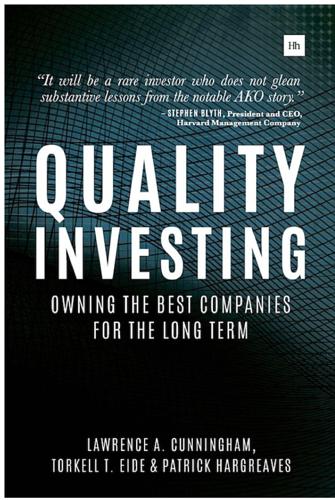
Quality Investing: Owning the Best Companies for the Long Term
by
Torkell T. Eide
,
Lawrence A. Cunningham
and
Patrick Hargreaves
Published 5 Jan 2016
So long as price is within budget, it is less likely that strict scrutiny will be applied to price, even if a cheaper sofa or pair of pants may be found down the street. Such price slack offsets the usual vulnerabilities for low-price-by-name business models. The comparison between differentiated and commoditized products hints at a few conditions necessary for this achievement. Low-price-by-name offerings need to be both similar and different: IKEA furnishings must be fairly standardized but still distinctive. Playing off quality and differentiation lets companies create products that can be sold at attractive prices without giving customers the ability to establish whether it really is the best deal in town.
…
The model depends on continuous and rapid response to shifting demand, meaning understanding changing consumer preferences, having control of the supply chain, managing inventory effectively, and deftness in distribution. All this requires good designers, operation mavens, and synchronized information technology. Upstarts will struggle to do it all well. True, as technology and supply chain automation commoditizes, these business models may become more vulnerable. They nevertheless appear to have sustainable competitive advantages that protect against the vulnerabilities of the basic low-cost strategy. Low-cost squared A strategy of consistently low pricing is typically enabled by low unit costs.
…
For a fortunate few, fluctuations are small enough that they barely register, but for many, vicissitudes are tidal. Significant cyclicality can mask problems as well as disrupt or even thwart value creation. Prudence dictates minimizing exposure to deeply cyclical industries, such as energy and mining, where many companies sell commoditized products. Such companies rarely command sustainable competitive advantages. However, cycles also recur among purveyors of branded and other differentiated products boasting competitive advantages. Even quality companies must battle this reality and investors are better off confronting the fact head on.
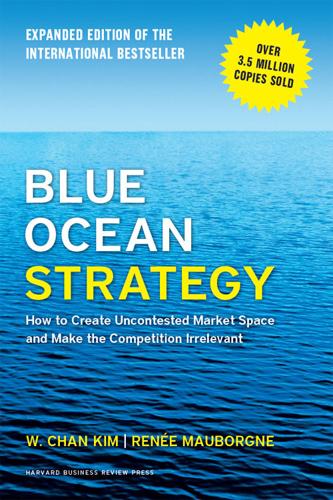
Blue Ocean Strategy, Expanded Edition: How to Create Uncontested Market Space and Make the Competition Irrelevant
by
W. Chan Kim
and
Renée A. Mauborgne
Published 20 Jan 2014
MY OCEAN IS TURNING RED” captures the sentiment echoed so frequently by managers around the world. More and more people, whether managers of companies, heads of nonprofits, or leaders of government, find themselves up against an ocean of bloody competition and want to get out. Maybe your business is seeing its margins shrink. Maybe competition is getting more intense, driving commoditization of your offering and rising costs. Maybe you know you are going to announce that salary increases won’t be coming. That’s not a situation any one of us wants to face. And yet that’s a situation that so many do face. How can you address this challenge? The lessons, tools, and frameworks of Blue Ocean Strategy will help you to meet this challenge, whatever industry or economic sector you are in.
…
As trade barriers between nations and regions are dismantled and as information on products and prices becomes instantly and globally available, niche markets and havens for monopoly continue to disappear.9 While supply is on the rise as global competition intensifies, there is no clear evidence of an increase in demand relative to supply, and statistics even point to declining populations in many developed markets.10 The result has been accelerated commoditization of products and services, increasing price wars, and shrinking profit margins. Industrywide studies on major American brands confirm this trend.11 They reveal that for major product and service categories, brands are generally becoming more similar, and as they are becoming more similar, people increasingly select based on price.12 People no longer insist, as in the past, that their laundry detergent be Tide.
…
When supply exceeds demand, as it does in an increasing array of industries, the intensity of competition tends to have deleterious effects on the profitable growth of organizations, as more and more firms fight to win a slice of a given pool of customers, triggering intense price pressure, razor-thin margins, commoditization of offerings, and slower growth. If companies continue to compete further to grab a bigger share of the existing pie without expanding it or creating a new one, such competitive actions are bound to produce negative economic consequences for firms. This is why blue ocean strategy argues that firms need to go beyond competing and the mere improvement of product or services in overcrowded industries and pursue value innovation to open up new market space and make the competition irrelevant.

Sacred Economics: Money, Gift, and Society in the Age of Transition
by
Charles Eisenstein
Published 11 Jul 2011
Social capital refers primarily to relationships and skills, the “services” that people once provided for themselves and each other in a gift economy, such as cooking, child care, health care, hospitality, entertainment, advice, and the growing of food, making of clothes, and building of houses. As recently as one or two generations ago, many of these functions were far less commoditized than they are today. When I was a child, most people I knew seldom ate at restaurants, and neighbors took care of each other’s children after school. Technology has been instrumental in bringing human relationships into the realm of “services,” just as it has brought deeper and more obscure pieces of the earth into the realm of goods.
…
We wish we were closer to our neighbors; we think of ourselves as friendly people who would gladly help them. But there is little to help them with. In our house-boxes, we are self-sufficient. Or rather, we are self-sufficient in relation to the people we know but dependent as never before on total strangers living thousands of miles away. The commoditization of social relationships leaves us with nothing to do together but to consume. Joint consumption does nothing to build community because it requires no gifts. I think the oft-lamented vacuity of most social gatherings arises from the inchoate knowledge, “I don’t need you.” I don’t need you to help me consume food, drink, drugs, or entertainment.
…
Unfortunately, or rather fortunately, nuclear weapons and a shift in human consciousness have limited the solution of endless military escalation. War between the great powers is no longer possible. Other solutions—globalization, technology-enabled development of new goods and services to replace human functions never before commoditized, technology-enabled plunder of natural resources once off limits, and finally financial autocannibalism—have similarly run their course. Unless there are realms of wealth I have not considered, and new depths of poverty, misery, and alienation to which we might plunge, the inevitable cannot be delayed much longer.
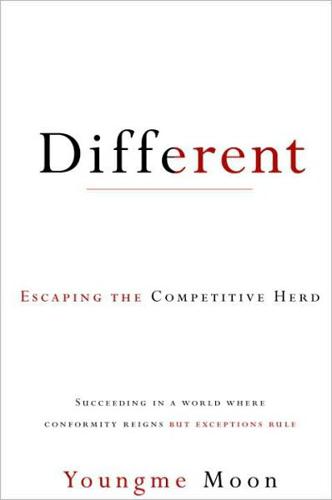
Different: Escaping the Competitive Herd
by
Youngme Moon
Published 5 Apr 2010
The critical question comes down to whether in a given situation there is value in diversity, in the emergence of multiple divergent outcomes. When it comes to track-and-field, we may want our runners moving in the same direction, but when it comes to medical care or higher education, we may not. In business, of course, differentiation is general y considered a firm’s primary defense against commoditization. And in theory, the more fierce the competition, the stronger the firm’s commitment to differentiation should be. But in fact, I have argued that the opposite is often true: The more diligently firms compete with each other, the less differentiated they can become, at least in the eyes of consumers.
…
Frequent-flier programs become standard across the industry. The entire category is back to where it started, with the exception that the ante has been raised—meaning it has become more costly for firms to compete in the category. Viewed from this perspective, it could be argued that product augmentation is but an expensive route to commoditization—the more generous the standard value proposition becomes within the category, the easier it becomes for consumers to be indifferent to which competitive alternative they choose. Once consumers realize that al airlines offer frequent-flier programs, that al detergents offer enhanced stain fighting, that al companies offer good warranties, they have less reason to be picky in their selections.
…
A mid-distance running shoe, or a short-distance low-impact cross-trainer? This is the stage at which the category starts to conjure the worst of two worlds—a growing profusion of alternatives, a shrinking proportion of which are meaningful. Product augmentation has become, once again, an expensive route to commoditization. What is perhaps most disheartening about this phenomenon is how skil ful businesses have become at sustaining it. In recent years, this art— the art of relentless, incremental augmentation, whether by addition or by multiplication—has become an essential product marketing competency; it has become what modern marketers do.
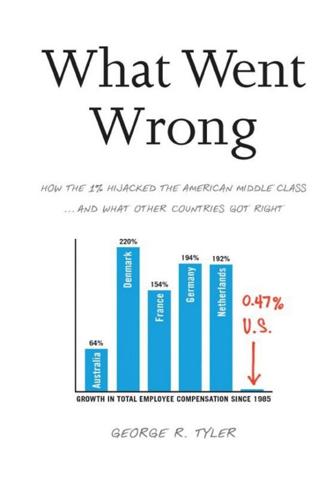
What Went Wrong: How the 1% Hijacked the American Middle Class . . . And What Other Countries Got Right
by
George R. Tyler
Published 15 Jul 2013
And some fifty countries mandate that employers pay wage premiums for evening and night work, but America is not among them.16 These statistics validate the disposable labor sobriquet associated with the commoditization of American employees during the Reagan decline. The investment and productivity performance of the family capitalism countries indicate that worksite standards don’t inhibit superior global competitiveness and productivity growth. Indeed, evidence indicates that worksite standards are analogous to high minimum wages in encouraging employers to value employees rather than commoditize them, which incentivizes upskilling and thus productivity growth by firms. Australian Brian Howe, deputy prime minister in the Paul Keating government during the 1990s, chaired a 2012 investigation of jobsite practices in that country.
…
As an example, one Apple executive mendaciously justified his Chinese labor force this way: “The US has stopped producing people with the skills we need.”12 Well, it’s theoretically possible that Apple is really responding to the superior training of Chinese workers, rather than their $145 per month salaries, but I seriously doubt it. In contrast, the family capitalism countries were proactive, prospering despite the tumult of global integration. They rejected trade controls, the commoditization of workers, and market fundamentalism in favor of canny mechanisms to maximize productivity and family income growth. Unhampered by ideology and buttressed with centuries of vigorous economic debate between the likes of Adam Smith and Friedrich Hayek, they focused on meeting election mandates demanding family prosperity.
…
In Germany during 2012, this system produced wage gains averaging about half a point above the consumer price index, ranging from a nominal 3.3 percent in the highly productive capital goods industry to only 2 percent in the banking and insurance sectors. Wage Determination Features Compromise—Not Conflict The wage-setting mechanisms that have evolved in the family capitalism countries are rooted in American corporate practices, but the job site orientation is entirely different. Rather than wage compression featuring commoditized and disposable employees, these high-performing economies place a premium on job site productivity and rewarding John Calvin’s work ethic. The enterprise cultures abroad are profoundly different, with employees viewed as assets, not liabilities. That seminal difference can best be grasped by examining the potential wage crisis confronting Germany in 2011.
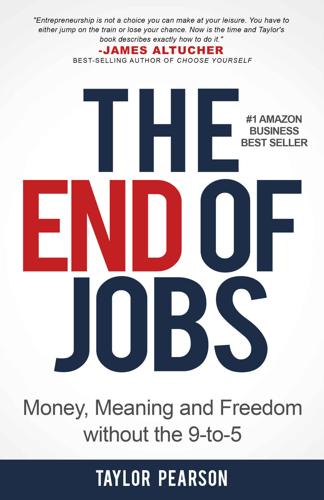
The End of Jobs: Money, Meaning and Freedom Without the 9-To-5
by
Taylor Pearson
Published 27 Jun 2015
The End of Jobs Money, Meaning and Freedom Without the 9–5 Taylor Pearson Contents Copyright Download the Bonuses Free! Introduction Section 1: Have We Reached The End of Jobs? 1. Lessons on Globalization from an Evil Genius 2. The Acceleration of Technology 3. The Commoditization of Credentialism Section 2: Why Are We at the End of Jobs? 4. The Entrepreneurial Economy (2000ish–???) Section 3: Entrepreneurship Is Safer than Ever 5. Thriving in Extremistan Section 4: The Long Tail 6. The Democratization of the Tools of Production 7. The Democratization of Distribution 8.
…
The story of the Industrial Revolution in the 18th and 19th centuries and the Knowledge Revolution in the 20th is the proliferation of technology and the growth that accompanied it. Both the growth in technology and globalization are continuing at an accelerating rate. Many people are responding by further investing in credentials. Let’s see how that’s working out. 3 The Commoditization of Credentialism Why MBAs and JDs Can’t Get Jobs “It’s Never Been Worse to Be Information Smart Than It Is Today.” Gary Vaynerchuk at SXSW, 2014 Angie graduated from law school in 2013. It wasn’t a so-called top tier law school, but it was well-respected. I was sitting with her in a hamburger joint while she related to me that she spent a year waiting tables before she got enough connections to finally “get lucky” and land a job at a law firm.
…
The glut of lawyers in the U.S. may be the most obvious example, but even in the traditional STEM fields (science, technology, engineering, and mathematics), which were long considered lock-ins for employment, people with related degrees are struggling harder to find jobs than they were a decade ago. Jobs in almost all industries are becoming increasingly commoditized. It makes sense to us that low-skilled jobs with lower barriers to entry are being affected by globalization and technology, but why is it affecting the more highly-credentialed ones? The Cynefin Framework and Your Career The Cynefin framework23 (pronounced Kih-neh-vihn) was developed by Dave Snowden after studying the management structure at IBM.
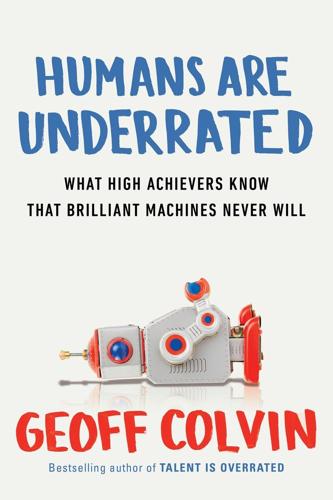
Humans Are Underrated: What High Achievers Know That Brilliant Machines Never Will
by
Geoff Colvin
Published 3 Aug 2015
While we’ve seen the general phenomenon before, the way that work changes is different every time, and this time the changes are greater than ever. The skills that will prove most valuable are no longer the technical, classroom-taught, left-brain skills that economic advances have demanded from workers over the past 300 years. Those skills will remain vitally important, but important isn’t the same as valuable; they are becoming commoditized and thus a diminishing source of competitive advantage. The new high-value skills are instead part of our deepest nature, the abilities that literally define us as humans: sensing the thoughts and feelings of others, working productively in groups, building relationships, solving problems together, expressing ourselves with greater power than logic can ever achieve.
…
We’re not all in the health care industry, but we all face many of the same challenges. Competition is getting more intense as performance is measured more rigorously, and we’re being paid according to what we deliver. Technology is advancing and disrupting all around us, doing wonderful things but increasingly making our business, whatever it is, more commoditized, leaving us struggling to achieve and maintain some kind of competitive advantage. A friction-free economy—in which information costs, transaction costs, and switching costs are dropping rapidly to zero—is more efficient but also more merciless; in an always-on environment, stress and burnout are increasing.
…
As for some of the most important systems in our lives—computer systems—they’re increasingly being created by computers themselves. Obviously the world will need plenty of computer engineers as infotech proliferates, but, as we’ve seen before, the important issue isn’t the number of jobs but rather the number of high-value jobs. Computer coding is becoming commoditized, with schools adding classes for students as young as five. The skill is becoming analogous to writing—everyone in a modern economy must be able to do it at some basic level, but the world needs very few people who do it for a living. Instead, coding, or at least a knowledge of how it works, becomes a skill that everyone brings to their work in other fields.

Fool Me Twice: Fighting the Assault on Science in America
by
Shawn Lawrence Otto
Published 10 Oct 2011
It is a vast misunderstanding by a generation that has lost touch with—or perhaps never really knew—what education should do: open us up to wonder and the great meaning and aesthetic beauty of life. THE SHINING CITY UPON A HILL It is wonder that we lost in our move to a commoditized, national defense model of science funding, which revolved around dispelling fear. It was perhaps important and perhaps helpful, but it went too far, and by forgetting the real reasons we do science it was ultimately a colossal error. As Sanders says, “Science is no longer about science. It’s about marketing. It’s either ‘Gee whiz’ or ‘What is it going to do for me?’”11 The commoditization can be seen in how we oversell the practical benefits of science. The war on cancer, for example.
…
They also ignore the plethora of science information that is freely available on the Internet. WHY SCIENCE DEBATES ARE IMPORTANT TO AMERICA The larger issue is that science is walled off from the general population, a subject left to experts, science museums, universities, and the odd science festival. It has become commoditized and the public is merely presented with the conclusions and not exposed to the process. And in its absence, other powers have rushed in to fill the vacuum in the public dialogue, making science into their whipping boy when its conclusions don’t support their ideological predilections. This is the problem science debates solve: By putting science in its rightful place as an ongoing part of the policy discussion of the nation, parents can become educated in the context in which they are used to taking in information—policy discussions that affect their lives.
…
The futuristic superconducting technologies Wilson pushed for helped keep the accelerator vital under the leadership of his successor, the physicist, Nobel laureate, and great science humanitarian Leon Lederman, and it remained the world’s most powerful until 2006, when the Large Hadron Collider opened at CERN (European Organization for Nuclear Research) in Geneva. TO AWAKEN, PERCHANCE TO WONDER As Wilson noted, science, like art, is a cultural expression that makes a nation worth defending. Like great art and great music, its true value lies in exploring the unknown. Today, the opposite argument, the commoditization of science, is virtually the only one heard. It has metastasized from the smaller-minded appeals of the cold war to all of human learning and higher education. Education and knowledge are no longer values of truth and beauty that make life worth living, they are means to the ends of greater pay and more consumption, which somehow are supposed to make life worth living.

Fire in the Valley: The Birth and Death of the Personal Computer
by
Michael Swaine
and
Paul Freiberger
Published 19 Oct 2014
The market for post-PC devices is different from the market for personal computers. The personal computer started as a hobbyist product designed by tech enthusiasts for people like themselves. Commoditization began in just a few years, but the unique nature of the computer—a device whose purpose is left to the user to define—allowed it to resist commoditization for decades. In the post-PC era, even though the devices are still really computers they are designed around specific functions. So the forces of commoditization that had been held at bay are now rushing in. The mainstream market for these devices doesn’t want flexibility and moddability and choices to make once they’ve purchased a device.
…
Retailing the Revolution Spreading the Word: The Magazines Word of Mouth: The Clubs and Shows Hand-Holding: The First Retailers The Big Players 7. Apple Jobs and Woz Starting Apple Magic Times Trouble in Paradise Shooting for the Moon 8. The Gate Comes Down The Luggable Computer The HP Way and the Xerox Worm IBM 9. The PC Industry Losing Their Religion Clones Consolidation Commoditization Cyberspace Apple Without Jobs 10. The Post-PC Era The Big Turnaround Getting Really Personal Into the Cloud Leaving the Stage Looking Back Copyright © 2014, The Pragmatic Bookshelf. Praise for All Editions of Fire in the Valley Things change over time, even when they don’t.
…
Swaine and Freiberger capture the emotions and motivations at the core of this very special place with tenderness and finesse that endure to this day. → Andy Cunningham Founder and president, SeriesC Fire in the Valley presents the full story: from calculating machines and military computers through the heady days of garage start-ups, the rise of the clones, the initial forays into cyberspace, and on to consolidation, commoditization, and the heightened frenzy of an all-connected world of mobile devices and cloud services that we experience today. Its theme is best summed up by the authors themselves: time and again, crazy dreamers had run up against resistance from accepted wisdom and had prevailed to realize their dreams.
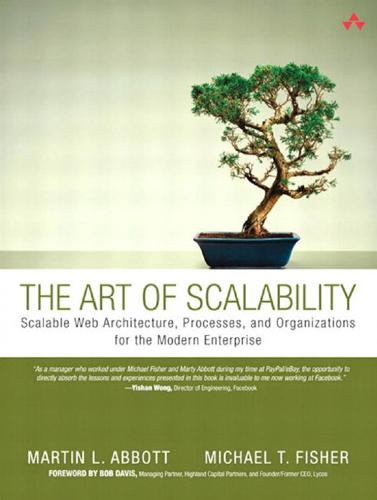
The Art of Scalability: Scalable Web Architecture, Processes, and Organizations for the Modern Enterprise
by
Martin L. Abbott
and
Michael T. Fisher
Published 1 Dec 2009
Each vendor is subject to a competitive bidding process, where price, quality, and reputation all come into play. Technology solutions, much like building materials, suffer the effects of commoditization over time. A good idea or implementation that becomes successful in an industry is bound to attract competitors. The competitors within the solution space initially compete on differences in functionality and service, but over time, these differences decrease as useful feature sets get adopted by all competitors. In an attempt to forestall the effects of commoditization through increased switching costs, providers of 301 302 C HAPTER 20 D ESIGNING FOR A NY TECHNOLOGY systems and software try to produce proprietary solutions or tools that interact specifically and exclusively with their systems.
…
So only build things when you are really good at it and it makes a significant difference in your product, platform, or system. Use Commodity Hardware We often get a lot of pushback on this one, but it fits in well with the rest of the principles we’ve outlined. It is similar to our principle of using mature technologies. Hardware, especially servers, moves at a rapid pace toward commoditization characterized by the market buying predominately based on cost. If you can develop your architecture such that you can scale horizontally easily, you should be buying the cheapest hardware you can get your hands on, assuming that the cost of ownership of that hardware (including the cost of handling higher failure rates) is lower than higher end hardware. 203 204 C HAPTER 12 E XPLORING A RCHITECTURAL P RINCIPLES Scalability Principles In Depth Now that we’ve had an overview of our suggested principles, let’s dig deeper into the ones that we believe support scalability the most.
…
In an attempt to forestall the effects of commoditization through increased switching costs, providers of 301 302 C HAPTER 20 D ESIGNING FOR A NY TECHNOLOGY systems and software try to produce proprietary solutions or tools that interact specifically and exclusively with their systems. Avoiding getting trapped by extensive modification of any provider’s solution or adoption of tightly integrated provider tools allows you the flexibility of leveraging the effects of commoditization. As competitors within a solution space begin to converge on functionality and compete on price, you remain free to choose the lowest cost of ownership for any given solution. This flexibility results in capital outlay, which minimizes the impact to cash flow and lowers amortized costs, which positively impacts profits on a net income basis.
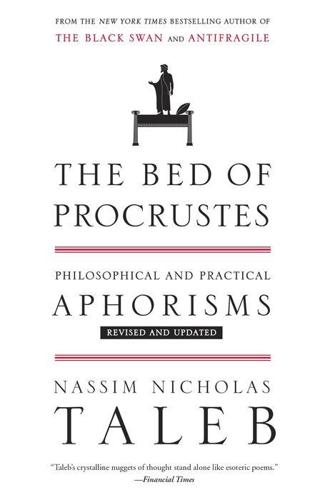
The Bed of Procrustes: Philosophical and Practical Aphorisms
by
Nassim Nicholas Taleb
Published 30 Nov 2010
In more sinister versions (such as the one in Pseudo-Apollodorus’s Bibliotheca), Procrustes owned two beds, one small, one large; he made short victims lie in the large bed, and the tall victims in the short one. Every aphorism here is about a Procrustean bed of sorts—we humans, facing limits of knowledge, and things we do not observe, the unseen and the unknown, resolve the tension by squeezing life and the world into crisp commoditized ideas, reductive categories, specific vocabularies, and prepackaged narratives, which, on the occasion, has explosive consequences. Further, we seem unaware of this backward fitting, much like tailors who take great pride in delivering the perfectly fitting suit—but do so by surgically altering the limbs of their customers.
…
– How often have you arrived one, three, or six hours late on a transatlantic flight as opposed to one, three, or six hours early? This explains why deficits tend to be larger, rarely smaller, than planned. * My great-great-great-great-great grandfather’s rule. THE LUDIC FALLACY AND DOMAIN DEPENDENCE* Sports are commoditized and, alas, prostituted randomness. – When you beat up someone physically, you get exercise and stress relief; when you assault him verbally on the Internet, you just harm yourself. Just as smooth surfaces, competitive sports, and specialized work fossilize mind and body, competitive academia fossilizes the soul
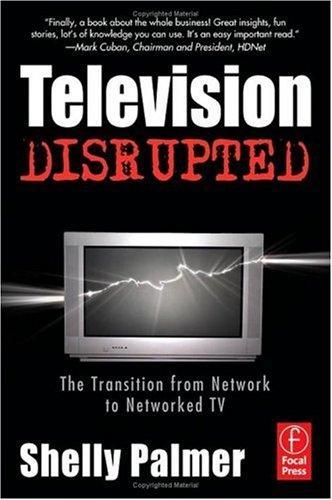
Television disrupted: the transition from network to networked TV
by
Shelly Palmer
Published 14 Apr 2006
Much has been said about the disruptive nature of the democratization of production tools. Inexpensive digital cameras are ubiquitous. And, to be sure, daily advancements in desktop audio and video post-production software — coupled with the constant downward price pressure on personal computer solutions — have seriously commoditized production ability. But ... it has done absolutely nothing to commoditize production capability. The average American 25-year-old has watched more than 36,000 hours of television. Nielsen puts the number at about 4.5 hours each day. That qualifies almost any American television viewer as the undisputed expert in what they personally like to watch and how much attention they usually pay to production values (the quality of the elements in a show, including video, graphics, music, sonic quality, sets, lights, actors, costumes, number of cameras, etc.).
…
desirable and may give a competitive advantage Copyright © 2006, Shelly Palmer. All rights reserved. 2-Television.Chap Two v3.qxd 3/20/06 7:34 AM Page 29 Value-added Services Enhance the Viewing Experience 29 to the companies that utilize IPTV distribution methodologies — or they could simply become commoditized or value-add feature sets that have no economic impact. It depends on how quickly IP-provisioned systems are deployed nationwide. When thinking about disruptive technologies, keep in mind that sometimes existing technologies can be modified or adapted to compete effectively. This is the very definition of an arms race.
…
Network television shows can also enjoy a long and profitable “off-net” life.You will find episodes of “Star Trek,” “Seinfeld,” “Gilligan’s Island,” and “Spin City” or monster franchises like “CSI” or “Law & Order,” to name a few, in DVD box sets and broadcast syndication worldwide. Here, the problem is digital distribution. As the public Internet becomes more available and file sharing services become commoditized, there is little hope of maintaining the value proposition or sales structure of these back catalogs. Concepts Are Worthless — Packaging Is Priceless! Production and distribution are now fairly well democratized. But there is still a great deal of value in the old infrastructure. To test this theory, try to sell the “concept” of a music show to MTV, or a news show to CNN, or a kids’ show to NICK.
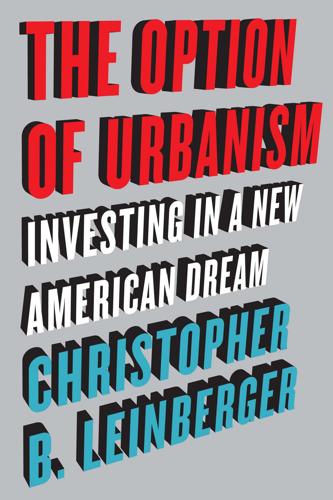
The Option of Urbanism: Investing in a New American Dream
by
Christopher B. Leinberger
Published 15 Nov 2008
Stockbrokers want to trade only a defined class of stock, such as class A Intel stock or preferred AT&T stock. No one wants to trade undefined crude oil or special Intel stock; it is too risky and complicated. In other words, public markets trade only items that have been commoditized (made identical). So when Wall Street took on real estate in the form of REITs and CMBSs in the early 1990s, real estate had to commoditize what it built. The industry did this with what it knew how to build then: drivable sub-urban products. This commoditization resulted in what is referred to as the “nineteen standard real estate product types” that Wall Street knows, understands, and can be traded in large quantities.9 Any deviation by building a product that was “nonconforming,” a term of art on Wall Street, meant that it was not one of the nineteen and that you either did not get financing or, if you did, it was far more expensive.
…
This is the reason why any suburban place in the country looks pretty much the same as any other. The nineteen standard product types ensure that once you have seen one neighborhood retail center or any other standard product type, you have seen them all. Although this “cookie cutter” style of development was a mark of early drivable sub-urbanism, the commoditization process solidified it into a single nationwide type. The phenomenon was best captured by Tom Wolfe in A Man in Full, when one of the characters is driving through the nameless suburbs of Atlanta and comments, “the only way you could tell you are leaving one community and entering another is when the franchise chains start repeating and T H E S TA N DA R D R E A L E S TAT E P R O D U C T T Y P E S | 5 3 FIGURE 3.1.

McMindfulness: How Mindfulness Became the New Capitalist Spirituality
by
Ronald Purser
Published 8 Jul 2019
It is the karmic equivalent of: ‘I’m not cross, just disappointed’.16 Headspace vows to simplify meditation, as do its peers. Their bite-sized programs help to standardize mindfulness for ease of consumption and “scaling up” revenues. This process follows George Ritzer’s sociological theory of “McDonaldization.”17 The first mark of commoditization is efficiency, which allows for mass production and delivery. The second is calculability, quantifying offerings and measuring outcomes — as seen in “tracking” features on mindfulness apps and new wearable products like Muse, a “brain sensing headband” that helps access calm (with the tagline “meditation made easy”).
…
Provision of service has to meet expectations. The fourth aspect, control, helps ensure this, responding to feedback so products are honed. The classic model for this, of course, is the Big Mac. Ritzer argues that when everyday experiences are McDonaldized, the results can be irrational. The commoditization of “McMindfulness” has sought to make meditation more efficient, calculable, predictable, and controlled. But this has led to the opposite outcome, creating an uncontrollable consumer commodity that devalues mindfulness. Downloading an app as a digital detox is irrational. Mindful merchants don’t care.
…
Kabat-Zinn is its prophet, joining the ranks of capitalist apologists such as Facebook’s Sheryl Sandberg, the media mogul Oprah Winfrey, billionaire Bill Gates, and John Mackey, CEO of Whole Foods. It is probably no coincidence that Kabat-Zinn — like other mindfulness gurus — traded his activism for meditative quietism fifty years ago. From his comfortable perch, it might make sense to be a passive observer of human afflictions, just “radically accepting” unwholesome conditions. But commoditized impotence is not very helpful to those on the economic precipice, facing a shrinking welfare state, and other disadvantages from xenophobia to cultural trauma. Kabat-Zinn’s chief cheerleaders disagree. “Whether you are struggling to put food on the table or you’re on top of the world,” insists Arianna Huffington, another multi-millionaire, “mindfulness is something that helps you connect you to yourself.”11 But what do you do after that?
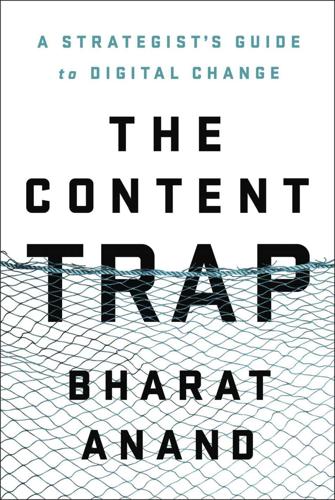
The Content Trap: A Strategist's Guide to Digital Change
by
Bharat Anand
Published 17 Oct 2016
But the data suggests otherwise: Surprisingly, the top sources of news continue to command disproportionate numbers of readers and links on aggregators. In early 2014 we analyzed the rankings of sources on Google News, examining more than 20,000 randomly selected stories over a month. At first glance, the threat of commoditization appeared real: More than 2,000 news sources were ranked as the top source for some story. If news was undifferentiated—so that each source was as likely as any other to be ranked at the top—then the predicted top-rank market share for any single news source would be very small: 1/2,000, or 0.05 percent, to be precise.
…
It seeks out news outlets, striking paid deals for exclusive content, showcasing them in internal conferences, and sometimes offering them educational programs on managing their own digital transition. Let’s see how book publishing has fared. The Kindle’s version of 99-cent songs was $9.99 books—a 40 percent discount from the hardcover retail price. It seemed that publishers were destined to follow the same path as recording studios, as Amazon appeared intent on commoditizing the book market to prop up hardware sales. To fight the trend, five major publishers struck deals with Apple, according to which they themselves—not the e-retailer—would determine the retail price, and would retain 70 percent. ( Subsequent antitrust investigations of price-fixing have now rendered these agreements obsolete.)
…
Ninety-nine-cent and DRM-free music was a choice by Apple, free office applications through Docs a choice by Google, and $9.99 e-books, self-publishing, and low-cost hardware a choice by Amazon. In each case the choice related not only to a strategy for propping up value in the core business but to reducing the price of, or even commoditizing, the complements. Figure 12: Content Versus Complements: The Battle Among Digital Giants Therein lies perhaps the greatest challenge for content producers: Their future will depend not only on what they make but on how effectively they manage value-creating opportunities in adjacent areas.
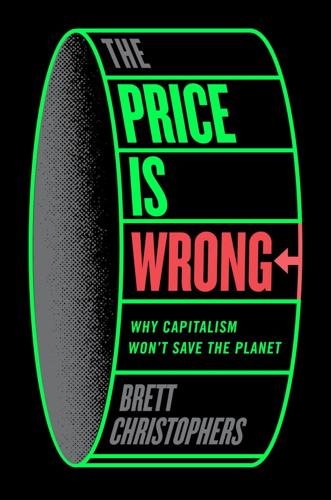
The Price Is Wrong: Why Capitalism Won't Save the Planet
by
Brett Christophers
Published 12 Mar 2024
Writing in the 1940s, Polanyi argued that in capitalism there are real commodities and what he called ‘fictitious commodities’.41 A ‘real’ commodity, he said, was something that was originally brought into being explicitly for sale on the market: commoditization, in other words, was intrinsic to it. Commodities were ‘fictitious’, by contrast, if they were treated by society as commodities by being bought and sold in markets, but had not been created with such commoditization in mind. Rather, the market had subsequently been imposed upon them. Fictitious commodities, Polanyi pointed out, are typically awkward, unruly things from a capitalist market perspective.
…
Scholars who have undertaken research into the historical origins of the industry that ultimately developed around humanly produced electricity have shown that commoditization occurred only haltingly and contingently. Here is obviously not the place to go into that history in any detail, but a particularly salient fact is that, for many years, it was far from clear that electricity itself – that is, the producible energy form that is bought and sold as kilowatt-hours today – would eventually emerge as the principal locus of commoditization.42 More generally, as Simon Pirani has observed, in most times and places around the world since its invention, humanly produced electricity has been regarded ‘more as essential infrastructure, or a means of social provision, than as a business’.43 A commodity by its nature, electricity is not.
…
It would be hard to imagine stronger refutation of ACER’s risible claim, at the height of Europe’s energy crisis, that, under ‘normal’ conditions, the continent’s electricity markets work well.45 Perhaps Polanyi’s sharpest insight of all, however, was that maintenance of the fiction that a thing such as land or labour is genuinely amenable to commoditization ultimately depends on major market actors abiding by norms and conventions that are fragile even under relatively benign conditions. In other words, it is crucial that actors with the power to make or break brittle markets contribute to the collective fiction of commoditization by behaving in a conventional manner. The market edifice – or artifice – depends upon such observance of the formal and informal codes that scaffold markets in fictitious commodities.

The Fourth Industrial Revolution
by
Klaus Schwab
Published 11 Jan 2016
* * * Box H: On the Ethical Edge * * * Technological advances are pushing us to new frontiers of ethics. Should we use the staggering advances in biology only to cure disease and repair injury, or should we also make ourselves better humans? If we accept the latter, we risk turning parenthood into an extension of the consumer society, in which case could our children become commoditized as made-to-order objects of our desire? And what does it mean to be “better”? To be disease free? To live longer? To be smarter? To run faster? To have a certain appearance? We face similarly complex and on-the-edge questions with artificial intelligence. Consider the possibility of machines thinking ahead of us or even out-thinking us.
…
Source: http://pages.experts-exchange.com/processing-power-compared/ Shift 7: Storage for All The tipping point: 90% of people having unlimited and free (advertising-supported) storage By 2025: 91% of respondents expected this tipping point to have occurred Storage capabilities have evolved tremendously in the past years, with an increasing number of companies offering it almost for free to their users as part of the service benefits. Users are producing increasing amounts of content, without worrying about ever having to delete it to make room for more. A clear trend of commoditizing storage capacity exists. One reason for it is that the storage price (Figure IV) has dropped exponentially (by a factor of approximately ten, every five years). Figure IV: Hard Drive Cost per Gigabyte (1980-2009) Source: “a history of storage costs”, mkomo.com, 8 September 200988 An estimated 90% of the world’s data has been created in the past two years, and the amount of information created by businesses is doubling every 1.2 years.89 Storage has already become a commodity, with companies like Amazon Web Services and Dropbox leading this trend.
…
Figure IV: Hard Drive Cost per Gigabyte (1980-2009) Source: “a history of storage costs”, mkomo.com, 8 September 200988 An estimated 90% of the world’s data has been created in the past two years, and the amount of information created by businesses is doubling every 1.2 years.89 Storage has already become a commodity, with companies like Amazon Web Services and Dropbox leading this trend. The world is heading towards a full commoditization of storage, through free and unlimited access for users. The best-case scenario of revenue for companies could potentially be advertising or telemetry. Positive impacts – Legal systems – History scholarship/academia – Efficiency in business operations – Extension of personal memory limitations Negative impact – Privacy surveillance Unknown, or cuts both ways – Eternal memory (nothing deleted) – Increased content creation, sharing and consumption The shift in action Numerous companies already offer free storage in the cloud, ranging from 2 GB to 50 GB.

Working in Public: The Making and Maintenance of Open Source Software
by
Nadia Eghbal
Published 3 Aug 2020
For example, although libraries now offer e-books, only a certain number of people at a time can check out the same e-book, due not to the limitations of technology but to restrictive commercial licenses. Producers commoditized code for as long as they could. Commercial licenses, layered on top of software, leveraged the threat of legal action to get customers to pay. Digital rights management (DRM) was an attempt to control access by embedding restrictions directly into the technology. Music purchased on iTunes had limits on the number of times it could be shared with others, a constraint embedded directly into the song file. The bundling strategy still works in some instances. Apple still commoditizes software by keeping it tightly coupled with its hardware.
…
Stratechery’s Ben Thompson makes a similar observation about the music industry: “The music industry was primarily selling plastic discs in jewel cases; the music encoded on those discs was a means of differentiating those pieces of plastic from other ones, but music itself was not being sold.”237 By tweaking the properties of non-rivalry and non-excludability, which make information zero marginal cost, producers artificially nudged consumers into paying for code, tamping it into physical formats like a genie stuffed into a lamp, and selling them off together. Code, when tethered to corporeal form—distributed, for example, on disks or CDs—is easier for producers to commoditize. Charging for books, CDs, or floppy disks containing code made software “excludable.” And, similarly to how video-rental stores like Blockbuster made movies “rivalrous” by only having a limited number of physical copies to rent, companies like Adobe made software rivalrous by selling commercial licenses with a limited number of user seats.
…
If a house is built in an upscale neighborhood but that neighborhood later falls into disarray, the house’s value will depreciate as well. Similarly, treating code as a living organism does not replace the idea of software as a commodity. Rather, it’s that software can be understood as both artifact and organism. The rules of the “information economy,” like patents and licenses, lend themselves well to commoditized content, but when content is a living organism its value is better measured in terms of people and relationships. This innate duality—software visible as both a fixed point and a line—is at the heart of today’s conflict around how we value not just software but online content more broadly. Is software worth nothing, or is it indispensable to society?
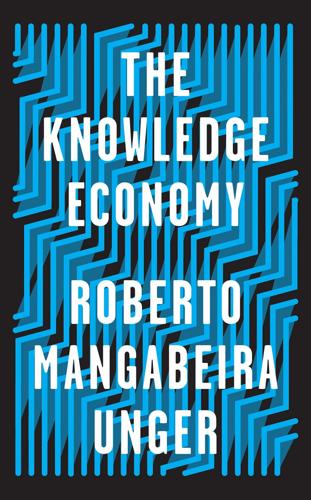
The Knowledge Economy
by
Roberto Mangabeira Unger
Published 19 Mar 2019
It exists in every sector—in knowledge-intensive services and precision, scientific agriculture as well as in high-technology industry. Nevertheless, in each sector it appears as a fringe from which the vast majority of the labor force remains excluded. Its operation is controlled by a small number of large firms with increasingly worldwide presence. These firms have learned to routinize or commoditize much of their productive activity and then to contract these pieces out to businesses and factories in other parts of their world. The result is that the knowledge economy proper, the mind-rich way of producing with all the potentially revolutionary traits that I later explore, becomes an ever more restricted inner circle: a kingdom within a kingdom.
…
Such jobs may offer work in the leftover of declining mass production, remaining viable only at the cost of low returns to labor and a low tax take. Or they may create positions in a variant of standardized manufacturing that has become the sidekick of the megafirms of the knowledge economy, as they learn how to routinize parts of their production process and assign the commoditized parts of their business to dependent companies, often in faraway places. The second piece of the new labor market is the privileged one: the relatively small number of jobs established in the recesses of the genuine and exclusive knowledge economy. In the wake of the continuous decline of mass production and its reduction to leftover or sidekick status, there results what has been described as the “hollowing out of the middle of the job structure.”
…
Some have long suffered from what has been described as premature deindustrialization. Others have tried to prolong the life of mass production by combining low wages (by international standards) with a specialized and subordinate niche in global value chains, useful to the megafirms of knowledge-intensive production. They have embraced the commoditized side of a business that in its upper reaches, typically in a faraway rich country, exemplifies the familiar insular form of experimentalist, knowledge-intensive production. Only a few (especially China and India and to a lesser degree Russia and Brazil) have established, always in the insular mode, an outpost of the cosmopolitan knowledge economy.

Mastering Private Equity
by
Zeisberger, Claudia,Prahl, Michael,White, Bowen
,
Michael Prahl
and
Bowen White
Published 15 Jun 2017
CDD is typically conducted in conjunction with consultants bringing specific industry expertise; these external experts typically prepare market studies, undertake competitive benchmarking and conduct location studies to provide requisite background information. CDD can also include the analysis of systems and infrastructure supporting a target’s operations. Examples of CDD red flags that may stop an investment in its tracks include: Shrinking market size and/or a declining market share Disruptive and commoditization threats Dependence on powerful suppliers or a concentrated customer base FINANCIAL DD (FDD): Financial DD (FDD) includes a detailed examination of a target’s historical financial statements and management’s financial projections. FDD is typically conducted in conjunction with an accounting firm engaged to thoroughly review audited historical financial statements (generally at least the past three to five years), budgeted versus actual performance, current unaudited financials and management’s financial projections.
…
In the last section of our book, we consider the latest trends in the industry and take a closer look at topics concerning the evolution of the asset class. On the one hand, we see increasing innovation and differentiation; on the other, we see a trend towards institutionalization and, in certain segments, commoditization, driven at times by a changing regulatory environment. As the industry continues to mature, the lines dividing traditional limited partners (LPs) and general partners (GPs) have become blurred. The GP–LP relationship is in flux as investors in the PE asset class not only develop direct and co-investment capabilities, but also take advantage of a liquid secondaries market to actively shape their PE exposure.
…
Closing In summary, the picture that is emerging is one of a more diverse PE model: institutional investors are attempting more direct investments in larger, lower risk transactions, a trend that has been observed for some time in real estate and infrastructure investing. This may be the start of the commoditization of the PE asset class that, in line with other markets, is expected to see more disintermediation. For PE’s bread and butter transactions, LPs are negotiating and receiving an increasing proportion of co-investments, thereby lowering fees and regaining some control over the allocation process.
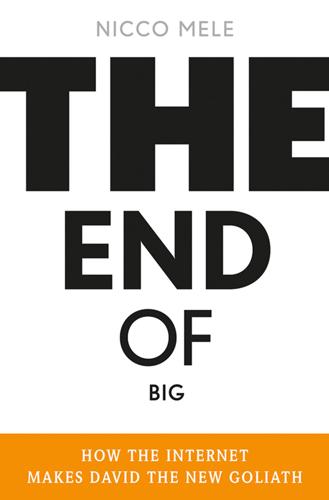
The End of Big: How the Internet Makes David the New Goliath
by
Nicco Mele
Published 14 Apr 2013
“If you want to sell stuff made in China, you no longer have to have representatives on the ground in that country, nor do you have to place orders for a certain, guaranteed volume of goods. All you have to do is click on a site like Alibaba.com.” As Wessel points out, other companies now exist that provide twenty-four-hour call centers and state-of-the-art business management software to small organizations. “The competitive advantages of scale are being commoditized. Minimum efficient scale is getting smaller and smaller.10 The impact of the collapse of scale will change—in fact, already is changing—our economy and our companies in ways we do not yet understand. In some ways, this is a natural next step in the recent history of manufacturing. During the twentieth century, manufacturing required a lot of direct workers, all located here in the United States.
…
Companies that require large server farms are always looking for sites near cheap sources of power, sometimes through price breaks or tax incentives that lead to local political issues. Of course, when you’re surfing the Internet, you don’t care where the Web sites physically reside. You’re in the virtual cloud of the Internet, and the specific server—be it in Idaho, New York, or Shanghai—doesn’t affect your experience. Indeed, servers have become incredibly commoditized, with large volumes of computing power made available in seconds for pennies. Amazon has developed some notoriety in this area with a product called Amazon web services (AWS). In the process of building a giant infrastructure to sell everything, but especially books, over the Internet, Amazon realized that they could sell excess capacity on their server farms.
…
Also, like many Web mash-ups, the final result might seem nonsensical to a mass market (like the Ferrari phone) but extremely relevant to a select long-tail market.”23 The Power of Quirky Apple might think that its emphasis on design will enable it to protect its position, but in fact radical connectivity—and, specifically, the crowdsourcing it enables—is beginning to commoditize even design and other forms of intellectual property, reducing the commercial impact of scale. At night, I plug my laptop in and leave it on my dresser (high enough that little hands won’t find it) to charge. But in the morning, when I unplug the laptop, the power supply always slides behind the dresser.

The Greed Merchants: How the Investment Banks Exploited the System
by
Philip Augar
Published 20 Apr 2005
A report for the Securities Industry Association, one of the investment banks’ most influential trade organizations, summed this up in a paper in 2002 called ‘Large Investment Bank Margin and Return on Equity Trends: The Twenty-Year Downtrend to Continue’. It presented an industry being squeezed by steady declines in margins, more competition, commoditization of core products and ever increasing capital requirements. It forecast ‘a war of attrition for market share driving lower peak cycle returns on equity going forward’.2 Other leading commentators had the same opinion. The Wall Street Journal portrayed an industry in secular decline: ‘New banking products have shorter shelf lives – made obsolete by fast changing markets or swiftly copied by rivals.
…
Instead Infineon’s price dropped and Citigroup could only get out at prices between €11.50 and €12.8 This experience was not unusual; it is generally reckoned that 30 per cent of any commission on block trading is lost in getting out of the positions. Falling commission rates, the increased proportion of net trades and the growing popularity of programme trading have combined to make trading equity stocks for customers a precarious business. When commentators and people in the business speak of commoditization, this is one of the main areas that they have in mind. Yet the authoritative paper ‘Large Investment Bank Margin and ROE Trends’, written for the Securities Industry Association by Brad Hintz, a respected analyst with the broking firm Sanford Bernstein and a former CFO of Lehman and Treasurer of Morgan Stanley, contains some surprising results.
…
Pre-tax margins in equities: large US investment banks.9 Year 1991 1992 1993 1994 1995 1996 1997 1998 1999 2000 2001 Margin % 17.5 17.2 14.6 11.3 16.8 29.2 45.0 44.9 59.6 59.9 43.2 How can this be reconciled with equities’ reputation as a product line that is under intense margin pressure? Hintz himself gave the answer, explaining that the commoditization of the straight equities business has been offset by an important new area: ‘These pricing trends have been offset since the late 1990s by the rapid growth of high margin equity derivative books in the business during the past several years. Some firms have cited that up to 30 per cent of their net revenues are now coming from derivative activities.’10 Derivatives are the dog that did not bark during the debate on pricing, a discussion that has not kept pace with changes in the industry.

Terms of Service: Social Media and the Price of Constant Connection
by
Jacob Silverman
Published 17 Mar 2015
We write about what we want to buy and ask our followers to weigh in on a possible purchase. And so we submit. We share the image, which in turn sends a message that the network and the advertiser take to mean—even if we don’t want them to—“more of this, please.” THE FACEBOOK EYE The documentary lifestyle of social media raises concerns about how we commoditize ourselves and how we put ourselves up for public display and judgment. That doesn’t mean that fun can’t be had or that this kind of documentation can’t coexist with an authentic life. It’s just that the question of what’s authentic shifts, sometimes rather uncomfortably, and not just in the Zuckerberg/Sandberg sense of frictionless sharing, of disclosing everything, always, completely.
…
YouTube commenters and journalists alike labeled Clark “the next Sweet Brown,” though YouTube comments tended to be more explicitly racist or condescending. “This is what is in our white house right now,” one viewer remarked; wrote another: “She was actually trying to sound articulate and intelligent. EPIC FAIL!!!” The page-view- and advertising-driven digital economy means that these stories inevitably become commoditized, with YouTube, iTunes, and the Web sites hosting these media pocketing most of the cash, and the blogs and other publications who post them (even in the spirit of honest commentary) profiting from the flood of traffic. In some cases, money trickles down to the original subjects; the Gregory Brothers, who produced the popular Auto-Tune the News series of videos, split profits from “Bed Intruder Song,” their iTunes track, with Antoine Dodson.
…
Privacy is, above all, the currency we draw on to pay for a range of free Internet services, most notably social networks. We offer Google and Facebook information about ourselves, while simultaneously being assured that our data is being used responsibly and that we have a wide range of privacy controls. It’s more accurate, then, to say that privacy is submitting to market pressure, becoming increasingly commoditized. Your privacy has been taken, chopped up into packets of data, and circulated through commercial transactions beyond your view. A now-famous paper produced by Bain & Company and published in 2011 by the World Economic Forum argued that personal data should be considered a “new asset class.” “Personal data will be the new ‘oil,’” the report’s authors claimed.
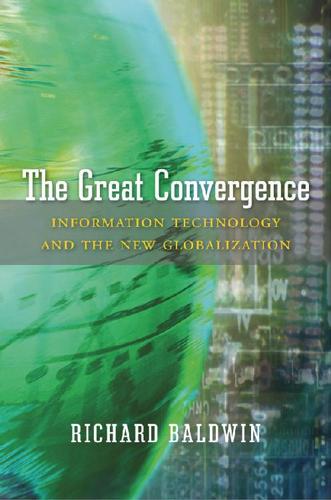
The Great Convergence: Information Technology and the New Globalization
by
Richard Baldwin
Published 14 Nov 2016
The manufacturing value chain was fractionalized, with labor-intensive fabrication stages separated out and offshored along with the G7 know-how necessary to bring the offshore fabrication up to G7 standards. This high-tech / low-wage combination radically lowered the cost of fabrication. While this commoditized fabrication, it did not commoditize the pre-and post-fabrication service stages. The result was the smile curve discussed in Chapter 3. Whether governments are looking for more good jobs or trying to boost the competitiveness of their exports, the shift in value to services means that there should be much less industry in twenty-first-century industrial policy.
…
In the diagram, a typical value chain is characterized as being made up of just three stages: pre-fabrication activities (such as design, finance, and organizational services), fabrication activities (things done in factories), and post-fabrication activities (such as marketing, post-sales services, and the like). The assertion behind the change illustrated is that the fabrication stages are losing value since they are being commoditized and shifted to lost-cost locations in developing nations. Since the shares have to add to 100 percent, the drop in the fabrication stage’s value-added shows up as rises in the value in the pre-fabrication and post-fabrication stages. In particular, the pre-and post-service jobs tend to go to (or stay in) cities in G7 nations.
…
Production unbundling allowed G7 firms, such as Apple, to offshore the fabrication stage. Moreover, since the offshore factories were supplied with all the necessary Apple know-how, and moving goods was cheap, it did not really matter much where the factory was located. Fabrication, in other words, was commoditized by the global value chain revolution. In any case, the offshoring directly lowered the cost of fabrication, which directly lowered the value that was added by fabrication. To many readers, this argument seems to confuse value and costs. It may remind them of the old quip that says “an economist is someone who knows the price of everything, but the value of nothing.”

WTF?: What's the Future and Why It's Up to Us
by
Tim O'Reilly
Published 9 Oct 2017
In a 2004 article in Harvard Business Review, he articulated “the law of conservation of attractive profits” as follows: “When attractive profits disappear at one stage in the value chain because a product becomes modular and commoditized, the opportunity to earn attractive profits with proprietary products will usually emerge at an adjacent stage.” I saw Christensen’s law of conservation of attractive profits at work in the paradigm shifts required by open source software. Just as IBM’s commoditization of the basic design of the personal computer led to opportunities for attractive profits “up the stack” in software, new fortunes were being made up the stack from the commodity open source software that underlies the Internet, in a new class of proprietary applications.
…
The chorus of doubt about the jobless future sounds remarkably similar to the one that warned of the death of the software industry due to open source software. Clayton Christensen’s Law of Conservation of Attractive Profits holds true here too. When one thing becomes commoditized, something else becomes valuable. We must ask ourselves what will become valuable as today’s tasks become commoditized. CARING AND SHARING What might we do with our time, if there were a universal basic income sufficient to meet the necessities of life, or if paid working hours were reduced by the same amount as domestic labor, and wages increased?
…
(Red Hat, however, aimed to own a large part of that smaller market.) Defenders of the status quo, such as Microsoft VP Jim Allchin, claimed that “open source is an intellectual property destroyer,” and painted a bleak picture in which a great industry is destroyed, with nothing to take its place. The commoditization of operating systems, databases, web servers and browsers, and related software was indeed threatening to Microsoft’s core business. But that destruction created the opportunity for the killer applications of the Internet era. It is worth remembering this history when contemplating the effect of on-demand services like Uber, self-driving cars, and artificial intelligence.

Future Files: A Brief History of the Next 50 Years
by
Richard Watson
Published 1 Jan 2008
This diversity comes in many forms — lifestyle, beliefs, values, income, ethnicity, family structures and so on — all with one thing in common: they dislike homogenization. The second problem is that standardization stifles innovation. Making things the same reduces points of difference and leads to commoditization. Customization, on the other hand, encourages experimentation, which drives innovation. Local customization is also very difficult for competitors to track, let alone copy. As a result, retailers are starting to customize store formats, products and even service offers according to local tastes.
…
It is about the size of a five-cent coin and the “brains” of the device are no bigger than ten blood cells. Once the pill has done its job it simply disappears, along with your food waste. Hospitals at home The internet will revolutionize the future of medicine, aggregating demand for medical services and increasingly helping to commoditize the pricing of basic products and services. Patients will use information delivered by search engines to self-diagnose and self- Healthcare and Medicine 241 medicate, much to the chagrin of governments and the medical establishment. Already 25% of Americans use the internet at least once a month to access medical information; you can imagine the doctor’s reaction when he walks into a room only to find “his” patient surfing the net for a second opinion.
…
This is where various services that used to be conducted by your local hospital (or at the 248 FUTURE FILES very least in your own country) are now exported to low-cost countries such as India, much in the same way that banks are outsourcing their call centers. Hospitals in the US send X-rays to India overnight via the internet for initial screening. We will slowly see the globalization and ultimately the commoditization of all but the most specialist medical services. Healthcare will therefore essentially become a retail market driven by brands (reputation), price and convenience and the patient will be firmly in control of most purchases. Countries such as China and India will become global centers for certain types of medicine and medical research, including the development of new drugs, at the expense of countries like the US.

Using Open Source Platforms for Business Intelligence: Avoid Pitfalls and Maximize Roi
by
Lyndsay Wise
Published 16 Sep 2012
Technological advancements and flexibility drive BI market demand. With data storage and in-memory capabilities costing less than in the past, developing strong data warehousing infrastructures has become quite possible. Add to this access points like Google Analytics and analytics have become more commoditized in the minds of organizations. After all, if it’s possible to access Web stats and perform analyses for free online, why shouldn’t the same be said for other solutions that provide similar functions? Based on this fact as well as the fact that companies can now more broadly control their BI experience through self-service deployments, the demand extends towards the deployment of offerings that have quick implementation times with lower costs of maintenance.
…
Both of these aspects lead to OS adoption, whether directly or indirectly. Taking this one step further means looking at the definition of OS and free software and identifying why its expansion has become so relevant within organizations. Providing software free of charge creates an interesting dynamic within the analytics space. Will these applications commoditize BI overall? Maybe, but probably not. Even so, what they will do is provide all organizations and consumers with the ability to gain insights quickly. Whether this means identifying product performance or trends in music consumption, analytics are becoming a common way to interact with information and online content.
…
However, the importance solution providers place on continued development and their focus on customer satisfaction puts them at an advantage in relation to traditional BI vendors and has led to increasing popularity. Traditionally, because of astronomical support fees, solution maintenance has come at a cost. With newer entrants to the market and more diverse pricing, organizations with mature BI environments are starting to feel taken advantage of. With BI starting to become more commoditized based on the use of Google analytics and the availability of free trial versions of software, traditional licensing, support, and maintenance models no longer work. Businesses are looking for added value and key differentiators based on an increasing focus on providing customer value. Looking at maintenance specifically and the ability to quickly address bug fixes, provide new releases with regularity, and align product updates with customer desires.
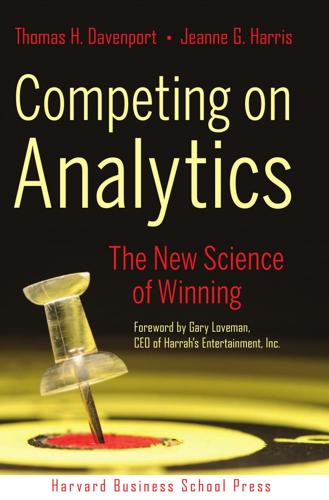
Competing on Analytics: The New Science of Winning
by
Thomas H. Davenport
and
Jeanne G. Harris
Published 6 Mar 2007
Under these conditions, it was easy to view the company’s revenue as purely incremental, with no costs—and if people think things are free, they are often priced too low. The company had many revenue reports but very few relating to costs. As a result, it was impossible to determine the profitability of offerings to customers. This revenue orientation may have been reasonable at one time, but today the telecommunications business has become more commoditized. It’s harder to grow your way into profitability. So MCI embarked upon a major initiative to calculate its activity-based costs. It created 5,000 cost centers, grouped into 970 cost groups. A set of costing factors (business versus consumer focus, for example) was created to apply to each of the cost centers each month.
…
Yet the company’s managers admitted that the beer flow coordinators didn’t have the skills to make the process work. No new people were hired, and no substantial training was done. The new system, at least in its early days, was not being used. The company was expecting, one might say, champagne skills on a beer-skills budget. At a polymer chemicals company, many of the company’s products had become commoditized. Executives believed that it was important to optimize the global supply chain to squeeze maximum value and cost out of it. The complexity of the unit’s supply chain had significantly increased over the previous couple of years. Responding to the increased complexity, the organization created a global supply chain organization, members of which were responsible for the movement of products and supplies around the world.
…
Their managers will constantly press subordinates for data or analytics before they take major actions. The managers of analytical competitors of the future will not be narrow “quant jocks.” They’ll always be thinking broadly about whether their analytical models and data are still relevant to their businesses. If a particular type of analysis becomes commoditized throughout their industries, they’ll find some new basis for analytical competition. They’ll use intuition sparingly but strategically when it isn’t possible to test an assertion or gather data for an analysis. They’ll undoubtedly be hotly pursued by other firms that also want to be analytical competitors.

Culture works: the political economy of culture
by
Richard Maxwell
Published 15 Jan 2001
See also Time Warner Argentina, 64, 184 Arledge, Roone, 152 ARL–Super League merger, 145 ARPANET, 200–201 Artistic Free Enterprise, 29 Art-market crash, 48 Arts patronage, 16, 23, 31 Association of National Advertisers (ANA), 88 Association of National Advertising Managers, 88 AT&T, 42, 207–9 Atlantic and Pacific Tea company (A & P), 168 Audience as commodity, 12, 60, 75, 100, 137–41, 204–14, 230–33, 245 Authorship: contradictory foundations of, 238–43; liberal paradigm, 17 Avant-garde, 3, 16, 22–32, 34–35, 40–44, 46, 48, 50 Axé music, 111, 129 Bahia, 17, 110–12 Banks, 42–44, 48, 64 Barr, Alfred, 29, 48 Barthes, Roland, 75 Bay of Pigs, 31 Berger, Arthur Asa, 74–75 Berlin, 31, 46, 48, 50 Berlin Wall, 31, 46 Biddle, Livingston: NEA Chairman under Carter, 42–43 Black Dance, 17, 107–9, 123–28 Black Panthers, 239 Black Power, 109, 128 Blocos Afros, 109, 110, 111 Bodies, 2, 6, 9, 13–14, 18, 29, 37, 40, 42, 63, 108–27, 133, 214 Borsook, Paulina, 243 Boyle, James, 237, 245 Braden, Thomas W., 28 Brands and branding, 11, 64, 68, 86–91, 112–13, 135, 139, 141, 145, 150, 173–76, 182–83, 233, 245; sport events as brands, 150 Braverman, Harry, 133 Brazil, 17, 64, 109–12, 114, 184, 203 Break dancing, 119 Brewers Association of America, 63 Brown, James, 113, 120 BSkyB, 141, 144, 146 Buffy the Vampire Slayer, 231 Bulworth, 245 Busch Agricultural Resources, 63 Bush, George H., 46 Business Committee for the Arts: founder David Rockefeller, 32, 34, 40 Business Week, 101, 135 Cablevision, 140, 145 Caldas, Luis, 111 Calloway, Cab, 113 Campbell, Colin, 237 Canada, 64, 184, 203 253 Index Capital, 5, 7, 11, 31, 48, 65, 85, 98, 109, 126–34, 140, 171–75, 190, 197–99, 206–18 Capitalism, 4, 5, 36, 63, 69, 90, 132–34, 139–40, 147, 163, 166, 168, 236–37, 243 Caracas, 35 Caribbean, 3, 119 Carlson, Walter, 37 Central Intelligence Agency (CIA), 27, 28, 35, 39, 52 Chanel No. 5, 87 Child care, 11, 243 Chile, 64 China, 31, 45, 65, 175–76 Christian Right, 51 Cisco Systems, 208–9 Civic Progress, 66–68, 77, 79 Cleveland, 46 Clinton, Bill, 47 CNN, 148, 233 Coca-Cola, 76, 100 Cockcroft, Eva, 22, 27, 29, 30, 52 Cohen, Lizabeth, 171–72, 191 Cold War, 1, 16, 19, 24–31, 41–46, 49–51, 52 Columbia Broadcasting System (CBS), 32, 42, 136–39, 141–43, 225 Columbia University, 32, 91 Commercialization, 7, 18, 19, 80, 133, 190. See also Commodification; Commoditization Commodification, 73, 148, 197, 210–18, 242 Commoditization, 113 Companhia do Pagôde, 113–14 Computers, 2, 123–25, 185, 198–207, 216–18, 243; cost of, 199; environmental costs, 202; software industry, 238 Conglomerates, 178, 181, 183, 226, 231–32 Consumer movement, 84, 90–96, 100, 187 Consumers Union, 90 Cookies, 216 Copyright term extension, 234 Corporate welfare, 171–72, 176 Corporation and the Arts, The, 33 Corporation for Public Broadcasting, 182 Crane, Philip, 46 Cuban Missile Crisis, 31 254 Cultural industries, 2, 6, 134–35, 228–31, 242–43 Cultural policy, 7–9, 16–20, 24, 28–32, 39–43, 60, 64, 118, 171–72, 175, 187–91, 218–20, 240–45 Culture: definitions, 1–4 Curtin, Michael, and Thomas Streeter, 225–49 D’Acci, Julie, 245 Dança da Garrafa, 111–13 Dança do Robó, 111 Davis, Susan G., 163–96 Debartolo Group, 178 De/Cipherin’, 17, 108–28 DeGeneres, Ellen, 232, 238 Deindustrialization, 171, 190, 235 Deja.com, 215 Democracy, 25, 27, 33, 35–38, 45, 47, 93, 98, 102, 170, 174 De Montebello, Philippe, 48 Deregulation, 141, 231 Diaper fallacy, 243 Dine, Jim, 31, 37, 39 Disney, 136, 140, 145, 181–82, 210, 212–15, 233; Club Disney, 181–82; Disney Store, 182; Disney Store Online, 212 Dissent, 28, 49, 170, 226 Diversity, 79, 175, 219, 225–28, 244 Do-it-yourself: the metaphysic of, 13–16 Dominican Republic, 176 Dondero, George A., 28 Drum talk, 121–22 East Asia, 3 Ebersol, Dick, president of NBC sports, 147; and feminization of TV sport, 147–53 Economics, neoclassical, 202 Edge, 228–31, 243 Education, 18, 23, 34, 90, 131, 202–3, 211; corporate influence, 94 Eells, Richard, 32–41 Eisner, Michael, 140 Electronics, 2, 3, 9, 14 11 Pop Artists, 31–40 El Salvador, 175 Emerson Electric Co.: interlock with Anheuser-Busch, 64 Enchantment, 2–3, 13, 15.
…
When political economists analyze the commercialization of culture, they typically examine the historical circumstances and structure in which cultural products, resources, and even cultural workers and consumers are turned into a commodity form or some form of income-generating property that can be bought and sold in a market (capital, labor, productive assets, etc.). This process of commercialization has also been called commoditization (or commodification). By making this process appear peculiar, political economists can draw their readers out of what Michael J. Shapiro calls a “structurally induced amnesia.”9 To achieve this, political economists tend to cultivate two important qualities in their historical accounts of commercialization.
…
That popular dance can now be constructed as a commodity is often overlooked; stage dance is far more obvious because choreography is about one vision, one body, re-creating space, sound, and rhythm to get across a particular idea, or lack thereof. But the phrase “popu112 Dance lar dance” itself implies that there is no one creator, no master lurking in an empty studio at dawn trying to figure out the transition from a center stage grand plié to a downstage exit. This commoditization of popular dance reconfigures the body that performs said dance as a consumer and a consumed “item.” The performing body, and hence the performance, must be reduced to its most tantalizing parts for the maximum effect in a minimum amount of time and space. Choreographically, this works out as dances that can be done with feet or foot either planted or tracing out a small “boxed” area and hips and torso pulsing in isolation patterns that accentuate the heavy rhythmic emphasis of the music it is constructed to represent.
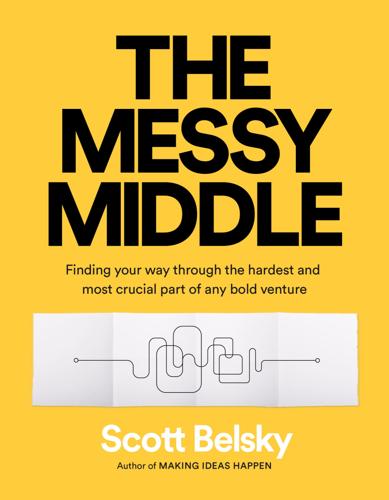
The Messy Middle: Finding Your Way Through the Hardest and Most Crucial Part of Any Bold Venture
by
Scott Belsky
Published 1 Oct 2018
The best investors don’t grasp too tightly to any given playbook. As a seed investor, I am always trying to use my pattern-recognition abilities without holding on too dearly to whatever worked before. None of my best investments were alike, obvious, or fit a popular rubric. Some, like Warby Parker, struck investors as too crowded a market and too commoditized. Others, like Pinterest, Uber, and Carta, initially appeared too niche with limited markets. And some, like Periscope, defied social norms and made people scratch their heads whenever I’d describe them. You can consult groups, history, and common knowledge, but the tough decisions and crazy notions of future possibilities come from within.
…
When I walked into a sweetgreen store for the first time, I was immediately struck by the team’s attention to design and how they embraced technology in ways that no other fast-casual food chains were. Soon after, I met the team, joined their board, and have since advised the team on technology, design, and marketing matters. Suffice it to say, I was struck by how Jonathan, Nic, and Nate were consistently innovating in a space that most would write off as commoditized and stagnant. When you sit down with the three cofounders, you can immediately tell how tethered they are to sweetgreen’s mission. Whether they’re discussing their online ordering system, their selection of lettuces, or how to decrease the length of lines, the conversation comes back to core tenets: providing quality food and experiences for their customers, staying local, and promoting a healthier lifestyle for their customers and employees.
…
This level of handholding, while certainly not economically scalable over time, set a level of quality and aesthetic for Airbnb that vastly differentiated their marketplace from Craigslist and other generic listing websites. Give your customers something precious, something that cannot be easily scaled, automated, or commoditized. The greatest innovations in an industry are strange and artlike before they become the new standard. Do things that your competitors and incumbents wouldn’t even think of doing for lack of financial reward. Only through these explorations will you discover the key differentiator—the art—that surprises customers and builds a remarkable product and brand.

Rule of the Robots: How Artificial Intelligence Will Transform Everything
by
Martin Ford
Published 13 Sep 2021
At the same time, the AI services available through the cloud will be continuously upgraded as the tech giants strive to gain a competitive advantage by incorporating the latest innovations generated by researchers working at the field’s frontier. As all this progresses, even the most advanced AI technologies will become increasingly commoditized and available at little or no cost beyond what cloud computing clients pay to host their data. Indeed, there is evidence of this already. Companies like Google, Facebook and Baidu have all released their deep learning software in open-source form; in other words, they give it away for free. This is also true of the most advanced research conducted by organizations like DeepMind and OpenAI.
…
The analogy is, of course, not perfect, and without doubt, immense value and power will reside in those companies that innovate on the frontier of artificial intelligence and deliver this ever-improving resource. But most of the benefits that arise from the application of AI—especially as it increasingly resembles a commoditized utility—are likely to accrue elsewhere. While the value created by artificial intelligence will be distributed widely across economic sectors, the reverse may well turn out to be true within a given industry. Companies that are on the frontier when it comes to leveraging AI within their business models are likely to have a substantial first-mover advantage.
…
However, the company, which has received funding from Google Ventures and other top Silicon Valley venture capital firms, may now be poised to rapidly expand or perhaps license its technology to other restaurants. Creator, with its strategy of leveraging automation to produce high-end hamburgers, will likely soon be joined by a variety of other startup companies that are instead developing robots to produce cheap commoditized burgers. Eventually, I think, it’s inevitable that the major fast food chains, as well as smaller independent restaurants, will begin to introduce these technologies. Once one major player does so and is able to capitalize on the technology, a competitive dynamic virtually guarantees widespread automation.
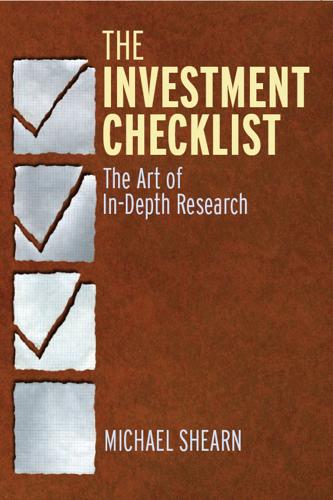
The Investment Checklist: The Art of In-Depth Research
by
Michael Shearn
Published 8 Nov 2011
Some of the Best-Performing CEOs Are Unknown and Do Not Promote Some of the best CEOs are collegial, team oriented, and soft spoken, and they are able to gain the confidence of their employees. In fact, many CEOs who have compiled the greatest long-term records of creating wealth are relatively unknown and don’t self-promote, such as Yun Jong-Yong, who was CEO of South Korea’s Samsung Electronics from 1996 to 2008. Yun transformed Samsung from a maker of commoditized memory chips and other commoditized products to a company that designed innovative digital products, such as cutting-edge cell phones. The opposite of the self-promoter, Yun refused many interviews. Instead, he let the results speak for themselves as Samsung Electronics gained $127 billion in market value under his tenure.24 The management teams of some of the best-compounding stocks from 2000 to 2010 spend very little time meeting with Wall Street—for example, Four Seasons Hotels, Strayer Education, Whole Foods Market, Morningstar, and Expeditors International.
…
This widens the competitive advantage and makes it more sustainable. There are various ways for a business to create advantages based on economies of scale, including increasing efficiencies by consolidating a fragmented industry. Obtaining a Cost Advantage through Industry Consolidation In large, fragmented markets, especially those that have become commoditized, you can often see businesses with low-cost advantages building market share. The higher the market share, the more customer choice is limited, which gives the surviving dominant players an advantage. For example, LabCorp and Quest each played large parts in the consolidation of the laboratory testing business.
…
Trade associations will often outline common risks, and many articles are written on how to reduce them. This will help you build a comprehensive collection of risks the business may encounter. Write down the operational risks you find in the 10-K or other sources in a report; these operational risks might include: Overcapacity Commoditization Deregulation Increased power among suppliers Shifts in technology Changes in laws and regulations Product obsolescence Patent expirations Development of new product lines where the business has limited expertise The emergence of competitors Brand erosion Overreliance on too few customers Limited geographic distribution Research and development failure Business-development failure Merger or acquisition failure A weak product pipeline And others Spend time carefully reviewing each of these risks.

Machine, Platform, Crowd: Harnessing Our Digital Future
by
Andrew McAfee
and
Erik Brynjolfsson
Published 26 Jun 2017
The first is consumers, who obviously want to pay as little as possible and thus side with platform builders that seek to rapidly grow their networks. The second is that in most markets, many suppliers compete for business, and many other potential suppliers are waiting in the wings. Platforms usually enhance this competition by reducing barriers to entry, and they often commoditize the suppliers, making them more interchangeable to the consumer. Competition and commoditization, of course, tend to drive down prices, and to deliver the business to the companies willing to supply products most cheaply (while maintaining acceptable quality). In short, platform builders and consumers both want low prices, and competition among suppliers tends to result in them.
…
What are a handful of scenarios for how products and platforms will come together in your industry over the next three to five years? 2. If information asymmetries in your industry were reduced, what new opportunities and businesses would open up? 3. What are your main strategies for avoiding the commoditization and price reductions that platforms can bring to incumbent product companies? 4. If you’re building a network with two or more sides, which side(s) are you willing to let join and participate for free, or even to subsidize? Who has the greatest elasticity of demand? 5. Are you confident that you can continue to differentiate your offerings as platforms spread?
…
Acton, Brian, 140 additive manufacturing, 107; See also 3D printing Adore Me, 62 adults, language learning by, 68–69 advertising content platforms and, 139 data-driven decision making for, 48, 50–51 Facebook and, 8–9 radio airplay as, 148 advertising agencies, 48 advertising revenue Android as means of increasing, 166 Craigslist’s effect on, 139 free apps and, 162 print media and, 130, 132, 139 African Americans identifying gifted students, 40 and search engine bias, 51–52 aggregators, 139–40 AGI (artificial general intelligence), 71 agriculture automated milking systems, 101 drones and, 99–100 “food computers,” 272 machine learning and, 79–80 robotics and, 101–2 Airbnb future of, 319–20 hotel experience vs., 222–23 lack of assets owned by, 6–7 limits to effects on hotel industry, 221–23 network effects, 193 as O2O platform, 186 peer reviews, 209–10 rapid growth of, 9 as two-sided network, 214 value proposition compared to Uber, 222 Airline Deregulation Act, 181n airlines, revenue management by, 181–82 air travel, virtualization in, 89 Akerlof, George, 207, 210 albums, recorded music, 145 algorithms; See also data-driven decision making bias in systems, 51–53 and Cambrian Explosion of robotics, 95–96 comparing human decisions to, 56 O2O platforms and, 193 Quantopian and, 267–70 superiority to System 1 reasoning, 38–41 “algo traders,” 268; See also automated investing Alibaba, 6–8 Alipay, 174 AlphaGo, 4–6, 14, 74, 80 Alter, Lloyd, 90 Amazon automatic price changes, 47 bar code reader app, 162 data-driven product recommendations, 47 development of Web Services, 142–43 Mechanical Turk, 260 as stack, 295 warehouse robotics, 103 Amazon EC2, 143 Amazon Go, 90–91 Amazon S3, 143 Amazon Web Services (AWS), 75, 142–43 American Airlines (AA), 182 amino acid creation, 271–72 analog copies, digital copies vs., 136 “Anatomy of a Large-Scale Hypertextual Web Search Engine, The” (Page and Brin), 233 Anderson, Chris, 98–100 Anderson, Tim, 94 Andreessen, Marc on crowdfunding, 262–63 and Netscape, 34 as self-described “solutionist,” 297 on Teespring, 263–64 Android Blackberry vs., 168 contribution to Google revenue/profits, 204 iOS vs., 166–67 Angry Birds, 159–61 anonymity, digital currency and, 279–80 Antikythera mechanism, 66 APIs (application programming interfaces), 79 apophenia, 44n apparel, 186–88 Apple; See also iPhone acquiring innovation by acquiring companies, 265 and industrywide smartphone profits, 204 leveraging of platforms by, 331 Postmates and, 173, 185 profitability (2015), 204 revenue from paid apps, 164 “Rip, Mix, Burn” slogan, 144n as stack, 295 application programming interfaces (APIs), 79 AppNexus, 139 apps; See also platforms for banking, 89–90 demand curve and, 157–61 iPhone, 151–53 App Store, 158 Apter, Zach, 183 Aral, Sinan, 33 Archilochus, 60–61 architecture, computer-designed, 118 Aristophanes, 200 Arnaout, Ramy, 253 Arthur, Brian, 47–48 artificial general intelligence (AGI), 71 artificial hands, 272–75 artificial intelligence; See also machine learning current state of, 74–76 defined, 67 early attempts, 67–74 implications for future, 329–30 rule-based, 69–72 statistical pattern recognition and, 72–74 Art of Thinking Clearly, The (Dobelli), 43 arts, digital creativity in, 117–18 Ashenfelter, Orley, 38–39 ASICs (application-specific integrated circuits), 287 assets and incentives, 316 leveraging with O2O platforms, 196–97 replacement by platforms, 6–10 asymmetries of information, 206–10 asymptoting, 96 Atkeson, Andrew, 21 ATMs, 89 AT&T, 96, 130 August (smart door lock), 163 Austin, Texas, 223 Australia, 100 Authorize.Net, 171 Autodesk, 114–16, 119, 120 automated investing, 266–70 automation, effect on employment/wages, 332–33 automobiles, See cars Autor, David, 72, 101 background checks, 208, 209 back-office work, 82–83 BackRub, 233 Baidu, 192 Bakos, Yannis, 147n Bakunin, Mikhail, 278 Ballmer, Steve, 151–52 bandwagon effect, 217 banking, virtualization and, 89–90, 92 Bank of England, 280n bank tellers, 92 Barksdale, Jim, 145–46 barriers to entry, 96, 220 Bass, Carl, 106–7, 119–20 B2B (business-to-business) services, 188–90 Beastmode 2.0 Royale Chukkah, 290 Behance, 261 behavioral economics, 35, 43 Bell, Kristen, 261, 262 Benioff, Mark, 84–85 Benjamin, Robert, 311 Benson, Buster, 43–44 Berlin, Isiah, 60n Berners-Lee, Tim, 33, 34n, 138, 233 Bernstein, Michael, 260 Bertsimas, Dimitris, 39 Bezos, Jeff, 132, 142 bias of Airbnb hosts, 209–10 in algorithmic systems, 51–53 digital design’s freedom from, 116 management’s need to acknowledge, 323–24 and second-machine-age companies, 325 big data and Cambrian Explosion of robotics, 95 and credit scores, 46 and machine learning, 75–76 biology, computational, 116–17 Bird, Andrew, 121 Bitcoin, 279–88 China’s dominance of mining, 306–7 failure mode of, 317 fluctuation of value, 288 ledger for, 280–87 as model for larger economy, 296–97 recent troubles with, 305–7 and solutionism, 297 “Bitcoin: A Peer-to-Peer Electronic Cash System” (Nakamoto), 279 BlaBlaCar, 190–91, 197, 208 BlackBerry, 168, 203 Blitstein, Ryan, 117 blockchain as challenge to stacks, 298 and contracts, 291–95 development and deployment, 283–87 failure of, 317 and solutionism, 297 value as ledger beyond Bitcoin, 288–91 Blockchain Revolution (Tapscott and Tapscott), 298 Bloomberg Markets, 267 BMO Capital Markets, 204n Bobadilla-Suarez, Sebastian, 58n–59n Bock, Laszlo, 56–58 bonds, 131, 134 bonuses, credit card, 216 Bordeaux wines, 38–39 Boudreau, Kevin, 252–54 Bowie, David, 131, 134, 148 Bowie bonds, 131, 134 brand building, 210–11 Brat, Ilan, 12 Bredeche, Jean, 267 Brin, Sergey, 233 Broward County, Florida, 40 Brown, Joshua, 81–82 Brusson, Nicolas, 190 Burr, Donald, 177 Bush, Vannevar, 33 business conference venues, 189 Business Insider, 179 business processes, robotics and, 88–89 business process reengineering, 32–35 business travelers, lodging needs of, 222–23 Busque, Leah, 265 Buterin, Vitalik, 304–5 Byrne, Patrick, 290 Cairncross, Francis, 137 California, 208; See also specific cities Calo, Ryan, 52 Cambrian Explosion, 94–98 Cameron, Oliver, 324 Camp, Garrett, 200 capacity, perishing inventory and, 181 Card, David, 40 Care.com, 261 cars automated race car design, 114–16 autonomous, 17, 81–82 decline in ownership of, 197 cash, Bitcoin as equivalent to, 279 Casio QV-10 digital camera, 131 Caves, Richard, 23 Caviar, 186 CDs (compact discs), 145 cell phones, 129–30, 134–35; See also iPhone; smartphones Census Bureau, US, 42 central bankers, 305 centrally planned economies, 235–37 Chabris, Chris, 3 Chambers, Ephraim, 246 Champy, James, 32, 34–35, 37, 59 Chandler, Alfred, 309n Chase, 162 Chase Paymentech, 171 check-deposit app, 162 children, language learning by, 67–69 China Alibaba in, 7–8 concentration of Bitcoin wealth in, 306–7 and failure mode of Bitcoin, 317 mobile O2O platforms, 191–92 online payment service problems, 172 robotics in restaurants, 93 Shanghai Tower design, 118 Xiaomi, 203 Chipotle, 185 Choudary, Sangeet, 148 Christensen, Clay, 22, 264 Churchill, Winston, 301 Civil Aeronautics Board, US, 181n Civis Analytics, 50–51 Clash of Clans, 218 classified advertising revenue, 130, 132, 139 ClassPass, 205, 210 and economics of perishing inventory, 180–81 future of, 319–20 and problems with Unlimited offerings, 178–80, 184 and revenue management, 181–84 user experience, 211 ClassPass Unlimited, 178–79 Clear Channel, 135 clinical prediction, 41 Clinton, Hillary, 51 clothing, 186–88 cloud computing AI research, 75 APIs and, 79 Cambrian Explosion of robotics, 96–97 platform business, 195–96 coaches, 122–23, 334 Coase, Ronald, 309–13 cognitive biases, 43–46; See also bias Cohen, Steven, 270 Coles, John, 273–74 Collison, John, 171 Collison, Patrick, 171–74 Colton, Simon, 117 Columbia Record Club, 131 commoditization, 220–21 common sense, 54–55, 71, 81 companies continued dominance of, 311–12 continued relevance of, 301–27 DAO as alternative to, 301–5 decreasing life spans of, 330 economics of, 309–12 future of, 319–26 leading past the standard partnership, 323–26 management’s importance in, 320–23 markets vs., 310–11 as response to inherent incompleteness of contracts, 314–17 solutionism’s alternatives to, 297–99 TCE and, 312–15 and technologies of disruption, 307–9 Compass Fund, 267 complements (complementary goods) defined, 156 effect on supply/demand curves, 157–60 free, perfect, instant, 160–63 as key to successful platforms, 169 and open platforms, 164 platforms and, 151–68 and revenue management, 183–84 Stripe and, 173 complexity theory, 237 Composite Fund (D.

Debt: The First 5,000 Years
by
David Graeber
Published 1 Jan 2010
The twice-born were likewise largely protected from falling into debt bondage, while for much of the rural poor, debt dependency was institutionalized, with the daughters of poor debtors, predictably, often dispatched to brothels or to the kitchens or laundries of the rich.55 In either case, between the push of commoditization, which fell disproportionally on daughters, and the pull of those trying to reassert patriarchal rights to “protect” women from any suggestion that they might be commoditized, women’s formal and practical freedoms appear to have been gradually but increasingly restricted and effaced. As a result, notions of honor changed too, becoming a kind of protest against the implications of the market, even as at the same time (like the world religions) they came to echo that market logic in endless subtle ways.
…
It’s difficult to say precisely how they imagined their situation, because it’s only in the Old Testament, written on the other side of the Fertile Crescent, that one has any record of the pastoral rebels’ points of view. But nothing there mitigates against the suggestion that the extraordinary emphasis we find there on the absolute authority of fathers, and the jealous protection of their fickle womenfolk, were made possible by, but at the same time a protest against, this very commoditization of people in the cities that they fled. The world’s Holy Books—the Old and New Testaments, the Koran, religious literature from the Middle Ages to this day—echo this voice of rebellion, combining contempt for the corrupt urban life, suspicion of the merchant, and often, intense misogyny. One need only think of the image of Babylon itself, which has become permanently lodged in the collective imagination as not only the cradle of civilization, but also the Place of Whores.
…
But it provides a window on developments that were happening, however unevenly, even spasmodically, across the region, propelled by the intersection of commerce, class, defiant assertions of male honor, and the constant threat of the defection of the poor. States seem to have played a complex dual role, simultaneously fostering commoditization and intervening to ameliorate its effects: enforcing the laws of debt and rights of fathers, and offering periodic amnesties. But the dynamic also led, over the course of millennia, to a systematic demotion of sexuality itself from a divine gift and embodiment of civilized refinement to one of its more familiar associations: with degradation, corruption, and guilt.
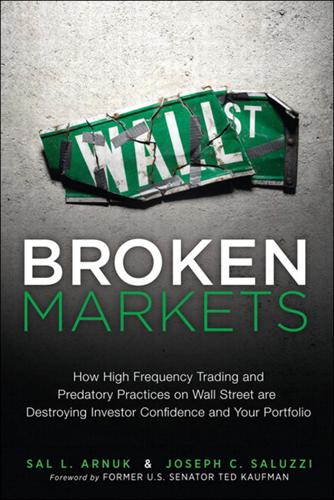
Broken Markets: How High Frequency Trading and Predatory Practices on Wall Street Are Destroying Investor Confidence and Your Portfolio
by
Sal Arnuk
and
Joseph Saluzzi
Published 21 May 2012
In response, the SEC proposed Regulation ATS (Alternative Trading System), which mandated all orders go to a public quote. Instinet fiercely lobbied against it. Management had employees calling clients and urging them to write comment letters to the SEC. Instinet claimed that such a rule would create a commoditized limit order book, which would “crush innovation.” In reality, Instinet was afraid of losing the special selling appeal of its own private stock market, with meaty institutional orders that the SEC, if they had their way, would forcibly make available to all traders through all systems. No doubt, management was also worried that the automated traders might not pay for the privilege of jumping 1/64 ahead of investor orders if the automated traders could do it to the entire market.
…
This meant that if one market center, say the NYSE, had a participant with an order to buy stock at $10.00 and did not have a matching sell order at $10.00, while another exchange, say NASDAQ, did, then the NYSE would have to route out that buy order to NASDAQ, which would then match the buy and sell order. As a result, Reg NMS commoditized trading destinations. Speed of execution became paramount. The slower, specialist-oriented NYSE was forced to become a fast, electronic market. By the time Reg NMS was implemented, the stock exchanges had beefed up their systems, changed from member-owned, nonprofit corporations, to for-profit exchanges, and many of them became publicly traded companies.
…
This ratio is far different in the exchange business, in which nearly three-quarters of the volume comes from just 2% of the clients.1 This distortion is the result of the exchanges catering to their biggest clients at the expense of average investors. By attempting to level the playing field with all its new regulations, the SEC commoditized the stock exchange business. In turn, this led exchanges to supply high-value products and services to its highest volume clients. If they didn’t, the exchanges feared these clients would move their volume to another market venue. This quest for profit has created significant conflicts of interests in the stock exchange business model.

The Automatic Customer: Creating a Subscription Business in Any Industry
by
John Warrillow
Published 5 Feb 2015
This trend continued well into the 20th century, as it was also a reliable way to get rich. Publishers like William Randolph Hearst and, more recently, Rupert Murdoch have made their initial fortunes from publishing subscription-based newspapers. However, the economics of information publishing deteriorated with the rise of the Internet, which eliminated distribution costs and commoditized content to such an extent that consumers began to expect it to be free. Not only did consumers expect content for free; the kind of content they were interested in also became more esoteric. As former Wired magazine editor Chris Anderson revealed in his best seller The Long Tail, now that the entire world’s content is only a Google search away, we are no longer satisfied with the broad general interest information provided by mainstream publishers; our appetite for content has become more specialized.
…
If you love the sport of curling, you can consume as much curling information as you want for free online without ever picking up a newspaper, which might run a curling story a couple of times per winter at best. Thus the traditional publishing model was under attack from two sides: information was becoming commoditized, and our appetite for it was becoming more specialized. Magazines and newspapers started slashing editorial budgets, with fewer and fewer subscribers underwriting the costs of creating content and mailing it out. Content got so bad that people began realizing that good content was actually worth paying for—and subscriptions took on a new life in the information industry.
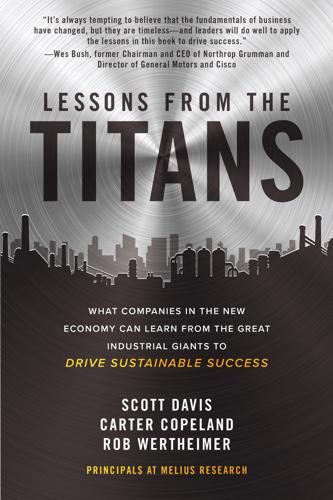
Lessons from the Titans: What Companies in the New Economy Can Learn from the Great Industrial Giants to Drive Sustainable Success
by
Scott Davis
,
Carter Copeland
and
Rob Wertheimer
Published 13 Jul 2020
Source: Melius Research Despite those strategic failings, Bossidy succeeded in building a strong senior team, and he benefited greatly from the tailwinds of the booming 1990s. Buying Honeywell was supposed to be his crowning achievement before retirement. Instead, it exposed underlying weaknesses: both companies were seeing sharply greater global competition and product commoditization. The merger of AlliedSignal and Honeywell is a useful lesson in the limitations of traditional deal analysis. These were two solid companies with substantial aerospace operations and little direct overlap. Yet the organizations had very different cultures: Honeywell favored creativity, while AlliedSignal pushed for strict engineering discipline.
…
The average return on invested capital for deals in the preceding decade (1991–2001) was 0 percent—and that was a time when deal prices were not especially high. As it turns out, most of the deals had projected generous benefits from revenue synergies that never played out. Most of the deals also involved assets with rising product commoditization, where the seller had underinvested and customers were unhappy, but neither AlliedSignal nor Honeywell factored in those problems. Perhaps they didn’t even know about them. In response, Madden overhauled the acquisition process by installing new people, instituting much tougher due diligence, and introducing a rule against revenue synergies in the deal model.
…
Mature industrial companies are well past that stage, playing in a global marketplace where competition is widespread and ingrained. Such firms do spend on products and innovation, but more often they win and grow by focusing on operations. We’ve chosen an extreme example in this chapter to show a path to success after innovation has been commoditized. Rental equipment is an industry in which even expert observers assume there’s no chance to thrive. There are no obvious barriers: anyone with financing can start a company, buy equipment, and rent it out. Yet United Rentals, along with number two player Sunbelt Rentals, has built tremendous, compounding success through a feedback loop of scale and continuous improvement.

The Moon: A History for the Future
by
Oliver Morton
Published 1 May 2019
Some of the competitors, though, are running still; SpaceIL, which is behind the Israeli mission launched in early 2019, and iSpace, the Japanese team which plans to launch an orbiter in 2020 and a lander in 2021, are Google Lunar X Prize veterans, as are MoonExpress and Astrobotic in the United States. Instead of a race to the Moon, the Moon Race is a race to get things done on the Moon. Getting there is part of the prize, not the object of the competition. As such it marks the beginning of the commoditization of access to the Moon. By the mid-2020s, there should be a number of companies capable of taking cargo to the Moon and providing it with electricity and communication links once there. If the market looks good—if funding bodies will pay for lunar-surface science, if investors will pay for scouting out of resources, if enough rich enthusiasts just want to do stuff—then missions which bring something back will be feasible, too.
…
Inside capitalism, proletariats were exploited; outside capitalism, human lives and natural bounty were taken and reshaped. The European facility with the organization of markets, and the organization of violence, was used to re-engineer lands formerly held by indigenous peoples. Frequently unsustainable forms of forestry and farming were introduced to make them productive. People, commoditized as labour, were moved from the farmsteads of one continent to the plantations of another, there to transform the sunshine that was absorbed by those plantations into the cheap calories which fed the workers in metropolitan factories. This appropriation allowed, literally and metaphorically, some very lunches which looked very cheap, if you set aside moral and environmental costs: cheap energy, cheap food, cheap labour, cheap nature.
…
Everything in the environment is either already inside the economy or already under the political control of the Authority. Luna City has no outside but rock, ice and vacuum. Inside, there is only what has been created and paid for, what is owned. All supplies of air, food and water are already monetized, commoditized, charged for—whether by the entrepreneurs of Hong Kong Luna or by the Authority. Prof tells Manny and Wyoh that the only way to avert the Malthusian fate the Authority has engineered for the Moon is not to expand the economy further but to re-integrate it with the Earth’s—and until then, to cut the Moon off from the Earth completely.
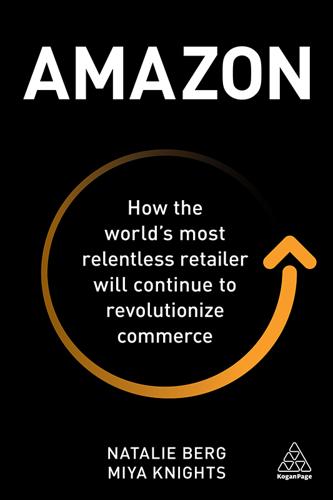
Amazon: How the World’s Most Relentless Retailer Will Continue to Revolutionize Commerce
by
Natalie Berg
and
Miya Knights
Published 28 Jan 2019
These are categories where quality is subjective and cannot always be determined via a screen. These are categories where the desire to see and touch the product traditionally outweighed the convenience of buying online. And therefore, the margin for error in purchasing these categories online was historically higher than when buying commoditized products like books or DVDs, where shoppers knew exactly what they were going to get regardless of where they purchased it. But that’s all about to change. By 2021, 28 per cent of clothing and footwear sales and 18 per cent of furniture and home furnishing sales in the US are expected to take place online (up from 9 per cent and 6 per cent respectively a decade earlier2), according to Kantar.
…
At the time, Amazon had already begun dabbling in private label with a handful of other lines such as Pinzon kitchen gadgets, Strathwood outdoor furniture, Pike Street bath and home products, and Denali tools. But this was the first time Amazon would attach its brand to a product (hardware aside) so it made sense to start out in a low-risk, commoditized category and one that would complement its core product range – electronic accessories. Priced approximately 30 per cent lower than major brands, the AmazonBasics line was initially limited to accessories like cables, chargers and batteries. But within just a few short years, the brand accounted for nearly one-third of Amazon’s battery sales, outselling national brands like Energizer and Duracell.6 Less than a decade after launch, AmazonBasics had been expanded to dozens of categories – home, furniture, pet supplies, luggage, sports, etc – and, by 2017, it was the third-best-selling brand overall on Amazon.com, according to One Click Retail.
…
The tablet, which was already on its fourth generation by the time the Fire phone was launched, built on Amazon’s e-book sales and Kindle success and also offers users access to the Amazon e-commerce site directly from its home screen. But it did not enable connectivity beyond the functionality of connecting to the Amazon store, nor did its early versions use the latest touch interface technology, despite the fact that Apple had commoditized the touchscreen with the introduction of the iPhone four years earlier. Where Amazon has been more successful in applying the first two global technology drivers, though, is in its core retail business, where it has brought the concepts of ubiquitous connectivity and pervasive interfaces to bear with far more success.

Hate Inc.: Why Today’s Media Makes Us Despise One Another
by
Matt Taibbi
Published 7 Oct 2019
From bombing Syria (remember Van Jones declaring that Trump “became president in that moment”?) to rolling back the already-weak Dodd-Frank bill, there are still huge areas of political overlap between even Trump Republicans and “mainstream” Democrats. A classic example of how we in the press commoditize division—even in clear and important areas of bipartisan cooperation—involves the passage of this year’s $716 billion military appropriations bill. It was a huge bill. The year one increase in Trump’s defense budget that passed with overwhelming Democratic cooperation—85–10 in the Senate—was $82 billion, higher than the Iraq War appropriations for either 2003 or 2004.
…
Once you reach this point, you’ve entered the realm of belief, as opposed to conclusion. This without a doubt is a form of religious worship. It’s what was being parodied in the movie Network, in which an anchorman who loses his mind and begins telling the truth on air is swallowed up and turned into the biggest hit show in the country. That film was a parable about how TV can commoditize and ritualize anything, from profane truth to madness. Mass media makes the act of watching more important than the words. It can take rage and defiance, and in a snap turn it into obedience and submission. Listening in anger to your favorite political program, you will act like a person who is shaking a fist at power, when in fact you’ve been neutralized as an independent threat, reduced to a prop in a show.
…
Even years later, she lampooned the idea of intelligence agencies being ordered to “Find the evidence.” The Maddow I knew thought all of this was absurd (perhaps even more absurd than angering). I admired her as someone who was smart, quick, and funny. She has since sacrificed even her sense of humor to MSNBC, letting the network commoditize this side of her to the point of unrecognizability. Her personal politics, at least from what I remember, are further to the progressive side than the hawkish mainstream Democratic line that makes up the meat of her program today. She’s even, to small degrees, expressed her sense of being personally distant from the Democratic party on other formats, like Late Night with Seth Myers.

The New Class War: Saving Democracy From the Metropolitan Elite
by
Michael Lind
Published 20 Feb 2020
For a time, it is possible for stock market booms and real estate bubbles to fund public services and redistribution while allowing the wealthy to keep most of their gains. But the financial industry is volatile and global innovation rents quickly disappear, as a result of lapsing patents, intellectual property theft, foreign success in indigenous innovation, and the commoditization of former cutting-edge industries. Furthermore, there are too many opportunities for evasive tax arbitrage. Which billionaires and firms will consent to be taxed to pay for these massive schemes of national redistribution? The ones who hide their wealth in the Cayman Islands, or others, perhaps, who hide it in Panama or Jersey or Switzerland?
…
Can other sources of revenue pay for massive, permanent cash transfers to the working class as well as the poor? A “robot tax” has been endorsed by French socialist Benoît Hamon and American capitalist Bill Gates, to fund a UBI as a solution to the as-yet-nonexistent problem of mass technological unemployment. But if robots were cheap and common enough to cause mass unemployment, the commoditized robot industry might not generate enough profit to support a massively expanded welfare state; you might as well try to pay for a universal basic income with a microwave oven tax. If, on the other hand, robots were scarce and selling for a premium, technological unemployment would not be a problem—and the robot tax perversely would encourage the substitution of low-wage workers for advanced machines, putting the Industrial Revolution into reverse.

Rebel Code: Linux and the Open Source Revolution
by
Glyn Moody
Published 14 Jul 2002
Another threat, even more insidious, was outlined in 1998 by the Microsoft engineer Vinod Valloppillil in the first Halloween document. In a section headed “Blunting OSS [Open Source Software] attacks,” he suggests that one approach would be to “de-commoditize protocols & applications.” As he explains, one of the reasons open source projects have been able to flourish is the existence of fundamental protocols (sets of rules) that determine how things such as the Web and e-mail work. To “de-commoditize” means to remove standards that open source has proved so efficient at implementing. As Valloppillil puts it: “By extending these protocols and developing new protocols, we can deny OSS projects entry into the market.”
…
As Valloppillil puts it: “By extending these protocols and developing new protocols, we can deny OSS projects entry into the market.” The sheer cynicism of this approach is astonishing; it suggests fragmenting standards, not for customer benefit, but to place obstacles in the way of open source. De-commoditization is no mere theory. Microsoft’s chosen target for first putting it into practice was an open security protocol called Kerberos, named after the three-headed guard-dog of the gates of hell—the Greek form of the Latin Cerberus. Kerberos grew out of MIT’s Project Athena, begun in 1983, and which also gave rise to X Window. It has been published as an Internet standard by the IETF, and is freely available for anyone to use.
…
That license forbade attempts to implement the extension in new code—for example, in Samba. Indeed, Samba’s Jeremy Allison points out that “if this had been available to [Microsoft] in the early days of SMB, Samba would have been stillborn.” On its own, the Kerberos saga would be a depressing story of how Microsoft felt confident enough blatantly to “de-commoditize” a protocol and use its clout on the desktop to impose a proprietary extension at the moment it was about to be judged in the U.S. antitrust case for its previous monopolistic behavior. But the story took an even more interesting turn when hackers flouted the licensing requirements and posted the full details of Microsoft’s extension to the Slashdot.org site at the beginning of May.
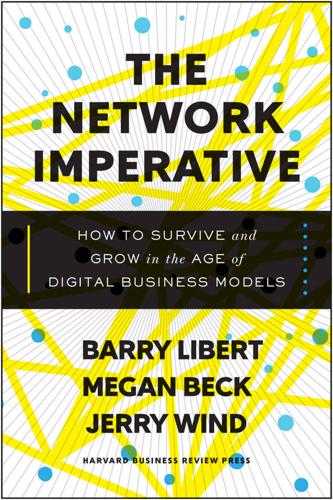
The Network Imperative: How to Survive and Grow in the Age of Digital Business Models
by
Barry Libert
and
Megan Beck
Published 6 Jun 2016
Companies in a crisis need to look at their entire portfolios, rationally and candidly, and figure out what they have that customers want today and what customers will want tomorrow. Then get rid of anything that does not fit the resulting model, and invest in the growth opportunities. In our case, the information technology industry was rapidly becoming commoditized, and we determined that we needed to shift our portfolio to a more balanced mix of high-value offerings. That meant growing our services and software businesses, both through internal investments and through acquisitions. We have acquired more than 200 companies at a cost of $30 billion to help fill out our portfolio of products and services in these strategic growth areas, such as our growing analytics business.
…
But rather than refocus its strategy on the next big thing, Kodak tried to slow the progress of digital technology and maintain its dominance in film through aggressive advertising. When Kodak finally entered the digital market with its Easy Share product line, it was too late; digital was already on the path to commoditization. In 2012, Kodak filed for Chapter 11 bankruptcy. These situations happen because our mental models prevent us from seeing the need for change and, even when we see it, from acting on it. IBM probably could not have shed its PC business—once a jewel in its portfolio, representing innovation and daring, the ability to rapidly innovate, and an exciting success over Apple—if Sam Palmisano had not just come into the CEO role with a mandate to focus on high-margin, high-growth businesses.
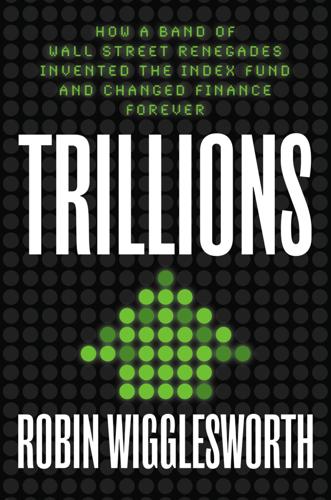
Trillions: How a Band of Wall Street Renegades Invented the Index Fund and Changed Finance Forever
by
Robin Wigglesworth
Published 11 Oct 2021
Meanwhile, LeBaron closed down Batterymarch’s index-tracking strategy in the mid-1980s. Some rivals said it was because it did a poor job of tracking the market, yet the resolutely contrarian, be-first-not-best financier insists the reason was more unorthodox. After reading that there were by then seventy-five index fund providers, LeBaron decided that it had become such a commoditized industry that it made no sense for Batterymarch to continue it. Instead he turned his attention to the nascent interest in exotic stock markets in the developing world. Frustrated by the travails of the Stagecoach Fund, and keen for a change of scenery, McQuown left Wells Fargo on March 17, 1974—exactly a decade after he first joined the San Francisco bank.
…
.* Her persuasiveness also succeeded where Grauer’s forcefulness had failed, with Dunn eventually convincing Barclays to give BGI executives a more generous stock option program—something that would eventually make many of them wealthy. “A lot of people have second or third homes and nice cars thanks to Pattie,” says Goddard. However, by the late 1990s, BGI was coming under increasing commercial pressures. Index funds had become commoditized, and fees came under ferocious competition. For plain-vanilla products like an S&P-500-tracking strategy, the fees were almost zero—a tremendous boon to people’s retirement accounts, but problematic for companies like BGI. They could generate extra revenue through a process called “securities lending,” in practice renting out their stocks to other fund managers who wanted to bet on them falling.
…
Bigness itself, above all, is the broader inchoate but central, thorny issue. This is relevant to virtually every industry—especially “Big Tech” is under fire these days. But what is unique about index funds is that size is indisputably an advantage. Traditional active funds typically see their performance atrophy as they grow big, yet index funds are entirely commoditized. The larger they are, the cheaper they are to run. That allows fees to be lower, and investor flows will follow. Bigger ETFs are generally also more actively traded, increasing their attraction. Thus the big becoming bigger is an embedded feature of index funds, raising the prospect of just a handful of vast, multitrillion-dollar investment groups with fingers in every corporate pie in the world.
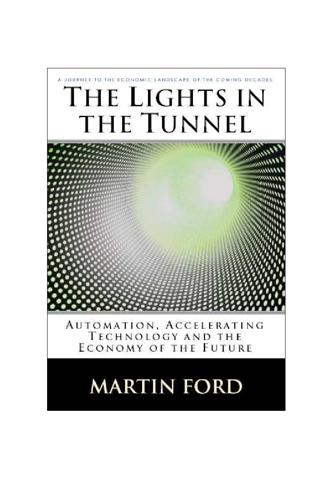
The Lights in the Tunnel
by
Martin Ford
Published 28 May 2011
Advances such as this may well form the foundation of future information technologies in the area of quantum computing; this will take computer engineering into the realm of individual atoms and even subatomic particles. Even if such breakthroughs don’t arrive in time, and integrated circuit fabrication technology does eventually hit a physical limit, it seems very likely that the focus would simply shift from building faster individual processors to instead linking large numbers of inexpensive, commoditized processors together in parallel architectures. As we’ll see in the next section, this is already happening to a significant degree, but if Moore’s Law eventually runs out of steam, parallel processing may well become the primary focus for building more capable computers. Even if the historical doubling pace of Moore’s Law does someday prove to be unsustainable, there is no reason to believe that progress would halt or even become linear in nature.
…
Yet the business models of both Intel and Microsoft depend on continuing to sell ever more powerful processors and new or updated software applications to take advantage of that power. If customers were to permanently turn away from the idea of faster processors, the business would quickly become commoditized, and Intel would lose its competitive advantage. For that reason, we can be sure that Intel, Microsoft and hundreds of other software companies are actively seeking the next killer app—something that will fully leverage the vastly increased computer power that will be available in the coming years and decades.

A Demon of Our Own Design: Markets, Hedge Funds, and the Perils of Financial Innovation
by
Richard Bookstaber
Published 5 Apr 2007
Inventory was hedged and pushed back onto the heap like so many pairs of old underwear shoved behind the closet door. Money 36 ccc_demon_033-050_ch03.qxd 7/13/07 2:42 PM Page 37 A NEW SHERIFF IN TOWN had been flowing in so quickly that no one was bothered if some sloshed over the sides. But once swaps and emerging markets followed the others into the commoditized world, the froth of profits receded and all the carcasses and rusted hulls that had been ignored rose into view. John Mack, a strong leader with an appreciation for the organizational aspects of the problem, and, it turned out, an eye on preparing the firm for sale, began to work on his “one-firm firm” program.
…
Weill was ultimately a world-class deal maker, not a corporate manager. Sadly, this meant that, as one analyst put it, he built up “a reputation as a brilliant strategist and he’s going out as someone who couldn’t manage everything he has under one roof.” Consolidation of the kind that created Citigroup is a natural result of the commoditization of financial information and markets. Weill was one of the first to see that. The informational ether—with access to real-time prices; market commentary flowing as a continuum from screens at home and office, airport terminals, and teller lines; stock recommendations spilling out of countless Web sites—reduces the market advantage of investment firms.
…
Information flows more freely and is distributed more widely, and prices are readily available to virtually all participants. Trades are executed nearly instantaneously worldwide at transaction costs that are a small fraction of what they were a few decades ago. And, whether developed with the intent of better meeting the demands of investors or, more cynically, to stave off commoditization and maintain profitability, we are awash in new and innovative instruments. But the positive effects of innovation come at a price. Innovation increases complexity. Many innovative instruments are in the form of derivatives with conditional and nonlinear payoffs. When a market dislocation arises, it is difficult to know how the prices of these instruments will react.
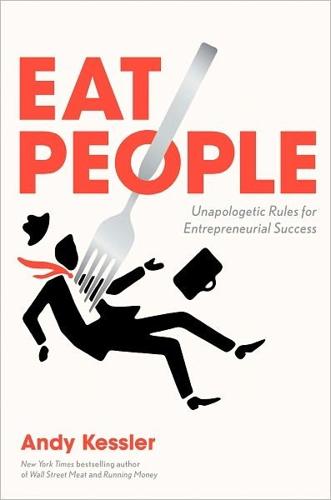
Eat People: And Other Unapologetic Rules for Game-Changing Entrepreneurs
by
Andy Kessler
Published 1 Feb 2011
This is achieved not by raising prices but by lowering prices and benefiting from the learning curve efficiencies that result from larger volumes. The largest profits and barriers to entry come when the learning curve is steeper than the curve of declining prices. The issue of intellectual property and its ownership is separate from the issue of commoditization. The most profitable companies launch a large number of learning curves and commodities.” Whoa. There’s a lot there to chew on. Profits are best when costs drop faster than prices, as long as prices are dropping. Okay, I get that. Intellectual property—and I guess he means patents and copyrights—can slow how fast prices go down.
…
See Productivity and wealth Cable companies as political entrepreneurs replacement of service Cameron, James Carnegie, Andrew Cartwright, Edmund Case, Steve Catmull, Ed Cell phone operators versus peer to peer as Thieves versus Wi-Fi Change, Alinsky’s rules Chicago Booth School China, economic rise Chits Cisco Citigroup Civil Rights Act Title VII (1964), Griggs v. Duke Power Cloud computing Apple servers Google Colgate-Palmolive College reunions, on-top groups Collins, Edward K. Command-and-control death of vertical integration wealth creation Commoditization Commodore Conover, Lloyd Coolidge, William David Copyright, weakness of Cost-cutting, Vanderbilt example Craigslist Cramer, Jim Creators types of Cuban, Mark Curtis, Charles Decision making and anchors of stock markets Dell, Michael Diamond, Jared Digg Digital products copyright, limitations of virtual pipes for zero marginal cost of DiLorenzo, Thomas Discrimination, employment tests DNA analysis Drake, Edwin Drew, Daniel Duke Power, Griggs v.

Big Data at Work: Dispelling the Myths, Uncovering the Opportunities
by
Thomas H. Davenport
Published 4 Feb 2014
Chapter_03.indd 84 03/12/13 11:28 AM 4 The Human Side of Big Data I f your goal is to make something good happen with big data in your o rganization, perhaps the most important component is the human one. After all, almost every other major factor of big data production is free or cheap. The software is often open source; the hardware is highly commoditized. The data is often either already lying around within your organization, or obtainable at little cost from, say, the internet. There are exceptions to this pattern, of course. But the humans who do big data work are difficult to find and keep, and expensive. And it’s pretty clear that not much will happen without them.
…
Figure 5-1 The big data stack App (visua lications lizatio n, BI, an alytic s) Bus (mo iness view viewsdels, , cub es) Appli catio n cod m ov Da ta Data em en t e Platfo rm in frastr uctur e Stora ge Source: SAS Best Practices, 2013. Chapter_05.indd 119 03/12/13 1:04 PM 120 big data @ work Storage There is nothing particularly distinctive about the storage of big data except its low cost. Storing large and diverse amounts of data on disk is becoming more cost-effective as the disk technologies become more commoditized and efficient. Storage in Hadoop environments is typically on multiple disks (solid state storage is still too expensive) attached to commodity servers. Companies like EMC sell storage solutions that allow disks to be added quickly and cheaply, thereby scaling storage in lock-step with growing data volumes.
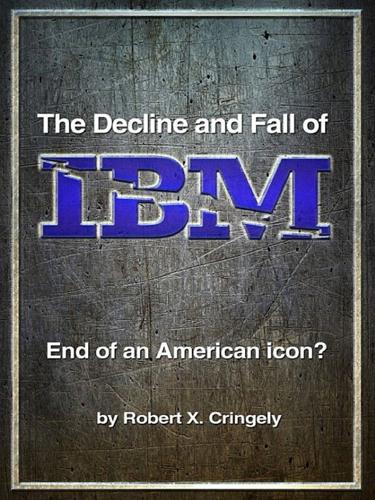
The Decline and Fall of IBM: End of an American Icon?
by
Robert X. Cringely
Published 1 Jun 2014
As this book shows, Rometty has continued to follow the Palmisano playbook at IBM, while Barra just broke a decade-long tradition of secrecy at General Motors to recall 2.6 million faulty cars, and to admit that they should have been recalled years before. Both women take risks, but in this example one is taking a risk on honesty and a new direction, while the other is taking a risk that Sam was right. Sam wasn’t right. IBM could fail on its present course, or just become irrelevant. Information Technology is becoming an increasingly commoditized industry. In time, IBM will have to compete on volume, quality, and cost. This is not something IBM has historically done well. The days of offering unique products and services at a premium price are coming to an end. For IBM to excel in the long term it must adapt to the changing market. In this chapter, I will explore IBM’s current challenges and what I think it should do before it’s too late.
…
IBM sold a lot of hardware and software over the years using services as a loss leader. Without services, what’s IBM’s value proposition over Oracle, Microsoft, HP and everyone else? Why pay IBM the big bucks? I’m not disagreeing with your proposition, by the way. IBM could very well become like Oracle. But in a world where both hardware and software are rapidly commoditized, what kind of player will IBM be? Former IBM Employee / April 25, 2012 / 11:50 am IBM will become just a ‘marketing name’ Gerstner merely delayed the inevitable at IBM. He beat out C. Michael Armstrong (career IBMer) for the CEO job because Armstrong advocated breaking up Big Blue. Armstrong, true to his vision, went to be CEO of both Hughes Aircraft and AT&T and broke them up (liberated shareholder equity) and sold off the pieces.

Industrial Internet
by
Jon Bruner
Published 27 Mar 2013
Among the difficulties in creating truly integrated automotive networks are the long period it takes to refresh the national fleet (it takes about 15 years to refresh 95% of American cars), and the informal means by which they’re maintained and upgraded — in contrast to industrial applications. “The mechanic down the street will need new skills,” says Prasad. “Maybe this is a matter for Code for America[31].” Prasad doesn’t think that the addition of third-party intelligence will commoditize Ford’s cars; instead, it lets Ford focus on building excellent machines. “You have to have excellent hardware and excellent software,” he says. “The software needs a good operating system, the operating system needs good hardware, and the good hardware needs to be connected to an excellent car.”

Who Owns the Future?
by
Jaron Lanier
Published 6 May 2013
Politicians target voters using similar algorithms to those that evaluate people for access to credit or insurance. The list goes on and on. As technology advances, Siren Servers will be ever more the objects of the struggle for wealth and power, because they are the only links in the chain that will not be commoditized. If present trends continue, you’ll always be able to seek information supremacy, just as old-fashioned barons could struggle for supremacy over land or natural resources. A new energy cycle will someday make oil much less central to geopolitics, but the information system that manages that new kind of energy could easily become an impregnable castle.
…
The future is not predictable enough to know what kinds of big, inherently top-down jobs will need to get done, but it is extremely unlikely that there will be none. Big data requires big data centers, and big companies build them. Some new niches for big companies are suggested by the notion of a humanistic digital economy, such as the commoditized decision reduction services to be described later on. Other futuristic candidates for jobs for big companies are stabilization of the climate, repositioning earthquakes,* or creating launch structures that make space access inexpensive.† *Gluing existing faults and using explosives to open up new ones in less destructive locations, such as in the oceans, might accomplish this.
…
For instance, one could collect the signatures of all the cyberpunk science fiction authors on one slate. • Books will be merged with apps, video games, virtual worlds, or whatever other digital format becomes prominent. These will make some serious money for authors at first, while they are novel, before the biggest servers commoditize them. • The distribution of book sales will be even more lopsided than in traditional markets. There will be a small number of superwinners and a huge number of vanity authors, with little in between. • Many readers will read what is put in front of their eyes by crowdsourcing algorithms, and often will not be aware of the identity of the author or the boundary between one book and another

The Innovation Illusion: How So Little Is Created by So Many Working So Hard
by
Fredrik Erixon
and
Bjorn Weigel
Published 3 Oct 2016
Just like the Dodd–Frank Act, new regulations, such as those governing investment managers or insurance companies and their capital management, will standardize and commoditize investment. Part of that is pushing fund managers to increasingly follow general market trends and ratings from credit rating agencies, which have also been regulated in a way that promotes standardization and commoditization. Regulations dress themselves in the language of promoting competition, but the competition they seek is based on the idea of a low-margin, low-spread, high-volume, and commoditized capital market.58 Such capital markets, also characterized by the growing role of intermediaries, will affect the ability of companies to raise funds for long-term investments in innovation on standard capital markets.59 There is a short-termism in modern finance, and the way that gray capitalism has changed both external and internal funding for innovation should concern everyone.60 The changing patterns of investments cut the growth potential of economies.
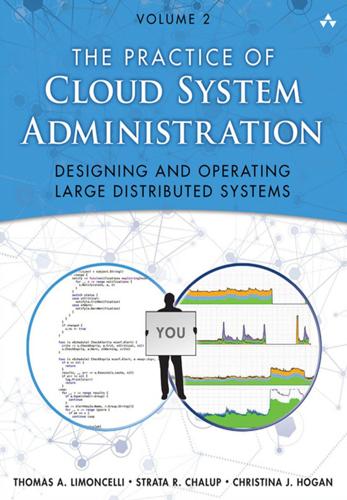
The Practice of Cloud System Administration: DevOps and SRE Practices for Web Services, Volume 2
by
Thomas A. Limoncelli
,
Strata R. Chalup
and
Christina J. Hogan
Published 27 Aug 2014
The second trend was the commoditization of hardware components used in home computers, such as Intel x86 CPUs, low-end hard drives, and RAM. Before the advent of the web, the average home did not have a computer. The popularity of the Internet created more demand for home computers, resulting in components being manufactured at a scale never before seen. In addition, the popularity of games that required high-end graphics, lots of memory, and fast CPUs was one of the major drivers toward making increasingly higher-end devices available in the consumer market. This mass production led to commoditization and, in turn, lower prices.
…
The Internet-based companies that had survived the crash developed a better understanding of their availability requirements and figured out how to meet them without breaking the bank. Technology Three trends enabled the next phase: surplus capacity left over from the previous boom years, the commoditization of hardware, and the maturation of open source software. The first trend was short-lived but significant. A lot of capacity had been built up in the previous boom years and suppliers were slashing prices. Millions of miles of fiber had been laid in the ground and in the oceans to meet the predicted bandwidth needs of the world.
…
The economics of computing change over time. Faster and more reliable computing technology had a super-linear cost curve in the pre-web and first web eras. The second web era was enabled by linear cost curves. Cloud computing gives us sub-linear cost curves. These changes happened by taking advantage of commoditization and standardization, shifting to open source software, building more reliability through software instead of hardware, and replacing labor-intensive operations with more software. Every order-of-magnitude improvement in the cost of computing enables a new era of applications, each of which was unimaginable just a few years before.
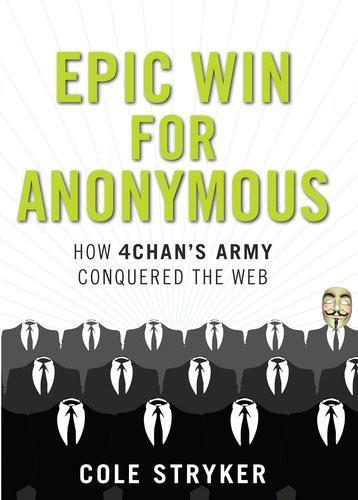
Epic Win for Anonymous: How 4chan's Army Conquered the Web
by
Cole Stryker
Published 14 Jun 2011
/b/tards don’t like it when anyone explains their subculture to NORPs (or normal ordinary respectable person; shorthand for someone whose mind hasn’t been warped by the horrors of 4chan). And while /b/tards are happy to contribute to the memesphere anonymously and for no pay, when someone else starts selling T-shirts, people can get nasty. 4chan thought KYM wanted to commoditize, but we loved this stuff. Most of us had artist backgrounds, who were hyperaware of the market commoditization of culture. That’s not what we wanted for web culture. Of course, it’s not like Know Your Meme was ever hugely profitable (but it was acquired in March 2011 by Ben Huh’s Cheezburger network, so that’s probably going to change). Cheese sees KYM almost as a public service that sustained itself in order to properly archive and analyze stuff that no one in academia seemed willing or able to preserve properly.

Makers
by
Chris Anderson
Published 1 Oct 2012
Sadly for the local factories, they could. Along with selling clothing, Manchester firms started selling the machines that made them. Companies such as J&R Shorrocks and Platt Brothers, which were famed for their engineering skills, soon were exporting their machinery around the world, where it was copied, enhanced, and otherwise commoditized. By the 1900s, huge textile factories could be found from France to America. Manchester’s mechanical advantages had been matched, and new industrial centers closer to agricultural sources of the raw cotton, especially in the American South, began to take over. Manchester’s factories went through the long-familiar quest to move upstream, with more-fashionable designs, higher quality, branded appeal, and further mechanical innovation.
…
Although textiles and flatware are long gone, the UK still has a major aerospace industry (British Aerospace, or BAE Systems as it is now called, is the world’s second-largest defense contractor), and its car designs are still world renowned. And then there are innovative consumer product companies such as Dyson, which uses high design and superior engineering to get consumers to pay premium prices in previously stale and commoditized market segments such as vacuums and fans. Manchester’s universities still produce more engineers than universities in any other city in the UK. The skills are there—they’re just looking for new outlets. Maybe one of the dreadlocked design students hovering over the laser cutter in the Manchester Fab Lab will be the next Dyson.

The End of the Suburbs: Where the American Dream Is Moving
by
Leigh Gallagher
Published 26 Jun 2013
The homes themselves were also very different from their predecessors in earlier suburbs. Previously, residential development typically took the form of either custom-built homes for the wealthy or lower-income rental housing. But the post–World War II era brought with it new developments in materials and mass production that lowered costs dramatically and enabled the commoditization of the home-building process. The popularization of these techniques is credited largely to William Levitt, the enterprising young seaman from Long Island who returned after the war to Levitt & Sons, the building company started by his father, Abraham. A successful operation before the war, Levitt & Sons had mostly built custom homes for the upper middle class on Long Island, developing now well-established places like Rockville Centre and Manhasset.
…
“For literally nothing down—other than a simple two percent and promise to pay, you too can find a box of your own in one of the fresh-air slums we’re building around the edges of American cities,” he wrote. In 1962, the songwriter Malvina Reynolds wrote “Little Boxes,” the now-famous satire of conformist middle-class America and houses made out of “ticky tacky,” the slang term for the materials used in commoditized construction. (The song would much later gain a second life in the mid-2000s as the opening theme song for the Showtime series Weeds.) Pop culture wasn’t the only early critic of suburbia. As early as 1959, land-use experts started to raise concerns about the breakneck pace of development. That year, the Urban Land Institute and the National Association of Home Builders released a sixteen-minute film called Community Growth, Crisis and Challenge, which warned of the negative impacts of what had become known as sprawl.

The Geek Feminist Revolution
by
Kameron Hurley
Published 1 Jan 2016
Because women, in many cultures—and in the history of many cultures—are seen as commodities. As objects. Their worth is measured in beauty. Whether you’re selling me your idealized form of yourself or someone else is doing it, the sad fact is that pushing this type of fake bullshit on us is part of a larger history of commoditizing people—whether we are selling ourselves or being sold by others. And yes, people can be sexy in many different ways! That’s true. People are sexy. But this type of representation of “sexy” doesn’t look like actual bedtime sexiness any more than your typical porn movie actually looks like you and your partner(s) getting it on.
…
She’s not interested in your problems, or patting you on the head, or giving you some bit of happy luck when you throw yourself from a rooftop crawling with German terrorists. And that’s just the one who doesn’t give a toss for being naked. There are a million other characters who would spit in your face before posing as objects, to be drawn out and commoditized; it would mean rejecting everything they were, everything they believed in, to pose as some perfect, pawed-over item in a stranger’s inventory. I tried to imagine Lilia, the primary protagonist in my new series, with her scarred face and clawed hand and bum leg, whose entire existence has been within a consent culture where people retain absolute autonomy over themselves and their bodies and their desires, getting pitched this idea, and I could just imagine her screwing up her face like, “You want what?”
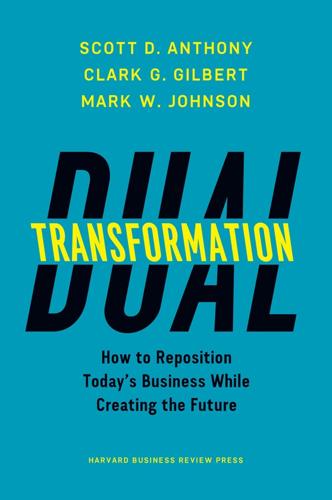
Dual Transformation: How to Reposition Today's Business While Creating the Future
by
Scott D. Anthony
and
Mark W. Johnson
Published 27 Mar 2017
Whereas transformation A is often defensive in nature, the disruption that forces it opens opportunities to solve new (but related) problems in different (but related) ways. Put another way, the disruptive forces that threaten to rip apart today’s business create conditions to build tomorrow’s business. A core threat to Xerox was commoditization in its core printer and copier business, a phenomenon driven by globalization and the rise of the internet, which dampened demand for physical solutions. Those same forces created new demand for and allowed Xerox to assemble a portfolio of service offerings under the brand Xerox Global Services (XGS).
…
Nonetheless, the simultaneous pursuit of two goals—new ways to develop drugs, and a radical reframing of the fundamental problem the organization solves—positions Janssen to drive significant strategic transformation in the years to come. The What and the How of Dual Transformation When Janssen first confronted the challenges of commoditization and sagging performance, it had an array of strategic options. Separating the unique roles of transformation A and transformation B requires, first, a clear and consistent definition of today’s business—a seemingly simple step that is easy to skip. It is easy to describe what a company sells.

Buy Then Build: How Acquisition Entrepreneurs Outsmart the Startup Game
by
Walker Deibel
Published 19 Oct 2018
This will show you how much “buyer power” exists in an industry. If there are a few large buyers and many fragmented suppliers, this gives particular strength to the buyers to put suppliers in direct competition against each other in a race to the lowest price. This concept is typically thought of as commoditization. The industry might be ripe for either a disruptive technology or consolidation play—either 187 of which could be executed by an acquisition entrepreneur with the right plan. SUPPLIER POWER Supplier power is the opposite of buyer power. It speaks to how easy it is for the company’s suppliers to increase prices, which in turn increases cost of goods sold and reduces gross margins.
…
It’s a great opportunity to truly interview buyers and understand both the layout of the industry and the level of pain that the product or service relieves. I like to do a soft close at the end of these meetings. Say something like, “So, you said the value you get from these types of suppliers is X. If X were true at my company, would you consider switching?” This will tell you a lot about how commoditized the industry is and what the value drivers are. You can use your sharpened networking skills from the search phase and reach out to people who own similar companies in different geographic areas as well. 252 Above all, however, respect the confidentiality agreement. The deal is not done until it’s done, and the level of costly damage you could do to a seller is significant if things go a different direction.
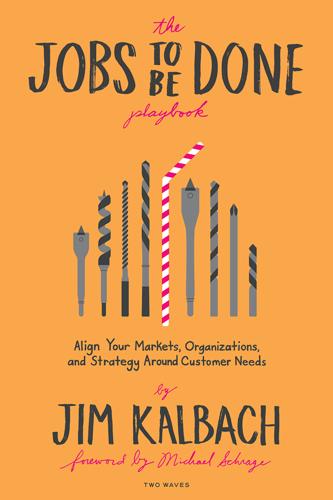
The Jobs to Be Done Playbook: Align Your Markets, Organization, and Strategy Around Customer Needs
by
Jim Kalbach
Published 6 Apr 2020
In another related approach outlined in the book The Innovator’s Guide to Growth, Scott Anthony and his coauthors showed that marketplace opportunity comes from understanding the customer job:3 “To identify opportunities to create new growth, look first for important “jobs” that people can’t get done satisfactorily with current solutions.” This doesn’t just apply to creating new offerings. JTBD can help revitalize growth in existing businesses. The authors wrote: “Jobs-based thinking can restart growth by helping companies shake up commoditized markets and highlighting opportunities to revive even the most moribund of products.” One specific method to evaluate opportunities from a jobs-based view of the market is the jobs scoring sheet. After doing primary research to uncover jobs, including interviewing and observations, Anthony and his colleagues recommended prioritizing jobs along several dimensions.
…
Skype’s market share of all international calls nearly tripled that next year. And a few years later, Microsoft launched Skype for Business. Now, Skype was on equal footing with other premium services. Even telephone providers were feeling the effect, with the per-minute cost of international calls being commoditized to near zero. Skype also changed the playing field in terms of security, technical architecture, and capabilities, such as a rise in video calls. Skype’s rise is an example of what’s called “disruption,” a concept formalized by Clayton Christensen in his 1997 book The Innovator’s Dilemma. Figure 7.1 shows the dynamics of basic disruption.

Brief Peeks Beyond: Critical Essays on Metaphysics, Neuroscience, Free Will, Skepticism and Culture
by
Bernardo Kastrup
Published 28 May 2015
We’re here to express ourselves – what else? – not to be cogs in a mechanism. A civilization of stupefied drones going blindly about their practical tasks is constantly flirting with collapse. But the power structures may believe that this can be managed through the right combination of alcohol, tobacco, television, pornography, commoditized shopping culture and, in more severe cases, cognitive behavioral therapy145 and dependencycreating psychiatric drugs.146 The mainstream metaphysics of materialism enables this by rendering culturally legitimate the outrageous notion that unhappy people are simply malfunctioning biological robots.
…
Like the proverbial carrot hanging in front of the horse, the entire allure of wealth and status lies largely in not having them. By not having them, mental space remains open for our psyches to fill with fantasies onto which we project numinous meaning. It is the achievement of success – the catching of the ghosts – that gives away the game. As desirable material goods become commoditized and more available, it actually becomes harder to keep up the illusion. It is the very economic success of materialism that carries with it the seed of its own destruction. When purchasing a television set was a magical, nearly untenable consumer dream rich in projected meaning, its appeal was huge.
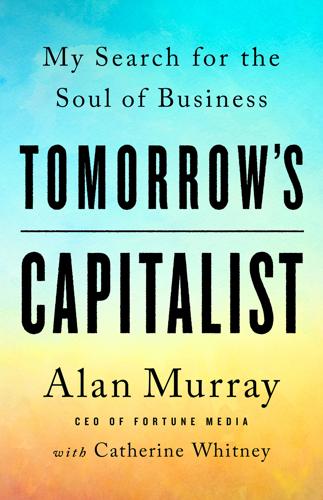
Tomorrow's Capitalist: My Search for the Soul of Business
by
Alan Murray
Published 15 Dec 2022
And for a lot of our sellers whose offline income was really hard hit, Etsy provided a meaningful lifeline.” On the other side of the equation, millions of buyers responded to the convenience as well as the originality of the product line. Silverman suggested that Etsy taps into a weariness with commoditized goods and cookie-cutter purchases. “I think they discovered that you can keep commerce human, you can support another seller,” he said. “You can have something that’s made just for you that comes with a handwritten note and it’s just a better way to shop. So, it was definitely a transformational year for Etsy, and we feel really great about that.”
…
And it’s about a community. And suddenly, he’s finding a community of people that share his passion, and not only as a successful business but it’s a successful relationship for buyers and for sellers.” One unique aspect of Etsy is the profit arrangement of the platform. As Silverman put it, “There’s no commoditization of work or labor. Someone wakes up in the morning and has a passion to make something. They’re a crafts person, or an artist. And they have many places to choose where they can sell. Etsy is one of them. And they decide what they want to make, they decide how they want to make it. They decide how they want to price it.
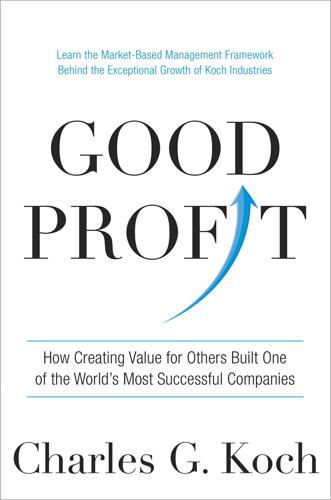
Good Profit: How Creating Value for Others Built One of the World's Most Successful Companies
by
Charles de Ganahl Koch
Published 14 Sep 2015
If your goal is to lose weight, you could accomplish it by cutting off your leg, but that is hardly beneficial. Cost-cutting for its own sake is often just as shortsighted as overspending and can seriously damage future profitability. Many companies have undermined their highly profitable franchises by commoditizing them through cost-cutting. Various fast-food chains, for example, have commoditized their product by cheapening their ingredients. It is tempting to forget what the customer values and instead focus on the mirage of improving margins by using cheaper ingredients. A mud pie is certainly cheaper than chocolate pie, but it has no value for a hungry customer.

Traders, Guns & Money: Knowns and Unknowns in the Dazzling World of Derivatives
by
Satyajit Das
Published 15 Nov 2006
Earnings shrank just as we increased our overheads. The computing and infrastructure needs of running the warehouses were not cheap and the emphasis now shifted to volume. Greater volume was needed to compensate for lower profit margins, volume required greater standardization, products became increasingly ‘commoditized’ and profit margins shrank further. We needed even more volume. It was an accelerating downward spiral. We needed ‘innovation’, we were told. We created increasingly odd products. These obscure structures allowed us to earn higher margins than the cutthroat vanilla business. The structured business also provided flow for our trading desks.
…
They suggested a generous retainer arrangement; I met with them; It was amusing; I didn’t accept the offer and had never intended to. The retainer offer was purely to ensure that I couldn’t act against them. Even scum have principles. The usual suspects Over time, the structured products business went the way of all businesses – the non-standard become standard. In the patois, they were ‘commoditized’. There were esoteric debates about what was now ‘structured’ or DAS_C08.QXP 8/7/06 4:49 PM Page 237 7 N G a m e s w i t h o u t f ro n t i e r s 237 ‘exotic’. The profitability of the business declined as price became the primary basis of competition amongst all the dealers. Smarter investors cunningly played them off to get better deals.
…
However, the text is different. 6 ‘What Worries Warren’ (3 March 2003) Fortune. 13_INDEX.QXD 17/2/06 4:44 pm Page 325 Index accounting rules 139, 221, 228, 257 Accounting Standards Board 33 accrual accounting 139 active fund management 111 actuaries 107–10, 205, 289 Advance Corporation Tax 242 agency business 123–4, 129 agency theory 117 airline profits 140–1 Alaska 319 Allen, Woody 20 Allied Irish Bank 143 Allied Lyons 98 alternative investment strategies 112, 308 American Express 291 analysts, role of 62–4 anchor effect 136 Anderson, Rolf 92–4 annuities 204–5 ANZ Bank 277 Aquinas, Thomas 137 arbitrage 33, 38–40, 99, 114, 137–8, 171–2, 245–8, 253–5, 290, 293–6 arbitration 307 Argentina 45 arithmophobia 177 ‘armpit theory’ 303 Armstrong World Industries 274 arrears assets 225 Ashanti Goldfields 97–8, 114 Asian financial crisis (1997) 4, 9, 44–5, 115, 144, 166, 172, 207, 235, 245, 252, 310, 319 asset consultants 115–17, 281 ‘asset growth’ strategy 255 asset swaps 230–2 assets under management (AUM) 113–4, 117 assignment of loans 267–8 AT&T 275 attribution of earnings 148 auditors 144 Australia 222–4, 254–5, 261–2 back office functions 65–6 back-to-back loans 35, 40 backwardation 96 Banca Popolare di Intra 298 Bank of America 298, 303 Bank of International Settlements 50–1, 281 Bank of Japan 220 Bankers’ Trust (BT) 59, 72, 101–2, 149, 217–18, 232, 268–71, 298, 301, 319 banking regulations 155, 159, 162, 164, 281, 286, 288 banking services 34; see also commercial banks; investment banks bankruptcy 276–7 Banque Paribas 37–8, 232 Barclays Bank 121–2, 297–8 13_INDEX.QXD 17/2/06 326 4:44 pm Page 326 Index Baring, Peter 151 Baring Brothers 51, 143, 151–2, 155 ‘Basel 2’ proposal 159 basis risk 28, 42, 274 Bear Stearns 173 bearer eurodollar collateralized securities (BECS) 231–3 ‘behavioural finance’ 136 Berkshire Hathaway 19 Bermudan options 205, 227 Bernstein, Peter 167 binomial option pricing model 196 Bismarck, Otto von 108 Black, Fischer 22, 42, 160, 185, 189–90, 193, 195, 197, 209, 215 Black–Scholes formula for option pricing 22, 185, 194–5 Black–Scholes–Merton model 160, 189–93, 196–7 ‘black swan’ hypothesis 130 Blair, Tony 223 Bogle, John 116 Bohr, Niels 122 Bond, Sir John 148 ‘bond floor’ concept 251–4 bonding 75–6, 168, 181 bonuses 146–51, 244, 262, 284–5 Brady Commission 203 brand awareness and brand equity 124, 236 Brazil 302 Bretton Woods system 33 bribery 80, 303 British Sky Broadcasting (BSB) 247–8 Brittain, Alfred 72 broad index secured trust offerings (BISTROs) 284–5 brokers 69, 309 Brown, Robert 161 bubbles 210, 310, 319 Buconero 299 Buffet, Warren 12, 19–20, 50, 110–11, 136, 173, 246, 316 business process reorganization 72 business risk 159 Business Week 130 buy-backs 249 ‘call’ options 25, 90, 99, 101, 131, 190, 196 callable bonds 227–9, 256 capital asset pricing model (CAPM) 111 capital flow 30 capital guarantees 257–8 capital structure arbitrage 296 Capote, Truman 87 carbon trading 320 ‘carry cost’ model 188 ‘carry’ trades 131–3, 171 cash accounting 139 catastrophe bonds 212, 320 caveat emptor principle 27, 272 Cayman Islands 233–4 Cazenove (company) 152 CDO2 292 Cemex 249–50 chaos theory 209, 312 Chase Manhattan Bank 143, 299 Chicago Board Options Exchange 195 Chicago Board of Trade (CBOT) 25–6, 34 chief risk officers 177 China 23–5, 276, 302–4 China Club, Hong Kong 318 Chinese walls 249, 261, 280 chrematophobia 177 Citibank and Citigroup 37–8, 43, 71, 79, 94, 134–5, 149, 174, 238–9 Citron, Robert 124–5, 212–17 client relationships 58–9 Clinton, Bill 223 Coats, Craig 168–9 collateral requirements 215–16 collateralized bond obligations (CBOs) 282 collateralized debt obligations (CDOs) 45, 282–99 13_INDEX.QXD 17/2/06 4:44 pm Page 327 Index collateralized fund obligations (CFOs) 292 collateralized loan obligations (CLOs) 283–5, 288 commercial banks 265–7 commoditization 236 commodity collateralized obligations (CCOs) 292 commodity prices 304 Commonwealth Bank of Australia 255 compliance officers 65 computer systems 54, 155, 197–8 concentration risk 271, 287 conferences with clients 59 confidence levels 164 confidentiality 226 Conseco 279–80 contagion crises 291 contango 96 contingent conversion convertibles (co-cos) 257 contingent payment convertibles (co-pays) 257 Continental Illinois 34 ‘convergence’ trading 170 convertible bonds 250–60 correlations 163–6, 294–5; see also default correlations corruption 303 CORVUS 297 Cox, John 196–7 credit cycle 291 credit default swaps (CDSs) 271–84, 293, 299 credit derivatives 129, 150, 265–72, 282, 295, 299–300 Credit Derivatives Market Practices Committee 273, 275, 280–1 credit models 294, 296 credit ratings 256–7, 270, 287–8, 297–8, 304 credit reserves 140 credit risk 158, 265–74, 281–95, 299 327 credit spreads 114, 172–5, 296 Credit Suisse 70, 106, 167 credit trading 293–5 CRH Capital 309 critical events 164–6 Croesus 137 cross-ruffing 142 cubic splines 189 currency options 98, 218, 319 custom repackaged asset vehicles (CRAVEs) 233 daily earning at risk (DEAR) concept 160 Daiwa Bank 142 Daiwa Europe 277 Danish Oil and Natural Gas 296 data scrubbing 142 dealers, work of 87–8, 124–8, 133, 167, 206, 229–37, 262, 295–6; see also traders ‘death swap’ strategy 110 decentralization 72 decision-making, scientific 182 default correlations 270–1 defaults 277–9, 287, 291, 293, 296, 299 DEFCON scale 156–7 ‘Delta 1’ options 243 delta hedging 42, 200 Deming, W.E. 98, 101 Denmark 38 deregulation, financial 34 derivatives trading 5–6, 12–14, 18–72, 79, 88–9, 99–115, 123–31, 139–41, 150, 153, 155, 175, 184–9, 206–8, 211–14, 217–19, 230, 233, 257, 262–3, 307, 316, 319–20; see also equity derivatives Derman, Emmanuel 185, 198–9 Deutsche Bank 70, 104, 150, 247–8, 274, 277 devaluations 80–1, 89, 203–4, 319 13_INDEX.QXD 17/2/06 4:44 pm Page 328 328 Index dilution of share capital 241 DINKs 313 Disney Corporation 91–8 diversification 72, 110–11, 166, 299 dividend yield 243 ‘Dr Evil’ trade 135 dollar premium 35 downsizing 73 Drexel Burnham Lambert (DBL) 282 dual currency bonds 220–3; see also reverse dual currency bonds earthquakes, bonds linked to 212 efficient markets hypothesis 22, 31, 111, 203 electronic trading 126–30, 134 ‘embeddos’ 218 emerging markets 3–4, 44, 115, 132–3, 142, 212, 226, 297 Enron 54, 142, 250, 298 enterprise risk management (ERM) 176 equity capital management 249 equity collateralized obligations (ECOs) 292 equity derivatives 241–2, 246–9, 257–62 equity index 137–8 equity investment, retail market in 258–9 equity investors’ risk 286–8 equity options 253–4 equity swaps 247–8 euro currency 171, 206, 237 European Bank for Reconstruction and Development 297 European currency units 93 European Union 247–8 Exchange Rate Mechanism, European 204 exchangeable bonds 260 expatriate postings 81–2 expert witnesses 310–12 extrapolation 189, 205 extreme value theory 166 fads of management science 72–4 ‘fairway bonds’ 225 Fama, Eugene 22, 111, 194 ‘fat tail’ events 163–4 Federal Accounting Standards Board 266 Federal Home Loans Bank 213 Federal National Mortgage Association 213 Federal Reserve Bank 20, 173 Federal Reserve Board 132 ‘Ferraris’ 232 financial engineering 228, 230, 233, 249–50, 262, 269 Financial Services Authority (FSA), Japan 106, 238 Financial Services Authority (FSA), UK 15, 135 firewalls 235–6 firing of staff 84–5 First Interstate Ltd 34–5 ‘flat’ organizations 72 ‘flat’ positions 159 floaters 231–2; see also inverse floaters ‘flow’ trading 60–1, 129 Ford Motors 282, 296 forecasting 135–6, 190 forward contracts 24–33, 90, 97, 124, 131, 188 fugu fish 239 fund management 109–17, 286, 300 futures see forward contracts Galbraith, John Kenneth 121 gamma risk 200–2, 294 Gauss, Carl Friedrich 160–2 General Motors 279, 296 General Reinsurance 20 geometric Brownian motion (GBM) 161 Ghana 98 Gibson Greeting Cards 44 Glass-Steagall Act 34 gold borrowings 132 13_INDEX.QXD 17/2/06 4:44 pm Page 329 Index gold sales 97, 137 Goldman Sachs 34, 71, 93, 150, 173, 185 ‘golfing holiday bonds’ 224 Greenspan, Alan 6, 9, 19–21, 29, 43, 47, 50, 53, 62, 132, 159, 170, 215, 223, 308 Greenwich NatWest 298 Gross, Bill 19 Guangdong International Trust and Investment Corporation (GITIC) 276–7 guaranteed annuity option (GAO) contracts 204–5 Gutenfreund, John 168–9 gyosei shido 106 Haghani, Victor 168 Hamanaka, Yasuo 142 Hamburgische Landesbank 297 Hammersmith and Fulham, London Borough of 66–7 ‘hara-kiri’ swaps 39 Hartley, L.P. 163 Hawkins, Greg 168 ‘heaven and hell’ bonds 218 hedge funds 44, 88–9, 113–14, 167, 170–5, 200–2, 206, 253–4, 262–3, 282, 292, 296, 300, 308–9 hedge ratio 264 hedging 24–8, 31, 38–42, 60, 87–100, 184, 195–200, 205–7, 214, 221, 229, 252, 269, 281, 293–4, 310 Heisenberg, Werner 122 ‘hell bonds’ 218 Herman, Clement (‘Crem’) 45–9, 77, 84, 309 Herodotus 137, 178 high net worth individuals (HNWIs) 237–8, 286 Hilibrand, Lawrence 168 Hill Samuel 231–2 329 The Hitchhiker’s Guide to the Galaxy 189 Homer, Sidney 184 Hong Kong 9, 303–4 ‘hot tubbing’ 311–12 HSBC Bank 148 HSH Nordbank 297–8 Hudson, Kevin 102 Hufschmid, Hans 77–8 IBM 36, 218, 260 ICI 34 Iguchi, Toshihude 142 incubators 309 independent valuation 142 indexed currency option notes (ICONs) 218 India 302 Indonesia 5, 9, 19, 26, 55, 80–2, 105, 146, 219–20, 252, 305 initial public offerings 33, 64, 261 inside information and insider trading 133, 241, 248–9 insurance companies 107–10, 117, 119, 150, 192–3, 204–5, 221, 223, 282, 286, 300; see also reinsurance companies insurance law 272 Intel 260 intellectual property in financial products 226 Intercontinental Hotels Group (IHG) 285–6 International Accounting Standards 33 International Securities Market Association 106 International Swap Dealers Association (ISDA) 273, 275, 279, 281 Internet stock and the Internet boom 64, 112, 259, 261, 310, 319 interpolation of interest rates 141–2, 189 inverse floaters 46–51, 213–16, 225, 232–3 13_INDEX.QXD 17/2/06 4:44 pm Page 330 330 Index investment banks 34–8, 62, 64, 67, 71, 127–8, 172, 198, 206, 216–17, 234, 265–7, 298, 309 investment managers 43–4 investment styles 111–14 irrational decisions 136 Italy 106–7 Ito’s Lemma 194 Japan 39, 43, 82–3, 92, 94, 98–9, 101, 106, 132, 142, 145–6, 157, 212, 217–25, 228, 269–70 Jensen, Michael 117 Jett, Joseph 143 JP Morgan (company) 72, 150, 152, 160, 162, 249–50, 268–9, 284–5, 299; see also Morgan Guaranty junk bonds 231, 279, 282, 291, 296–7 JWM Associates 175 Kahneman, Daniel 136 Kaplanis, Costas 174 Kassouf, Sheen 253 Kaufman, Henry 62 Kerkorian, Kirk 296 Keynes, J.M. 167, 175, 198 Keynesianism 5 Kidder Peabody 143 Kleinwort Benson 40 Korea 9, 226, 278 Kozeny, Viktor 121 Krasker, William 168 Kreiger, Andy 319 Kyoto Protocol 320 Lavin, Jack 102 law of large numbers 192 Leeson, Nick 51, 131, 143, 151 legal opinions 47, 219–20, 235, 273–4 Leibowitz, Martin 184 Leland, Hayne 42, 202 Lend Lease Corporation 261–2 leptokurtic conditions 163 leverage 31–2, 48–50, 54, 99, 102–3, 114, 131–2, 171–5, 213–14, 247, 270–3, 291, 295, 305, 308 Lewis, Kenneth 303 Lewis, Michael 77–8 life insurance 204–5 Lintner, John 111 liquidity options 175 liquidity risk 158, 173 litigation 297–8 Ljunggren, Bernt 38–40 London Inter-Bank Offered Rate (LIBOR) 6, 37 ‘long first coupon’ strategy 39 Long Term Capital Management (LTCM) 44, 51, 62, 77–8, 84, 114, 166–75, 187, 206, 210, 215–18, 263–4, 309–10 Long Term Credit Bank of Japan 94 LOR (company) 202 Louisiana Purchase 319 low exercise price options (LEPOs) 261 Maastricht Treaty and criteria 106–7 McLuhan, Marshall 134 McNamara, Robert 182 macro-economic indicators, derivatives linked to 319 Mahathir Mohammed 31 Malaysia 9 management consultants 72–3 Manchester United 152 mandatory convertibles 255 Marakanond, Rerngchai 302 margin calls 97–8, 175 ‘market neutral’ investment strategy 114 market risk 158, 173, 265 marketable eurodollar collateralized securities (MECS) 232 Markowitz, Harry 110 mark-to-market accounting 10, 100, 139–41, 145, 150, 174, 215–16, 228, 244, 266, 292, 295, 298 Marx, Groucho 24, 57, 67, 117, 308 13_INDEX.QXD 17/2/06 4:44 pm Page 331 Index mathematics applied to financial instruments 209–10; see also ‘quants’ matrix structures 72 Meckling, Herbert 117 Melamed, Leo 34, 211 merchant banks 38 Meriwether, John 167–9, 172–5 Merrill Lynch 124, 150, 217, 232 Merton, Robert 22, 42, 168–70, 175, 185, 189–90, 193–7, 210 Messier, Marie 247 Metallgesellschaft 95–7 Mexico 44 mezzanine finance 285–8, 291–7 MG Refining and Marketing 95–8, 114 Microsoft 53 Mill, Stuart 130 Miller, Merton 22, 101, 194 Milliken, Michael 282 Ministry of Finance, Japan 222 misogyny 75–7 mis-selling 238, 297–8 Mitchell, Edison 70 Mitchell & Butler 275–6 models financial 42–3, 141–2, 163–4, 173–5, 181–4, 189, 198–9, 205–10 of business processes 73–5 see also credit models Modest, David 168 momentum investment 111 monetization 260–1 monopolies in financial trading 124 moral hazard 151, 280, 291 Morgan Guaranty 37–8, 221, 232 Morgan Stanley 76, 150 mortgage-backed securities (MBSs) 282–3 Moscow, City of 277 moves of staff between firms 150, 244 Mozer, Paul 169 Mullins, David 168–70 multi-skilling 73 331 Mumbai 3 Murdoch, Rupert 247 Nabisco 220 Napoleon 113 NASDAQ index 64, 112 Nash, Ogden 306 National Australia Bank 144, 178 National Rifle Association 29 NatWest Bank 144–5, 198 Niederhoffer, Victor 130 ‘Nero’ 7, 31, 45–9, 60, 77, 82–3, 88–9, 110, 118–19, 125, 128, 292 NERVA 297 New Zealand 319 Newman, Frank 104 news, financial 133–4 News Corporation 247 Newton, Isaac 162, 210 Nippon Credit Bank 106, 271 Nixon, Richard 33 Nomura Securities 218 normal distribution 160–3, 193, 199 Northern Electric 248 O’Brien, John 202 Occam, William 188 off-balance sheet transactions 32–3, 99, 234, 273, 282 ‘offsites’ 74–5 oil prices 30, 33, 89–90, 95–7 ‘omitted variable’ bias 209–10 operational risk 158, 176 opinion shopping 47 options 9, 21–2, 25–6, 32, 42, 90, 98, 124, 197, 229 pricing 185, 189–98, 202 Orange County 16, 44, 50, 124–57, 212–17, 232–3 orphan subsidiaries 234 over-the-counter (OTC) market 26, 34, 53, 95, 124, 126 overvaluation 64 13_INDEX.QXD 17/2/06 4:44 pm Page 332 332 Index ‘overwhelming force’ strategy 134–5 Owen, Martin 145 ownership, ‘legal’ and ‘economic’ 247 parallel loans 35 pari-mutuel auction system 319 Parkinson’s Law 136 Parmalat 250, 298–9 Partnoy, Frank 87 pension funds 43, 108–10, 115, 204–5, 255 People’s Bank of China (PBOC) 276–7 Peters’ Principle 71 petrodollars 71 Pétrus (restaurant) 121 Philippines, the 9 phobophobia 177 Piga, Gustavo 106 PIMCO 19 Plaza Accord 38, 94, 99, 220 plutophobia 177 pollution quotas 320 ‘portable alpha’ strategy 115 portfolio insurance 112, 202–3, 294 power reverse dual currency (PRDC) bonds 226–30 PowerPoint 75 preferred exchangeable resettable listed shares (PERLS) 255 presentations of business models 75 to clients 57, 185 prime brokerage 309 Prince, Charles 238 privatization 205 privity of contract 273 Proctor & Gamble (P&G) 44, 101–4, 155, 298, 301 product disclosure statements (PDSs) 48–9 profit smoothing 140 ‘programme’ issuers 234–5 proprietary (‘prop’) trading 60, 62, 64, 130, 174, 254 publicly available information (PAI) 277 ‘puff’ effect 148 purchasing power parity theory 92 ‘put’ options 90, 131, 256 ‘quants’ 183–9, 198, 208, 294 Raabe, Matthew 217 Ramsay, Gordon 121 range notes 225 real estate 91, 219 regulatory arbitrage 33 reinsurance companies 288–9 ‘relative value’ trading 131, 170–1, 310 Reliance Insurance 91–2 repackaging (‘repack’) business 230–6, 282, 290 replication in option pricing 195–9, 202 dynamic 200 research provided to clients 58, 62–4, 184 reserves, use of 140 reset preference shares 254–7 restructuring of loans 279–81 retail equity products 258–9 reverse convertibles 258–9 reverse dual currency bonds 223–30 ‘revolver’ loans 284–5 risk, financial, types of 158 risk adjusted return on capital (RAROC) 268, 290 risk conservation principle 229–30 risk management 65, 153–79, 184, 187, 201, 267 risk models 163–4, 173–5 riskless portfolios 196–7 RJ Reynolds (company) 220–1 rogue traders 176, 313–16 Rosenfield, Eric 168 Ross, Stephen 196–7, 202 Roth, Don 38 Rothschild, Mayer Amshel 267 Royal Bank of Scotland 298 Rubinstein, Mark 42, 196–7 13_INDEX.QXD 17/2/06 4:44 pm Page 333 Index Rumsfeld, Donald 12, 134, 306 Rusnak, John 143 Russia 45, 80, 166, 172–3, 274, 302 sales staff 55–60, 64–5, 125, 129, 217 Salomon Brothers 20, 36, 54, 62, 167–9, 174, 184 Sandor, Richard 34 Sanford, Charles 72, 269 Sanford, Eugene 269 Schieffelin, Allison 76 Scholes, Myron 22, 42, 168–71, 175, 185, 189–90, 193–7, 263–4 Seagram Group 247 Securities and Exchange Commission, US 64, 304 Securities and Futures Authority, UK 249 securitization 282–90 ‘security design’ 254–7 self-regulation 155 sex discrimination 76 share options 250–1 Sharpe, William 111 short selling 30–1, 114 Singapore 9 single-tranche CDOs 293–4, 299 ‘Sisters of Perpetual Ecstasy’ 234 SITCOMs 313 Six Continents (6C) 275–6 ‘smile’ effect 145 ‘snake’ currency system 203 ‘softing’ arrangements 117 Solon 137 Soros, George 44, 130, 253, 318–19 South Sea Bubble 210 special purpose asset repackaging companies (SPARCs) 233 special purpose vehicles (SPVs) 231–4, 282–6, 290, 293 speculation 29–31, 42, 67, 87, 108, 130 ‘spinning’ 64 333 Spitzer, Eliot 64 spread 41, 103; see also credit spreads stack hedges 96 Stamenson, Michael 124–5 standard deviation 161, 193, 195, 199 Steinberg, Sol 91 stock market booms 258, 260 stock market crashes 42–3, 168, 203, 257, 259, 319 straddles or strangles 131 strategy in banking 70 stress testing 164–6 stripping of convertible bonds 253–4 structured investment products 44, 112, 115, 118, 128, 211–39, 298 structured note asset packages (SNAPs) 233 Stuart SC 18, 307, 316–18 Styblo Bleder, Tanya 153 Suharto, Thojib 81–2 Sumitomo Corporation 100, 142 Sun Tzu 61 Svensk Exportkredit (SEK) 38–9 swaps 5–10, 26, 35–40, 107, 188, 211; see also equity swaps ‘swaptions’ 205–6 Swiss Bank Corporation (SBC) 248–9 Swiss banks 108, 305 ‘Swiss cheese theory’ 176 synthetic securitization 284–5, 288–90 systemic risk 151 Takeover Panel 248–9 Taleb, Nassim 130, 136, 167 target redemption notes 225–6 tax and tax credits 171, 242–7, 260–3 Taylor, Frederick 98, 101 team-building exercises 76 team moves 149 technical analysis 60–1, 135 television programmes about money 53, 62–3 Thailand 9, 80, 302–5 13_INDEX.QXD 17/2/06 4:44 pm Page 334 334 Index Thatcher, Margaret 205 Thorp, Edward 253 tobashi trades 105–7 Tokyo Disneyland 92, 212 top managers 72–3 total return swaps 246–8, 269 tracking error 138 traders in financial products 59–65, 129–31, 135–6, 140, 148, 151, 168, 185–6, 198; see also dealers trading limits 42, 157, 201 trading rooms 53–4, 64, 68, 75–7, 184–7, 208 Trafalgar House 248 tranching 286–9, 292, 296 transparency 26, 117, 126, 129–30, 310 Treynor, Jack 111 trust investment enhanced return securities (TIERS) 216, 233 trust obligation participating securities (TOPS) 232 TXU Europe 279 UBS Global Asset Management 110, 150, 263–4, 274 uncertainty principle 122–3 unique selling propositions 118 unit trusts 109 university education 187 unspecified fund obligations (UFOs) 292 ‘upfronting’ of income 139, 151 Valéry, Paul 163 valuation 64, 142–6 value at risk (VAR) concept 160–7, 173 value investing 111 Vanguard 116 vanity bonds 230 variance 161 Vietnam War 182, 195 Virgin Islands 233–4 Vivendi 247–8 volatility of bond prices 197 of interest rates 144–5 of share prices 161–8, 172–5, 192–3, 199 Volcker, Paul 20, 33 ‘warehouses’ 40–2, 139 warrants arbitrage 99–101 weather, bonds linked to 212, 320 Weatherstone, Dennis 72, 268 Weil, Gotscal & Manges 298 Weill, Sandy 174 Westdeutsche Genosenschafts Zentralbank 143 Westminster Group 34–5 Westpac 261–2 Wheat, Allen 70, 72, 106, 167 Wojniflower, Albert 62 World Bank 4, 36, 38 World Food Programme 320 Worldcom 250, 298 Wriston, Walter 71 WTI (West Texas Intermediate) contracts 28–30 yield curves 103, 188–9, 213, 215 yield enhancement 112, 213, 269 ‘yield hogs’ 43 zaiteku 98–101, 104–5 zero coupon bonds 221–2, 257–8
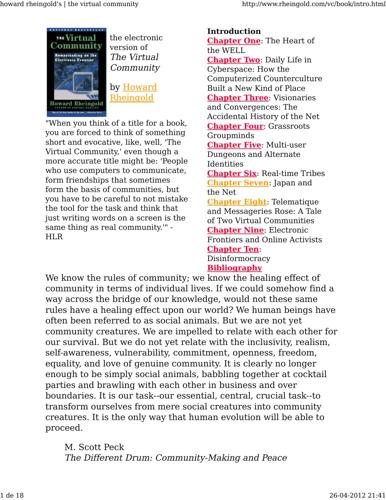
Howard Rheingold
by
The Virtual Community Homesteading on the Electronic Frontier-Perseus Books (1993)
Published 26 Apr 2012
Neil Postman, in his book about the way television has changed the nature of public discourse, Amusing Ourselves to Death, notes that Thomas Paine's Common Sense sold three hundred thousand copies in five months in 1775. Contemporary observers have documented and analyzed the way mass media ("one to many" media) have "commoditized" the public sphere, substituting slick public relations for genuine debate and packaging both issues and candidates like other consumer products. The political significance of CMC lies in its capacity to challenge the existing political hierarchy's monopoly on powerful communications media, and perhaps thus revitalize citizen-based democracy.
…
A politician is now a commodity, citizens are consumers, and issues are decided via sound-bites and staged events. The television camera is the only spectator that counts at a political demonstration or convention. According to Habermas and others, 26-04-2012 21:46 howard rheingold's | the virtual community 11 de 26 http://www.rheingold.com/vc/book/10.html the way the new media have been commoditized through this evolutionary process from hand-printed broadside to telegraph to penny press to mass media has led to the radical deterioration of the public sphere. The consumer society has become the accepted model both for individual behavior and political decision making. Discourse degenerated into publicity, and publicity used the increasing power of electronic media to alter perceptions and shape beliefs.
…
The great power of the idea of electronic democracy is that technical trends in communications technologies can help citizens break the monopoly on their attention that has been enjoyed by the powers behind the broadcast paradigm--the owners of television networks, newspaper syndicates, and publishing conglomerates. The great weakness of the idea of electronic democracy is that it can be more easily commodified than explained. The commercialization and commoditization of public discourse is only one of the grave problems posed by the increasing sophistication of communications media. The Net that is a marvelous lateral network can also be used as a kind of invisible yet inescapable cage. The idea of malevolent political leaders with their hands on the controls of a Net raises fear of a more direct assault on liberties.
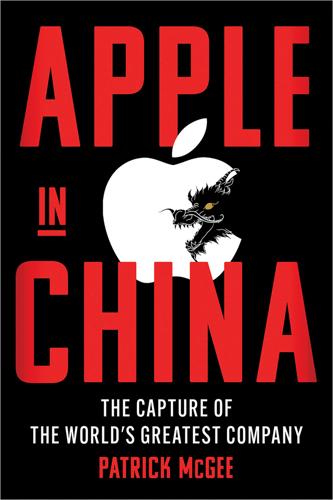
Apple in China: The Capture of the World's Greatest Company
by
Patrick McGee
Published 13 May 2025
Apple opened a factory in Fountain in 1991 to make laptop and desktop computers after an earthquake caused it to question whether all its North American production should be centered in the Bay Area. Apple wanted resiliency, as well as lower costs. But as PC leaders Dell and Compaq vastly improved distribution, logistics, and manufacturing efficiency, Fountain just wasn’t competitive on price or scale. The PC industry could rely on commoditized parts and intense competition between third-party suppliers, whereas Apple used many custom parts made in lower volumes. That entailed higher costs and often required oversight on the part of Apple to make sure things fit. By 1996 Apple had devolved into a has-been, a company making more expensive computers for a dwindling user base upset with being ignored by developers and furious with Apple for losing its innovative edge.
…
In short order, SCI was joined by the likes of Solectron, Flextronics, Celestica, and Jabil—all North America–based contract manufacturers who collectively killed off the entire concept of the do-it-yourself, vertically integrated computer company. By the mid-1990s, the PC industry still hadn’t caught up with the elegance of the Macintosh operating system. But Windows 95 was good enough, and with the production innovations originally spearheaded by SCI, PCs became increasingly commoditized and affordable. As Apple struggled to keep up, SCI joined the Fortune 500 and became the world’s largest assembler of electronics, with operations in seventeen countries and a head count north of 30,000. A Balanced Manufacturing Strategy This is why Apple’s sale to SCI was a capitulation.
…
The suppliers weren’t necessarily copying Apple in ways that violate patent laws or were illegal. Apple had been training them for more than a decade, and they’d become world class in both quality and scale. Still, particular engineers at Apple would become irritated, even furious, that something they’d worked on for countless hours over months was copied and commoditized for the rest of the market. When Jony Ive, in 2014, was asked about the likeness of the latest Xiaomi phones, he fumed: “It really is theft and it’s lazy and I don’t think it’s okay at all.” But such outbursts became rarer with time. As an organization, Apple understood that the overall effect of mimicry was that competitors were always one step behind.
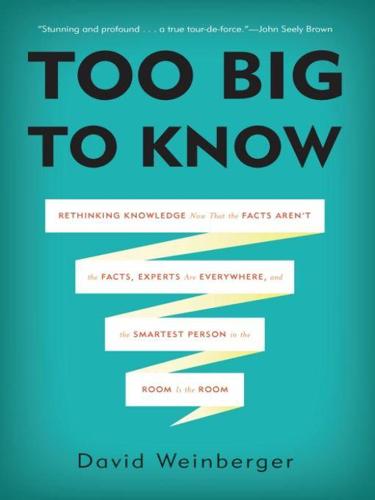
Too Big to Know: Rethinking Knowledge Now That the Facts Aren't the Facts, Experts Are Everywhere, and the Smartest Person in the Room Is the Room
by
David Weinberger
Published 14 Jul 2011
Let me stress that the old role of facts does not vanish from the Net. Scientists still establish facts as in the old days, thankfully. Policy debates continue to try to ground their conclusions in facts, although as always there are fierce arguments over which facts are relevant and what to make of them. And, importantly, the realm of commoditized facts—facts that a large community of belief accepts as not worth arguing about—is growing, as is access to those facts: Anyone with a Web browser can get a figure for the population of Pittsburgh that for almost all conceivable purposes will count as reliable enough. But push on a fact hard enough, and you’ll find someone contradicting it.
…
See Greece, ancient The Atlantic magazine Austin, John Autonomy Bacon, Francis Baillet, Adrien Balance in the media Barnacles, Darwin’s study of Basics of knowledge system Belief Internet challenging knowledge as subset of BellKor’s Pragmatic Chaos Ben Gharbia, Sami Bentham, Jeremy Berners-Lee, Tim The Best and the Brightest (Halberstam) Bible Binfield, Peter Biographies of living persons (BLPs) Biotechnology and Bioprocess Engineering journal Birkerts, Sven Birthers Blanchard, Heather Blane, Gilbert Blind shear ram Blogs information overload linking within PressThink.org scientific crowdsourcing Bonabeau, Eric Books and book publishing book-shaped thought information filtering information overload limitations of linked knowledge long-form thinking making the past present narrow focus and limitations of network-based expertise and On the Origin of Species Boston Globe Boundary-free information boyd, danah Boyle, Alan Bradley, Jean-Claude Brahe, Tycho Brand, Stewart Brilliant, Larry Bringsjord, Selmer Britain child labor laws contests crowdsourcing open government statistical support for Bentham’s ideas British Petroleum (BP) oil spill Brookings Institution Brown, Michael Burgess, Anthony Business sector consulting firms Primary Insight CALDOL (Center for the Advancement of Leader Development and Organizational Learning) CamClickr Canfield, Cass Carr, Nicholas The Case for Books (Darnton) The Case for Pluto (Boyle) Castilla-Rubio, Juan Carlos Cenkl, Michal Census, US Cerf, Bennett Challenger Space Shuttle Chameleon studies Change, Peter Channel capacity “Chaos in the Brickyard,” Chaucer, Geoffrey Chess expertise Children child labor parenting experts Chimney sweeps ChowHound.com Chronicle of Higher Education Cisco Citizen-experts Civil Rights Act (1964) Clark, Ryan Class systems: Malthusian theory of population growth Cleveland, Grover Cleveland, Harlan Climate change Clinical trials Clinton, Bill Coffee Coffee Shop of Reason Cognitive surplus Comenius, Jan Amos Commoditized facts Communities, knowledge flourishing in CompanyCommand.com Complexity Contests Cooley, Michael Cooper, Ashley Corruption of knowledge Creationism Creative Commons. See Science at Creative Commons Crick, Francis Crisis of knowledge CrisisCommons.org Crowds Crowdsourcing information amateur scientists British Parliamentarians’ use of expertise and leadership effectiveness Netflix contest open-notebook science Culture, information overload and Cybercascades Cyberchiefs: Autonomy and Authority in Online Tribes (O’Neil) Darnton, Robert DARPA (Defense Advanced Research Projects Agency) Darwin, Charles amateur scientists’ contributions barnacle studies Hunch.com and insight and leap of thought long-form thinking science and publishing Data accuracy of published data crowdsourcing scientific and medical information data commons evaluating metadata information and overaccumulation of scientific data scientific knowledge Data.gov Data-information-knowledge-wisdom (DIKW) hierarchy Davis, John Debian Decision-making advantages of networked corporate and government networked decision-making Debian community Dickover’s social solutions facing reality Wikipedia policy Defaults Democracy echo chambers hiding knowledge and increasing group polarization reason, truth, and knowledge Denney, Reuel Deolalikar, Vinay Derrida, Jacques Descartes, René Dialogue, exploring diversity through Dickens, Charles Dickover, Noel Diderot, Denis The Difference (Page) Discourses Diversity appropriate scoping decreasing intelligence echo chambers forking moderating negative effects of of expertise race and gender respectful conversations over DNA Dr.
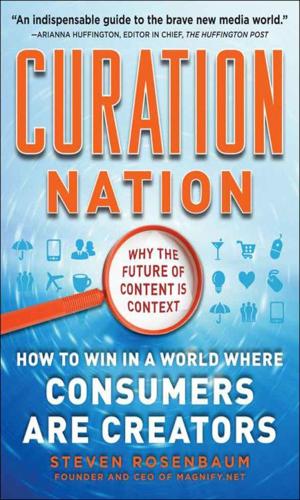
Curation Nation
by
Rosenbaum, Steven
Published 27 Jan 2011
He’s brewing better beer and wants to charge, but Huffington is giving away his brew. But he misses one key point: Huffington Post’s distribution system doesn’t need his content; there are plenty of other beer-makers happy to stock her shelves. Döpfner believes his content is unique, while Huffington sees it as little more than commoditized data. Huffington isn’t shy about the tsunami of change that’s coming to media as result of her linked economy. After all, putting your head in the sand won’t do anything other than leave you with an ear that is full of sand. According to Huffington, “The answer of the mainstream media can’t be to huff and puff to try to blow down news aggregators.
…
Scoble agrees with Cuban, but only up to a point: “Cuban is right that the value proposition is shifting, but to say that they are vampires is wrong. Flipboard adds a huge amount of value to me. And when people add value to my life, I don’t call them vampires.” It’s a stark disagreement, with curation fans and foes taking sides. But the argument is kind of moot. Content is going to become commoditized, and sites and publishers that have audience trust will need to become curators to remain relevant and keep the traffic and audience engagement they need to survive. Cuban can opine as much as he wants, but it won’t change what the world looks like in five years. But of course that doesn’t stop him.
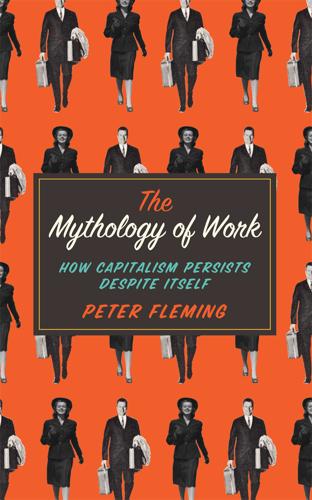
Mythology of Work: How Capitalism Persists Despite Itself
by
Peter Fleming
Published 14 Jun 2015
The repudiation of public goods and the Fordist labour–capital compact from the 1980s onwards heralded a new employment paradigm based upon pure marketization. However, if an organization applied the tenets of neoliberalism to the letter (i.e. unadulterated individual competition, private property, little ‘free’ cooperation and pure commoditization) the system would grind to a halt – especially the workplace. This is why the collective self-reliance of the workforce – often euphemized as flexibility – is so important to the exploitation process today. Here is another example, this time set amidst a newspaper exposé concerning the joys of being a small business owner: James no longer sees any distinction between his work and personal life, but sees this as a good thing, ‘It’s like a continuum, I just happen to be doing different activities at different times.’
…
Content is transposed through an indomitable formalization in which it becomes yet another empty gesture, marketing gimmick or simulated lifestyle with no real connection to social release other than that of the senses. It is in this way that the commodification process arrests the shared sympathies between content and form. However, there is one thing that cannot be commoditized: the commodity’s absence from its own generative form. That particular lack is beyond the commodity’s conditions of possibility. It is unable to recover any exchange value from that gaping non-presence. Here we arrive at the intractable limit of the commodity form. We can apply the same rationale to approaching the restorative limits of neoliberal co-optation, especially pertaining to criticism and the universal injunction to work.

Exponential Organizations: Why New Organizations Are Ten Times Better, Faster, and Cheaper Than Yours (And What to Do About It)
by
Salim Ismail
and
Yuri van Geest
Published 17 Oct 2014
Non-ownership, then, is the key to owning the future—except, of course, when it comes to scarce resources and assets. As noted above, Tesla owns its own factories and Amazon its own warehouses. When the asset in question is rare or extremely scarce, then ownership is a better option. But if your asset is information-based or commoditized at all, then accessing is better than possessing. Why Important? Dependencies or Prerequisites • Allows scalable products • Lowers marginal cost of supply • Removes having to manage assets • Increases agility • Abundance or easily available assets • Interfaces Engagement User engagement techniques, such as sweepstakes, quizzes, coupons, airline miles and loyalty cards have been around for a long time.
…
As Steve Forbes sees it, “You have to disrupt yourself or others will do it for you.” This applies to every market, geography and industry. A century ago, competition was mainly driven by production. Forty years ago, marketing became dominant. And now, in the Internet era, as production and marketing have been commoditized and democratized, it is all about ideas and ideals. Marketing has increasingly become product innovation—i.e., a good product sells itself. As young people and startups have plenty of ideals and ideas, the competitive advantage—as well as the field of competition—migrates towards their game and strong points.
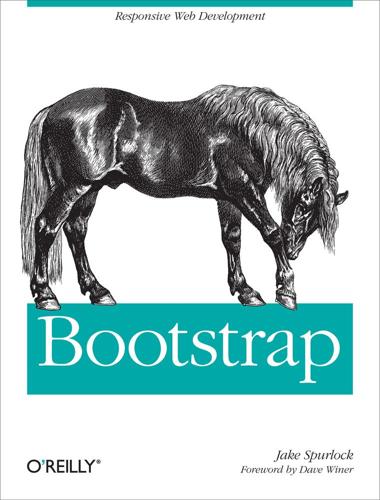
Bootstrap
by
Jake Spurlock
Published 8 May 2013
If there was only one way to create menus, then once a user learned how to use the menus of one app, he would already know how to use the menus of all others. The same is true with scrollbars, windows, the keyboard, the mouse, printing, and sound. The reason programmers didn’t like it, (and I was one of them) was that they took what we did and commoditized it. Further, there were limits to the one-size-fits-all approach. There were some apps that didn’t take to the UI standards very well. What to do about them? Well, you adapted, that’s what you did. This is a well-known technical process called factoring. If you see yourself doing something over and over, do it one more time really well, work on the API so it’s easy and flexible, and that’s it.
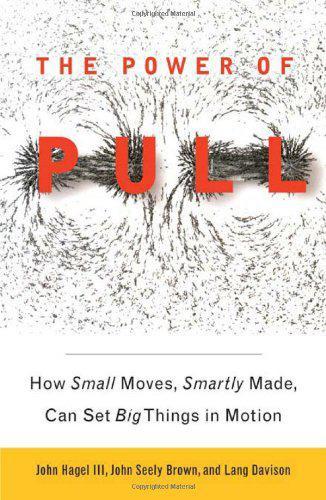
The Power of Pull: How Small Moves, Smartly Made, Can Set Big Things in Motion
by
John Hagel Iii
and
John Seely Brown
Published 12 Apr 2010
The innovation of each participant enhances the overall value of the platform, creating a larger pool of rewards that can be distributed among the participants. As pull platforms attract additional participants, they also encourage more specialization of capability so that diverse niches emerge and evolve, reducing head-to-head competition and commoditization. Positive-sum reward systems reduce the perceived need for political maneuvering, and the opportunity to connect on a peer-to-peer basis with resource owners diminishes the role of the center as a focus for resource allocation. Because pull platforms can be flexibly configured to serve the individual needs and interests of each participant, they provide much greater opportunity for intrinsic rewards as a key motivator for participation.
…
Second, participants must be clear about their ability to create viable niches that are truly differentiated and offer the opportunity for significant growth and profitability within the broader shaping ecosystems. As already mentioned, platforms can level a playing field and increase the potential for commoditization, so it is critical to determine how one can play on that level playing field and continue to offer differentiated value. Third, participants must foster a learning disposition. The power of shaping ecosystems lies in their ability to become fertile ground for extraordinary distributed innovation.

Places of the Heart: The Psychogeography of Everyday Life
by
Colin Ellard
Published 14 May 2015
At the same time that work in psychology was beginning to revolutionize ideas about how we understood the world given to our senses, other kinds of changes in economics, mostly related to industrialization and mass production, were changing the way in which workers were viewed. As employees on factory floors were becoming increasingly treated as commodities, so were their perceptual systems, and especially their ability to use these systems to complete routine tasks. In other words, the human ability to pay attention was also becoming commoditized. Indeed, though we may have mistakenly mythologized Thomas Edison as the inventor of the light bulb, his real genius lay in his understanding the vital connection between the organization of the human mind and the principles of mass production. Just as Edison understood the value of a nimble and plentiful power grid to large-scale industry, he could not have failed to notice that the proper application of scientific principles to the worker himself would yield productive advantages.
…
Indeed, some have argued that over the past century, wholesale changes to built settings throughout much of the world have been at play in which the spaces through which we roam have been bent roughly and forcefully into a shape conducive to promote the impulse to buy of the well-heeled and excluding those with little or nothing to trade. Our environment, including most of our public space has been commoditized. With the advent of more refined technology that can collect and store information about our habits, actions, and feelings both at the individual and the aggregate level, we have designed an environment that can follow us from place to place and invade our innermost selves. Wittingly or not, some of these environmental adaptations, built in the service of commerce, effectively jack into our brains, accessing primitive neural circuitry that evolved to help us cope with unstable environments; however, in an environment of plenty, they can make it difficult for us to deny a base impulse to consume much more than we need or to engage in risky, potentially calamitous behaviors.
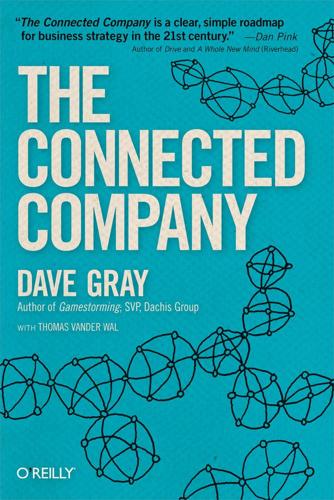
The Connected Company
by
Dave Gray
and
Thomas Vander Wal
Published 2 Dec 2014
A Wake-up Call at Starbucks In February 2007, Starbucks chairman Howard Schultz sat down to write a difficult memo. Schultz, always in the habit of visiting stores around the world, had noticed that the Starbucks experience was deteriorating. And in 2006, Starbucks’ legendary growth had started to slow. The amount of money customers were spending was starting to dip. In his 2007 memo, “The Commoditization of the Starbucks Experience,” Schultz laid out his concerns. Espresso machines, which increased efficiency, were too tall; they created a wall that blocked the line of sight between customers and baristas, a barrier to conversation and connection. Flavor-locked packaging, which guaranteed fresh roasted coffee in every cup, also made the stores more antiseptic, depriving them of their rich, flavorful, coffee aromas.
…
We divide the business—and the labor—in order to do work more efficiently. We put the software developers together so they can focus on software; we put the salespeople together so they can focus on selling and learn from each other; and so on. Sounds obvious, yes? And it’s very efficient. But as we move into a world where efficiency leads to commoditization, and where value will increasingly be driven by innovation, efficiency is no longer the overarching goal. How can you divide the labor in your organization to optimize for innovation rather than efficiency? The answer is to supplement divisional thinking with another approach: podular organization.
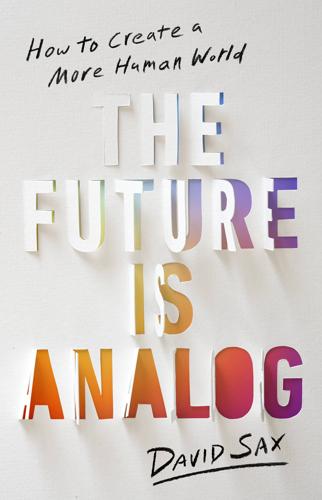
The Future Is Analog: How to Create a More Human World
by
David Sax
Published 15 Jan 2022
The real value in digital technology is behind the scenes, in inventory control and management, and the types of systems that allow me to see exactly what wetsuits a store like Surf Ontario has available in my size before I reach out to make my purchase. A lot of pundits predict that the future of analog commerce has to be an over-the-top sensory experience to differentiate itself from the commoditized alternative of Amazon and online, but Kondrat also feels this is a misread of what people really want. Does every clothing store need an in-house coffee counter or barbershop? No. Do they have to curate what she called a “museum of ice cream feel” or host events every Friday? Probably not. The pandemic gave us an appreciation of the richness of the existing analog shopping experience.
…
The turning point, Saunders said, was when the delivery services realized they could just take all the profit margins on each order, jack up their commission rates, hold on to the customer data, and get away with it because the restaurants were now too reliant on them to walk away. They’ve built the businesses on top of the restaurants, and not with the restaurants. The restaurants got commoditized. You can talk about breaking the promise. When it first started out, it was pitched as a partnership. A restaurant provided a brand, we provided the customers, and we could create more value for everybody. But at some point, the apps realized they could hide the customer from the restaurant. You become a toll keeper without further innovating, by holding back that customer data.
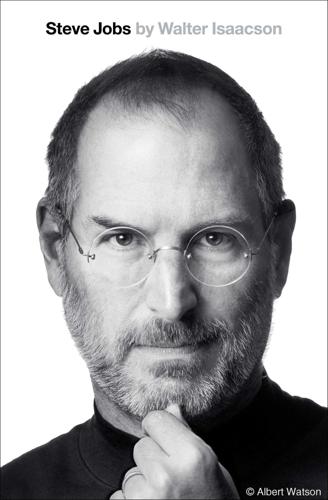
Steve Jobs
by
Walter Isaacson
Published 23 Oct 2011
Jobs would be the curator of Dylan for the digital age. But Andy Lack of Sony, which was Dylan’s label, was in no mood to make a deal without some serious concessions regarding iTunes. In addition, Lack felt the price was too low and would cheapen Dylan. “Bob is a national treasure,” said Lack, “and Steve wanted him on iTunes at a price that commoditized him.” It got to the heart of the problems that Lack and other record executives were having with Jobs: He was getting to set the price points, not them. So Lack said no. “Okay, then I will call Dylan directly,” Jobs said. But it was not the type of thing that Dylan ever dealt with, so it fell to his agent, Jeff Rosen, to sort things out.
…
In hindsight, some of Apple’s Macintosh designs may seem a bit too cute. But other computer makers were at the other extreme. It was an industry that you’d expect to be innovative, but instead it was dominated by cheaply designed generic boxes. After a few ill-conceived stabs at painting on blue colors and trying new shapes, companies such as Dell, Compaq, and HP commoditized computers by outsourcing manufacturing and competing on price. With its spunky designs and its pathbreaking applications like iTunes and iMovie, Apple was about the only place innovating. Intel Inside Apple’s innovations were more than skin-deep. Since 1994 it had been using a microprocessor, called the PowerPC, that was made by a partnership of IBM and Motorola.
…
“We spend lots of effort to make our platform better, and the developer doesn’t get any benefit if Adobe only works with functions that every platform has. So we said that we want developers to take advantage of our better features, so that their apps work better on our platform than they work on anybody else’s.” On that he was right. Losing the ability to differentiate Apple’s platforms—allowing them to become commoditized like HP and Dell machines—would have meant death for the company. There was, in addition, a more personal reason. Apple had invested in Adobe in 1985, and together the two companies had launched the desktop publishing revolution. “I helped put Adobe on the map,” Jobs claimed. In 1999, after he returned to Apple, he had asked Adobe to start making its video editing software and other products for the iMac and its new operating system, but Adobe refused.

Only Humans Need Apply: Winners and Losers in the Age of Smart Machines
by
Thomas H. Davenport
and
Julia Kirby
Published 23 May 2016
The technologies are maturing rapidly, and big vendors like IBM are signing deals and issuing press releases about them at a rapid rate. One or more of your organization’s competitors probably has a project under way. In some industries, like insurance (which is right up there with mining in its early adoption), automated decision-making is already becoming pervasive and commoditized. So it’s time for serious thinking above the level of the “one-off” application about what can be done with these tools, how people will work alongside them, and how to achieve the maximum level of organizational advantage from them. Throughout this book, we’ve laid the emphasis on equipping individual knowledge workers themselves to adjust to and prosper in a world of smart machines.
…
Rather, most companies will come around to augmentation as they begin to understand it is the only path to sustainable competitive advantage. That process might start as they recognize the self-defeating nature of replacing people with machines. In simplest terms, opting for an automation-oriented strategy means entering yourself in a race toward the zero-margin reality of commoditized work. If you’re using automation to do the same things your people were doing, only faster, chances are good that your competitors will follow suit. And vendors and consultants will be only too happy to provide automated solutions to the entire industry. You will end up offering the same products and services as your competitors.

The Inevitable: Understanding the 12 Technological Forces That Will Shape Our Future
by
Kevin Kelly
Published 6 Jun 2016
Our monkey mind is cheaply hijacked. The remaining scarcity in an abundant society is the type of attention that is not derived or focused on commodities. The only things that are increasing in cost while everything else heads to zero are human experiences—which cannot be copied. Everything else becomes commoditized and filterable. The value of experience is rising. Luxury entertainment is increasing 6.5 percent annually. Spending at restaurants and bars increased 9 percent in 2015 alone. The price of the average concert ticket has increased by nearly 400 percent from 1981 to 2012. Ditto for the price of health care in the United States.
…
We’ll listen to the suggestions and recommendations that are generated by our own behavior in order to hear, to see who we are. The hundred million lines of code running on the million servers of the intercloud are filtering, filtering, filtering, helping us to distill ourselves to a unique point, to optimize our personality. The fears that technology makes us more uniform, more commoditized are incorrect. The more we are personalized, the easier it is for the filters because we become distinct, an actualized distinction they can reckon with. At its heart, the modern economy runs on distinction and the power of differences—which can be accentuated by filters and technology. We can use the mass filtering that is coming to sharpen who we are, for the personalization of our own person.
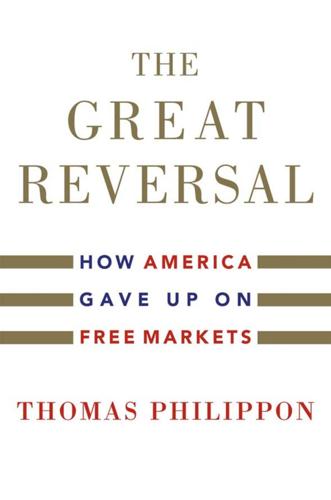
The Great Reversal: How America Gave Up on Free Markets
by
Thomas Philippon
Published 29 Oct 2019
This led to a sharp debate among antitrust experts.f Competition can take many forms, making IO a complicated field in economics. Moreover, as the economy develops, the variety of goods and services expands. A bit more than a century ago, Standard Oil produced a commoditized product, and the antitrust case was relatively simple. In most modern cases of antitrust, however, the product is not commoditized, and market power depends on a host of forces beyond the simple restriction of supply. In the telecom industry, for instance, competition takes place not only with prices but also with the bundling of services (phone, internet, TV) and the quality of the components.

Boom: Bubbles and the End of Stagnation
by
Byrne Hobart
and
Tobias Huber
Published 29 Oct 2024
Japan’s powerful industrial conglomerates, backed by banks and guided by the country’s technocrats, were willing to lose large sums to gain market share. By the 1980s, Japan was producing more semiconductors than the US. This eventually led to a trade deal that protected US-based manufacturers in some areas while leaving the more commoditized memory chip market open to competition. Even as Japanese companies expanded their presence in chips, they faced new competition from Korean and Taiwanese manufacturers. In Korea, firms like Samsung and Hyundai committed to investing vast sums in chip development. Echoing Fairchild and Intel’s management processes, Hyundai sometimes had two separate teams work on different implementations when faced with multiple approaches to producing the same product.
…
234 TSMC’s approach borrowed some elements from the Fairchild model. While TSMC didn’t design chips, it did recognize that making chip design easier would be a competitive advantage, so TSMC worked closely with chip designers to ensure there was plenty of demand for its foundries. The company also strove to commoditize the design business—if there were more companies inventing new chips and fewer companies manufacturing them, they reasoned, the manufacturers would be able to set their own price. TSMC’s strategy effectively redefined the market, creating a separation between the capital-intensive business of fabricating chips and the more asset-light business of designing them, a model that was ultimately embraced even by Intel.

Adaptive Markets: Financial Evolution at the Speed of Thought
by
Andrew W. Lo
Published 3 Apr 2017
For industries with Knightian risk, where the random element of the business could be measured, it would be measured, and the forces of competition would eventually drive excess profits down to zero as that particular business became commoditized. However, for industries facing Knightian uncertainty—for example, industries using completely new and unproven technologies—there’s no easy way to commoditize the business since, by definition, the randomness can’t be quantified. These unknown unknowns make most of us withdraw from the game. But these are also the circumstances in which billionaires are made. Mark Zuckerberg and Facebook come to mind.
…
Should I be paying hedge fund fees to my portfolio manager, or can I get the same investment returns through a low-cost, passive index mutual fund? In other words, is it alpha—hard to come by, expensive, and constrained by capacity—or beta? The answer from the Adaptive Markets Hypothesis is that, over time, competition causes alpha to become commoditized to a level where the returns are just enough to compensate investors for the risks associated with the activity. In other words, alpha will eventually either disappear entirely, or become beta—less constrained, easy to come by, and cheap. The search for alpha is therefore an ongoing challenge, not a static one.

Seeing Like a State: How Certain Schemes to Improve the Human Condition Have Failed
by
James C. Scott
Published 8 Feb 1999
To reinforce his case, he cited the experience of Massachusetts, where actual landholdings were 10 percent to 100 percent greater than what had been granted by deed.1°° Not only did the regularity of the grid create legibility for the taxing authority, but it was a convenient and cheap way to package land and market it in homogeneous units. The grid facilitated the commoditization of land as much as the calculation of taxes and boundaries. Administratively, it was also disarmingly simple. Land could be registered and titled from a distance by someone who possessed virtually no local knowledge.10' Once it was in place, the scheme had some of the impersonal, mechanical logic of the foresters' tables.
…
For a remarkably thoughtful and thorough examination of how the colonial legal code transformed land-dispute settlement, land tenure, and social structure, see Sally Falk Moore, Social Facts and Fabrications: "Customary" Law on Mount Kilimanjaro, 1880-1980 (Cambridge: Cambridge University Press, 1986). 94. The combination of a complete cadastral register, freehold tenure, and a national market in land makes for a level of legibility that is as advantageous to the land speculator as it is to the tax collector. Commoditization in general, by denom inating all goods and services according to a common currency, makes for what Tilly has called the "visibility [of] a commercial economy." He writes, "In an economy where only a small share of goods and services are bought and sold, a number of conditions prevail: collectors of revenue are unable to observe or evaluate resources with any accuracy, [and] many people have claims on any particular resource" (Coercion, Capital, and European States, pp. 89, 85). 95.
…
Porter shows convincingly how "mechanical objectivity" has served as a means for bureaucracies, especially in democracies where expert judgment and expertise are always suspected of masking self-serving motives, to create an impersonal set of decision rules at once seemingly democratic and neutral. 102. Quoted in Kain and Biagent, The Cadastral Map, p. 320. 103. Students of these matters will perhaps wonder why I have not dealt with the simplification of time. The rationalization and commoditization of linear time in work and administration do indeed form a companion story, which I did not take up here because it would have made this chapter too long and because it has already been imaginatively treated by, among others, E. P. Thompson in "Time, Work, Discipline, and Industrial Capitalism," Past and Present 38 (December 1967).

The Art of UNIX Programming
by
Eric S. Raymond
Published 22 Sep 2003
One was to seek advantage by product differentiation — a tactic which resulted in the interfaces of different Unixes diverging. This threw away cross-platform compatibility and fragmented the Unix market. The other, subtler error was to behave as if personal computers and Microsoft were irrelevant to Unix's prospects. Sun Microsystems failed to see that commoditized PCs would inevitably become an attack on its workstation market from below. AT&T, fixated on minicomputers and mainframes, tried several different strategies to become a major player in computers, and badly botched all of them. A dozen small companies formed to support Unix on PCs; all were underfunded, focused on selling to developers and engineers, and never aimed at the business and home market that Microsoft was targeting.
…
The economist Clayton Christensen calls this disruptive technology and showed in The Innovator's Dilemma [Christensen] how this happened with disk drives, steam shovels, and motorcycles. We saw it happen as minicomputers displaced mainframes, workstations and servers replaced minis, and commodity Intel machines replaced workstations and servers. The open-source movement is winning by commoditizing software. To prosper, Unix needs to maintain the knack of co-opting the cheap plastic solution rather than trying to fight it. Finally, the old-school Unix community failed in its efforts to be “professional” by welcoming in all the command machinery of conventional corporate organization, finance, and marketing.
…
One reason VMS survived long enough to merit inclusion here as a case study is that it was successfully ported from its original VAX hardware to the Alpha processor (and in 2003 is being ported from Alpha to Itanium). MacOS successfully made the jump from the Motorola 68000 to PowerPC chips in the late 1980s. Microsoft Windows escaped this problem by being in the right place when commoditization flattened the market for general-purpose computers into a PC monoculture. From 1980 on, another particular weakness continually reemerges as a theme in different systems that Unix either steamrollered or outlasted: an inability to support networking gracefully. In a world of pervasive networking, even an operating system designed for single-user use needs multiuser capability (multiple privilege groups) — because without that, any network transaction that can trick a user into running malicious code will subvert the entire system (Windows macro viruses are only the tip of this iceberg).

Pragmatic Guide to JavaScript
by
Christophe Porteneuve
Published 15 Nov 2010
On the heels of that phenomenon, virtual machines are getting a place of honor in any serious web developer’s toolkit. VM software is cheap, even sometimes free, and options are quite numerous: Parallels Desktop7 (on OS X, Windows, and Linux), VMware Fusion8 (on OSX) or VMware Workstation9 (on Windows), Sun’s VirtualBox10 (on just about any major OS), and many more still. This commoditization of virtual machines lets us set up separate VMs to replicate all the browser situations we need to test for: IE6 to IE9, various versions of Safari, Chrome, Firefox, Opera, and so on. Most browsers will not let you run multiple versions of them on a single OS, or if they do, you will not get 100 percent identical behavior with that of said browser being the only version installed (case in point: the third-party MultipleIE package on Windows XP).
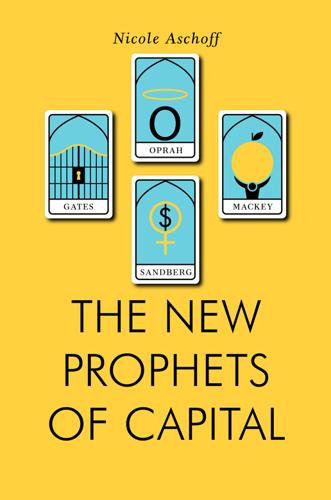
The New Prophets of Capital
by
Nicole Aschoff
Published 10 Mar 2015
So the foundation supplies the demand for the pharmaceutical companies, giving the companies the incentive to supply the vaccines. In doing so, health care becomes a commodity with the hope that in the long run the foundation won’t have to prop up the demand side and people will be able to buy the vaccines themselves. The problem is defined as a lack of commoditization, and the solution is to create a capitalist health care market. But should health care be a commodity that people buy and sell in the market? In a wealthy country like the United States, where health care is a commodity, people buy the things they need (like visits to the doctor and medicine) to keep them healthy, and the state steps in and buys certain things (like vaccines) for people who can’t buy them.

Robot Futures
by
Illah Reza Nourbakhsh
Published 1 Mar 2013
Robotics has an important role to play in the future of environmental street science because it can create tools that enable communities to collect data comprehensively, visualize it convincingly, and advocate more effectively. Low-cost air quality sensors, water quality data loggers, and health monitoring tools are already in our technology development pipeline. As citizens’ ability to measure, map, store, and display environmental degradation becomes commoditized cheaply, communities can adopt and observe their own land, air, and water in a new technologically data-rich way. They can monitor their ecosystems comprehensively, with more frequency and spatial resolution, screen for outliers, demonstrate statistically significant evidence of causality, and make strong cases for business and regulatory change based on compelling evidence.

Digital Wars: Apple, Google, Microsoft and the Battle for the Internet
by
Charles Arthur
Published 3 Mar 2012
Instead, it would be the customers that would choose the network, based on the availability of a phone. That was what Sigman had hoped the iPhone would do. But he wasn’t quite prepared for how it would work out. Apple was about to do to the networks what it had done to the record labels: persuade them that its business model (commoditize the data, profit on the hardware) wasn’t a threat, that it would only ever be a small player, that the upside was big but the downside of failure (again) would be carried by Apple. And then disrupt their businesses entirely. When the iPhone finally appeared in the summer, reviewers compared it to their checklist of technical specifications and found it wanting.
…
Its model immediately appealed: no licensing cost, no certifying how many handsets had been made. Make a reference device, get it approved by Google, and they could make as many as they could sell to retailers, carriers or customers. The source code was available too, so they could modify the interface, and add or subtract as they wished to achieve differentiation. Google was commoditizing what Microsoft charged for. Even as Ballmer was speaking, carriers and handset makers were edging away from Windows Mobile. Not that they had ever really embraced it before. Microsoft itself let a small cat out of the bag in February 2009, when Andy Lees told Mobile World Congress that Windows Mobile had sold more than 50 million licences; and then HTC’s chief executive Peter Chou joined him on stage and said that HTC had sold more than 40 million Windows Mobile phones worldwide.

A Concise History of Modern India (Cambridge Concise Histories)
by
Barbara D. Metcalf
and
Thomas R. Metcalf
Published 27 Sep 2006
Instead, in a dramatic turn in Britain’s economic relationship with India, it used the province’s internal tax revenues to finance the purchase of the goods it annually shipped to England. Bengal was, Clive assured the governor of Madras, ‘an inexhaustible fund of riches’. The emergence of regional states and the East India Company 53 Nawabi sovereighty was most visibly demeaned as the British took over for themselves the trade in a range of valuable commodites, notably salt, betel nut, tobacco, and saltpetre. These, as Sudipta Sen points out, were the ‘Nawab’s prestige goods’ endowed with the signs of the ruler’s authority. In 1760, the hapless Mir Jafar was replaced, following another round of presents, by Mir Kasim. Unwilling to countenance the continuing British plunder of his kingdom, Mir Kasim sought to retrieve his authority over at least the northern part of Bengal and adjacent Bihar.
…
As the new century proceeded, British private merchants, spurred on by the industrial revolution and the hope of new markets in the East, challenged the Company’s trade monopoly. A responsive Parliament ended its Indian monopoly in 1813, and that to China in 1833. At the same time the balance of trade between Britain and India began to shift. By 1815 Indian textiles and other artisanal commodites could no longer compete in Britain, or on the world market, with British machine-made goods. Within a few years British textiles began to penetrate the Indian market, initiating the development of a classically ‘colonial’ economy, importing manufactures and exporting raw materials, that was to last for a century, until the 1920s.
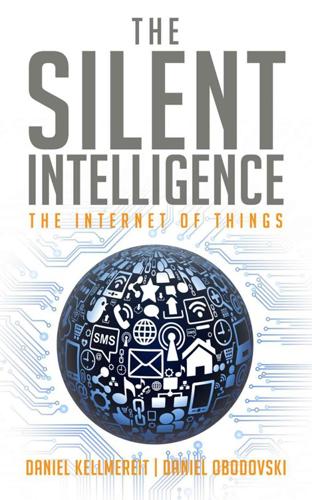
The Silent Intelligence: The Internet of Things
by
Daniel Kellmereit
and
Daniel Obodovski
Published 19 Sep 2013
When looking at key players, their positioning, and potential profit pools in the near future, it is important to understand each player’s unique position in the market, potential external effects on the supply and demand side, new players that are entering the market, and potential disruption that may change the overall industry dynamic or allow for alternative approaches and solutions that have not been feasible before. Each of the players in the value chain has a chance to improve their competitive positioning by building a unique offering. Commoditization will happen where there is lots of competition and no differentiation. Applying these principles to the M2M market, one can assume the largest profit pools are expected in the hardware, solution design, and data analytics spaces. Why would that be? Because although there’s a common perception that it’s hard to make money with hardware, we believe that in M2M there are still a lot of opportunities to reap benefits from hardware.

The Ascent of Money: A Financial History of the World
by
Niall Ferguson
Published 13 Nov 2007
For over a hundred years, Communists and anarchists - not to mention some extreme reactionaries, religious fundamentalists and hippies - have dreamt of just that. According to Friedrich Engels and Karl Marx, money was merely an instrument of capitalist exploitation, replacing all human relationships, even those within the family, with the callous ‘cash nexus’. As Marx later sought to demonstrate in Capital, money was commoditized labour, the surplus generated by honest toil, appropriated and then ‘reified’ in order to satisfy the capitalist class’s insatiable lust for accumulation. Such notions die hard. As recently as the 1970s, some European Communists were still yearning for a moneyless world, as in this Utopian effusion from the Socialist Standard: Money will disappear . . .
…
Marshall Plan 305-7 Martin, William McChesney Jr 168 Marx, Groucho 161 Marx, Karl/ Marxism 17 Marylebone Workhouse 199-203 Mary Poppins 7 Massachusetts Affordable Housing Alliance 266 Massys, Quentin 43 Masulipatnam 130 mathematics: applied to finance and insurance 3 Chinese 32 history of 30-32 Oriental 3 Matheson, James 289-92 Medicare and Medicaid 211 Medici family 3 diversification 44-6 libro segreto 44-5 Medici, Cosimo (C15) 42 Medici, Duke Cosimo de’ (C16) 41 Medici, Giovanni di Bicci de’ 42 Medici, Lorenzo the Magnificent 46-7 Mediterranean 24-5 Memphis 59-60 mercenaries 69-71 merchant banks 53 Merchant of Venice see Shakespeare, William mergers and acquisitions 351 Meriwether, John 322 Merrill Lynch 272 Merton, Robert 320 Mesopotamia/Babylonia 27-31 metals, link with money 1 Mexico 25 Miami 264 Michelet, Jules 90 micro-businesses 280 microfinance 13 Middle East 135 sovereign wealth funds 9 war in 6 migration 286 Milan 70 millionaires 146 Minsky, Hyman 164 MIRAS see Mortgate Interest Relief At Source misconduct see fraud Mishkin, Frederic 342 Mississippi 90. see also bubbles; Katrina Mississippi Company (former Company of the Indies, Compagnie des Indes) 142-57 Mohamad, Mahathir bin 314 Moivre, Abraham de 189 Moluccas 130-31 monarchs see royal funding monetary policy: and decline in asset prices 163 and domestic objectives 306-7 and mortgage crisis 266 transformation of 116 monetary theory 100-101 money: criteria for 23-4 driving force behind progress 342 as god 85 market 54 potential excess of 64 prejudices against 1-2 as representation of: belief and trust 29-30; commoditized labour 17; relationship between debtor and creditor 341 tokens as 27 as total of specific liabilities incurred by banks 51 see also coins; electronic money; paper money moneylenders: hostility to 2 illegal see loan sharks vulnerability to defaults 37-8 moneyless societies 17-19 money supply: definitions 50-51 increasing 26 and war 100 ‘mono-line’ financial services 353 monopolies 135 Monopoly (game) 230-32 Montagu, Lady Mary Wortley 146 Moody’s 268 Moore, Deborah 196n.

Dawn of the New Everything: Encounters With Reality and Virtual Reality
by
Jaron Lanier
Published 21 Nov 2017
The new utopia was to be one in which music that had previously only been legally copied with the payment of a royalty would now be copied “for free.” I felt that you can’t have privacy without also forging a new form of private property in the information space. That’s what private property is for. There has to be space around a person for a person to be a person. If everything you share at all is suddenly commoditized by whoever has the biggest, baddest network computer, then you’re doomed to be a spied-upon information serf. The promotion of abstract rights without economic rights would be nothing but a cruel trick we’d play on those who would be left behind. I argued that making music “free” would just result in no one being able to make a living when automation would eventually advance.
…
Please keep the following in mind when you read “think pieces” about how robots deserve empathy: Tech writers have a bad habit of articulating “big ideas” that happen to serve the interests of the big tech companies at a given moment. There were a lot of pieces about the evils of copyright when Google was making an unprecedented instant fortune by plowing over copyright. Similarly, a flood of “radical” think pieces praising the end of privacy and the value of collectivity appeared when Facebook was first commoditizing and cornering the market on digital personal identity.14 “If, well, when giant robots or superintelligent swarms of nanoparticles decide you’re not worth keeping around, it won’t matter what you think. You’ll be snuffed out. Then you won’t be able to go on about whether they’re real or not.” “Now you’re pissing me off.
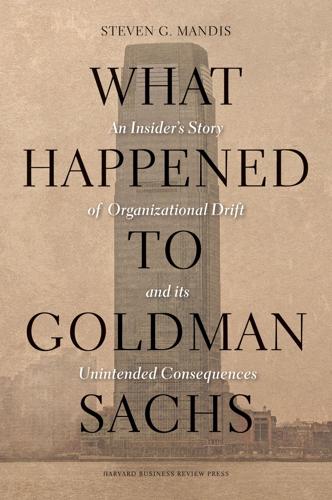
What Happened to Goldman Sachs: An Insider's Story of Organizational Drift and Its Unintended Consequences
by
Steven G. Mandis
Published 9 Sep 2013
Morgan or Citigroup would tell their clients, “If you want a corporate loan, you have to hire our M&A bankers.” This bundling of low-margin commercial banking product offerings (such as revolving lines of credit) with higher-margin investment banking products (such as M&A work and equity underwriting) threatened Goldman’s most lucrative businesses. In short, the investment banking business was becoming commoditized. In addition, clients put a premium on retail distribution—that is, selling securities to the general public, who were willing to pay ridiculous prices for tech stocks to cash in on the technology boom. Even before the repeal of Glass–Steagall, in 1997, Morgan Stanley had responded to this pressure by merging with Dean Witter Reynolds.
…
The firm’s expertise is phenomenal, again benefiting by pulling information from various people, geographies, and areas. In my interviews with clients, many said the quality of talent on Wall Street had declined overall, Goldman included, perhaps because many clients themselves have become specialized in their knowledge and technology has commoditized information and the business in many ways. There is also strong competition for the best talent. Many talented individuals interested in finance go to private equity firms and hedge funds, which offer attractive opportunities.69 Many smart people are going into technology or other fields. But clients felt that Goldman would probably be considered the best alternative generally, not necessarily in every area of specialization, if one is interested in banking or wants training and credentials.
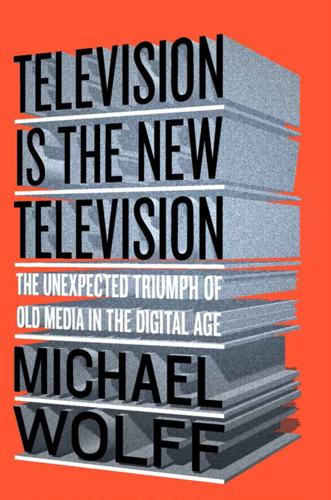
Television Is the New Television: The Unexpected Triumph of Old Media in the Digital Age
by
Michael Wolff
Published 22 Jun 2015
In some sense, the advances of programmatic buying have served to separate the new and efficient—with all its message control and accountability—from the old hat and clumsy, television’s old-boy system of backroom deals. And yet what it also does, in some larger and ironic way, is to further define the dual advertising markets: the downscale market, of commoditized digital audience and junk television, and an upscale, luxury, exclusive television market. The former is bought largely as a pricing function—and with downward price pressure in an ever-expanding market. The latter is a product of limited supply with ever-rising prices. And that, to a great extent, helps answer that inexplicable and frustrating question for digital people as to why television advertising hasn’t followed the American audience to its digital destinations—digital has defined itself as lower-end junk. 10 THE ADVERTISING CURVE The ultimate end of the media world (or, broader, the modern commercial world) as we know it probably began more recently than with the advent of the Internet.

The End of Work: Why Your Passion Can Become Your Job
by
John Tamny
Published 6 May 2018
When Vince Gilligan brought Breaking Bad to HBO, a network known for high-quality television, they “never gave [him] an answer of any kind.”29 FX, likewise known for its critically acclaimed shows (Nip/Tuck, Justified, and The Americans, to name three), passed on it as well, opting instead for the eminently forgettable Dirt.30 The emergence of these cable networks is a result of the commoditization of television itself. With economic growth, former luxuries become everyday consumer products as entrepreneurs and businesses take what’s expensive and figure out ways to make it cheap. When Roger Moore was a kid, televisions were exotic. By the time Rob Lowe began acting professionally, they were in every home, but often only one, which the whole family gathered around in the living room.
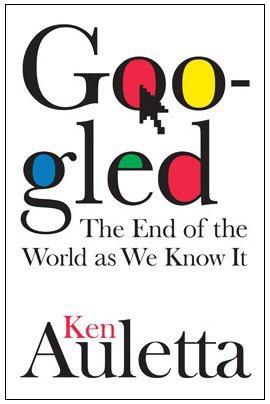
Googled: The End of the World as We Know It
by
Ken Auletta
Published 1 Jan 2009
But as Jim Kennedy, the AP’s vice president of strategic planning, described it, Google News was sifting news stories, “making copies and taking pieces of this content and posting it as if it were their own news.” Google claimed it was fair use, said Kennedy, since it was posting only part of the article and providing a link. Google said it was both creating reader traffic and promotional value for the news sites. The AP, which is a wholesaler of news, claimed Google was commoditizing their content and insisted on a license agreement. Google resisted, and the AP considered bringing a lawsuit. Did Tom Curley, the CEO of the AP, think Google was naive? “No, there is nothing naive about these guys,” he said. “They have a very, very aggressive legal view. They have pushed the envelope....
…
This was a direct assault on the telephone companies, which policed what software applications could be displayed for consumers. Rubin likened the current mobile market to what happened in the early eighties to PCs. Original hardware makers, such as Wang or DEC, were supplanted by IBM, which in turn was supplanted by the manufacturers of clones. As the hardware became commoditized, the price of the PC dropped. At the same time, the cost of the software rose, because a single company, Microsoft, controlled it. “Unless there is a vendor-independent software solution,” said Rubin, expressing the ethos not just of Google but of the Valley culture at large, “the consumer isn’t going to be well served.

Blockchain Revolution: How the Technology Behind Bitcoin Is Changing Money, Business, and the World
by
Don Tapscott
and
Alex Tapscott
Published 9 May 2016
It’s a shame that this term has somewhat lost that meaning.” To him, “sharing is the main way that humans and members of other species have conducted exchanges with one another for millions of years, beginning with the act of conception itself. While some Internet companies have facilitated genuine sharing, others have appropriated and commoditized the social relationships and vocabulary of sharing.”30 Most so-called sharing economy companies are really service aggregators. They aggregate the willingness of suppliers to sell their excess capacity (cars, equipment, vacant rooms, handyman skills) through a centralized platform and then resell them, all while collecting valuable data for further commercial exploitation.
…
In a world where every penny counts, users should be able to pay back loans, withdraw funds, and save in tiny increments, all of which was far more challenging in a preblockchain world. They should also be able to do it instantly and efficiently, given that despite abject poverty in many parts of the world, cell phone penetration and Internet connectivity are becoming commoditized. SAFE AS HOUSES? THE ROAD TO ASSET OWNERSHIP Land title registration is what Hernando de Soto referred to as a nonmarketed transaction, an economic exchange generally involving a local government. Nonmarketed transaction costs include the resources wasted by waiting in line, tracking down ownership, completing and filing paperwork, cutting through red tape, resolving disputes, greasing the palms of officials and inspectors, and so on.57 These costs are rampant in poor economies where systems are weak and government officials are known to behave without integrity.
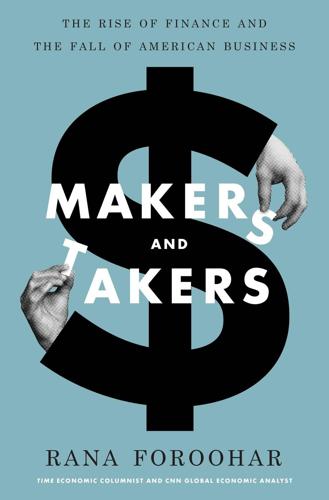
Makers and Takers: The Rise of Finance and the Fall of American Business
by
Rana Foroohar
Published 16 May 2016
They learn complex mathematical models and ratios, but these are in many cases skills that are becoming somewhat devalued. As Nitin Nohria, dean of the Harvard Business School, admits, “anyone can teach you how to read a P&L [profit-and-loss statement] or value a derivative; those kinds of things have become commoditized.”12 The bigger challenge is to teach America’s future business leaders how to be curious, humane, and moral; how to think outside the box about problems like funding the research for a new blockbuster drug. And how to be strong enough to stand up to Wall Street when it demands the opposite. Sadly, most business schools in America aren’t doing that.
…
“At the time, all the [public] battery makers were worrying about Korean competition,” which prompted outsourcing and cost cutting. Meanwhile, East Penn, which was founded in 1946 and is still family owned, kept plowing money back into the business and is today the world’s largest single-site, independent battery maker—proof that the United States actually can lead in manufacturing, even on commoditized products, with the right incentive structure. “The family lived well, but their home wasn’t the Taj Mahal,” says Lutz. “They said, hey, we’ve got enough money for a good life, and the rest of it goes back into the business. If they have a couple of quarters where they don’t make any money because they are investing so heavily, so what?”
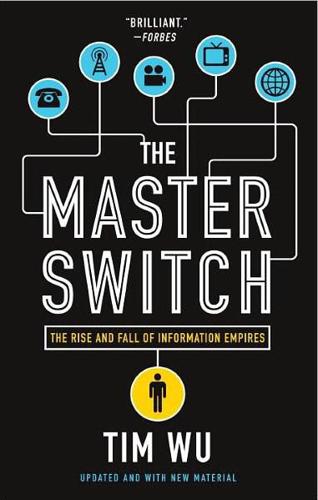
The Master Switch: The Rise and Fall of Information Empires
by
Tim Wu
Published 2 Nov 2010
For consumers, the technical novelty can wear thin, giving way to various kinds of dissatisfaction with the quality of content (which may tend toward the chaotic and the vulgar) and the reliability or security of service. From industry’s perspective, the invention may inspire other dissatisfactions: a threat to the revenues of existing information channels that the new technology makes less essential, if not obsolete; a difficulty commoditizing (i.e., making a salable product out of) the technology’s potential; or too much variation in standards or protocols of use to allow one to market a high quality product that will answer the consumers’ dissatisfactions. When these problems reach a critical mass, and a lost potential for substantial gain is evident, the market’s invisible hand waves in some great mogul like Vail or band of them who promise a more orderly and efficient regime for the betterment of all users.
…
Scholars such as Harvard’s Yochai Benkler, Eben Moglen, and many others have devoted considerable attention to understanding what moves men and women to produce and share information for the sake of some abstract good. Of course the human urge to speak, create, build things, and otherwise express oneself for its own sake, without expectation of financial reward, is hardly new. In an age that has radically commoditized content, it is well to remember that Homer had no expectation of royalties. Nor has the fact of payment for many types of information—books, newspapers, music—extinguished the will to communicate unremunerated. Well before the Internet, in a world without paid downloads, before even commercial television, the same urge to tinker and to connect with others for the pure good of it gave birth to what we now call broadcasting and practically defined the medium in its early years.

How I Became a Quant: Insights From 25 of Wall Street's Elite
by
Richard R. Lindsey
and
Barry Schachter
Published 30 Jun 2007
Although the new techniques were interesting to learn, my primary motivation was to answer the challenging questions that were only partially being addressed by the industry at the time. The Great Strategy Debate: From the 1990s to Today In parallel with the development of the derivatives market in the early 1990s, many traditional commercial banks were faced with a fundamental strategic issue: After watching the corporate loan market become commoditized due to intense competition and disintermediation in the capital markets, many commercial banks seriously considered changing their strategic focus. Some leaders such as Bankers Trust and JP Morgan underwent a fundamental transformation from a commercial bank to trading institutions. As with any transformation of this magnitude, the process was difficult and required strong commitment by senior management.
…
I then applied the BHB methodology, and it revealed that asset allocation determined 100 percent of performance and security selection determined none of it—the exact opposite of the truth.15 JWPR007-Lindsey May 7, 2007 17:15 Mark Kritzman 261 The Future for Quants Quantitative analysis has advanced from the fringes of the investment management profession to the mainstream and is well on the way to becoming the dominant paradigm of the investment industry. Owing to its rise in popularity, however, mathematical proficiency will not be sufficient to guarantee a successful career as a quant, especially as these skills become more commoditized. The successful quant will combine mathematical proficiency with an appreciation for economic and financial theory, and he or she must know which questions are really important. JWPR007-Lindsey May 7, 2007 17:15 262 JWPR007-Lindsey May 28, 2007 15:46 Chapter 19 Bruce I. Jacobs and Kenneth N.

The Meat Racket: The Secret Takeover of America's Food Business
by
Christopher Leonard
Published 18 Feb 2014
And then there is all the unlabeled meat that Tyson floods into the U.S. food system every day: the meat served in cafeterias, nursing homes, fast-food restaurants, and suburban eateries where more and more Americans eat their meals. There is a very good chance any of the meat purchased in these places was made by Tyson. Even if Tyson did not produce a given piece of meat, the consumer is really only picking between different versions of the same commoditized beef, chicken, and pork that is produced through a system Tyson pioneered. Tyson’s few competitors have resorted to imitating the company’s business model just to survive. This book aims to explore the vast, hidden territory between the remote farms and towns like Waldron where Tyson raises millions of animals, and the final point of contact where consumers buy the company’s meat.
…
He was looking to ensure a steady flow of cattle into the front door of the modern megaplant. This was how beef became more like chicken: more standardized, less specialized. There wasn’t as much difference between the best steak and the lowest quality hamburger. The quality of meat was getting pushed toward the middle, toward the commoditized “good-enough” quality of poultry. Tim Klein disputed Carson’s interpretation of his comment. Klein didn’t mean to say that quality didn’t matter. For him, the main point was that Carson was paying too much for cattle. National’s analysis was showing that Carson’s cattle weren’t bringing enough extra value to justify the higher price he paid.

Competition Overdose: How Free Market Mythology Transformed Us From Citizen Kings to Market Servants
by
Maurice E. Stucke
and
Ariel Ezrachi
Published 14 May 2020
Cost of zero-sum competition in crowding out other ethical, moral, and social norms If competition increases overall welfare, as the competition ideologues insist, should anything be off-limits to competition? Under the logic of competition ideology, the answer is no. But what about such offerings as death bonds—what Newsweek called “Wall Street’s most macabre investment scheme yet”? Death bonds, as described by Rachel Heng in an essay about the commoditization of life and death, are “financial products that allow investors to bet on people’s life spans through speculating when their life insurance policies will pay out.”50 The faster people die, the more money the investors make. Is this the kind of profiteering we want to encourage in our society?
…
The dynamic is comparable to the habituation that occurs in drug and alcohol abuse, where once we adapt to a certain level of consumption, our satisfaction diminishes and we want more. Such a competition ultimately has no finish line or satisfactory resting place.62 To paraphrase T. S. Eliot, the “End of the endless / Journey to no end” competition can be found only in death.63 Rather than liberate us, this zero-sum competition commoditizes us.64 The more we are primed to believe in its importance, the less we understand about what will really bring us greater well-being. Numerous studies of life satisfaction tell us that beyond a certain minimum required to provide for the basics of food, shelter, and health, there is not much correlation between income and happiness.

Masters of Management: How the Business Gurus and Their Ideas Have Changed the World—for Better and for Worse
by
Adrian Wooldridge
Published 29 Nov 2011
Workers are always in danger of losing their jobs, companies of losing their markets, and society of losing the glue that holds it together. The terrific deal has replaced the ethic of loyalty with the “logic of disloyalty.”13 Workers have to market themselves in order to secure the next job. Companies have to slim themselves in order to avoid obsolescence by elephantiasis. And communities have to market themselves—and, in effect, commoditize themselves—in order to attract residents and businesses. In the age of the terrific deal, economies of attention replace economies of scale as the currency of business success. What matters is the ability to attract people’s attention and then to create the “stickiness” that is the closest thing the modern world has to loyalty.
…
The debate about the merits of size is a complicated one, but it is clear that globalization frequently makes it easer for small companies to spread their wings. Small companies are finding it easier to purchase computer power (thanks to Moore’s law) or to borrow serious money (thanks to the deregulation of the banks) or to learn how to manage themselves better (thanks in part to the commoditization of management ideas). Big companies are finding some of their old defenses crumbling, such as their expensively cultivated relations with governments or their long-nurtured knowledge of local regulatory quirks. Ghemawat calculates that the level of concentration in eleven key industries, including the capital-intensive car industry, has actually fallen since the late 1990s.9 At the same time, closer inspection reveals that multinationals are often much less multinational than they seem.
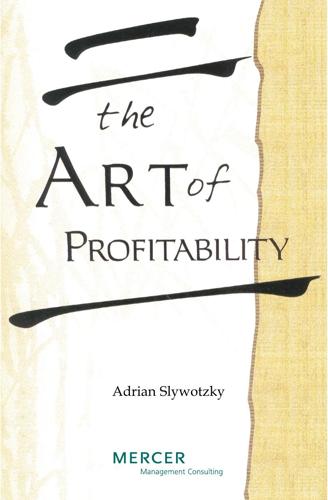
The Art of Profitability
by
Adrian Slywotzky
Published 31 Aug 2002
Insulation, air filters, furnace linings, door and window screens, stuff like that. A very cyclical business. It’s another one of our companies that’s been hit by the current slowdown. But Cathy and the top brass are worried that there’s more to it than that.” “Any comparison to the telecom business?” Steve thought for a moment. “Could be. Like telecom, it’s an almost commoditized industry. One or two companies have broken out of the pack with meaningful differentiation of their products, but most are still competing on price. And when building falls off, they’re left scrambling for crumbs.” “I’ll be curious as to what solutions you come up with, Steve.” “Any ideas to suggest?”

Lifestyle Entrepreneur: Live Your Dreams, Ignite Your Passions and Run Your Business From Anywhere in the World
by
Jesse Krieger
Published 2 Jun 2014
When talking to customers, describe situations where people went for the lower cost option only to have a cheap product that broke a week or two after they bought it. Focus on how reliability and durability set your product apart. However, if you are selling products that are generally available or commoditized emphasize the customer service or satisfaction guarantee. FINDING YOUR SALES STRATEGY “Cross The River By Feeling The Stones” — Deng Xiaoping Taking into account the tips above regarding general sales skills and industry-specific knowledge, you will ultimately develop your own unique sales strategy.

Marxian Economic Theory
by
Meghnad Desai
Published 20 May 2013
Money is here converted into commodities, the combination of which represents the bodily form of productive capital, and this form already contains latently, potentially, the result of the process of capitalist production. 11/1/26 (57) M - L: , [ Capital in the PUrchase of Labour Power M - L is the characteristic moment in the transformation of moneycapital into productive capital, because it is the essential condition for the real transformation of value advanced in the form of money into capital, into a value producing surplus value. 11/1/27 145 I (58) N - L: H,li /mark of th8 Non8Y Syst8m ~I - L is regarded as the characteristic feature, the hallmark of the so-called money system, because labour there appears as the .:ommodity of its owner, and money therefore as the buyer - hence on account of the money-relation (i.e. the sale and purchase of human activity). II/l/l8. (59) Labour P~~r as a Commodit~ Once labour-power has came into the market as the commodity of its owner and its sale takes the form of payment for labour, assumes the shape of wages, its purchase and sale is no more startling than the purchase and sale of any other commodity. The characteristic thing is not that the commodity labour-power is purchasable but that labour-power appears as a commodity. 11/1/28 (60) N - L: The Exchange and the CZass-ReLation True, in the act M - L the owner of money and the owner of 1abourpower enter only into the relation of buyer and seller, confront one another only as money-owner and commodity-owner.
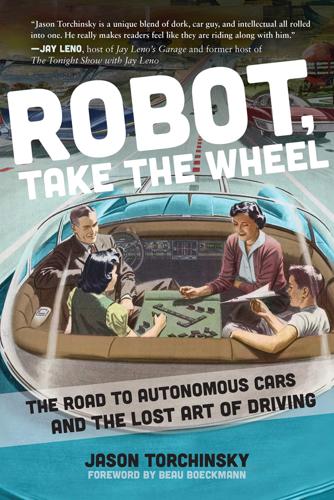
Robot, Take the Wheel: The Road to Autonomous Cars and the Lost Art of Driving
by
Jason Torchinsky
Published 6 May 2019
At the most basic level, you can imagine it wouldn’t be hard to specify how long you want to be gone before ending up back at your original destination; the car could use random number generators to dynamically create a randomized path within some set radius. I can imagine how the desire to aimlessly drive could be monetized and commoditized. Let’s say your robotic vehicle offered a feature where it could just drive around, but that allegedly aimless drive was really a disguised mapping path to gather data for some company. Really, a savvy robotic car owner could have the option of renting the use of their car for mapping, surveillance, or any number of other location-based data-gathering purposes, and if you wanted to go along for the ride, well, why not?

The Future of the Internet: And How to Stop It
by
Jonathan Zittrain
Published 27 May 2009
The resulting Internet was a network that no one in particular owned and that anyone could join. Of course, joining required the acquiescence of at least one current Internet participant, but if one was turned away at one place, there were innumerable other points of entry, and commercial ISPs emerged to provide service at commoditized rates.45 The bundled proprietary model, designed expressly for consumer uptake, had been defeated by the Internet model, designed without consumer demands in mind. Proprietary services tried to have everything under one roof and to vet each of their offerings, just as IBM leased its general-purpose computers to its 1960s customers and wholly managed them, tailoring them to those customers’ perceived needs in an ordered way.
…
Just as our notions of network security ought to include the endpoints as well as the middle of the network—with a generative principle to determine whether and when it makes sense to violate the end-to-end principle—our far-ranging debates on network neutrality ought to be applied to the new platforms of Web services that in turn depend on Internet connectivity to function. At least Internet connectivity is roughly commoditized; one can move from one provider to another so long as there is sufficient competition, or—in an extreme case—one can even move to a new physical location to have better options for Internet access. With open APIs for Web services there is much less portability; services built for one input stream—such as for Google Maps—cannot easily be repurposed to another, and it may ultimately make sense to have only a handful of frequently updated mapping data providers for the world, at least as much as it can make sense only to invest in a handful of expensive physical network conduits to a particular geographic location.
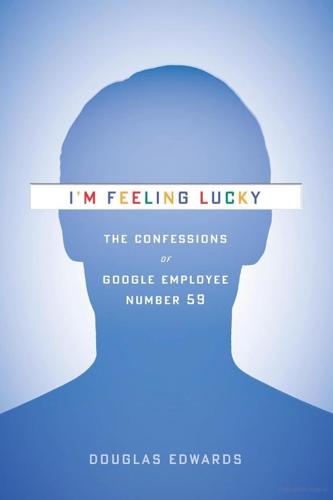
I'm Feeling Lucky: The Confessions of Google Employee Number 59
by
Douglas Edwards
Published 11 Jul 2011
Inktomi had no "consumer-facing" search site,* so they weren't Yahoo's competitors, which also gave them a clear shot at Microsoft's MSN network and America Online (AOL). Inktomi locked those customers up as well, completing their trifecta of high-traffic Internet sites and ensuring that the state of search across the web was commoditized. You could get any flavor of search you wanted, as long as it was Inktomi. They owned the search market and sat on it as fat and happy as the enormous customers they served. Other portals wanted a piece of Yahoo's traffic: Excite, Lycos, and Disney's Go.com. And other search companies, like AlltheWeb, Teoma, and HotBot, fought alongside Google for the crumbs falling from Inktomi's table.
…
I could search through all my email quickly when I needed to find something, and it tied all my related messages together into an easily read thread. This time I stuck with it as Paul and a small team of engineers began prepping Caribou for launch as a Google product. At the beginning of 2004, Yahoo, AOL, and Microsoft were the biggest players in online communication. They had created a balanced ecosystem of low expectations and commoditized email. Everyone knew web email came standard with a couple of megabytes of storage, inboxes littered with banner ads, and no easy way to find any message you had sent or received more than ten minutes earlier. Email addresses were disposable, and so many names had been claimed that almost everyone had to include a string of meaningless numbers in their user ID to open a new account.

Connectography: Mapping the Future of Global Civilization
by
Parag Khanna
Published 18 Apr 2016
“Without Lake Mead, there would be no Las Vegas,” a city official has said.11 When Lake Mead finally runs dry, even Canada’s ample sales of bottled water to America won’t be enough. Water may indeed be the “oil of the twenty-first century,” but Canada has been reluctant to price it as such for fear of commoditizing such a precious resource. The Great Lakes Compact, signed in 2008 by eight American states and two Canadian provinces, prohibits any diversion of Great Lakes water, leaving even once water-rich towns such as Waukesha, Wisconsin, in a lurch as its community size and industrial activity grow. Without Canadian water, it is hard to imagine the United States continuing to produce one-third of the world’s corn and soybean exports—especially as America’s own corn subsidies have encouraged the rapid draining of the Ogallala aquifer (which provides one-third of all irrigated water in the Great Plains) while polluting it with pesticides, and American cities continue to overconsume water allocated by volume rather than priced by usage.
…
An efficient supply-demand system would quickly redistribute cranes, pipe layers, and hydraulic lifts from city to city as and when they are needed rather than just manufacturing and selling more such industrial equipment. Similarly, Western cars can be quickly sent abroad to drive for several more years before they are scrapped. A world where everything is commoditized and priced is also a world where recycling trash is an economic opportunity. Lagos is home to one of the largest computer parts “e-waste” dismantling sites in the world. The narrow dirt alleys of Mumbai’s two-square-kilometer slum of Dharavi feature among the most organized recycling operations I’ve ever seen, with collectors fanning out across the city and bringing separated materials to pre-positioned depots for crushing and shipment to other stations for repurposing.

The Start-Up of You: Adapt to the Future, Invest in Yourself, and Transform Your Career
by
Reid Hoffman
and
Ben Casnocha
Published 14 Feb 2012
Searching for a job only when you’re unemployed or unhappy at work has been replaced by the mandate to always be generating opportunities. Networking has been replaced by intelligent network building. The gap is growing between those who know the new career rules and have the new skills of a global economy, and those who clutch to old ways of thinking and rely on commoditized skills. The question is, which are you? WHY THE START-UP OF YOU With change come new opportunities as well as challenges. What’s required now is an entrepreneurial mind-set. Whether you work for a ten-person company, a giant multinational corporation, a not-for-profit, a government agency, or any type of organization in between—if you want to seize the new opportunities and meet the challenges of today’s fractured career landscape, you need to think and act like you’re running a start-up: your career.
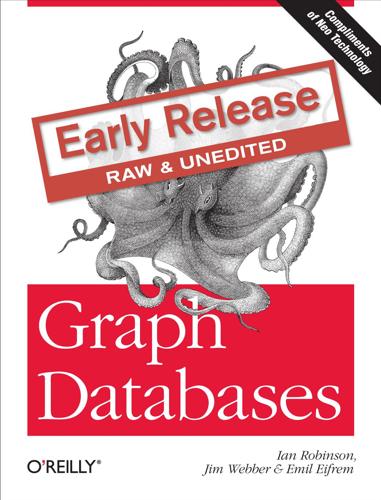
Graph Databases
by
Ian Robinson
,
Jim Webber
and
Emil Eifrem
Published 13 Jun 2013
Giraphe: http:// incubator.apache.org/giraph/. Pregel: http://dl.acm.org/citation.cfm?id=1807184. A High Level View of the Graph Space | 9 The Power of Graph Databases Notwithstanding the fact that just about anything can be modeled as a graph, we live in a pragmatic world of budgets, project timelines, corporate standards and commoditized skill-sets. That a graph database provides a powerful but novel data modeling technique does not in itself provide sufficient justification for replacing a well-established, wellunderstood data platform; there must also be an immediate and very significant practical benefit. In the case of graph databases, this motivation exists in the form of a set of use cases and data patterns whose performance improves by one or more orders of mag‐ nitude when implemented in a graph, and whose latency is much lower compared to batch processing of aggregates.
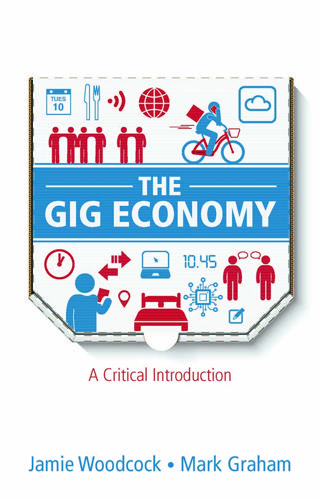
The Gig Economy: A Critical Introduction
by
Jamie Woodcock
and
Mark Graham
Published 17 Jan 2020
Silk weavers and laptop assemblers can both perform work thousands of kilometres from European end users. But, until recently at least, shopkeepers are still needed to sell those goods. Some jobs are thus more geographically sticky than others. Digital platforms have, however, made a lot of work less sticky. As work becomes ever more modularized, commoditized and standardized (Scott, 2001), and as markets for digital work are created, ties between service work and particular places can be severed. While the business process of outsourcing that emerged in the 1990s allowed large companies to take advantage of a ‘global reserve army’ by moving their call centres to cheap and distant labour markets, cloudwork changes the volume and granularity at which geographically non-proximate work can take place.

97 Things Every Programmer Should Know
by
Kevlin Henney
Published 5 Feb 2010
I learned how to use delegates effectively in C# from programming Ruby; releasing the full potential of .NET's generics gave me ideas on how I could make Java generics more useful; and LINQ made it a breeze to teach myself Scala. You'll also get a better understanding of design patterns by moving between different languages. C programmers find that C# and Java have commoditized the iterator pattern. In Ruby and other dynamic languages, you might still use a visitor, but your implementation won't look like the example from the Gang of Four book. Some might argue that Finnegans Wake is unreadable, while others applaud it for its stylistic beauty. To make the book a less daunting read, single language translations are available.
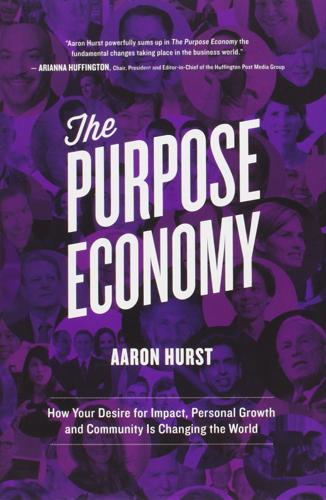
The Purpose Economy: How Your Desire for Impact, Personal Growth and Community Is Changing the World
by
Aaron Hurst
Published 31 Aug 2013
The teachers are heroic, but the system and scale is constantly a battle to overcome. This reality was made even more acute in the Information Economy, when it became viable to start using big data to evaluate schools. With the No Child Left Behind Act and then Race to the Top, the pressures from the system on teachers to conform and commoditize education have compounded. Kids are getting lost in the factory. The massive school system has done such a great job in scaling and efficiency that it has lost the ability to serve an individual child. That is, in an effort to scale our education system, we’ve sacrificed quality in the pursuit of quantity.
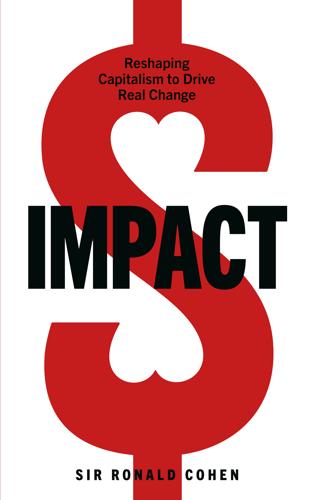
Impact: Reshaping Capitalism to Drive Real Change
by
Ronald Cohen
Published 1 Jul 2020
And we are hard-wired for salt, for fat, for sugar… The system has reached its limits and we are pushing through these limits, so why don’t we stop? We don’t because the consumer doesn’t realize. The consumer does not realize because the food system has disconnected people from their food.’3 Not content to call out the food industry for pushing unhealthy, commoditized products, he also argued for a complete redefinition of the purpose of business. ‘The ultimate goal of the market economy cannot be anything other than social justice,’ he said. ‘This is a matter of business sense.’4 Faber wasn’t just scolding his competitors. He admitted that though Danone’s company signature was ‘One Planet.

Who Stole the American Dream?
by
Hedrick Smith
Published 10 Sep 2012
Contrary to earlier predictions, knowledge economy jobs seemed especially vulnerable because digital work can be flashed across the globe by the click of a mouse. Work in information and finance follows repetitive processes and transactions that can, like assembly line production, be “commoditized,” in the argot of globalization. Since “commoditized” translates as “can be done anywhere cheaply,” it is the kiss of death for American businesses and employees. With China and India educating more engineers and computer scientists than the United States, no level of education provides protection, according to Princeton economist Alan Blinder.
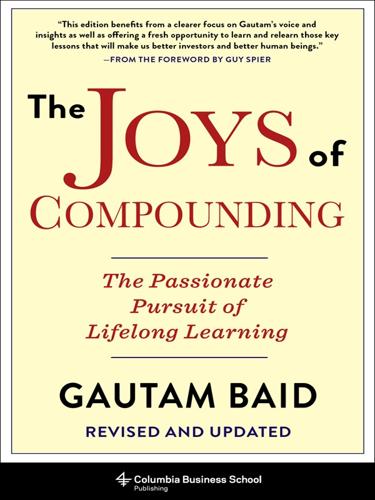
The Joys of Compounding: The Passionate Pursuit of Lifelong Learning, Revised and Updated
by
Gautam Baid
Published 1 Jun 2020
When investing in businesses that are widening the moat, with the passage of time, these businesses invariably turn out to be much cheaper than what would have resulted from our initial valuation work. High absolute market share (think General Motors) is not a moat. Great technology products (think GoPro), absent customer lock-in, is not a moat, as commoditization and disruption are inevitable. Hot products (like Crocs) can generate high returns for a short period of time, but sustainable excess returns make a moat. When assessing the moat of any business, simply ask yourself how quickly a smart competitor with unlimited financial resources could replicate it.
…
See cash flow from operating activity challenger brands, 222 Chancellor, Edward, 182–183, 189, 369 change, 32; of mind, 297–300; Munger on, 297–300; starting small, 111–113 Charles Munger (Griffin), 26 chartists, 185 chauffeur knowledge, 335 checklists, 128; psychological, 133–138 chronic diseases, 357 Cialdini, Robert, 335, 341 Cicero, 17 cigar butts, 175–176, 217 circle of competence, 303; defining, 59, 61–62; enlarging, 59–60; humility and, 56–62; reading and, 60 circle of incompetence, 58 Clason, George, 79 Classics: An Investor’s Anthology, 85 Clear, James, 20, 42, 357, 361 Close, Chuck, 42 Coca-Cola, 171 cocaine brain, 137 Code of Hammurabi, 149 cognitive dissonance, 342–343 Cohen, Aaron, 4–5 Collier, Charles, 64 Collins, Jim, 361 Colvin, Geoff, 42 Combs, Todd, on reading, 2–3 commerce, 272 commitment tendency, 134–135 commoditization, 226 commodity investing, 187–189 commodity stocks, 191–192 Common Stocks and Uncommon Profits (Fisher), 298 Common Stocks as Long Term Investments (Keynes), 215 commuting, 6 Company X, 159 competence: circle of, 56–62; Munger on, 59 Competition Demystified (Greenwald), 369 competitive advantage, 309; Buffett on, 210, 214; defining, 210; Dorsey on, 221; ROIC and, 221–225 competitive advantage period (CAP), 163–164 compound annual growth rate (CAGR), 173–174 compounding: in action, 366; decisions, 197; of habits, 359–362, 362; of health, 356–358; illustration of, 3; knowledge, 367–370; Munger on, 28–29; of positive thinking, 351–356; power law of, 28; in reverse, 174; of wealth, 362–367 compounding machines, 215 compound interest: Einstein on, 2, 349; Franklin on, 364; Keynes on, 215 concentration camps, 355 conditional probability, 292 Confucius, 38, 68; on mistakes, 300 connections, 373 consistency biases, 134–135 Constellation Software, 225 contradiction, proof by, 155 Coolidge, Calvin, 354 copy-pasting, 333 CORE Education, 336 Costco, 99, 225 cost-plus arrangements, 150 coupons, 121 Coyle, Daniel, 42 Credit Suisse, 177, 264 critical thinking, 108 culture: Buffett on, 225; as moat, 225–226 curiosity: Einstein on, 325; passion and, 325–326 Cycles to failure, 54 cyclicals, investing in, 197–198 Daily Journal Corporation, 98 Dakshana Foundation, 66 Dalio, Ray, 290–291, 306, 370 Danko, William, 79 “Dare to Be Great” (Marks), 247 Darwin, Charles, 284; habits of, 296; on thinking, 296 data, 227 David Copperfield (Dickens), 79 da Vinci, Leonardo, 25 Dead Companies Walking, 288 deal-making, 226 debt, 79; total, 131 debt-to-equity ratio, 133 decision-making, 20, 140, 332; Griffin on, 290–291; outcomes in, 258–259 deep value, 174; Buffett on, 179; Graham and, 178 delayed gratification, 113, 239; investment and, 104–105; Munger on, 97–98, 110 deliberate practice, 41; key elements of, 42 Deloitte, 200 Democrats, 277–278 denial, 134 deprival syndrome, bias from, 135 Deresiewicz, William, 30 Desai, Mihir, 291 Descartes, René, 10, 145 desperation, 200–201 detachment, 353 De Vany, Arthur, 321 Devil’s Financial Dictionary, The (Zweig, M.), 54 DeVoe, Raymond, Jr., 265 Dhandho Investor, The (Prabai), 70 Dickens, Charles, 79 dieting, 358 differential insights, 296 Dilip Buildcon, 369 discipline, Buffett on, 256 discounted cash flow, 290 disposition effect, 345 disqualifying features, 129 dissemination, 241 distortion, 135–136 diversification: Carlson on, 243; Fisher on, 245; Greenblatt on, 244; Keynes on, 245; Marks on, 246; F.

Elsewhere, U.S.A: How We Got From the Company Man, Family Dinners, and the Affluent Society to the Home Office, BlackBerry Moms,and Economic Anxiety
by
Dalton Conley
Published 27 Dec 2008
For example, some optimists might argue that with the economic necessity of marriage declining—thanks to the increasing financial independence of women—conjugal relations can now flourish as a purely private choice relationship, based on shared interests, passions, and affinities. That’s all well and nice, except that by now we have come full circle: The formerly private sphere has become so commoditized by the ever-expanding marketplace that literally everything has a price. We know the value of watching our kids, and our ailing parents, since many of us hire other folks to do it for us. We know the price of cleaning a toilet bowl, if we have ever hired a cleaning service. We know the value of a soft touch or caress, since we can walk into many beauty salons and order a massage in fifteen-minute increments.
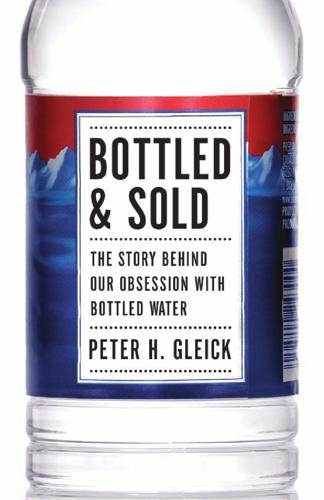
Bottled and Sold: The Story Behind Our Obsession with Bottled Water
by
Peter H. Gleick
Published 20 Apr 2010
In the first vision, the poorest parts of the world never get the high-quality reliable water systems developed in Europe and the United States, and even these water systems are allowed to decay to the point where no one trusts the quality of tap water for drinking. In this vision, the quality of the water from our faucets deteriorates, and safe drinking water is increasingly available only in fancy and expensive bottled water and individual point-of-use systems for the rich. Water is privatized, commoditized, and controlled for those who can afford it, and bottled water sales expand everywhere, for the demand is high. Billions of poor are left to rely on drinking water from private vendors, poorly run and regulated municipal systems, dubious tap water, water bottlers, or contaminated local sources.

Pity the Billionaire: The Unexpected Resurgence of the American Right
by
Thomas Frank
Published 16 Aug 2011
What’s more, the sponsoring organization turned out to be a for-profit outfit headed by a man who was reportedly trying to set up a kind of Facebook-style web empire for wingers. “What was celebrated here in Nashville,” wrote the journalist Will Bunch, after cataloging the trinkets for sale there, “wasn’t so much the coming out of the conservative movement as the commoditization of it.”3 The commodification continued wherever the movement pitched its tent. There were Tea Party cigars, $125 per box, perfect for those moments when you want to relax and “contemplate what has gone wrong and how to fix our government.” An outfit called 912 Citizens, Inc. offered for sale a silver coin commemorating the movement’s big Washington, DC, rally of September 12, 2009; it could be yours for $59.99.* The commemorative coins on sale at the September 12 rally the following year were of some baser metal, but they were painted in full color; I picked one up at the Liberty XPO held at the Shoreham Hotel in Washington for a mere sixteen dollars.

Ours to Hack and to Own: The Rise of Platform Cooperativism, a New Vision for the Future of Work and a Fairer Internet
by
Trebor Scholz
and
Nathan Schneider
Published 14 Aug 2017
But if one thinks about it, today’s sharing-economy platforms do exhibit some characteristics in common with Sunkist, and a worker-owned equivalent to Lyft and Uber seems quite feasible. Point-to-point urban transportation is a fairly uniform service in an industry with a limited amount of competition. Once the technology associated with “e-hail” and logistics is commoditized, which it will be, the economic fundamentals for the emergence of a platform cooperative would appear to be in place. More important, the network effects associated with ridesharing are geographically concentrated. Thus, unlike platforms such as eBay and Facebook, the barriers to entry posed by an incumbent platform may not be onerous.

Electronic and Algorithmic Trading Technology: The Complete Guide
by
Kendall Kim
Published 31 May 2007
DMA has been rapidly adopted by institutional traders in order to aggregate liquidity. Hedge funds are among the most aggressive users of DMA. In 2004, Banc of America Securities bought Direct Financial Access Corp.; BNY Brokerage purchased Sonic Financial Technologies; and Citigroup acquired Lava Trading. DMAs have become commoditized for bulge-bracket firms as part of a comprehensive set of services encompassing DMA, program trading, and traditional block trading. 7.5 Conclusion The buy side has begun to take more control of its trading decisions through faster, lower-cost, anonymous executions. The growth of communication networks such as ECNs has developed alternative trading platforms associated with more tightly quoted, effective bid-ask spreads, greater depth, and less concentrated markets.

Where Does It Hurt?: An Entrepreneur's Guide to Fixing Health Care
by
Jonathan Bush
and
Stephen Baker
Published 14 May 2014
In the eighties and nineties, consultants flew from one troubled manufacturer to the next and delivered a sobering message. They couldn’t do everything. They had to figure out what they were best at—their core competency—and focus on that. It was far better to excel in one area than to muddle along in a dozen. (It’s interesting that consultants themselves are now subject to very similar forces. The cloud commoditizes their knowledge and insights, and they have to dig deep to find their own core competency.) How could companies figure out what they were best at? How could they detect the waste and sloppiness in their operations? For this, they had to start measuring their operations. Only when they had numbers could they begin to manage their businesses scientifically.

You Are Not a Gadget
by
Jaron Lanier
Published 12 Jan 2010
Behemoths like Facebook have changed the culture with commercial intent, but without, as of this time of writing, commercial achievement.* In my view, there were a large number of ways that new commercial successes might have been realized, but the faith of the nerds guided entrepreneurs on a particular path. Voluntary productivity had to be commoditized, because the type of faith I’m criticizing thrives when you can pretend that computers do everything and people do nothing. An endless series of gambits backed by gigantic investments encouraged young people entering the online world for the first time to create standardized presences on sites like Facebook.
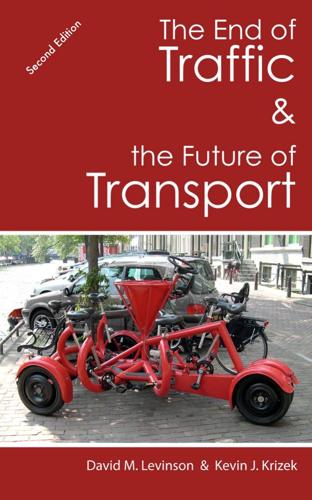
The End of Traffic and the Future of Transport: Second Edition
by
David Levinson
and
Kevin Krizek
Published 17 Aug 2015
On the other end of the spectrum are goods like fresh food that people like to inspect or touch before purchasing. Culture plays a role. Having lived for a year in Italy, Kevin knows few (if any) self-respecting Italians who would conceive of having an unknown person select tomatoes on their behalf — fish and meat products are not far off. Americans, on the other hand, have relegated themselves to commoditized food products, even tomatoes.77 In between these two extremes is what analysts term the 'digital battleground.' This domain includes home decor, office supplies clothing, footwear and all the rest (mattresses, eyeglasses, sweaters, souvenir items). Left to be determined by the market are thresholds for when particular goods transition to e-commerce for any given consumer.

The Intelligent Asset Allocator: How to Build Your Portfolio to Maximize Returns and Minimize Risk
by
William J. Bernstein
Published 12 Oct 2000
In fact, if you tire of reading this book and simply want a recipe for a serviceable portfolio, consider the following advice: Purchase the above-mentioned “simpleton’s portfolio” consisting of index funds—one quarter each of U.S. large and small stocks, foreign stocks, and a short-term U.S. bond fund. Index funds have become almost as commoditized as computer chips and gasoline, and they are available through most large fund families and “supermarkets.” I highly recommend Vanguard. At the end of each year, rebalance your accounts so that each of the four parts are again of equal size. That’s it. Setting up the account should take about 15 minutes, and the annual rebalancing should also take about 15 minutes.
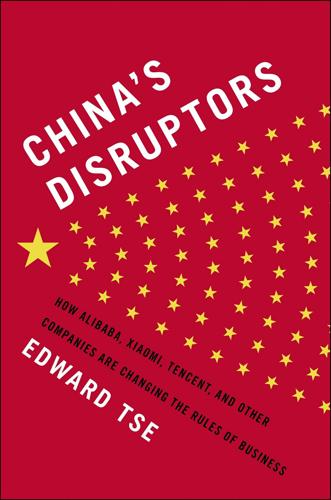
China's Disruptors: How Alibaba, Xiaomi, Tencent, and Other Companies Are Changing the Rules of Business
by
Edward Tse
Published 13 Jul 2015
Instead, accompanied by a constant push to narrow the technological gap on its rivals, it could focus on growth through stealth by eroding their market share in areas they usually regarded as of secondary importance. As it grew in scale, Huawei’s consistently cheaper prices also had the effect of commoditizing the telecom-equipment sector, in the process reducing its competitors’ profits. While its rivals could still win contracts where technological prowess mattered, less frequently could they win them where operators simply wanted their networks extended or upgraded in a routine manner. Along the way, Huawei has gradually transformed the world’s telecom-equipment market into something resembling China, where what counted was being able to offer constant incremental improvements in technology, features tailored to meet the precise needs of cost-conscious operators with no extra frills, and always at a price a little better than anyone else’s.

Strength in Numbers: How Polls Work and Why We Need Them
by
G. Elliott Morris
Published 11 Jul 2022
With the knowledge they could obtain from public opinion polls and computer simulations, they would hand the fate of country over to “the great masses who know very little,” rather than “a few who know a great deal.” Some of the anxieties given voice by The 480 have been validated by history. Citizens around the globe, but in the United States especially, are increasingly commoditized by masses of “big data” about them that are sold to the highest bidder for targeting by retailers and political campaigns; the “underworld” of micro-targeting and psychological profiling is indeed very real; and predictions of how individual Americans might vote have spawned a massive industry of data-driven political consultants who shape the way campaigns make their decisions.

Don't Trust Your Gut: Using Data to Get What You Really Want in LIfe
by
Seth Stephens-Davidowitz
Published 9 May 2022
For Bruce Springsteen’s fans, a Springsteen concert is not just a generic concert. Even if another artist charged a lower price for tickets, his fans would still choose the Springsteen concert. And this is true as well for most of the roughly ten thousand rich independent creatives. They are not in commoditized businesses, in which customers will merely pick whoever charges the lowest price. They have fans who will pay more for their work. The Escape from Global Behemoths Businesses in the Big Six all offer a way for firms to have some protection against price competition, which allows them to protect their profits.
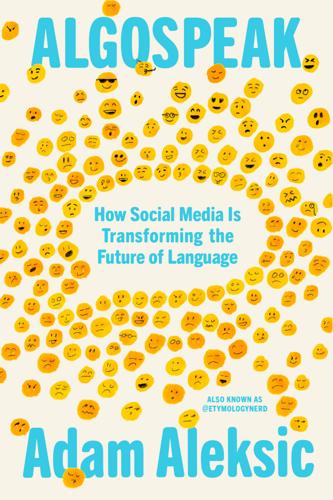
Algospeak: How Social Media Is Transforming the Future of Language
by
Adam Aleksic
Published 15 Jul 2025
This is why I think it’s absolutely worth talking about even the most fleeting words. We must, if we want to understand where we’re headed as a society. “Unalive” is the tip of a colossal iceberg. Beneath the icy water, there is a hulking mass of creative techniques, trends, memes, identities, echo chambers, and new ways to commoditize language that only could have existed in the new algorithmic context. It’s about time we started talking about it, so I invite you to join me in navigating our new linguistic landscape. Throughout this book, we’ll dive into every corner of social media and together uncover the beautiful, chaotic idiosyncrasies of modern language.

Antifragile: Things That Gain From Disorder
by
Nassim Nicholas Taleb
Published 27 Nov 2012
As I got her to explain to other people her evidence about the lack of effectiveness of funding formal education, one person got frustrated with our skepticism. Wolf’s answer to him was “real education is this,” pointing at the room full of people chatting. Accordingly, I am not saying that knowledge is not important; the skepticism in this discussion applies to the brand of commoditized, prepackaged, and pink-coated knowledge, stuff one can buy in the open market and use for self-promotion. Further, let me remind the reader that scholarship and organized education are not the same. Another party story. Once, at a formal fancy dinner, a fellow in a quick speech deplored the education level in the United States—falling for low-math-grades alarmism.
…
Seclusion: Since The Black Swan, I’ve spent 1,150 days in physical seclusion, a soothing state of more than three hundred days a year with minimal contact with the outside world—plus twenty years of thinking about the problem of nonlinearities and nonlinear exposures. So I’ve sort of lost patience with institutional and cosmetic knowledge. Science and knowledge are convincing and deepened rigorous argument taken to its conclusion, not naive (via positiva) empiricism or fluff, which is why I refuse the commoditized (and highly gamed) journalistic idea of “reference”—rather, “further reading.” My results should not depend, and do not depend on a single paper or result, except for via negativa debunking—these are illustrative. Charlatans: In the “fourth quadrant” paper published in International Journal of Forecasting (one of the backup documents for The Black Swan that had been sitting on the Web) I showed empirically using all economic data available that fat tails are both severe and intractable—hence all methods with “squares” don’t work with socioeconomic variables: regression, standard deviation, correlation, etc.

This Is How They Tell Me the World Ends: The Cyberweapons Arms Race
by
Nicole Perlroth
Published 9 Feb 2021
They began poaching from the intel agencies and acquiring boutique contractors like Sabien’s. By the time Sabien had agreed to meet with me, he’d been out of the market for more than a decade, but the market was hard to avoid these days. “In the nineties, there was just a small community of people working on exploits and selling them. These days it’s so commoditized. It’s blown up. Now”—he swirled his finger in a wide circle in the air around the Beltway—“we’re surrounded. There are more than a hundred contractors in this business, probably only a dozen that know what they’re doing.” The Drug Enforcement Agency, the U.S. Air Force and Navy, and agencies most of us have never heard of all had their own reasons for acquiring zero-days.
…
James, here, here world, destroying the, here, here World Trade Center bombing, here Wray, Christopher, here Xi Jinping, here, here, here Yahoo, here, here, here, here, here, here Yanukovych, Viktor, here Yasinsky, Oleksii, here YouTube, here al-Zawahiri, Ayman, here Zelensky, Volodymyr, here Zemlin, Jim, here zero-click exploits, here zero-day brokers, here, here, here, here, here zero-day bug market, here zero-day bugs identifying and eliminating, here registering, here underground market, here zero-day buyers human rights offenders, here morality, here zero-day capability, NSA NSA (National Security Agency), here, here Zero-Day Charlie (Miller, Charlie), here, here, here zero-day espionage, here, here, here, here zero-day exploits accuracy of, here, here Chinese clients, here copyright protections, here customers, here encryption piercing, here life span, here, here Microsoft Windows, here NSA, online posting of, here, here, here, here, here outsourcing, here patents, here power of, here prices paid for, here putting people at risk, here sold to government agencies, here timing, here, here weaponizing, here zero-day hunters, here zero-day market accountability, here beginnings, here buyers, here commoditization of, here controlling the, here deal-making structure, trust in the, here Desautels, Adriel (Cyanide/Simon Smith), here early days, here ethics, here, here, here, here exposing the, here government agencies, here government duplication of effort, here government interference, here inefficiencies, here morality, here, here, here, here morality in the, here, here, here, here, here, here morality of the, here NSA, here NSA budget, here outsourcing in the, here, here prices, here, here, here, here, here, here, here, here, here, here, here, here, here, here, here profit margins, here regulating the, here, here secrecy in the, here, here, here, here, here, here, here trust in the, here underground, here U.S. control over, here, here U.S. responsibility for, here, here valuation, here VRL (Vulnerability Research Labs), here zero-day market customers foreign buyers and sellers, here, here foreign governments, here, here government agencies, here, here, here, here, here security companies, here United States, here U.S. government customers, here U.S. in the, here zero-days (0 days) capabilities of, here, here defined, here life span, here used for physical harm, here, here, here zero-day stockpile NSA, here, here, here, here, here, here, here, here U.S., here, here, here, here Zerodium, here, here, here Zfone, here Zhang Yesui, here Zhengfei, Ren, here Zhou Yongkang, here Zimmermann, Phil, here Zork subversion, here Zott’s (Alpine Inn Beer Garden), here Zuckerberg, Mark, here, here, here A NOTE ON THE AUTHOR NICOLE PERLROTH is a staff writer at the New York Times, where she covers cybersecurity and digital espionage.

Free as in Freedom
by
Sam Williams
Published 16 Nov 2015
Sure, the White House was saying all the right things about the Internet, even going so far as to register its own domain name, whitehouse.gov, but it was also meeting with the companies, censorship advocates, and law-enforcement officials looking to tame the Internet's Wild West culture. Sure, PCs were more powerful, but in commoditizing the PC marketplace with its chips, Intel had created a situation in which proprietary software vendors now held the power. For every new user won over to the free software cause via Linux, hundreds, perhaps thousands, were booting up Microsoft Windows for the first time. Finally, there was the curious nature of Linux itself.

Platform Scale: How an Emerging Business Model Helps Startups Build Large Empires With Minimum Investment
by
Sangeet Paul Choudary
Published 14 Sep 2015
The systems mediating these interactions follow the platform business model: a plug-and-play business model that allows connected users and things to plug in and orchestrates them toward efficient interactions. Some of us continue to believe, erroneously, that building superior technology will determine business success in the future. Instead, as this book illustrates, leveraging technology – often commoditized – to orchestrate connected users toward new and efficient value-creating interactions holds the key to the business models of the future. This book explains the inner workings of these new business models and their ability to scale rapidly. The platform business model is powered by a new set of factors that determine value creation and competitive advantage.

Technological Revolutions and Financial Capital: The Dynamics of Bubbles and Golden Ages
by
Carlota Pérez
Published 1 Jan 2002
The answer to all of these was a combination of the Japanese production organization (just-in-time, total quality, redesign, structured networks of suppliers and so on), the incorporation of microelectronics, both in the cars themselves and in computer-controlled equipment for design and manufacture and, finally, globalization, supported by the early digital telecommunications.126 These profound, difficult and costly transformations brought the industry away from the threat of commoditization of its product and to a complete revitalization in just over a decade. One could also mention the case of the oil, energy and petrochemical industries, very hard hit by the oil price hike and environmental pressures. The introduction of digital control systems for optimizing production processes, saving energy and avoiding toxic emissions and waste was their initial answer.127 In the case of chemicals, moving away from mass-produced commodities to computer-aided development of specialty chemicals was the following strategy.
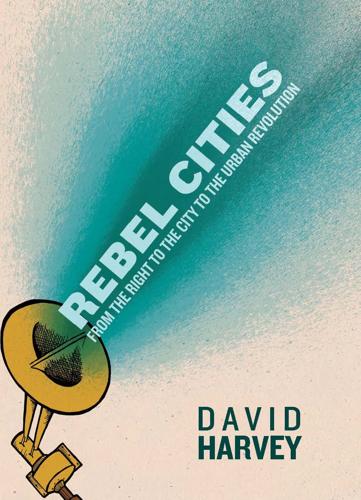
Rebel Cities: From the Right to the City to the Urban Revolution
by
David Harvey
Published 3 Apr 2012
They were ultimately destroyed by a combination of concerted state power and their own Maoist national leadership, who considered environmental issues a manifestation of flabby bourgeois sentimentality. 14 But there is a seamless connection between those who mine the iron ore that go es into the steel that go es into the construction of the bridges across which the trucks carrying commodit ies travel to their final destinations of factories and homes for consumption. All of these activities (in cluding sp atial movement) are productive of value and of surplus value. If capitalism often recovers from crises, as we saw earlier, by "building houses and filling them with th ings;' then dearly everyone R E C LAI M I N G T H E CITY FOR ANTI-CAPITALIST STRU G G LE 131 engaged in that urban izing activity has a central role t o play in the mac roeconomic dynam ics of capital accumulation.
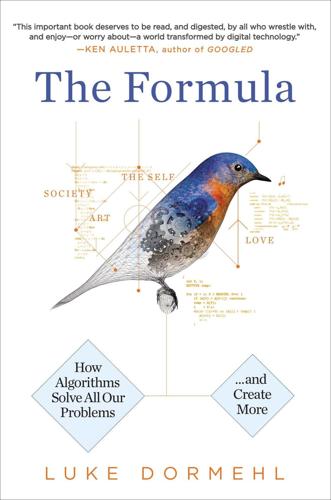
The Formula: How Algorithms Solve All Our Problems-And Create More
by
Luke Dormehl
Published 4 Nov 2014
In its own way this is an algorithm in itself, albeit one that is diametrically opposed to a computer-based algorithm designed to produce efficient results in as few steps as possible.20 With the unbalanced weighting of the legal system in favor of those practicing it,21 it is no surprise that many lawyers criticize the use of disruptive technologies in law, worried about the detrimental effects that it is likely to have on their earning power. A large number of these attack what is viewed as the “commoditization” of law: unfavorably comparing “routinized” legal work to the kind of “bespoke” work you would receive from a human lawyer. (Think about the difference between off-the-rack and hand-tailored clothing in both quality and price.) But while this criticism makes sense if you are a lawyer carrying out what you feel to be bespoke work, it also heavily downplays the number of legal tasks that a bot can perform as well as, if not better than, a person.
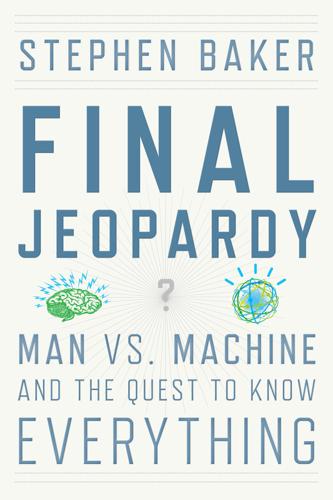
Final Jeopardy: Man vs. Machine and the Quest to Know Everything
by
Stephen Baker
Published 17 Feb 2011
If a treatment recommended by a machine killed a patient, confidence in bionic assistants could plummet. The other issue, sure to come up in many industries, boils down to a struggle for power, and even survival, in the workplace. “As every profession embraces systems that take humans out of it,” Wachter said, “the profession gets commoditized.” He noted the example of commercial aviation, where pilots who were once considered stars have ended up spending much of the time in flight simply backing up the machines that are actually flying the planes. The result? “Pilots’ pensions have been cut and they’re paid less, because they’re largely interchangeable,” he said.
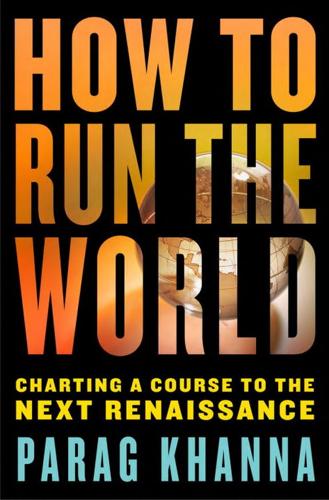
How to Run the World: Charting a Course to the Next Renaissance
by
Parag Khanna
Published 11 Jan 2011
These are the steps companies across America can take to forge the transition toward community-based sustainability. Google is in the lead, and maybe the Pentagon will follow. Because short-term financial considerations often trump long-term common sense, saving nature requires to some extent commoditizing it—pricing it according to its value to users. Both oil and water should cost more than they do. Once gas prices fall, many Americans suddenly think they don’t need fuel-efficient or hybrid cars. The United States could tax carbon consumption, penalize oil speculators, and eliminate subsidies for fossil fuels—putting those funds into alternative energy research and development instead.

Uncanny Valley: A Memoir
by
Anna Wiener
Published 14 Jan 2020
A pay-as-you-wish yoga studio shared a creaky walk-up with the headquarters of an encrypted-communications platform. A bodega selling loosies sat below an anarchistic hacker space. The older office buildings, regal and unkempt with marble floors and peeling paint, housed orthodontists and rare-book dealers alongside four-person companies trying to gamify human resources or commoditize meditation. Data scientists smoked weed in Dolores Park with Hula-Hoopers and blissed-out suburban teenagers. The independent movie theaters played ads for networked appliances and B2B software before projecting seventies cult classics. Even racks at the dry cleaner suggested a city in transition: starched police uniforms and synthetic neon furs, sheathed in plastic, hung beside custom-made suits and machine-washable pullovers.

Measure What Matters: How Google, Bono, and the Gates Foundation Rock the World With OKRs
by
John Doerr
Published 23 Apr 2018
Dov started from the premise that culture guides people’s behaviors, or how things really happen in an organization. In our open-sourced, hyperconnected world, behavior defines a company more meaningfully than product lines or market share. As Dov said to me recently, “It’s the one thing that can’t be copied or commoditized.” Dov’s big idea is that companies that “out-behave” their competition will also outperform them. He identified a value-driven model, the “self-governing organization,” a place where long-term legacy trumps the next quarter’s ROI. These organizations don’t merely engage their workers. They inspire them.
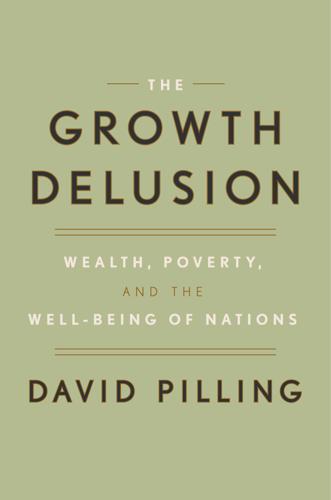
The Growth Delusion: Wealth, Poverty, and the Well-Being of Nations
by
David Pilling
Published 30 Jan 2018
If nature is transformed from forest to sheep pen or from river to electricity, we need some kind of accounting tools to figure out how much of a net loss that is to the stock of natural capital and how much we need to do to compensate. On one level the whole exercise is flawed. Economists are precisely not the type of people you want to start messing about with nature. As soon as they get their hands on our lakes and our forests, the danger is these will be commoditized and bought and sold into oblivion. In the end economists can’t answer questions like “Should we build on the greenbelt to relieve the housing shortage?” Some trade-offs are ethical and not susceptible to number-crunching. In theory an economist may decide that it is “worth” driving a river dolphin to extinction if the result is a hydroelectric plant producing so many megawatts of power for so many hundreds of thousands of people.

Start With Why: How Great Leaders Inspire Everyone to Take Action
by
Simon Sinek
Published 29 Oct 2009
If a company adds too many novel ideas too often, it can have a similar impact on the product or category as the price game. In an attempt to differentiate with more features, the products start to look and feel more like commodities. And, like price, the need to add yet another product to the line to compensate for the commoditization ends in a downward spiral. In the 1970s, there were only two types of Colgate toothpaste. But as competition increased, Colgate’s sales started to slip. So the company introduced a new product that included a new feature, the addition of fluoride, perhaps. Then another. Then another. Whitening.
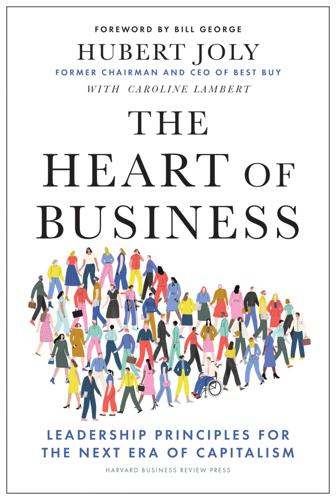
The Heart of Business: Leadership Principles for the Next Era of Capitalism
by
Hubert Joly
Published 14 Jun 2021
This helps customers, who can develop a lasting relationship with a pro, who is able to help them make the most of technology. And it helps Best Buy, as finding new ways to help customers brings in new revenues and profit. People were convinced that Best Buy was going to die in 2012 because consumer electronics was not growing much and was increasingly commoditized. Maybe Best Buy would have died if our strategy reflected the idea that we were a store that sold consumer electronics. But building a strategy from the more expansive lens of our noble purpose changed the game. Our environment was actually rich with opportunities. The web of initiatives that was our “Best Buy 2020: Building the New Blue” growth strategy, launched in 2017 once the company’s turnaround was complete, all linked back to that one purpose: the dream of enriching customers’ lives through technology.
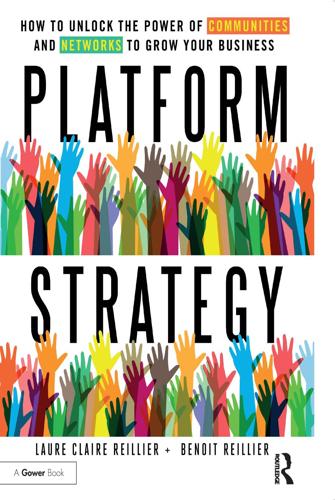
Open for Business Harnessing the Power of Platform Ecosystems
by
Lauren Turner Claire
,
Laure Claire Reillier
and
Benoit Reillier
Published 14 Oct 2017
Yet we believe operators were an early wave of platforms that attracted users, matched them first using switchboards, then with directories and yellow pages, to connect them and allow them to transact. They also originally benefited from network effects, yet were not able to innovate as fast as the new ‘Internet players’. Telecoms operators are, however, increasingly investing in digital platform capabilities to avoid commoditization (such as the acquisition of Yahoo by Verizon). We note that their exclusion from this list would still result in more than 75% of the combined value of the top 10 brands in the world coming from platform-powered businesses. 8 IBM is often seen as a platform in the technical sense of the term, and associated with both hardware standards and operating system capabilities.

Piracy : The Intellectual Property Wars from Gutenberg to Gates
by
Adrian Johns
Published 5 Jan 2010
Input by citizens, literate and illiterate alike, would have been normal. Its principle would have been creativity, not receptivity. That was what it was to be convivial – and in Illich’s terms freedom required conviviality. Illich likewise believed that conventional education was receptive and commoditized, and therefore illiberal. He proposed replacing schools by “webs” – computerbased “reticular structures for mutual access” – that would facilitate openended and creative interactions. They would resemble enthusiasts’ clubs. Some might establish “skill exchanges” at which laypeople could gather to learn about technical tools, perhaps in storefronts.
…
The problem was that modern industry did not produce convivial technologies. It preferred “a world of things that resist insight into their nature.” Concealed inside closed boxes – or inscribed in silica – technology was becoming ever less convivial. The prime example was radio. Boxing radios had commoditized knowhow, he thought, producing “a noninventive society.” But in its early days radios had been open and convivial, Illich recalled, and a radio enthusiast (what the BBC had called a pirate listener) had often made every set in the neighborhood “scream in feedback.” For Illich that howl was a sign of a kind of freedom that had then been widely distributed, had survived for a while in science (“the one forum which functioned like an anarchist’s dream”), but was now almost extinguished there too.
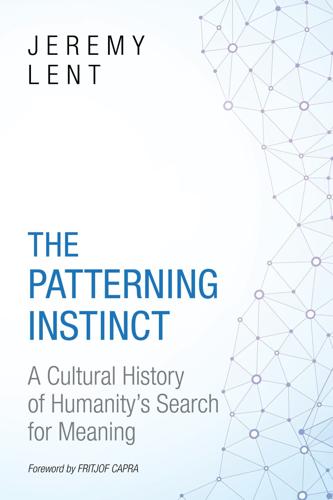
The Patterning Instinct: A Cultural History of Humanity's Search for Meaning
by
Jeremy Lent
Published 22 May 2017
Just as the broomstick seemed destined to continue fetching water from the lake until the sorcerer's house was utterly flooded, so the requisite growth of money has put our society on a relentless search for ever more natural resources to monetize. These can be tangible resources such as land, water, minerals, and trees, or intangibles that were previously freely offered, such as childcare, education, or food preparation. As long as it can be commoditized, it helps to keep the economy from collapsing under its own weight.19 This self-accelerating treadmill of perpetual growth has become the underlying force driving our global civilization, affecting virtually every aspect of our lives. It has been the engine behind the previously unimaginable advances in technology, medicine, and communication that have transformed the lives of most people on the planet.
…
See Medieval period Mill, John Stuart, 286 mimetic culture, 32, 40–42, 45, 57–58, 62, 63–64 mind-cure religions, 378, 400–401 Mohenjo-daro, 130, 136 money, 381–82 Mongols, 272–73, 299, 325, 327, 330 monolatry, 216 monotheism, 215, 271 in Christian thought, 227–38 intolerance of Akhenaten and, 239 British and, 248–49 China, contrasted with, 249–50 in Christianity, 243–47 India, contrasted with, 247–49 in Islam, 246–47, 248, 321–23 in Old Testament, 241–43 polytheism contrasted with, 240–41, 243–44 in Zoroastrianism, 139–40, 241, 244 in Old Testament, 215–22 Platonism in, sources of, 215, 222–26 Montezuma, 307 Moore's law, 375–76, 401, 405, 416 morality afterlife in Egyptian civilization, relation to, 120–21 in Chinese thought, 211, 262–63 in Christianity, 248–49, 312 Confucian view of, 191–93 European imperialist view of, 311–12, 314 evolutionary theories of, 43–47, 262 expanding scope of, 432–33 Neo-Confucian view of, 262–63, 268–71, 271–72 in Old Testament, 222, 279–80 Protestant view of, 238, 312 Pythagorean view of, 150 Stoic view of, 159 transhumanism and, 421 in Western thought, 262 More, Sir Thomas, 312 Morris, Ian, 18–19 Moses, 215–16, 224 Muhammad (prophet), 318, 321, 323 Muhammad of Ghor, 248 Muntzer, Thomas, 245 Muslim people. See Islamic civilization and thought Mu'tazilites, 321–22 Mycenaeans, 144 mythic consciousness, 32, 65–66, 67–81 Mytilene (ancient Greek city), 147 Nakamura, Hajime, 247, 249 Nalungiaq (Inuit), 87, 89 Natufians, 104–105, 112 nature agriculture, impact on, 295–97 commoditization of, 382, 397–99 connectivity with, 288–91, 329–30, 434, 441–42 desacralization of, 237, 282–84, 401, 440–41 exploitation of, 280, 294, 315, 327, 388–90 human domination of, 285–87, 390–92, 419 rights of, 440 separate, viewed as, 289, 401, 440–41 (see also environmental crisis; environmental imbalance) views of agrarian, 33, 104, 105–106, 109–10, 111–16, 240 Baconian, 277–78 capitalist, 35, 382, 397–99 Cartesian, 237, 377 Chinese, 181–86, 186–91, 288–92, 329–30 Christian, 233, 281, 350–51 “cornucopian,” 416–18 Egyptian, 287 Greek, 150, 157–58 hunter-gatherer, 32–33, 67, 84–90, 97–99, 174, 291–92 Indian, 174–77 Indo-European, 198–99 monotheistic, 124 “moonlight tradition,” 359–63 Neo-Confucian, 257–61, 262–65 popular worldwide, 437 reductionist, 271, 357, 368–69, 373 systems, 185, 258–60, 263, 358, 363–65, 370–73 teleological, 76–77 See also metaphors, root; nature, laws of nature, human.
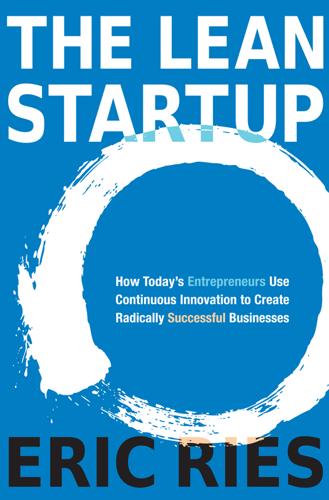
The Lean Startup: How Today’s Entrepreneurs Use Continuous Innovation to Create Radically Successful Businesses
by
Eric Ries
Published 13 Sep 2011
As new mainstream customers are acquired and new markets are conquered, the product becomes part of the public face of the company, with important implications for PR, marketing, sales, and business development. In most cases, the product will attract competitors: copycats, fast followers, and imitators of all stripes. Once the market for the new product is well established, procedures become more routine. To combat the inevitable commoditization of the product in its market, line extensions, incremental upgrades, and new forms of marketing are essential. In this phase, operational excellence takes on a greater role, as an important way to increase margins is to lower costs. This may require a different type of manager: one who excels in optimization, delegation, control, and execution.
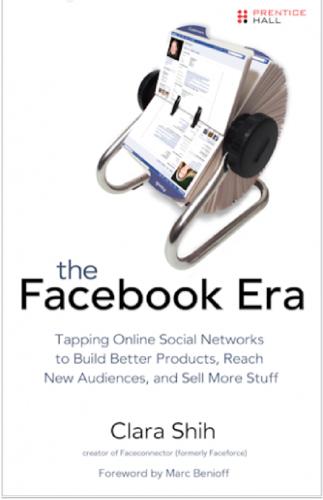
The Facebook era: tapping online social networks to build better products, reach new audiences, and sell more stuff
by
Clara Shih
Published 30 Apr 2009
Certain product and brand categories, From the Library of Kerri Ross 104 Pa r t I I Tra n s fo r m i n g t h e Way We D o B u s i n e s s such as sports, recreation, politics, movies, books, food, clothing, and celebrities, are ideal because they evoke passion and are used by individuals to express themselves. Products that might be less exciting, more commoditized, embarrassing, and either too personal or too impersonal, such as laundry detergent, tax filing services, medication, and office supplies, are usually not a good fit. Similarly, luxury items such as high-end cars or jewelry might feel like bragging to many people. As a company considering a presence on social networking sites, the best thing you can do is guide your brand in a direction that is exciting but credible.
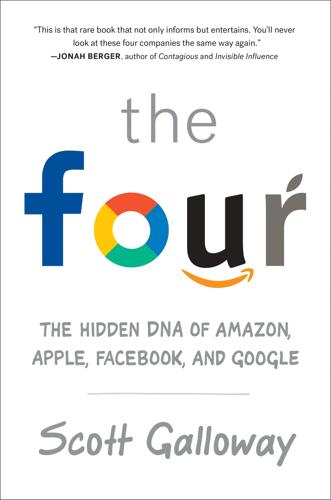
The Four: How Amazon, Apple, Facebook, and Google Divided and Conquered the World
by
Scott Galloway
Published 2 Oct 2017
The engine receives an upgrade and instructions to remove the speed regulator, and the car’s top speed increases from 140 to 150, remotely. Do you remember who made your landline phone, before chips and wireless set them free? Nearly every product in the world, even products and services that appear to have been commoditized, have forged new dimensions and consumer value, enabled by cheap sensors, chip sets, the internet, networks, displays, search, social, and so on. Today, almost every link of the supply, manufacturing, and distribution chains has a new means of differentiation. All of a sudden, products driven by technology and defensible IP are the bomb.
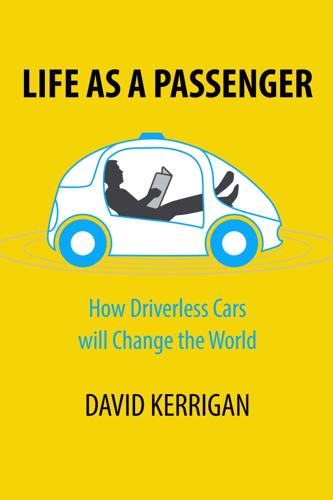
Life as a Passenger: How Driverless Cars Will Change the World
by
David Kerrigan
Published 18 Jun 2017
And that’s why major car manufactures are investing in ridesharing services or even turning to providing their own fleets as we’ll see a little later in this Chapter. With the advent of fully self-driving cars, it’s easy to imagine automobile transport services looking more and more like the airline industry - largely commoditized with little difference between service providers. And once the price has hit bottom, where will they go next? Will they pay you to take a ride if the marginal cost of providing the service becomes less than the potential revenue to them from advertising or sponsorship? Ownership Evolution It’s way too early to tell how car ownership will evolve in an era of driverless cars.
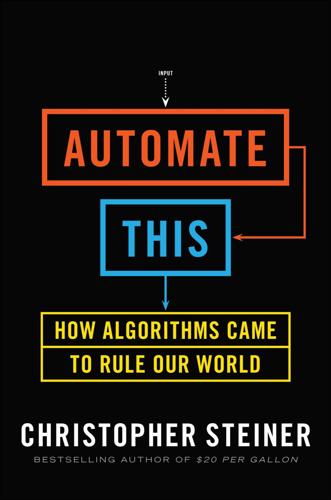
Automate This: How Algorithms Came to Rule Our World
by
Christopher Steiner
Published 29 Aug 2012
Emmy had now created several thousand pieces of similar quality. This alarmed musicians. Why would they want to perform a piece that was merely one of many? Artists wanted something of a guarantee that they would be playing Emmy’s best. But Emmy could, with no warning, create something even better tomorrow. Musicians didn’t want to play something so easily commoditized. This is a subject that has threatened to ostracize Cope from the musical herd. He argues that all prolific composers, from Bach to Mozart to Beethoven, dealt in commodities. They developed patterns, Cope says, that they based on music they had heard throughout their lifetimes. Bach was never creating something wholly new, says Cope, but simply building incrementally on those who came before him.

What's Mine Is Yours: How Collaborative Consumption Is Changing the Way We Live
by
Rachel Botsman
and
Roo Rogers
Published 2 Jan 2010
Xerox (photocopiers to document services), Steelcase (office furniture to office furnishing systems), AT&T (phone products to communication packages), Pitney Bowes (postage products to mail management systems), and IBM (hardware and software goods to business solutions) all have made the core purpose of their business to sell the function their products provide.33 The risks of product commoditization are one reason for this shift; another is that the profit margins are higher in a product-service mix than in the “pure sale of products.”34 Some companies may at first think that the extra responsibility of an extended-life PSS is too costly. But not only can manufacturers reuse the raw materials or components of goods; by supplying repair, maintenance, and product upgrades, companies profit from the sale of additional services and keep in closer contact with customers.

Who Gets What — and Why: The New Economics of Matchmaking and Market Design
by
Alvin E. Roth
Published 1 Jun 2015
Of course, if you’re in a strange city, you may find yourself seeking a big chain such as Starbucks precisely because of the standardization of the drinks it sells, since you haven’t had a chance to locate a more idiosyncratic coffee shop that might suit you better. Notice the tension between commoditization and product differentiation—that is, between wanting to sell in a thick market to buyers even if they don’t care who you are, and trying to make your product special enough that many buyers will care enough about you to seek you out. Sellers enjoy selling in a thick market of buyers, but they don’t enjoy being interchangeable with other sellers.

Dogfight: How Apple and Google Went to War and Started a Revolution
by
Fred Vogelstein
Published 12 Nov 2013
You’d be stupid to try to compete with the Internet [if you were a carrier or a manufacturer]. How could you? So Android enabled both of them to take advantage of the Internet in a controlled way. Our pitch was “You have costs. We understand what those costs are. You want to be differentiated and don’t want to be commoditized. So we’re going to give you this, this, this, and this—the hook to solve that equation.” Translation: None of us can beat Apple on our own. But if we work together, each of us focusing on what we are truly good at, we can not only beat Apple but make all our businesses stronger and more profitable than they were before.

Our Final Invention: Artificial Intelligence and the End of the Human Era
by
James Barrat
Published 30 Sep 2013
That’s because computer malware is growing so capable that it can already be considered narrowly intelligent. As Ray Kurzweil told me, “There are software viruses that do exhibit AI. We’ve been able to keep up with them. It’s not guaranteed we can always do that.” Meanwhile, expertise in malware has become commoditized. You can find hacking services for hire as well as products. I found the preceding ad for Zeus malware (malicious software) after Googling for less than a minute. Symantec, Inc. (corporate motto: CONFIDENCE IN A CONNECTED WORLD), started life as an artificial intelligence company, but now it’s the biggest player in the Internet’s immune system.

How to Speak Money: What the Money People Say--And What It Really Means
by
John Lanchester
Published 5 Oct 2014
Much of the world’s computer equipment functions by means of tantalum capacitors, which are made with an ore called coltan, much of which comes from the Congo, where it’s extracted from mines run by warlords using slave labor. From the business point of view, if your product or service is “commodified” or “commoditized,” it means people can get it from anywhere and there is no reason why your version of it is unique. When people talk about the news having been commodified, it means you can now get your news from anywhere, so there’s no reason to pay for it—which is bad news for newspapers. competitiveness A quality usually linked to productivity.
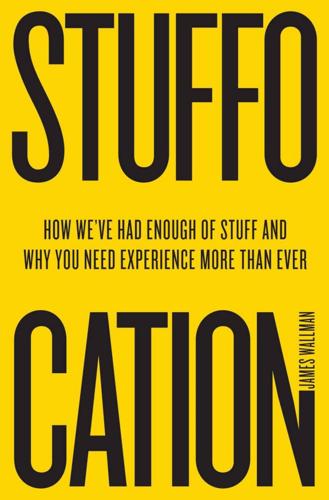
Stuffocation
by
James Wallman
Published 6 Dec 2013
The new and improved experience economy will, as it responds to Stuffocation, be a world of goods – products, services, experiences – that are far less bad, or even actually positive, for the environment. They will require fewer material resources. Rather than cluttering our homes with yet more monotonous, commoditized stuff, companies will sell us goods that are customized and 3D printed, so that they give each of us more engaging, relevant experiences. They will provide goods that take up less room, or no physical space at all. Instead of focusing on tangible objects we can have and hold, companies will sell us solutions we need or, better still, activities we can do.
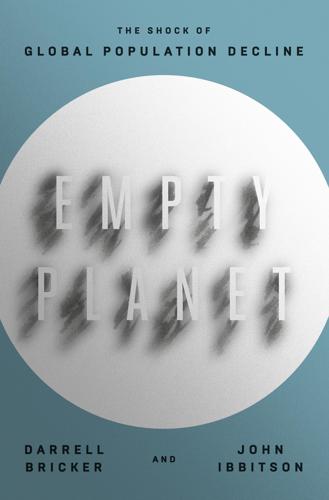
Empty Planet: The Shock of Global Population Decline
by
Darrell Bricker
and
John Ibbitson
Published 5 Feb 2019
The room provides visual affirmation to the interested suitor’s family of their child’s accomplishments and his or her potential earning ability after marriage.208 One might assume that younger Kenyans, especially women, who have been exposed to the idealized love matches extolled by Hollywood and to the commoditization of sex via the Internet, would be very much against this type of material bargaining for their affection. Yet in conversations with Kenyan women and men, support for the dowry tradition was consistent and strong, regardless of gender or age or marital status, even among senior female executives who were well educated and thoroughly modern in every aspect of their professional lives.

The New Rules of War: Victory in the Age of Durable Disorder
by
Sean McFate
Published 22 Jan 2019
Private Wars The rise of mercenaries coupled with new kinds of nonstate powers will produce private wars, an ancient form of warfare that modern militaries have forgotten how to fight. It is literally the marketization of war, in which military force is bought and sold like any other commodity. This will change warfare as we know it. Privatizing war distorts warfare in shocking ways. If conflict is commoditized, then the logic of the marketplace and the strategies of the souk apply to war. A souk is an Arab open market, and a good analogy for how private wars work. In a souk, everything is up for sale and must be bartered. Anything goes. Fraud, deception, deceit, and hard bargaining are the watchwords.

Space 2.0
by
Rod Pyle
Published 2 Jan 2019
Greason continues by noting that there was never any international discord over ownership of the moon rocks brought back by the Apollo program and Soviet robotic probes. However, the Apollo moon rocks were scientific samples, gathered in another era. In the future, when space resources become commoditized and therefore have a recognized cash value, attitudes will likely change. International agreements will have to be reached regarding control of the resources that will fuel space infrastructure. Control, if not outright ownership, of these resources will probably become one of the top concerns of the companies extracting, processing, and storing them.
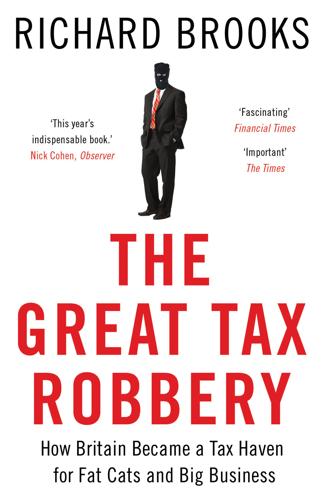
The Great Tax Robbery: How Britain Became a Tax Haven for Fat Cats and Big Business
by
Richard Brooks
Published 2 Jan 2014
In 2010 Glaxo reported worldwide pre-tax profits of £4.5bn but appeared to pay little if any UK corporation tax, showing benefits from the tax credits and from using Singapore’s special tax status of around £115m and £80m respectively.9 AstraZeneca, a similarly enthusiastic tax haven user, in 1999 ensured that what would turn out to be its blockbuster anti-cholesterol drug Crestor (with sales over $5bn by 2010), was licensed around the world from the Caribbean tax haven of Puerto Rico.10 The company now shaves several hundreds of millions of dollars off its annual tax bill by using such territories.11 ‘Tax-efficient supply chain management’ – as it has become known in one of those obfuscatory tax euphemisms – offers huge scope for tax dodging as established and newer tax havens bend over backwards to host the management, intellectual property, financing and other facets of a business that can be commoditized, moved and priced. It has spawned an industry in what one of its leading exponents, KPMG, defines as ‘incorporating tax arbitrage into supply chain structures (typically by optimizing the location of the key supply chain functions, assets and risks)’.12 Strip away the jargon and this is corporate tax dodging on a global scale, increasingly sanctioned by the world’s tax authorities.
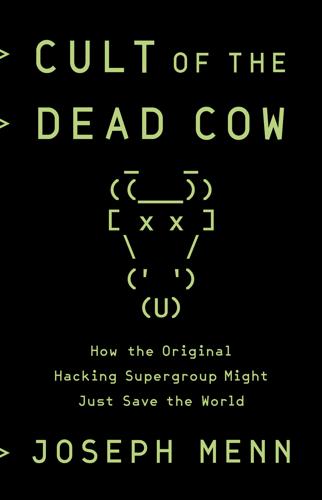
Cult of the Dead Cow: How the Original Hacking Supergroup Might Just Save the World
by
Joseph Menn
Published 3 Jun 2019
Song urged Koum to get in touch with Marlinspike, and Koum agreed when Acton proposed having WhatsApp adopt the nonprofit Signal’s open-source technology, protecting a billion people from mass surveillance. In 2018, Acton would donate $50 million to create a new foundation to spread Signal much further and sign on as executive chairman, citing the opportunity to “make a meaningful contribution to society by building sustainable technology that respects users and does not rely on the commoditization of personal data.” Later, he said he had been motivated “by an increase in requests from law enforcement and the desire to render those requests useless.” Koum stayed on at Facebook, where he was one of only three executives also serving on the company’s board. Though he continued to run WhatsApp, Facebook began demanding more data than expected about WhatsApp users, building up ad revenue but also exposing the users to greater corporate and government scrutiny.

The Globotics Upheaval: Globalisation, Robotics and the Future of Work
by
Richard Baldwin
Published 10 Jan 2019
The radical transformations that came with the industrial revolution and the shift from feudalism to capitalism destroyed the social fabric that had, for centuries, been based on reciprocity and ancient hierarchical relationships. As Karl Polanyi wrote in his 1942 book, The Great Transformation, the commoditization of labor and mass migration to urban and industrial areas disturbed traditional values to such an extent that the people pushed back by embracing communism or fascism. Back then, however, the push and pushback both took many decades. The industrial and societal revolutions started accelerating around 1820, but communism and fascism took off only in the 1920s.
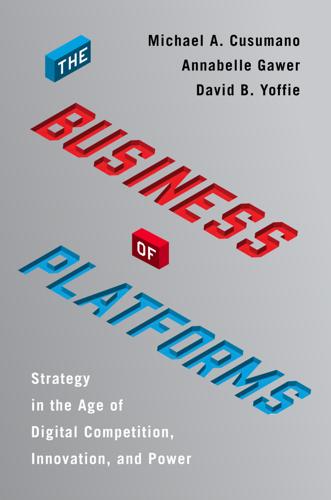
The Business of Platforms: Strategy in the Age of Digital Competition, Innovation, and Power
by
Michael A. Cusumano
,
Annabelle Gawer
and
David B. Yoffie
Published 6 May 2019
At its peak in 2011, HTC was the third largest smartphone company, behind Nokia and Apple. Annual revenues hit $16 billion and were growing close to 50 percent. Fast forward a half dozen years, and HTC’s smartphone business was struggling: The big winners in the smartphone industry were the dominant platform players, Apple (iPhone) and Google (Android). Android, in particular, had commoditized the hardware industry, driving down margins for everyone but Apple. Peter Chou, and later Cher Wang, HTC’s CEOs, responded by moving aggressively into a new space: virtual reality. Wang knew that HTC had a high-end product, called Vive, which was better than its competitors, but HTC also had one of the best products on the market in the early days of the smartphone.

The Thinking Machine: Jensen Huang, Nvidia, and the World's Most Coveted Microchip
by
Stephen Witt
Published 8 Apr 2025
If those engineers weren’t constantly developing new, difficult-to-replicate technology, manufacturers in Asia would start knocking off his chips, and Nvidia would cease to exist. “If we don’t reinvent computer graphics, if we don’t reinvent ourselves, and we don’t open the canvas for the things that we can do on this processor, we will be commoditized out of existence,” Huang later said. Not to gamble was the biggest risk of all. The first GeForce models to feature programmable shaders debuted in June 2001. The Xbox, Microsoft’s gaming console, launched in November 2001, accompanied by its signature game, Halo. The game was a shooter in the tradition of Quake and Doom, except instead of taking place in Hell, it took place in a ring-shaped artificial world with beautiful, naturalistic lighting, rendered by Nvidia’s hardware.

The Wealth of Networks: How Social Production Transforms Markets and Freedom
by
Yochai Benkler
Published 14 May 2006
And a perennial barrier to competition that could reduce the cost is the presence of exclusive rights, [pg 312] mostly in the form of patents, but also in the form of internationally recognized breeders' rights and regulatory data exclusivity. In the areas of computation and communication, hardware and software are the primary domains of concern. With hardware, there have been some efforts toward developing cheaper equipment--like the simputer and the Jhai computer efforts to develop inexpensive computers. Because of the relatively commoditized state of most components of these systems, however, marginal cost, rather than exclusive rights, has been the primary barrier to access. The solution, if one has emerged, has been aggregation of demand--a networked computer for a village, rather than an individual. For software, the initial solution was piracy.
…
At the other end of the spectrum, BIOS's focus on making tools freely available is built on the proposition that innovation for food security involves more than biotechnology alone. It involves environmental management, locale-specific adaptations, and social and economic adoption in forms that are locally and internally sustainable, as opposed to dependent on a constant inflow of commoditized seed and other inputs. The range of participants is, then, much wider than envisioned by PIPRA or the GCP. It ranges from multinational corporations through academic scientists, to farmers and local associations, pooling their efforts in a communications platform and institutional model that is very similar to the way in which the GNU/Linux operating system has been developed.
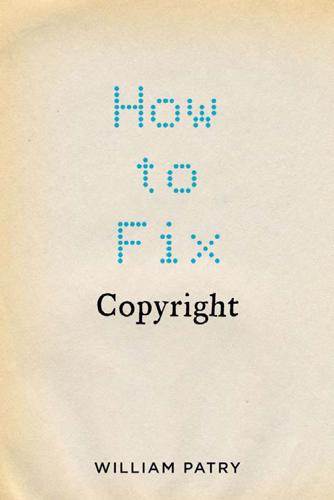
How to Fix Copyright
by
William Patry
Published 3 Jan 2012
Contrary to the belief that copyright laws lead to a diversity of offerings, the myth of the solitary genius and the superstar system support a choking off of diversity in favor of the winner-take-all approach that leaves the few with almost everything and the many with little. There is, of course, no shortage of individuals who are quite eager to be commoditized in this way because it promises them fame and fortune. Justin Bieber is just a product, and very happily so. The ability of distributors to charge monopoly prices for superstars was a phenomenon noted by Adam Smith way back in 1776: The exorbitant rewards of players, opera-singers, operadancers, &c are founded upon those two principles; the rarity and beauty of the talent, and the discredit of employing them in this manner.35 Whether the talent displayed by superstars is in fact rare is questionable (especially in the area of popular culture), but the purpose of proclaiming a superstar’s talent to be rare is easy enough to understand.
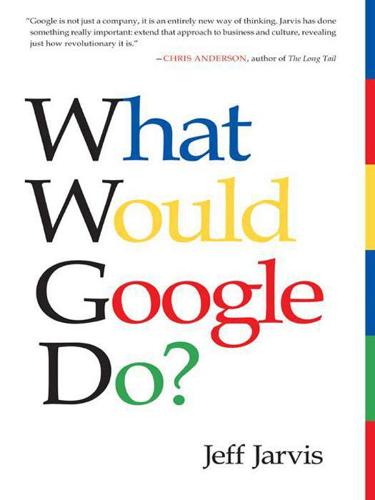
What Would Google Do?
by
Jeff Jarvis
Published 15 Feb 2009
Just as it was beginning, I took the founder, Upendra Shardanand, to meet venture capitalist Fred Wilson. At the end of our meeting, Wilson asked: “Can I use your platform to build my own business? And before you answer, let me tell you, the right answer is ‘yes.’” Wilson sees building platforms as a strategic imperative. “In the economy we’re in now, if you’re not a platform, you’ll be commoditized,” he told me. Google will win against Microsoft and Yahoo, he argued, because too many companies have invested too much to build on Google’s platform. That will make them loyal. Questions to ask yourself: How can you act as a platform? What can others build on top of it? How can you add value?

The Sharing Economy: The End of Employment and the Rise of Crowd-Based Capitalism
by
Arun Sundararajan
Published 12 May 2016
Do current industries seeing the emergence of peer-to-peer platforms share something in common with Sunkist? If one thinks about it, a worker-owned equivalent to Uber seems quite feasible. Cab drivers, after all, offer a more or less uniform service in an industry with a limited amount of competition. Once the technology associated with “e-hail” is commoditized, the potential for a worker cooperative appears to be in place, since each local market is contestable, as I discussed in chapter 5. The emergence of Swift, a platform owned by drivers, may be an early leading indicator.31 (At least until the fleets of driverless cars take over.) Many active participants in the sharing economy see the sharing of the wealth as a moral imperative; others suggest it makes good business sense.
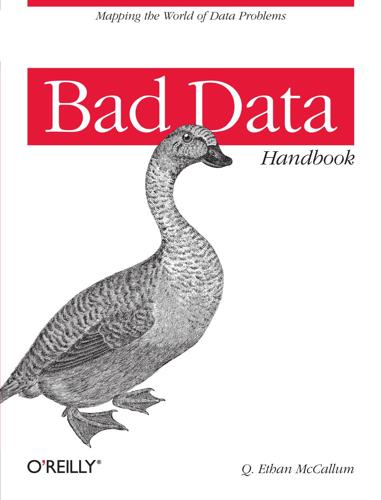
Bad Data Handbook
by
Q. Ethan McCallum
Published 14 Nov 2012
Cloud computing is fantastic for stateless, process heavy jobs, such as most application servers. The cloud has historically been weaker at jobs where state matters. Data processing typically falls in the middle of these two. For me, the ideal infrastructure would include the best of both worlds: easy management of stateful machines running on optimized hardware connected via LAN to commoditized cloud nodes for application processing. It’s important to recognize that these cloud offerings are still infants in their life cycles. In time, as offerings develop and improve, it’s likely that the cloud’s current weaknesses will be erased and it will become an increasingly viable solution. * * * [71] www.opscode.com/chef [72] http://www.informationweek.com/news/galleries/cloud-computing/infrastructure/232901167 Chapter 15.

Peers Inc: How People and Platforms Are Inventing the Collaborative Economy and Reinventing Capitalism
by
Robin Chase
Published 14 May 2015
I like my smartphone—the machine itself—to be manufactured using the industrial model, because the guaranteed ability to work exactly like millions of other smartphones is critical to me. However, for the app side of the equation, uniqueness, customization, and localness are important to me. The world no longer needs to choose between the two stereotypes of commoditized industrial efforts (consistent, low-cost, yet faceless) and the unique vitality of local small-scale production (highly variable and unreliable). In the Peers Inc world, which leverages the diversity of peers to provide a diversity of experience, we are all like Dorothy stepping out of her black-and-white Kansas home into Oz, the world of color.
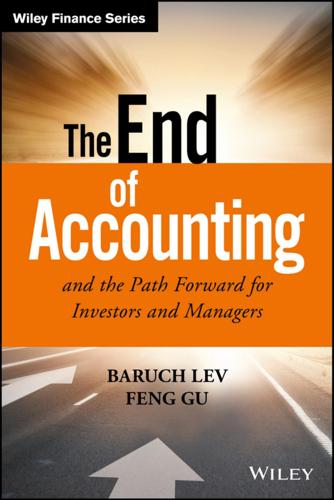
The End of Accounting and the Path Forward for Investors and Managers (Wiley Finance)
by
Feng Gu
Published 26 Jun 2016
The focus of this Resources & Consequences Report is on the strategic, value-enhancing resources (assets) of modern enterprises, like patents, brands, technology, natural resources, operating licenses, customers, business platforms available for add-ons, and unique enterprise relationships, rather than on the commoditized plant, machines, or inventory, which are prominently displayed on corporate balance sheets. The main purpose of the proposed information system is to provide investors and lenders (and managers, too) with actionable, up-to-date information required for today’s investment decisions. It directs every investor and lender to seek from companies the information that really matters, rather than the information regulators believe is good for you.
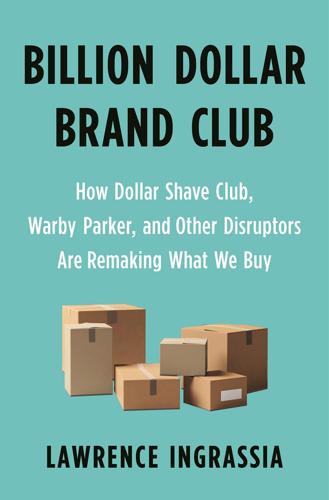
Billion Dollar Brand Club: How Dollar Shave Club, Warby Parker, and Other Disruptors Are Remaking What We Buy
by
Lawrence Ingrassia
Published 28 Jan 2020
Warby Parker, Glossier, Dollar Shave Club, and many new direct-to-consumer brands recognize that as important as a good product is, creating a good customer experience fosters loyalty, and loyal customers spread the word on social media and bring in more customers. “In the digital economy, your audience has an audience,” says David Bell. In a world where products are commoditized, Neil Blumenthal says, a company needs to create moats to fend off the competition: “How do you create moats? You continue to provide more value. How do you provide more value? You create a more holistic experience. That’s a barrier to entry.” * * * The night before Thanksgiving 2018, Mark Ely noticed a small scratch on the lenses of a pair of Warby Parker glasses he had recently purchased.

AI Superpowers: China, Silicon Valley, and the New World Order
by
Kai-Fu Lee
Published 14 Sep 2018
It’s a contest between two approaches to distributing the “electricity” of AI across the economy: the “grid” approach of the Seven Giants versus the “battery” approach of the startups. How that race plays out will determine the nature of the AI business landscape—monopoly, oligopoly, or freewheeling competition among hundreds of companies. The “grid” approach is trying to commoditize AI. It aims to turn the power of machine learning into a standardized service that can be purchased by any company—or even be given away for free for academic or personal use—and accessed via cloud computing platforms. In this model, cloud computing platforms act as the grid, performing complex machine-learning optimizations on whatever data problems users require.

Infonomics: How to Monetize, Manage, and Measure Information as an Asset for Competitive Advantage
by
Douglas B. Laney
Published 4 Sep 2017
Very rare indeed is the organization that generates much more than occasional and rudimentary data quality measures, to implementing a spectrum and combination of information valuation approaches—as they do with other assets. Various global business and technology trends are subtly or not so subtly urging business, IT, and information leaders to treat information as a legitimate economic asset. Chief among them are: The commoditization of many physical assets, products, services, and even workforces compels business leaders and innovators to look toward information as a new source of margin. The cornerstone of digital business is the ability to identify and respond to business moments which almost invariably are represented by an information stream or alert.
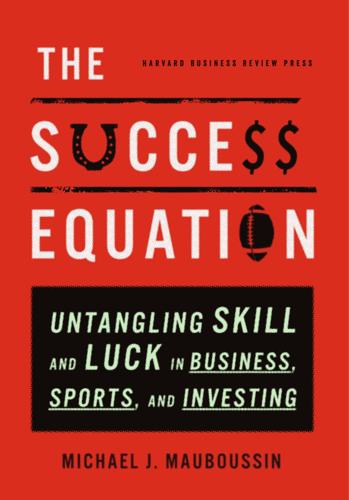
The Success Equation: Untangling Skill and Luck in Business, Sports, and Investing
by
Michael J. Mauboussin
Published 14 Jul 2012
The good news is that a great deal of what we care about is in the first three quadrants, and there are methods to cope with events in the fourth quadrant. Taleb doesn't seem very interested in the first three quadrants—understandably so because the problems are reasonably tractable. Sports, for instance, seem to hold no interest for him. In his book of aphorisms, The Bed of Procrustes, he writes: “Sports are commoditized and, alas, prostituted randomness.”21 I don't know exactly what that means, but it leads me to believe that watching a ball game is not among Taleb's favorite pastimes. One of my main points is that most people have trouble untangling skill and luck even in cases where it is possible to do so.

Data Action: Using Data for Public Good
by
Sarah Williams
Published 14 Sep 2020
Beyond creating the data itself, they are Data Action tools that provide a critical way of addressing power imbalances. In the last decade leveraging big data has become big business, and tech companies want a piece of the action. But as analysis and collection of data about cities are further commoditized, we run the risk of excluding communities on the margins because their data is missing or not reflected in the analytics that corporations develop. In the introduction I mention the International Data Corporation (IDC) estimate, that in 2025 the world will create and replicate 175ZB of data: that astonishing amount represents more than a tenfold increase from the amount of data created in 2015.2 And it's even more mind-boggling to consider that a single zettabyte is roughly equal to 250 billion DVDs.

The Perfect Police State: An Undercover Odyssey Into China's Terrifying Surveillance Dystopia of the Future
by
Geoffrey Cain
Published 28 Jun 2021
The researchers realized they could repurpose graphics processing units (GPUs), the components installed in devices that allowed for advances in computer game graphics, to improve the processing speeds of a deep neural net.9 With GPUs, AI developers could utilize the same techniques for displaying shapes and images on a computer screen, and use them to train a neural network in finding patterns. Building a neural net had once been prohibitively expensive. But the GPU breakthrough was important because it slashed the costs of the key hardware that would power the software. For years, GPUs had been getting cheaper and more commoditized, even as the industry elevated their memory and processing power.10 With better hardware and a growing number of datasets, the timing was perfect to build a deep neural network that could process that data. Through trial and error, a Microsoft team led by Dr. Sun Jian set out to build more “layers” in a neural network that would allow the AI system to constantly update its knowledge and learn from the data that flowed through it.

Spooked: The Trump Dossier, Black Cube, and the Rise of Private Spies
by
Barry Meier
Published 17 May 2021
Though he was speaking to a roomful of reporters, Simpson responded in the way that a corporate executive might when seeking to avoid a reporter’s question. He dodged it. “There is not much money in campaign, sort of traditional campaign opposition research type stuff,” he remarked. “Sometimes there are big issue campaigns or big, big elections where there is a lot of money thrown around but most of the time, it is a cannibalized, commoditized business.” But for Fusion GPS, the 2016 presidential campaign season was more like a cash cow. While Simpson was publicly discounting his firm’s interest in “oppo,” reports from Christopher Steele were pouring into his offices. And well before that, a Republican megadonor who had hoped to stop Trump from gaining the party’s nomination had paid Fusion GPS to dig up dirt on him.

How to Stand Up to a Dictator
by
Maria Ressa
Published 19 Oct 2022
It’s the only way they know how to do it.” “And we feed into this, using their social sharing buttons so we give them our most precious resource—our relationships,” I replied, thinking aloud. “It degrades the quality of our journalism as well.” I had long been saying that reducing journalism to page views commoditized our work, and since our journalism was being distributed on social media, which rewarded the opposite incentives, our audience reach was limited because we could never compete on outrage. It goes against our standards and ethics manuals. “The journalism is coerced into self-optimization for social media.”
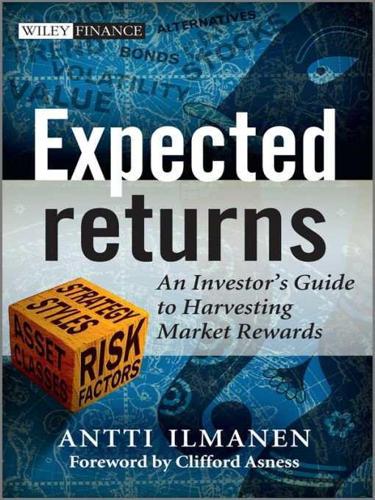
Expected Returns: An Investor's Guide to Harvesting Market Rewards
by
Antti Ilmanen
Published 4 Apr 2011
Berger–Kabiller–Crowell (2008) illustrate evolution of the concept of manager value-added from the total return of a fund (all of which was typically attributed to the manager in the days before the CAPM, the market model, and performance measurement) to CAPM alpha; from CAPM alpha to alpha as the intercept in Fama–French three-factor or four-factor regressions; and thence to alpha as the intercept in even broader models in which the factors explain even more of the return. At each step, we commoditize return generation and put downward pressure on fees because well-known systematic factors do not justify as high a fee as pure alpha does. This process will help end-investor net returns and understanding, albeit gradually. There could be infinitely granular classifications, but the current state of the art appears to follow the three-part classification: traditional betas, alternative betas, alpha.
…
The other lines show that one-year rolling betas of G10 and EMG FX carry portfolios have risen from 0.1–0.2 in the past to about 0.5 in 2007–2009. Carry strategy systematic risk appears higher amidst high-volatility, low-liquidity regimes. Why has alpha morphed into beta? Growing popularity, overcrowding, and commoditization may be the inevitable consequence of good performance for any investment strategy. As word of the success of carry strategies got around, typical return-chasing flows followed: first speculators, then institutional investors, and eventually even retail. Because carry strategy is very intuitive and does not require frequent trading, the threshold to entry is low.
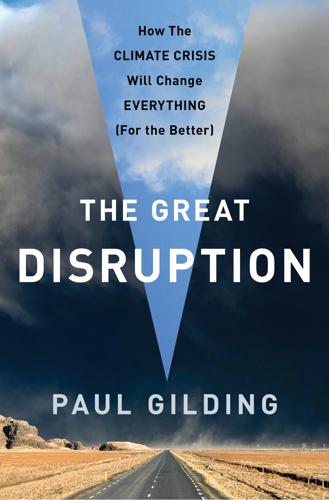
The Great Disruption: Why the Climate Crisis Will Bring on the End of Shopping and the Birth of a New World
by
Paul Gilding
Published 28 Mar 2011
In reality, the nitrogen fixation on which it relies is highly carbon intensive, and industrial agriculture (in stark contrast with traditional agriculture) is a nonrenewable industry (that is, dependent upon things that run out). This makes it unstable in the coming world. The industrialization of food is not just about the physical impacts on the environment, however. We now have an integrated global food supply system that is highly specialized and commoditized. While these types of systems deliver great efficiency and low costs, they are particularly prone to shocks and change. As the New Economics Foundation (NEF) pointed out in its report 96 Hours to Anarchy, Western countries have now created such a finely tuned, just-in-time food supply system that the loss of transport, for example, would see supermarket shelves in some countries empty in just four days.

Starbucked: A Double Tall Tale of Caffeine, Commerce, and Culture
by
Taylor Clark
Published 5 Nov 2007
Few would have predicted in 1987 that a house-wares salesman from Brooklyn could hook America on four-dollar Italian espresso drinks and build a handful of oddball coffee-houses into a global empire, yet he did. But while Schultz has publicly stated nothing but certainty about his company’s current direction, an internal memo leaked to Jim Romenesko’s Starbucks Gossip Web site in February 2007 tells a different story. In the message, titled “The Commoditization of the Starbucks Experience” and addressed to a dozen high-ranking company executives, Schultz bluntly assesses his chain’s fading cachet. “Over the past ten years,” he writes, “in order to achieve the growth, development, and scale necessary to go from less than 1,000 stores to 13,000 stores and beyond, we have had to make a series of decisions that, in retrospect, have lead [sic] to the watering down of the Starbucks experience.”

Fooled by Randomness: The Hidden Role of Chance in Life and in the Markets
by
Nassim Nicholas Taleb
Published 1 Jan 2001
Sadly, I learned quite a bit from Niederhoffer, mostly by contrast, and particularly from the last example: not to approach anything as a game to win, except, of course, if it is a game. Even then, I do not like the asphyxiating structure of competitive games and the diminishing aspect of deriving pride from a numerical performance. I also learned to stay away from people of a competitive nature, as they have a tendency to commoditize and reduce the world to categories, like how many papers they publish in a given year, or how they rank in the league tables. There is something nonphilosophical about investing one’s pride and ego into a “my house/library/car is bigger than that of others in my category”—it is downright foolish to claim to be first in one’s category all the while sitting on a time bomb.
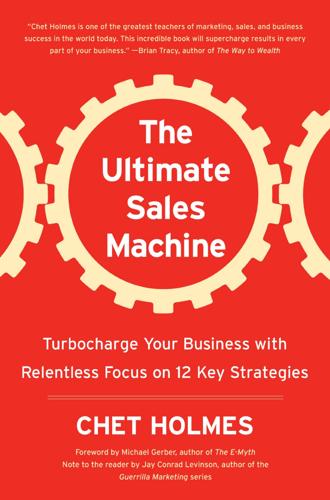
Ultimate Sales Machine
by
Chet Holmes
Published 20 Jun 2007
Over a four-year period the tactical store remained a onestore location, while the strategic store opened six locations. People will even pay more if they perceive there is a greater value or a deeper reason for buying from one provider over another. I cannot tell you how many times I've helped companies step up out of the commoditizing world in which they live by being more strategic. In a moment I'll have you do an exercise that will pound this idea home. Let's do a little more setup so you get as much as possible out of the exercise. Here's a question I want you to answer: when your buyers look to purchase your type of product or service, how much of an expert are they?

Four Arguments for the Elimination of Television
by
Jerry Mander
Published 1 Jan 1977
Because of its cost, the limited kind of information it can disseminate, the way it transforms the people who use it, and the fact that a few speak while millions absorb, television is suitable for use only by the most powerful corporate interests in the coun- try. They inevitably use it to redesign human minds into a channeled, artificial, commercial form, that nicely fits the arti- ficial environment. Television freewayizes, suburbanizes and commoditizes human beings, who are then easier to control. Meanwhile, those who control television consolidate their power. 349 IMPOSSIBLE THOUGHTS Television aids the creation of societal conditions which produce autocracy; it also creates the appropriate mental pat- terns for it and simultaneously du11s a11 awarenes that this is happening.

Tools for Computational Finance
by
Rüdiger Seydel
Published 2 Jan 2002
Exercise 6.4 TVD of a Model Problem Analyze whether the upwind scheme (6.22), the Lax-Friedrichs scheme (6.25) and the Lax-Wendroff scheme (6.30) applied to the scalar partial differential equation ut + aux , a > 0, t ≥ 0, x ∈ IR satisfy the TVD property. Hint: Apply Lemma 6.3. Appendix A Financial Derivatives A1 Investment and Risk Basic markets in which money is invested trade in particular with equities (stocks), bonds, and commodites. Front pages of The Financial Times or The Wall Street Journal open with charts informing about the trading in these key markets. Such charts symbolize and summarize myriads of buys and sales, and of individual gains and losses. The assets bought in the markets are collected and held in the portfolios of investors.
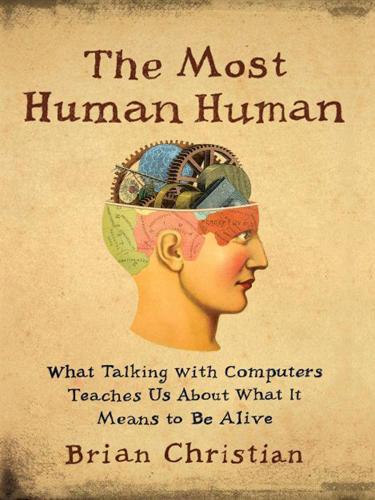
The Most Human Human: What Talking With Computers Teaches Us About What It Means to Be Alive
by
Brian Christian
Published 1 Mar 2011
The performer can’t avoid interpreting the score their own way, becoming personally involved; Ferneyhough’s work asks, he says, not for “virtuosity but a sort of honesty, authenticity, the exhibition of his or her own limitations.” The New York Times calls it “music so demanding that it sets you free”—in a way that a less demanding piece wouldn’t. Another part of what this means is that all performances are site-specific; they never become fungible or commoditized. As musicologist Tim Rutherford-Johnson puts it, Ferneyhough “draws so much more into the performance of a work than simple reproduction of a composer’s instructions; it’s hard to imagine future re-re-re-recordings of the same old lazy interpretations of Ferneyhough works, a fate that too much great music is burdened with today.”

All About Asset Allocation, Second Edition
by
Richard Ferri
Published 11 Jul 2010
As your needs change, your allocation will also need adjustment. Monitoring and adjusting is an important part of the process. The Limitations of Questionnaires One shortcut to an asset allocation decision is a “risk questionnaire” that brokers and advisors like to use. Wall Street has tried very hard to commoditize the asset allocation process so that it can push through a lot of people in little time. Risk questionnaires are Planning for Investment Success 17 the by-product of this push. How you answer the questions will land your portfolio in a preselected box of investments. Risk questionnaires may yield some useful information if the questions are worded well, but overall they are not the answer to the asset allocation question.
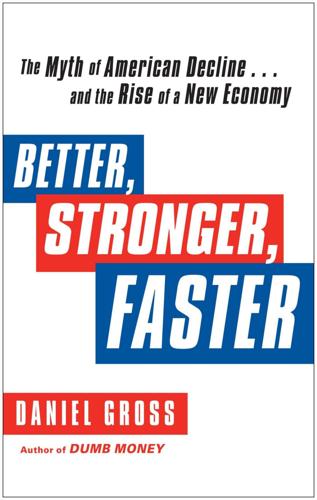
Better, Stronger, Faster: The Myth of American Decline . . . And the Rise of a New Economy
by
Daniel Gross
Published 7 May 2012
In the new world of inports, rising chunks of the population of emerging markets can now afford to pay the premium prices for the objects made by U.S. companies in their own backyard. Electronics has become a cutthroat industry in which European, Japanese, and American companies—and their Asian suppliers—struggle to wring profits from commoditized products. Here, as in so many areas, Apple stands the conventional wisdom on its head. It uses the same type of cheap Asian parts that go into HP computers or Zune music devices, whose prices only seem to fall, but manages to charge a premium through design, branding, and culture. A study by Kenneth Kraemer of the University of California at Irvine, Greg Linden of the University of California at Berkeley, and Jason Dedrick of Syracuse University found that making Apple electronic products isn’t that profitable for anybody except the owner of the brand.

The Elements of Power: Gadgets, Guns, and the Struggle for a Sustainable Future in the Rare Metal Age
by
David S. Abraham
Published 27 Oct 2015
See Rare metals Teck Resources, 184 Teddy Ruxpin (talking teddy bear), 119 Telemarketing, indium sales via, 251n7 Tellurium, xiii, 78–79, 80, 148–50, 167, 190, 207, 209, 246n40 Tenent, Robert, 217 Teng Biao, 200 Teran, Alex, 147 Terbium, 2, 4, 151, 167, 174, 206, 229 Territorial disputes, China-Japan, 22–24 Tesla, 145–47 Texas Instruments, 117, 118 Thatcher, Margaret, 30 Thermal-imaging systems, 163–65 Thin film technologies, 148–49 Thorium, 3, 57, 176 Thor Lake mine (Avalon Rare Metal), 54–56 3D printing, 221 Tin, 48, 105–7, 108 Tiomin Resources, 46–48, 54 Titanium: in aerospace industry, 162, 263n30 in airplanes, 96, 128, 156–60, 168, 274n6 commoditization of, 221 market for, 44 in mobile phones, 121 nonmilitary use of, 121, 124, 146, 162–63, 221 shape memory, 221 sources of, 46, 93, 113 U.S. research on, 206 in weaponry, 163, 168, 169 “Titanium Goose” (A-12 spy plane, “Oxcart”), 155–57, 158–59 Titanium Metal Corporation, 156 Toothbrushes, 115–17, 258n3 Toothpaste, ancient use of, 257–58n1 Toronto Stock Exchange, 50 Toshiba, 112–13, 256n42 Touch screens, 261n19 Toyota Tsusho, 108 Toys, electronic, 119–20 Trade secrets, xi Trading networks, 89–114 China, rare metal exchanges in, 96–98 China, regulatory environment in, 98–101 conflict funding, 108–12 evading export controls, 104 export quotas/ban set by China, x, 24, 240n34 Indonesia, illegal trade in, 105–8 Lehrman family, 91–96 limited suppliers, problem of, 112–13 London Metal Exchange, 101–2 overview, 89–91 precariousness of, x price bubbles, 113–14 secrecy in, 16 smuggling, 102–5 Truman, Harry S., 30 Tungsten: Allied actions on, in WWII, 239n28 China, production in, 32, 205, 240n33, 289n16 conflict tungsten, 108, 109 Congo production, 108 export quota, 240n34 in glass, 217 importance, xi, 11 in lighting, 151 patents, 211 production locations, 48 shortage fears, 207, 219 sources of, 32, 48, 93, 108, 205, 240n24, 240n33, 289n16 wartime use of, 29, 30, 239n28 in weaponry, 29, 161–62, 167 Tunna, Nigel, 96 Twitter, 126 Uganda, cassiterites from, 111 Umicore, 191 UN Intergovernmental Panel on Climate Change, 135 United States: aluminum can recycling, 285n34 Bureau of Mines closure, 222 China, trade case against, 36 on China’s materials exports, 203 cobalt supplies, 19 commodity stockpiles, 291n36 conflict materials, actions on, 110–11 Japan, embargo against, 30 rare metal security strategy, 206, 208–12 reshoring, 212 tungsten, wartime actions on, 162, 239n28.
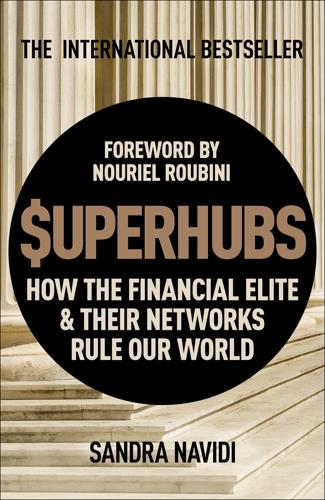
SUPERHUBS: How the Financial Elite and Their Networks Rule Our World
by
Sandra Navidi
Published 24 Jan 2017
My work, which had begun at the micro level of individual transactions and culminated at the macro level of the global economy, has provided me with a bird’s-eye view that has enabled me to recognize different patterns of network formation and certain behavioral principles. I began to realize that in a world where everything can be commoditized and automated, and in which human interactions are increasingly digitized, these select few preside over the most exclusive and powerful asset: a unique network of personal relationships that spans the globe, the cultivation of which cannot be delegated or outsourced. I have directly interacted with most of the superhubs written about in this book at invitation-only conferences and events, which I routinely attend because of my work as a macroeconomic consultant and strategic relationship manager.

Fool's Gold: How the Bold Dream of a Small Tribe at J.P. Morgan Was Corrupted by Wall Street Greed and Unleashed a Catastrophe
by
Gillian Tett
Published 11 May 2009
Deutsche’s derivatives team hired many smart traders from other banks, including several from the J.P. Morgan team. Marcus Schüler, a highly visible salesman who had worked with Tim Frost in London, and Demchak acolyte Betsy Gile both moved to Deutsche. The bank then invested impressive resources to grab a big position in the commoditized business of trading CDS. It paid off quickly. In 2003, Risk magazine designated Deutsche Bank the “Derivatives House of the Year,” knocking J.P. Morgan from that perch. Some Morgan staff started referring to Deutsche Bank as “enemy number one.” Lehman Brothers, Citigroup, Bear Stearns, Credit Suisse, UBS, and Royal Bank of Scotland all also fiercely ratcheted up their derivatives operations.

Free Money for All: A Basic Income Guarantee Solution for the Twenty-First Century
by
Mark Walker
Published 29 Nov 2015
Consider that until very recently it was nearly impossible to obtain electricity in a cost competitive manner except from a large scale producer: one’s local utility. We are approaching the crossover point where installing solar panels is more cost advantageous for many homeowners: the MOP (electricity generation equipment) is being commoditized by huge robotic solar panel factories building cheap solar panels. The process is not complete, since most home solar installations simply feed into the central grid. However, the price of batteries continues to drop, 22 so before too long, consumers will be able to go “off grid”—producing all their own electrical energy needs.

Radical Markets: Uprooting Capitalism and Democracy for a Just Society
by
Eric Posner
and
E. Weyl
Published 14 May 2018
Creators of valuable entertainments, experts in obscure languages who can aid computer translators, specialized masters of video games who can help teach computers to expertly play them as companions in multiplayer games, wine aficionados who can help train a computer nose: these are unique skills deserving of exceptional rewards. On the other hand, trying to track every detail of the ordinary use of a Facebook post is overkill and certain classes of data should be commoditized and paid an “average price” based on meeting overall quality standards, both to reduce the burden on the system and to insulate users from unnecessary risks based on whether their data end up being valuable. Third, users will not want to have to make a cost-benefit analysis of the monetary value versus the hassle cost of every online interaction.
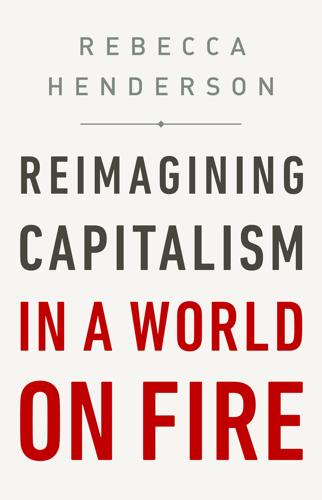
Reimagining Capitalism in a World on Fire
by
Rebecca Henderson
Published 27 Apr 2020
However, for most farmers unsustainable practices are the result of a focus on increasing yields rather than on increasing acreage. Conventional tea production entails the large-scale application of insecticides, pesticides, and fertilizers. Together they reduce soil quality and increase erosion. Years of commoditization have contributed to a downward price spiral that puts pressure on workers and the environment as farmers try to safeguard their income. Tea growers struggle to maintain production on degraded, eroding soils using ever more chemicals, further accelerating erosion and soil degradation. Tea production is also particularly vulnerable to global warming, as increasing temperatures, droughts, and floods are all likely to make growing tea more expensive and more difficult.11 The team suggested that current practices were putting the entire viability of the supply chain at risk.
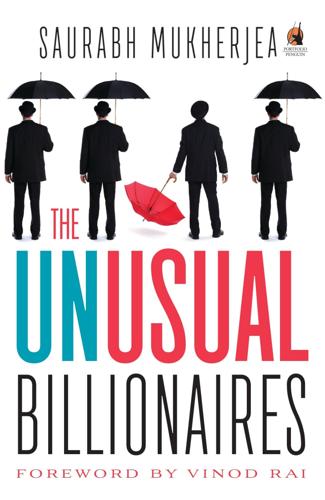
The Unusual Billionaires
by
Saurabh Mukherjea
Published 16 Aug 2016
Ambit’s building materials analysts believe that (a) Astral’s journey began through launching a differentiated product (CPVC pipes) and the firm thus developed a habit of continuously innovating to add new products to its portfolio; (b) Astral has been innovative in branding and has managed to establish its brand in a seemingly commoditized product—plastic pipes; and (c) Astral has well-established relationships with distributors/plumbers. Innovation Astral started off with an innovative product, namely CPVC. After the initial failure in the industrial segment, Engineer succeeded in the plumbing segment, as described earlier.

Golden Gates: Fighting for Housing in America
by
Conor Dougherty
Published 18 Feb 2020
All this makes land schizophrenically capitalist and socialist, creating a vacuum that allows people to see whatever system they want to see. Developers claim to buy and sell land in a “free market,” even though the prices they pay and charge are dictated by how close a piece of land is to socially constructed goods and community institutions, and of course other people. Marxists talk about commoditization and market failures but are rarely so brave as to declare what sort of list or quota system should replace money as the price of admission to thriving places. It’s complicated stuff, and once you get into the details and peel back the history and ask what sorts of policies will actually lead to a world that is more stable and more equitable, it’s hard to walk away with a belief that any sort of rigidity is the answer.
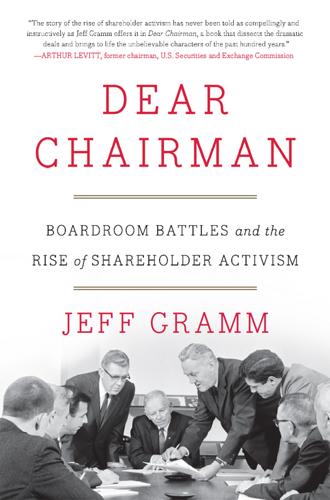
Dear Chairman: Boardroom Battles and the Rise of Shareholder Activism
by
Jeff Gramm
Published 23 Feb 2016
But when Robert Scherer’s forty-seven-year-old daughter, Karla, joined the board of directors in 1984, she quickly became disillusioned with how the company was managed. R. P. Scherer was a good, cash-generating business protected by patented technology and years of expertise. But for the previous two decades, management had used the softgel profits to diversify into much more commoditized businesses, including paper packaging and hair-care accessories. There was another problem. R. P. Scherer’s CEO was none other than Karla Scherer’s husband, Peter Fink. Karla believed her husband was pursuing an aggressive growth strategy that was not in the best interest of shareholders. She was R.

Living in a Material World: The Commodity Connection
by
Kevin Morrison
Published 15 Jul 2008
A tenth of the world’s uranium supply has so far come from the plutonium (processed uranium) in decommissioned US and Russian nuclear warheads dismantled under the Megatons to Megawatts programme.28 Lack of new supply combined with uncertainty over the future of the US–Russia pact means that the uranium price has more than quadrupled in recent years. Such is the demand for uranium that it has created tightness in the supply and demand equation. There have been several previous attempts to commoditize the uranium market. In the 1980s and 1990s, Oren Benton (through his flagship company Nuexco Trading Corporation) bought Russian uranium and sold it into Western markets. The profits he made from uranium trading were used to build a business empire that included a controlling interest in the Colorado Rockies baseball team before the business imploded under a $500 million debt in 1996.
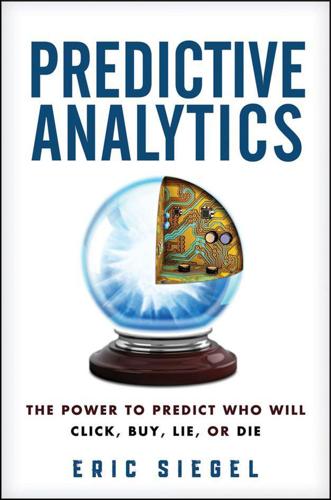
Predictive Analytics: The Power to Predict Who Will Click, Buy, Lie, or Die
by
Eric Siegel
Published 19 Feb 2013
With this word’s new meaning established, “Your fly is unzipped” is actionable (it is clear what to do—you can and should take action to remedy), but “You’re going bald” is not (there’s no cure; nothing to be done). Better yet, “I predict you will buy these button-fly jeans and this snazzy hat” is actionable, to a salesperson. Launching PA into action delivers a critical new edge in the competitive world of business. One sees massive commoditization taking place today, as the faces of corporations appear to blend together. They all seem to sell pretty much the same thing and act in pretty much the same ways. To stand above the crowd, where can a company turn? As Thomas Davenport and Jeanne Harris put it in Competing on Analytics: The New Science of Winning, “At a time when companies in many industries offer similar products and use comparable technology, high-performance business processes are among the last remaining points of differentiation.”
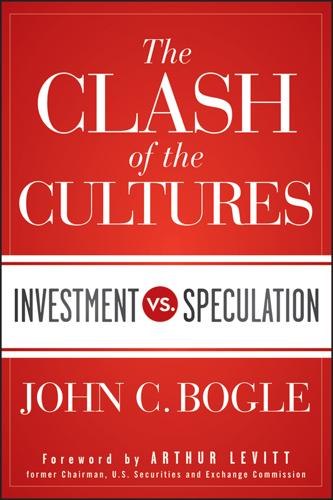
The Clash of the Cultures
by
John C. Bogle
Published 30 Jun 2012
If many fund directors and management company officials believe that ensuring compliance with fiduciary standards is not their number one priority, the industry is in for some very rough times. There will be numerous ethical if not legal violations . . . draconian legislation [will result]. The industry will be homogenized, commoditized, and dumbed down, all to the detriment of fund shareholders. On the other hand, if industry participants strive to act as fiduciaries, the industry and fund shareholders will do well. The industry’s future is in its own hands. Matt Fink’s comments are well taken. But I’m not so sure about his conclusion.
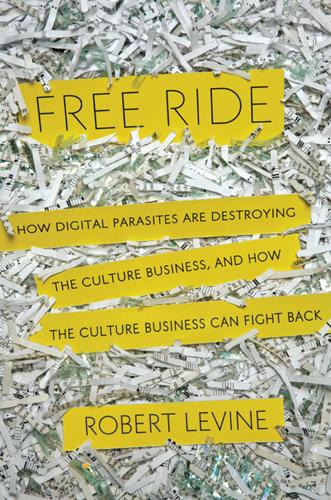
Free Ride
by
Robert Levine
Published 25 Oct 2011
“DVDs are now thirteen years old, and we’re still selling them for roughly the same price we sold them for at launch,” Singer says. In some cases, there’s more profit in selling a single DVD than the machine that plays it. “Maybe,” Singer says, “the heading of this white paper would be ‘Who’s Commoditizing Whom?’ ” Just as cheap digital music helped Apple market its iPod, so inexpensive DVD players helped Hollywood sell more DVDs. The advantage can go either way, but piracy tends to cost entertainment companies their negotiating leverage. Singer knew he needed to offer technology companies an incentive to respect copyright rather than turn a blind eye to infringement, and two things changed in the last half decade that made this easier.
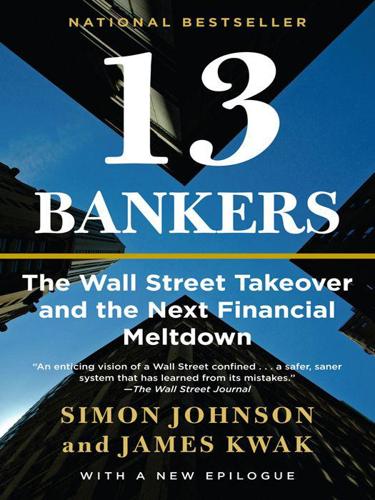
13 Bankers: The Wall Street Takeover and the Next Financial Meltdown
by
Simon Johnson
and
James Kwak
Published 29 Mar 2010
The ordinary trajectory for most products and services in the business world is for profit margins to decline as competition increases. For example, the amount that a bank could make from a plain-vanilla loan to a highly rated company was minimal, because many other banks would be willing to make that loan. Like all businesses, banks needed to invent new products that were not yet commoditized and that could command high margins. Structured products were the perfect answer. They were complex products that bank customers could not arrange on their own. Moreover, because selling these products required the ability to hedge risks in multiple markets, it was difficult for new banks to break into the business, which became dominated by a small number of players who could charge hefty fees for their services.

Coding Freedom: The Ethics and Aesthetics of Hacking
by
E. Gabriella Coleman
Published 25 Nov 2012
As Jean Comaroff and John Comaroff (2003, 457) note, the modern nation-state is one “rooted in a culture of legality”—a culture that in recent years has become ever more pervasive, especially in the transnational arena. Whether it is the constitutional recognition of multiculturalism across Latin America and parts of Africa, or new avenues of commoditization like the patenting of seeds, these new political and economic relationships are “heavily inscribed in the language of the law” (ibid.). Given the extent to which esoteric legal codes dominate so many fields of endeavor, from pharmaceutical production to financial regulation to environmental advocacy, we must ask to what extent informal legal expertise, of the sort exhibited by F/OSS developers, is a necessary or useful skill for social actors seeking to contest such regimes, and where and how advocates acquire legal literacy.

The Devil's Derivatives: The Untold Story of the Slick Traders and Hapless Regulators Who Almost Blew Up Wall Street . . . And Are Ready to Do It Again
by
Nicholas Dunbar
Published 11 Jul 2011
But impossible to ignore was how Moody’s and S&P had encouraged a boom in SIVs and SIV-lites that had piled into subprime mortgage bonds. The last straw for Sossidis was seeing Sigma lumped together as part of the “SIV sector” in Moody’s and S&P reports. “You rated all these other competitors, you haven’t applied the same high standards we have in running our business,” he fumed. “They’re increasingly commoditized, increasingly flaky, and there’s a guaranteed problem coming here. Look at how much work we’ve done: we explained our improvements to you in 1999, we got it down in 2003. We think we’ve done a bang-up job improving the business and making it more resilient to a liquidity shock. You need to differentiate us more because there’s a liquidity crisis coming and we’re going to get tarred with the SIV brush if you don’t help us reposition ourselves further away from the SIVs.”

Remix: Making Art and Commerce Thrive in the Hybrid Economy
by
Lawrence Lessig
Published 2 Jan 2009
Said Om Malik, founder of GigaOmniMedia: 80706 i-xxiv 001-328 r4nk.indd 232 8/12/08 1:55:55 AM EC O N O M Y L E S S O N S 233 I wondered out loud if this culture of participation was seemingly help[ing] build business on our collective backs. So if we tag, bookmark, or share, and help del.icio.us or Technorati or Yahoo become better commercial entities, aren’t we seemingly commoditizing our most valuable asset—time? We become the outsourced workforce, the collective, though it is still unclear what is the payoff. While we may (or may not) gain something from the collective efforts, the odds are whatever “the collective efforts” are, they are going to boost the economic value of those entities.

Rise of the Robots: Technology and the Threat of a Jobless Future
by
Martin Ford
Published 4 May 2015
Beyond the prospect of fewer cars per capita, there could also be a significant threat to luxury automotive brands. If you don’t own the car and will use it for only a single trip, you have little reason to care what make or model it is. Cars could cease to be status items, and the automobile market might well become commoditized. For these reasons, I think it’s a good bet that the auto manufacturers will cling pretty tightly to keeping someone in the driver’s seat—even if he or she rarely touches the controls. Automotive manufacturers could be poised to face the kind of dilemma that powerful companies often encounter when disruptive technologies come along.
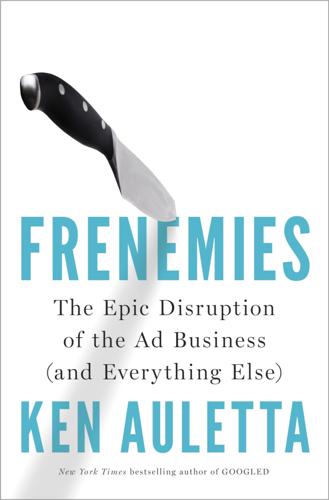
Frenemies: The Epic Disruption of the Ad Business
by
Ken Auletta
Published 4 Jun 2018
IBM iX acquired her company and together she said they set out “to rethink the agency world.” The “hole in the market” they saw was that data was not being used to zero in on what individuals wanted or needed and to solve large corporate problems. “Agencies are in a race to the bottom. They are losing talent, and the reason is that they have commoditized their creativity.” Their corporate bosses at the holding companies, she believes, dwell too much on finances, including selling more thirty- and sixty-second ads. “The people that will win the race in the end will be the people who can fundamentally refine and make new products out of data.” This data, for instance, tells IBM that large numbers of millennials don’t want to own cars, they want to share them.
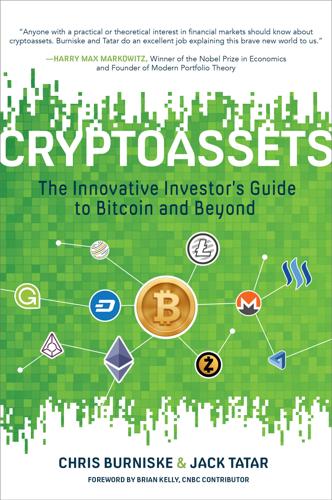
Cryptoassets: The Innovative Investor's Guide to Bitcoin and Beyond: The Innovative Investor's Guide to Bitcoin and Beyond
by
Chris Burniske
and
Jack Tatar
Published 19 Oct 2017
Monegro’s thesis is as follows: The Web is supported by protocols like the transmission control protocol/Internet protocol (TCP/IP), the hypertext transfer protocol (HTTP), and simple mail transfer protocol (SMTP), all of which have become standards for routing information around the Internet. However, these protocols are commoditized, in that while they form the backbone of our Internet, they are poorly monetized. Instead, what is monetized is the applications on top of the protocols. These applications have turned into mega-corporations, such as Facebook and Amazon, which rely on the base protocols of the Web and yet capture the vast majority of the value.

The Quantum Magician
by
Derek Künsken
Published 1 Oct 2018
And when taught properly, the Puppets had probably been obedient, knowing nothing other than joyful service. But none of the Puppets of today had been born to be obedient. They struggled with faith, seeking a way to satisfy their religious needs, and the wishes of the Numen had no value. William had never been depersonalized, commoditized. It was breath-taking in its horror. He needed to finish his job and get away from the Puppets the only way he could. After his lights were out, he snuck to check the door in the zero g of Port Stubbs. A trooper was strapped to the wall at the end of the corridor. William’s stomach cramped with his indecision.
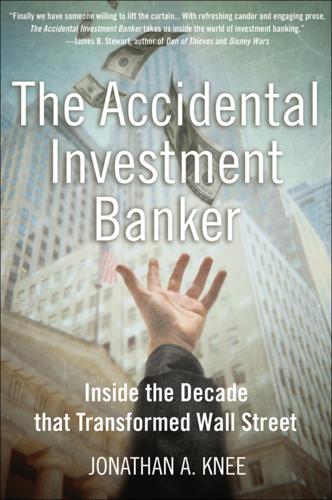
The Accidental Investment Banker: Inside the Decade That Transformed Wall Street
by
Jonathan A. Knee
Published 31 Jul 2006
The speed with which even those who enter the business for the “right” reasons, rather than simply following the pack, become disillusioned seems to be getting shorter each year. Chernow is certainly correct about the macroeconomic dynamics that cast a shadow across the investment banker–client relationship. Ironically, those financing businesses that have become most commoditized are precisely those that are the bread and butter of serving the Fortune 500 companies that investment bankers most long to advise. The only remaining profitable niches are, he points out, “junk bonds, initial public offerings, and other forms of financing that primarily cater to smaller and medium-sized firms without access to the capital markets.”21 In other words, the preferred financing vehicles of the SLCs that investment banks have so much trouble getting people to cover!

How I Built This: The Unexpected Paths to Success From the World's Most Inspiring Entrepreneurs
by
Guy Raz
Published 14 Sep 2020
She spent countless hours experimenting with the molecular structure of the milk proteins to make sure her ice cream had a very specific mouthfeel. She paid dogged attention to all the little things that cost a lot of money and cut into the margins of a business in an industry that had not experienced any kind of artisanal renaissance since Ben & Jerry’s in the late 1970s and so was subject to commoditization and constant downward pressure on price. Still, Jeni persisted in her quest for perfect ice cream flavors and in 2011 wrote a cookbook about them that received national attention. Her company landed back on the national map once more in March 2015 when it launched a series of ice creams based on colors from the Henri Matisse Cut-Outs show at the Museum of Modern Art in New York City, while at the same time opening its first store in Los Angeles—its most competitive market and the farthest from its headquarters in Columbus, Ohio, to date.
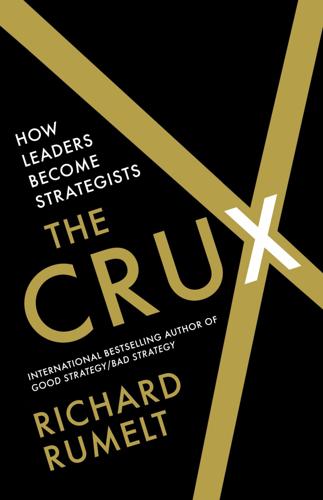
The Crux
by
Richard Rumelt
Published 27 Apr 2022
Plus, its file sharing is oriented around pushing users to adopt its own versions of word processing, number crunching, and presentation routines. Many users cite the fact that Dropbox is not one of the tech giants as a reason for choosing it. Still, as in 2015, the drive among the tech giants to commoditize cloud storage remains “worrisome.” Like the springwater in the Auvergne, storing a megabyte online will become close to a perfect commodity, and participants will be playing a destructive Bertrand game. Dropbox has, in my view, the best offering, and switching costs will keep its user base from rapid evaporation.

California Burning: The Fall of Pacific Gas and Electric--And What It Means for America's Power Grid
by
Katherine Blunt
Published 29 Aug 2022
He had most recently been chief financial officer at the Chicago Stock Exchange and had worked for more than a decade at the Chicago Board of Trade. But he knew nothing about electricity, a far cry from the agricultural and industrial products that flashed on the screens in downtown Chicago. His job was to help commoditize it for trading across the West. It was a hugely important role, and it excited him. He saw it as a chance to make history and began studying up. Building an electricity market is a daunting challenge. Unlike physical commodities such as oil and gas, electricity is subject to a special set of constraints.

Pandemic, Inc.: Chasing the Capitalists and Thieves Who Got Rich While We Got Sick
by
J. David McSwane
Published 11 Apr 2022
The CCDH analyzed the pandemic activities of Kennedy and other members of the group they dubbed “the disinformation dozen” in a 2021 report: “Pandemic Profiteers: The Business of Antivaxx.” The group found that this dirty dozen account for about 65 percent of all anti-vaccine propaganda spread on Facebook and Twitter. Kennedy’s far from the biggest beneficiary of commoditized lies. That designation falls to an osteopath named Joseph Mercola. Based in Cape Coral, Florida, Mercola runs the world’s most popular “alternative health” news site, which urges visitors to reject consensus medical advice and treatments in lieu of megadoses of vitamins, unproven supplements, or equipment, which he conveniently sells on his “Mercola Marketplace.”

Palo Alto: A History of California, Capitalism, and the World
by
Malcolm Harris
Published 14 Feb 2023
Fast-growing Zhengzhou granted Gou $1.5 billion in cash along with a laundry list of other promises to build what came to be known as iPhone City for him.16 Within a year, the place had 100,000 workers, and by 2017 the factory had a daily capacity of 500,000 units and assembled half the world’s iPhones, which meant that objects responsible for more than a quarter of Apple’s revenue passed through the hands of Zhengzhou workers.17 So much for American capitalists losing China to Mao. As the single most successful commoditization of that trend, the iPhone provides 60 percent gross margins, to be split among the manufacturers.18 But as Apple’s stock price rises, Foxconn’s slice of the pie narrows as the firm contends with rising wages, high capital investment requirements, and competition.19 When a Chinese firm such as Huawei attempts to cut out the Taiwanese labor contractors and American capitalists, it faces the wrath of the U.S.
…
After all, Indigenous resistance is animated by our ancestors’ refusal to be forgotten, and it is our resolute refusal to forget our ancestors and our history that animates our visions for liberation. Indigenous revolutionaries are the ancestors from the before and before and the already forthcoming.15 The future need not be synonymous with the exhaustion of earth, the liquidation of the organized working class, the full commoditization of our time and environment. What is the point of being a species with the dual gifts of analysis and invention if we can’t stop ourselves from despoiling the only home we’ve ever had? The forfeit of Stanford’s vast accumulated wealth is the biggest immediate step toward a habitable planet I believe we can take at such a low cost.

The Quants
by
Scott Patterson
Published 2 Feb 2010
Returns had dwindled in nearly all of their strategies as more and more money poured into the group. The fleeting inefficiencies that are the very air quants breathe—those golden opportunities that Fama’s piranhas gobble up—had turned microscopically thin, as Fama and French’s disciples spread the word about growth and value stocks and stat arb became a commoditized trade copied by guys with turbo-charged Macs in their garages. The only way to squeeze more cash from the wafer-thin spreads was to leverage up—precisely what had happened in the 1990s to Long-Term Capital Management. By 1998, nearly every bond arbitrage desk and fixed-income hedge fund on Wall Street had copied LTCM’s trades.

Planet Ponzi
by
Mitch Feierstein
Published 2 Feb 2012
As far as he was concerned, the amount of money he had at risk was the amount he’d lent to Joe Schmoe minus the amount that Joe had repaid. The only risk to which Jefferson Smith was exposed was that some idiot in the office might not be able to do simple arithmetic. The situation is utterly different today. For all that securities are designed to be tradable—a commoditized asset class using largely standardized legal language, conferring the same rights no matter which investor owns the security—they oftentimes don’t trade much at all. Sometimes that doesn’t matter too much. If you own an A-rated corporate bond, and you’ve done your homework and reckon that the A-rating is appropriate for the borrower in question, you can get a pretty good idea of the price your bond will trade at simply by looking at the prices at which other A-rated bonds are traded today.
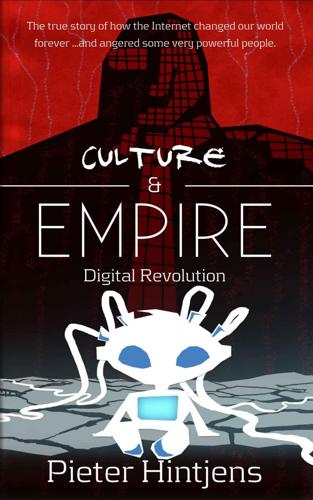
Culture & Empire: Digital Revolution
by
Pieter Hintjens
Published 11 Mar 2013
By 2000, email was widely and freely available to everyone through web services like Hotmail. The digital economy is built around either accepting or distorting this process of cost gravity. There are many ways to make a lot of money in the digital economy. One way is to create a company based on a not-yet-commoditized product and sell it to a larger, less agile firm (Hotmail, Flickr, YouTube and many others followed this model). Another is to make and give away products that other (slower) firms are still trying to sell, and use this to open the market to new services (Google does this very well). A third approach is to create your own captive society and force it to use your products where, without real competition, prices can remain artificially high (Microsoft and more recently Apple are good examples of this).

The Blockchain Alternative: Rethinking Macroeconomic Policy and Economic Theory
by
Kariappa Bheemaiah
Published 26 Feb 2017
The Blockchain is many things - it is a shared ledger, a medium to issue money, a means of exchanging value in a decentralized way and a consensus mechanism that offers the possibility of achieving global financial inclusion. But what it is more than anything else is the digital embodiment of trust. A Blockchain is in essence, a codified truth-verification machine that has the ability to commoditize trust through a protocol on a decentralized network. The key word in that phrase is decentralized because markets are decentralized. An organization may be centralized with various hierarchies. But markets are decentralized and as we have seen in chapter 2 (refer the part on FinTech), and are getting increasingly so.

The Fifth Domain: Defending Our Country, Our Companies, and Ourselves in the Age of Cyber Threats
by
Richard A. Clarke
and
Robert K. Knake
Published 15 Jul 2019
As we’ve seen, a zero day is a vulnerability that is not known to defenders and therefore has yet to be patched. Aitel, from an offensive perspective, is concerned that security firms are actually finding zero day attacks with increasing regularity, to the point that detection of zero days is becoming commoditized. “Microsoft’s Advanced Threat Detection, CrowdStrike, Kaspersky, the new FireEye stuff, all that stuff actually works and that is a huge change,” Aitel says. Thinking from an attacker’s perspective, he is not happy about it. It’s getting harder to find vulnerabilities in new systems and even harder to exploit them.

Dark Towers: Deutsche Bank, Donald Trump, and an Epic Trail of Destruction
by
David Enrich
Published 18 Feb 2020
But in the 1980s, they underwent a revolution, mutating from simple structures—tracking dairy prices, for example—to complex new breeds that, say, tracked the price of a particular type of milk in Vermont in certain months and that would gain or lose value based partly on the performance of another dairy product, in another state, in a different time period. In theory, anything could be linked—milk with car parts, orders for silicon chips with the price of peanut butter—as long as you could find parties willing to bet on both sides. As banking became increasingly commoditized, specializing in derivatives was a way to stand out—a corner of the banking business not yet dominated by any of the established powers. Mitchell’s hunch was that derivatives were the future—and if his company moved fast and decisively, Merrill had a rare chance to bust in and overtake some of the Street’s biggest bond-trading houses, firms like the mighty Salomon Brothers.

Super Thinking: The Big Book of Mental Models
by
Gabriel Weinberg
and
Lauren McCann
Published 17 Jun 2019
However, it didn’t invest heavily enough in the technology relative to its competitors, the way Intel did when pivoting to microprocessors. Kodak simply wasn’t paranoid enough. The overall market for photography quickly and fundamentally shifted from the high-margin film business to a highly commoditized digital camera business, and Kodak simply wasn’t fast enough to adapt. It didn’t use its flywheel from the film business to fuel its path to domination in digital, and its share of the exploding digital photography market fell as a result. In 2007 Kodak was number four in digital photography and by 2010 they fell to seventh, at 7 percent market share, behind Canon, Sony, Nikon, and others.

New Laws of Robotics: Defending Human Expertise in the Age of AI
by
Frank Pasquale
Published 14 May 2020
In Simon Head’s thoughtful distinction, optimizing medical responses to the new volumes and varieties of data will be a matter of practice, not predetermined process.42 Both diagnostic and interventional radiologists will need to take up difficult cases anew, not as simple sorting exercises. Given all the data streams now available, one might assume that rational health policy would deepen and expand the professional training of radiologists. But it appears that the field is instead moving toward commoditization in the US.43 Ironically, radiologists themselves have a good deal of responsibility here; to avoid nightshifts, they started contracting with remote “nighthawk” services to review images.44 That, in turn, has led to “dayhawking” and to pressure on cost-conscious health systems to find the cheapest radiological expertise available—even if optimal medical practice would recommend closer consultations between radiologists and other members of the care team for both clinical and research purposes.
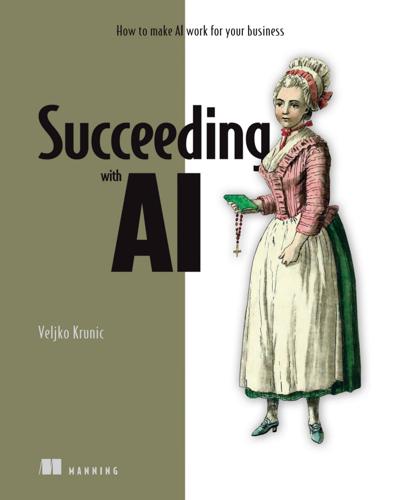
Succeeding With AI: How to Make AI Work for Your Business
by
Veljko Krunic
Published 29 Mar 2020
TIP In most business verticals, it isn’t trivial at all to monetize AI. And while many tools can help you get there, it’s unlikely that these tools can solve monetization problems for you. Even if there are tools that let you monetize by just installing and running them, what you’re dealing with is a commoditized use case. Heck, someone already has a product that does it! The early focus for your business should be on finding AI projects that provide a concrete business value. Tools are enablers of those projects. TIP A salesman might advise you to “Build a large data lake and unleash your data scientists on it; there has to be something in all that data.”
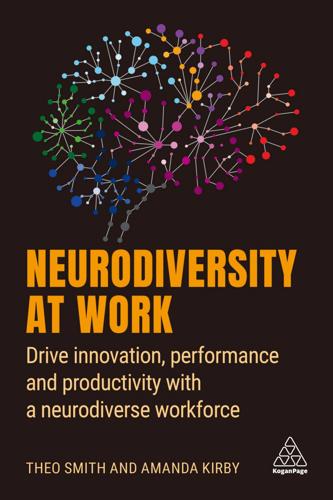
Neurodiversity at Work: Drive Innovation, Performance and Productivity With a Neurodiverse Workforce
by
Amanda Kirby
and
Theo Smith
Published 2 Aug 2021
Autism, dyslexia, coordination and language disorders, intellectual disabilities all over are represented in unemployment, incarceration, poverty and poor long-term health outcomes,5,6 yet the neurodiversity movement is laser focused on one area: white, male, autistic technologists. This is not what the neurodiversity paradigm promised to deliver. Without making a dent in standardization of education and entry-level work, the neurodiversity activism field is a commoditization, a greedy sell-out and the epitome of elitism. Those who make it through are supposed to hold the door open for others to follow, not slam it shut in their faces.’ Nancy talks about what she considers to be ‘bad science’: ‘Biased research paradigms and asking the wrong questions have influenced our categorization process.
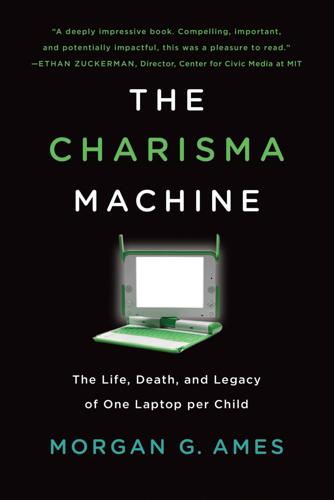
The Charisma Machine: The Life, Death, and Legacy of One Laptop Per Child
by
Morgan G. Ames
Published 19 Nov 2019
Though a crude measure, the Google Ngram Viewer shows only two books in its index that mention the “factory model of education” before 1990 but hundreds that mention it between 1990 and 2017. Although this in part reflects the corpus that has been indexed, it also highlights the anxiety behind the commoditized shift in education after the publication of the federal report A Nation at Risk: The Imperative for Education Reform in 1983, as described in Tyack and Cuban, Tinkering toward Utopia, 1–2, 115, 144. 70. Papert writes, “Thus, not only do good education ideas sit on the shelves, but the process of invention is itself stymied.
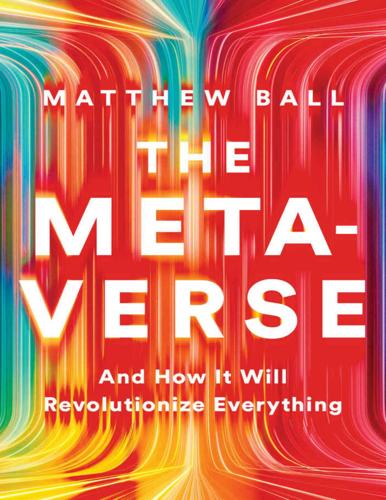
The Metaverse: And How It Will Revolutionize Everything
by
Matthew Ball
Published 18 Jul 2022
Steam is seen as one of the most important innovations in PC gaming history, and a critical reason the segment remains as large as console gaming, even with its greater complexity of use and higher cost of entry (a decent gaming PC still costs more than $1,000, while meeting the specifications of newer consoles requires $2,000 or more). But nearly 20 years later, its technical innovations in game distribution, rights management, and online services have largely been commoditized. In some cases, users and publishers skip them altogether. Many PC gamers, for example, now use Discord for audio chat, rather than Steam’s voice chat. The rise of cross-platform gaming also means that most in-game trophies and play records are awarded and managed by a game-maker, rather than by Steam.

Hacking Capitalism
by
Söderberg, Johan; Söderberg, Johan;
In Peter Ekeh’s presentation of social exchange theories, he writes that: “[…] social exchange processes yield for the larger society a moral code of behavior which acquires an independent existence outside the social exchange situation and which informs all social, economic, and political interpersonal relationships in society.” Peter Ekeh, Social Exchange Theory—The Two Traditions (London: Heinemann, 1974), 58. 26. Igor Kopytoff “The Cultural Biography of Things: Commoditization as Process” in ed. Arjun Appadurai, The Social Life of Things—Commodities in Cultural Perspective (Cambridge: Cambridge University Press, 1986). 27. When Richard Barbrook wrote his article he set out to present an alternative to the cyber-libertarian, free market perspective that was then dominant on the Internet.
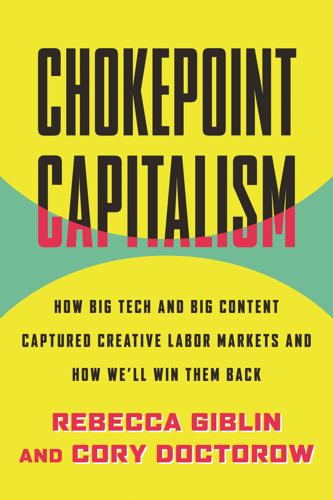
Chokepoint Capitalism
by
Rebecca Giblin
and
Cory Doctorow
Published 26 Sep 2022
Public libraries have some of this same information, and they guard it fiercely. But Amazon feeds it into an insatiable machine designed to extract maximum profit. If you, as a reader, feel uncomfortable with this, that’s too bad: DRM makes it illegal for you to read or listen to the books you’ve purchased on surveillance-free platforms. But our individual exposure and commoditization is just the beginning of the harm that was wrought. Amazon used books to extract data on consumers and used that data to slowly subsume all else. The data that came out of physical books and later ebooks and audiobooks all fed into that flywheel that gave it ever more information, which enabled it to attract ever more customers and ever more products, and which has ultimately ended up giving it the power to squeeze its suppliers and workers to near asphyxiation.

Poverty for Profit
by
Anne Kim
“I am forty-three years old, married for twenty years, with two children ages fourteen and ten,” Glazer told the committee. “If your kidneys failed tomorrow, wouldn’t you want the opportunity to live? Wouldn’t you want to see your children grow up?”251 Medicare eligibility transformed access to dialysis from a treatment for the lucky few to something standard, commoditized, and, ultimately, a multi-billion-dollar industry—all during slightly more than a decade. It’s a stark testament to government’s power in creating and shaping a new market for treatment. With a guaranteed stream of government payment for every dialysis treatment performed, dialysis clinics began springing up nationwide.

The Coming Wave: Technology, Power, and the Twenty-First Century's Greatest Dilemma
by
Mustafa Suleyman
Published 4 Sep 2023
Building and disseminating biological and chemical weapons were huge challenges for Aum Shinrikyo. As a small, fanatical coterie operating in an atmosphere of paranoid secrecy, with only limited expertise and access to materials, they made mistakes. As the coming wave matures, however, the tools of destruction will, as we’ve seen, be democratized and commoditized. They will have greater capability and adaptability, potentially operating in ways beyond human control or understanding, evolving and upgrading at speed, some of history’s greatest offensive powers available widely. Those who would use new technologies like Aum are fortunately rare. Yet even one Aum Shinrikyo every fifty years is now one too many to avert an incident orders of magnitude worse than the subway attack.

In-N-Out Burger
by
Stacy Perman
Published 11 May 2009
Private Equity IPO,” Orange County Business Journal, August 14–20, 2006. “It’s a total cult restaurant. People would chase that one.”: David Ellis, “An IPO Wish List For 2007,” http://www.cnn.com/money.com, December 6, 2006. “Starbucks chairman Howard Schultz released a memo”: Starbucks memo, February 14, 2007; Starbucks chairman warns of “the commoditization of the Starbucks experience,” first posted February 23, 2007, http://starbucksgossip.com/. “Mark Taylor had assumed the role of president of In-N-Out Burger.”: Nancy Luna, “Ailing Leader of In-N-Out Burger Dies,” Orange County Register, August 5, 2006. “Taylor was now the sole trustee of the Snyder family trusts”: In the Matter of Lynsi L.
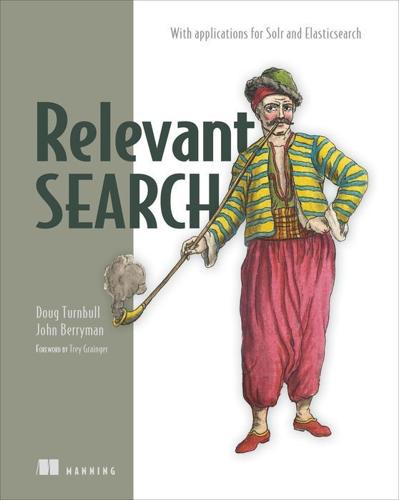
Relevant Search: With Examples Using Elasticsearch and Solr
by
Doug Turnbull
and
John Berryman
Published 30 Apr 2016
Powerful open source technologies have arisen to deliver fast, feature-rich search (Apache Lucene) in a distributed, highly scalable way with little-to-no coding required (Apache Solr and later Elasticsearch). This has provided the necessary infrastructure for almost any developer to build a “generally relevant” real-time search engine for the big data era. As more of the hard search infrastructure problems have been solved and their solutions commoditized, the competitive differentiators have moved away from providing fast, scalable search and more toward delivering the most relevant matches for a user’s information need. In other words, delivering “generally relevant” results is no longer sufficient—Google and other top search engines have now trained users to expect search applications to almost read their minds.
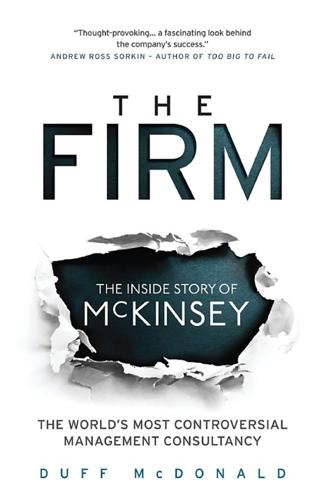
The Firm
by
Duff McDonald
Published 1 Jun 2014
“Of course, it might not have felt that way to all those MBAs, engrossed in their charts and their teams. They were people who went to good schools but who weren’t very intellectual. They were very successful grinds. “I think the fundamental problem at McKinsey is that they have no real product,” she continued. “What do you do when there’s nothing there? You commoditize things that other people consider part of life, like personality and intelligence. You turn them into ‘units.’ They objectify basic human ideas and force them into ‘workflows’ and ‘dichotomies’ and ‘frameworks.’ These are not intellectuals. They are institutional people. They are people who spent a lot of time in the library memorizing things.

Plutocrats: The Rise of the New Global Super-Rich and the Fall of Everyone Else
by
Chrystia Freeland
Published 11 Oct 2012
Hoffman understands that the revolutionary waves he surfs so expertly have created a more polarized society, with both winners and losers. “The gap is growing between those who know the new career rules and have the new skills of a global economy, and those who clutch to old ways of thinking and rely on commoditized skills,” he writes. But even as he paints a macro picture of a volatile world with clear winners and losers, Hoffman holds out the hope that each of us can be one of the winners. His book, called The Start-Up of You, is a cheerful business advice primer whose premise is that all of us should mimic the strategies of billionaire innovators like himself.

Geek Heresy: Rescuing Social Change From the Cult of Technology
by
Kentaro Toyama
Published 25 May 2015
It swallowed up Ballantine, Bantam, Crown, Dell, Doubleday, Fawcett, Fodor’s, Knopf, and so on down the alphabet. In short, Amazon and its digital ways are an extrapolation – an amplification – of pre-digital patterns. On the one hand, more books of greater variety are being published. There is a growing population of writers, and publishing is being commoditized.5 On the other hand, the books that receive widespread attention and land on best seller lists are a dwindling proportion of the total. The first trend is sometimes called “the long tail”; the second represents a “winner-take-all” economy.6 Commentators tend to highlight one or the other of these phenomena, but both are happening at once.

Androids: The Team That Built the Android Operating System
by
Chet Haase
Published 12 Aug 2021
There’s an interesting dynamic of mobile OSs that Dianne and the team were forced to deal with at the time, which would resurface (more successfully) later on Android. “It was really hard to get phone manufacturers interested in someone else’s platform. They did their own software and they were terrified of phones becoming the same as PCs, where there’s one software vendor that owns the platform that commoditizes the hardware.” That model of hardware companies creating their own OS worked when software was simpler. Handling phone calls and contact information for a flip phone was well within the capabilities of all of those companies. But when the required capabilities and feature sets kept increasing, especially after the iPhone launched, it was difficult for these companies to keep up.
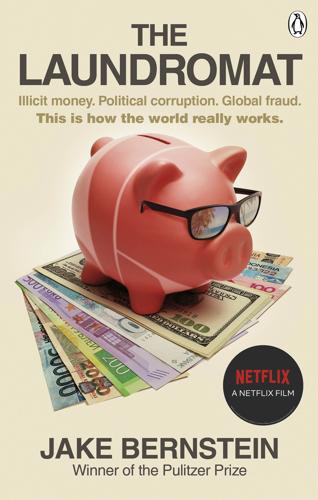
The Laundromat : Inside the Panama Papers, Illicit Money Networks, and the Global Elite
by
Jake Bernstein
Published 14 Oct 2019
Mossfon Panama suggested three possibilities from among its staff. Their last names were Allen, Wilson, and Wong. Each was young but also offered another important selling point. As Zollinger pointed out, they had names that sounded good internationally, their very blandness another layer of anonymity that could be commoditized. Mossfon prepared forms authorizing Scott’s replacement with another director, which they placed in the files of the active companies. When it was time for the nominee directors to perform an official act for the company—open a bank account or approve a contract, for example—the newly appointed director performed the act.

Tracers in the Dark: The Global Hunt for the Crime Lords of Cryptocurrency
by
Andy Greenberg
Published 15 Nov 2022
“Silk Road doesn’t really sell drugs, it sells insurance and financial products,” the Carnegie Mellon computer engineering professor Nicolas Christin put it at the time, expressing his amazement at the Silk Road’s smooth management of online transactions in an entirely new, anonymous medium. “It doesn’t really matter whether you’re selling T-shirts or cocaine. The business model is to commoditize security.” * * * · · · It was months later, in February 2012, when the Silk Road went beyond being a faceless marketplace and began to develop a personality. Or rather, a persona. “Silk Road has matured, and I need an identity separate from the site,” the site’s anonymous administrator wrote.
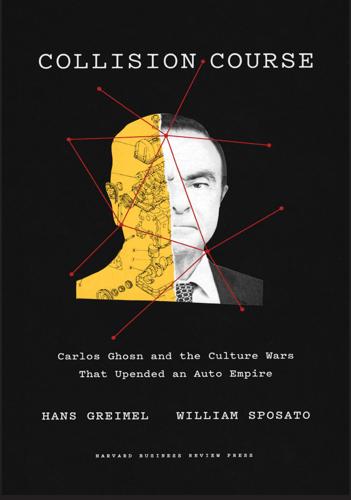
Collision Course: Carlos Ghosn and the Culture Wars That Upended an Auto Empire
by
Hans Gremeil
and
William Sposato
Published 15 Dec 2021
Bob Lutz, the former General Motors vice chairman who pooh-poohed the idea of saving Nissan from bankruptcy, penned a provocative vision of the coming collision in an essay for Automotive News called “Kiss the Good Times Goodbye.” Human-driven cars would be “legislated off the highways” as the safety of autonomous vehicles exceeded that of the traditional hand-piloted kind. Those highways would become an endless stream of commoditized canister cars zipping along at 120 mph. “These modules won’t be branded Chevrolet, Ford or Toyota. They’ll be branded Uber or Lyft or who-ever else is competing in the market,” the auto industry legend wrote. People who still know how to drive would amaze their friends, just like people today who know how to saddle up and ride a horse.15 Lutz’s timeline for this to happen?
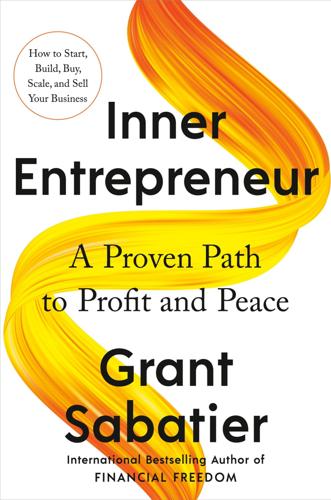
Inner Entrepreneur: A Proven Path to Profit and Peace
by
Grant Sabatier
Published 10 Mar 2025
However, AI is making it easier for those without development skills to build SaaS products, which lowers the entry barrier for new entrepreneurs and makes it easier for SaaS companies to be copied and potentially more difficult for new and existing SaaS companies to compete. As these skills become more commoditized and their functionality easier to copy, a strong brand and story become even more essential. Like any subscription business, retaining customers while adding new ones is challenging. SaaS businesses can also require a lot of money and be stressful to operate, especially if you take on venture capital funding.

The Lost Art of Dress
by
Przybyszewski, Linda
The book is sprightly and well-written, and it suggests new directions for research in the history of fashion and of women. Przybyszewski offers useful critiques of the restrictive clothing of the nineteenth century, the sloppy clothing of the 1960s, the periodic infantilizing of women through dress design, and the increasing commoditization of products and pleasures. She mourns the loss of the elegance of the 1930s, when women looked both liberated and chic.” —Lois Banner, Professor Emerita, Department of History and Gender Studies Program, University of Southern California, author of Marilyn: The Passion and the Paradox “This is an important work.
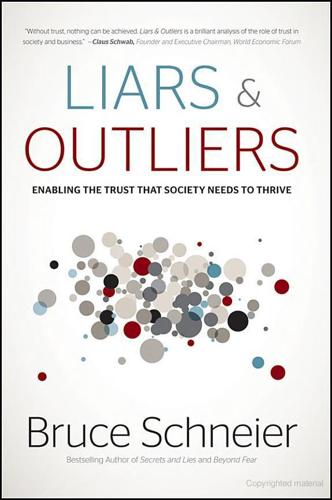
Liars and Outliers: How Security Holds Society Together
by
Bruce Schneier
Published 14 Feb 2012
(3) Traditional examples of experiential goods include vacations, college educations, therapists, and management consulting. This is opposed to something like a desk chair or a can of Coke, where you pretty much know what you're getting before you buy it. Other experiential goods are restaurant dinners, fine art, home improvements, and a move to a new city. Even things that are pretty much commoditized have aspects of experience: a new car, a big-screen television, or a pet gerbil. We know from psychology that people tend to overestimate how much happier they expect a big purchase to make them. Security systems suffer from this same psychological problem; even if people knew exactly how much security a system would give them, they couldn't predict how much safer that additional security would make them feel
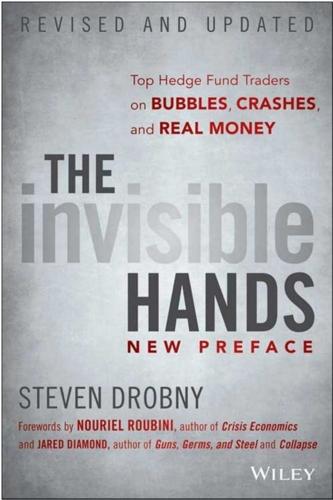
The Invisible Hands: Top Hedge Fund Traders on Bubbles, Crashes, and Real Money
by
Steven Drobny
Published 18 Mar 2010
I believe commodities and other real assets drive movements in other markets more so than vice versa. Real assets have been and will continue to be a major source of opportunity going forward. I have a very philosophical view about how to define a commodity. Globalization means almost everything is becoming commoditized. My definition of commodities is broad, not only including real assets but currency and even culture. If you look through the real asset lens first, you can have an advantage. Can you explain how looking through the real asset lens gives you an advantage? Looking at real assets first entails major supply and demand analysis of all goods, services, and commodities, rather than just focusing on boilerplate economic analysis.

Inside the House of Money: Top Hedge Fund Traders on Profiting in a Global Market
by
Steven Drobny
Published 31 Mar 2006
Distinguishing between the guys who really shouldn’t be there and the guys who are just okay becomes difficult.The really great ones stick out and that’s why you get a bifurcation in the fees different hedge funds can charge.You now see a few superstar fund managers who are able to charge a 3 or 4 percent management fee and a high percentage of the profits. The rest are becoming commoditized. Do you think the performance of superstar fund managers is affected by increasing amounts of money under management? Sure, it has to at some point.Take an extreme case where all the money is in the hands of one guy who is the only person trading markets; it then becomes very difficult to make money.
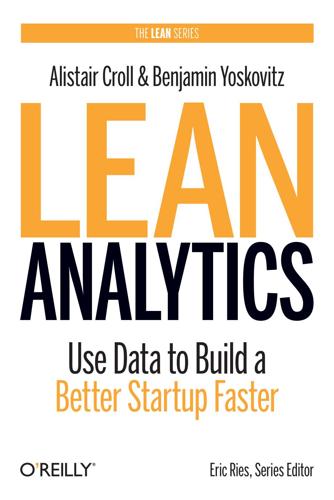
Lean Analytics: Use Data to Build a Better Startup Faster
by
Alistair Croll
and
Benjamin Yoskovitz
Published 1 Mar 2013
If you have a question mark (high growth but nascent market share), you’ll be focusing on growing market share through organic (virality) or inorganic (customer acquisition) means. If you have a star, and the market’s growth is stalling, you need to optimize revenues and reduce costs so your marginal cost of product delivery is healthy. That way you can survive the coming commoditization and price wars. On the other hand, if there’s a disruption in the industry that might expand the market—such as the rise of mobile technology, or the emergence of international demand—you’ll be focusing on increasing growth rate to return a cash cow to star status. Companies tend to try to improve what they have, which is one of the reasons that incumbents get disrupted.
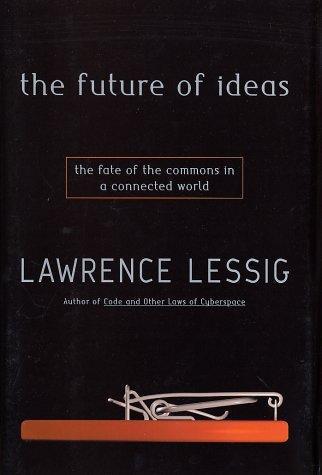
The Future of Ideas: The Fate of the Commons in a Connected World
by
Lawrence Lessig
Published 14 Jul 2001
[It] is taking away our power every day and will have eroded it irretrievably by the time broadband is pervasive on the course we are on right now.["] Bank, 26. The core of the threat, Gates believed, was Netscape. “As Netscape's standards became more important than Windows',” Gates wrote, Netscape's browser would “commoditize the underlying operating system.” Ibid., 27. Gates was equally concerned about Microsoft's embrace of Java. As he wrote after reading an analysis that pushed neutral development of Java, “This scares the hell out of me. . . . It's still very unclear to me what our [OSes] will offer to Java that will make them unique enough to preserve our market position.”

The Patient Will See You Now: The Future of Medicine Is in Your Hands
by
Eric Topol
Published 6 Jan 2015
Roy Pa, of the Stanford Center for Professional Development, said, “We can have microanalytics on every paper, every test, right down to what media each student prefers.”13 In fact, this ability to virtually track each student sets up the new field of “big-data science for education” or “learning informatics.” As would be expected with any new, radically different model, there are detractors and controversy—about the difference between an online and in-person experience, about assessment and evaluation, and about the commoditization of leading professors and ultimately the degradation of higher education.8 These detractors raise legitimate and important issues that must be kept in mind, but there are good reasons to treat MOOCs as models for how to change medicine. Both education and medicine are going through an economic crisis, and neither have sustainable archetypes.

Virtual Competition
by
Ariel Ezrachi
and
Maurice E. Stucke
Published 30 Nov 2016
Given the scale benefits of learning by doing, car manufacturers might prefer (or be forced) to license Google’s technology (including the daily or hourly updates from the millions of Google cars on the road). (If Apple did not license its driverless car technology, then it would lack the scale, and its quality would lag.) The car manufacturers also see a potential relationship in which they manufacture the car’s “dumb” commoditized parts (like Foxconn Technology Group for Apple), while the super-platforms earn the lion’s share of profits from technology and design. Thus the leading car manufacturers are undertaking AI research.31 The above Frenemy scenario between and within platforms also takes place between the operators on these platforms.

Braiding Sweetgrass
by
Robin Wall Kimmerer
In the food deserts of the South Side there is no such choice, and the dishonor in that inequity runs far deeper than the food supply. I am stopped in my tracks in the produce section. There on a Styrofoam tray, sheathed in plastic and tagged at the princely sum of $15.50 per pound, are Wild Leeks. The plastic presses down on them: they look trapped and suffocated. Alarm bells go off in my head, alarms of commoditization of what should be regarded as a gift and all the dangers that follow from that kind of thinking. Selling leeks makes them into mere objects and cheapens them, even at $15.50 per pound. Wild things should not be for sale. Next stop is the mall, a place I try to avoid at all costs, but today I will go into the belly of the beast in service to my experiment.
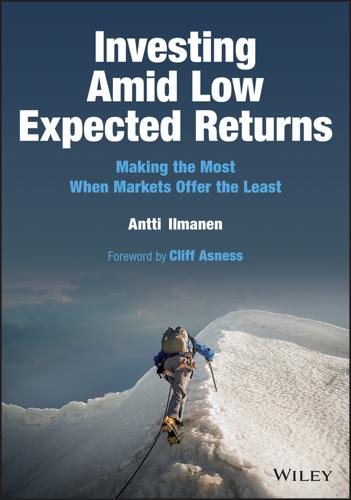
Investing Amid Low Expected Returns: Making the Most When Markets Offer the Least
by
Antti Ilmanen
Published 24 Feb 2022
Over time this alpha morphed into an alternative risk premium or even market beta exposure. Figure 6.11 supports this claim, as we see currency carry's equity market correlation rising over time. One interesting question is why different carry strategies exhibit different degrees of beta risk. Is the currency carry strategy riskier because it has become more popular and this “commoditization” made it more systematic? Or are there some simpler, more native differences between carry strategies in varying asset classes. My answer is the latter. Carry is not earned in isolation but reflects the underlying assets' beta risks. The simplest contrast is between a credit carry strategy based on corporate credit spreads and a stock selection carry strategy based on dividend yields.
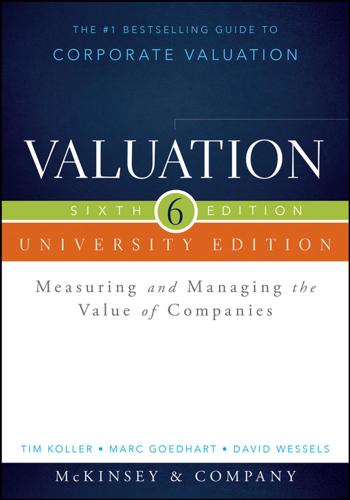
Valuation: Measuring and Managing the Value of Companies
by
Tim Koller
,
McKinsey
,
Company Inc.
,
Marc Goedhart
,
David Wessels
,
Barbara Schwimmer
and
Franziska Manoury
Published 16 Aug 2015
An installed base like Bloomberg’s is a powerful driver of competitive advantage. Rational price discipline In commodity industries with many competitors, the laws of supply and demand will drive down prices and ROIC. This applies not just to obvious commodities such as chemicals and paper, but also to more recently commoditized products and services, such as airline seats. It would take only a net increase of 5 to 10 percent in airline ticket prices to turn the industry’s aggregate loss to an aggregate profit. But each competitor is tempted to get an edge in filling seats by keeping prices low, even when fuel prices and other costs rise for all competitors.
…
Industries where returns on invested capital clearly are trending up are rare. Two examples are health-care equipment and aerospace and defense. Innovation in health-care equipment has enabled the industry to produce higher-value-added, differentiated products such as artificial joints, as well as more commoditized products, including syringes and forceps. As mentioned earlier, companies in aerospace and defense reduced their capital intensity as government provided up-front funding for many more contracts. There is similar evidence of sustained rates of return at the company level. We measured the sustainability of company ROICs by forming portfolios of companies earning a particular range of ROIC in each year (e.g., above 20 percent) and then tracking the median ROIC for each portfolio over the following 15 years.

Inflated: How Money and Debt Built the American Dream
by
R. Christopher Whalen
Published 7 Dec 2010
Beginning in late 1970s the move from charge cards to consumer revolving debt issuance changed the consumption patterns of an entire nation. The monthly debt service cost, not the value of the good or service, became the criteria used for making a purchase. Beside just super-charging consumption it commoditized luxury goods. Remember when the family on your block that owned a Caddy or Mercedes really was financially more wealthy? By the 1980s, the consumption function had shifted upward because of the expanding availability of credit. That trend is now reversed as banks, individuals, and households are de-leveraging.

Uncommon Grounds: The History of Coffee and How It Transformed Our World
by
Mark Pendergrast
Published 2 Jan 2000
In the late twenties he entered the packaged coffee field, offering only one top-grade blend for a premium price and advertising it steadily. Martinson’s great rival was Sam Schonbrunn, who produced the high-quality Savarin brand (“the coffee served at the Waldorf Astoria”). Martinson and Schonbrunn demonstrated that quality coffees could rise above the fray of commoditized price-cutting firms—a lesson that had to be relearned periodically in the years to come. They thrived during the Depression. The once-dynamic National Coffee Roasters Association found itself outmoded and outflanked by the wagon peddlers, chain stores, and green coffee importers. In 1932 the NCRA reluctantly bound together with all the other coffee men to form the Associated Coffee Industries of America, hoping to squeeze general promotional funds from the likes of Jewel, A & P, Standard Brands, and General Foods.

Endless Money: The Moral Hazards of Socialism
by
William Baker
and
Addison Wiggin
Published 2 Nov 2009
Such public relations may be an insurance policy against the days that may come when their necks will be demanded as recompense for their misdeeds. No longer burdened by the downside, which was transferred to taxpayers, lenders took advantage of the government guarantee to the hilt. They pleased the palate of the beast by grinding fat into its meat, manufacturing trillions of commoditized mortgages for its consumption, marbleized with sub-620 FICO score credit, with as much efficiency and copious output as was seen when our industry converted from producing goods to building tanks and planes in World War II. For its part, in the credit bubble the public chose to be liberal rather than conserve its resources, for it, too, favored the pleasure of the Self-Indulgence 303 present over the discomfort of saving for the future.

Accelerando
by
Stross, Charles
Published 22 Jan 2005
Gambling on a continuation of the worst aspects of the human condition – disease, senescence, and death – looks like a good way to lose money, and a deflationary spiral lasting almost fifty hours has taken down huge swaths of the global stock market. Genius, good looks, and long life are now considered basic human rights in the developed world: even the poorest backwaters are feeling extended effects from the commoditization of intelligence. Not everything is sweetness and light in the era of mature nanotechnology. Widespread intelligence amplification doesn't lead to widespread rational behavior. New religions and mystery cults explode across the planet; much of the Net is unusable, flattened by successive semiotic jihads.
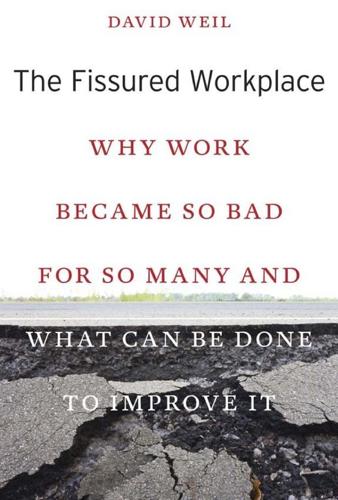
The Fissured Workplace
by
David Weil
Published 17 Feb 2014
One of the largest suppliers is Foxconn, a Taiwanese-based electronics manufacturer that employs a staggering 1.2 million Chinese workers in its plants and assembles an estimated 40% of smartphones, computers, and other electronic devices sold in the world.42 In addition to Foxconn, contract companies like Flextronics, Jabil Circuit, Celestica, and Sanmina-SCI have grown in scale and scope and represent manufacturing powerhouses on their own (albeit unknown to most computer purchasers). Negotiations between these contract manufacturers and leading companies like Apple and HP are not the same as the arm’s-length, commoditized relationships that characterize dealings with smaller suppliers. Even so, profitability remains at the forefront of the supply chain: according to Locke et al., the five most profitable electronics firms (HP, IBM, Apple, Dell, and Cisco) took in cumulative revenues of $350 billion in 2009, earning $122 billion in gross profits from them (or about 35% profits as a percentage of revenue).
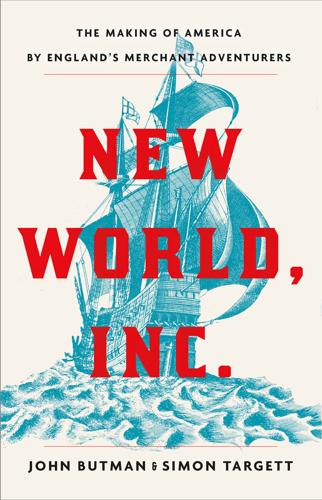
New World, Inc.
by
John Butman
Published 20 Mar 2018
News of the disaster reached Smythe and his fellow leaders in October 1609, when a ship from Jamestown returned to England, carrying a letter from Gabriel Archer, one of the original colonists. Archer reported the “absence” of Sir Thomas Gates and warned that, given the loss of the flagship’s provisions, the colonists would not be able to devote themselves to commercial activities. You “must pardon us,” he wrote, “if you find not [the] return of commodit[ies] so ample as you may expect.” He said the colonists would have to “seek sustenance first” and only then “labour to content you afterwards.”3 Soon after, another ship arrived in London from Jamestown, this one with an unexpected passenger aboard: John Smith. As president of the colony, Smith had faced persistent opposition.

Track Changes
by
Matthew G. Kirschenbaum
Published 1 May 2016
Bergin and Thomas Haigh, as well as a personal history from WordStar cofounder Seymour Rubinstein. In their introduction, Paul E. Ceruzzi and Burton Glad assert that “the true impact of the personal computer was that it allowed software, previously a labor-intensive and often customized activity sold to a limited number of customers, to become commoditized and mass-produced,” and they identify the two most significant software genres as spreadsheets and word processing, noting that VisiCalc and WordStar both debuted in 1979 (4). See also Ceruzzi’s A History of Modern Computing (Cambridge, MA: MIT Press, 2000). As of this writing, the only book-length scholarly history of word processing is in German: Till A.

Amazon Unbound: Jeff Bezos and the Invention of a Global Empire
by
Brad Stone
Published 10 May 2021
Thompson had competed with Chinese vendors for years; he was the seller who was once told, “Bernie, I’m sorry, but I’m going to run you over,” by Steven Yang, the otherwise genteel founder of the Chinese consumer electronics seller Anker. Despite that vow, and unlike the other former Amazon allies I talked to, Plugable was still thriving. Thompson had overcome identical products from AmazonBasics by keeping prices low and quality high, and he constantly launched new gadgets as the old ones became commoditized. But Thompson still harbored the sneaking fear that Amazon might suspend his listings at any time. In mid-2019, like Paul Saunders, Thompson capitalized on his goodwill with the company to get an audience in Seattle and delivered a twenty-page PowerPoint presentation outlining his dependence on the company and the danger he faced when products disappeared from the site arbitrarily.

Fancy Bear Goes Phishing: The Dark History of the Information Age, in Five Extraordinary Hacks
by
Scott J. Shapiro
largest DDoS mitigation companies in the world: Ryan Brunt, Prakhar Pandey, and Damon McCoy, “Booted: An Analysis of a Payment Intervention on a DDoS-for-Hire Service” (presented at the Workshop on the Economics of Information Security, California, June 2017), 5, http://damonmccoy.com/papers/vdos.pdf. no technical knowledge required: In 2010, researchers discovered that twelve out of the top twenty malware in the world were sold using a pay-per-install model, in which cybercriminals pay for the number of devices they want infected: Juan Caballero et al., “Measuring Pay-per-Install: The Commoditization of Malware Distribution,” Proceedings of the 20th USENIX Security Symposium, August 8, 2011, www.usenix.org/legacy/events/sec11/tech/full_papers/ Caballero.pdf. fourteen gigabits/second: Krebs, “Israeli Online Attack Service.” Hack Forums once did: Brian Krebs, “Hackforums Shutters Booter Service Bazaar,” Krebs on Security, October 31, 2016, https://krebsonsecurity.com/2016/10/hackforums-shutters-booter-service-bazaar/.

Spies, Lies, and Algorithms: The History and Future of American Intelligence
by
Amy B. Zegart
Published 6 Nov 2021
In reality, imagery analysis requires considerable skill and training to know how shapes, shadows, sizes, scales, textures, perspectives, and contexts can obscure or delineate different objects seen from space, viewed from directly overhead, which is generally an unfamiliar vantage point.75 And nuclear imagery requires understanding the nuclear fuel cycle so that the analyst knows what to look for in the first place—like signs of ventilation and air conditioning systems necessary for underground gas centrifuge facilities or large open halls required for autoclaves and other machinery.76 The real value of satellite imagery lies in the analysis of what it means.77 Pictures may be commoditizing, but analysis is not. David Sandalow, who served in senior positions at the Department of Energy, Department of State, and White House warned that mistakes can be easily made and rapidly spread. “Without strong experience and training, it can be relatively easy to see proof of sinister intent in a benign image, or to miss details that would be conclusive to a knowledgeable photo interpreter.”78 That’s exactly what happened in 2011, when a former Pentagon strategist teaching at Georgetown University led his students on a Chinese nuclear missile hunt.
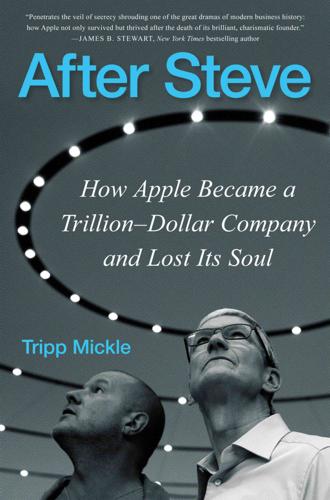
After Steve: How Apple Became a Trillion-Dollar Company and Lost Its Soul
by
Tripp Mickle
Published 2 May 2022
FAR AWAY FROM CALIFORNIA in New York, a museum curator was mulling over the higher value people placed on what was made by hand than what was made by machine. It struck Andrew Bolton as archaic for society to automatically designate handmade goods as luxurious and exclusive while it deemed machine-made items mediocre and commoditized. As the leader of the Metropolitan Museum of Art’s Costume Institute, he wanted to challenge those preconceived notions with an exhibit that would force people to ask: Can I even tell the difference? Bolton, who had joined the museum a decade earlier, was fashion’s most influential storyteller.

Blood in the Machine: The Origins of the Rebellion Against Big Tech
by
Brian Merchant
Published 25 Sep 2023
This debate involves workers building technology themselves, too. When Google and Microsoft sought lucrative military contracts, tech workers launched #techwontbuildit, in stark opposition to the projects that in some cases helped tank them. Crypto and NFTs were besieged by critics concerned that they use too much energy, aimed to commoditize the last corners of the digital commons, and were clearing houses for fraudsters and scammers. (Sure enough, crypto crashed in 2022, due largely to widespread fraud.) Andreas Malm’s widely read 2021 book How to Blow Up a Pipeline advances the argument that after decades of attempts have failed to peacefully and democratically address climate change, the best viable option is physically destroying fossil-fuel technologies and infrastructure.

The Relentless Revolution: A History of Capitalism
by
Joyce Appleby
Published 22 Dec 2009
Alan Greenspan, for one, pointed to the dangers of an “infectious greed” while speaking to Congress in 1997 as chairman of the Federal Reserve Board. Nor is greed the only thing that people hold against capitalism. I’ve made a little list, and it includes such charges as responding to short-term opportunities to the neglect of long-term effects, dispensing power without responsibility, promoting material values over spiritual ones, commoditizing human relations, monetizing social values, corrupting democracy, unsettling old communities, institutions, and arrangements, and rewarding aggressiveness and—yes—greed.20 Two other capitalist responsibilities have cast long shadows forward: intractable poverty and a deteriorating environment.
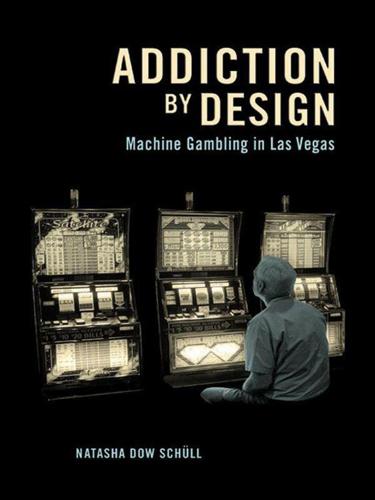
Addiction by Design: Machine Gambling in Las Vegas
by
Natasha Dow Schüll
Published 15 Jan 2012
From a Marxist perspective, Harvey (1989) and Jameson (1991) similarly argued that strategies of industrial Fordism had not been retired as much as they had been intensified within new forms of time-space compression; the underlying logic of capitalist accumulation remained the same. CHAPTER 2: ENGINEERING EXPERIENCE 1. Cummings 1997, 64, 63. 2. Before the commoditization of gambling lent it a new, productive value within a changing economy, it was regarded as “an occasion of pure waste,” as Caillois characterized play activities (1979 [1958], 5). The association of play with nonproductivity had much to do with its lack of a material product (Malaby 2007), an association that has waned with the increasing prevalence of “immaterial” forms of labor and consumption within the service economy (Hardt 1999; Negri 1999; Terranova 2000; Courtwright 2001, 2005; Dibbell 2006, 2007, 2008; Andrejevic 2009).

MacroWikinomics: Rebooting Business and the World
by
Don Tapscott
and
Anthony D. Williams
Published 28 Sep 2010
Take Nettwerk Records, home to artists such as Avril Lavigne, Sarah McLachlan, Ron Sexsmith, the Barenaked Ladies, Sum 41, and Dido. The label’s cofounder, Terry McBride, thinks the key to success in an industry reshaped by consumer-controlled distribution is to monetize the one thing you can’t commoditize—the emotive value of the music experience. And although McBride supports copyrights, he does not tow the usual industry line on intellectual property rights. He says the solution is not to stem the flow of technology, but to understand which technologies consumers are using and then find creative ways to make music part of the experience.

The Ripple Effect: The Fate of Fresh Water in the Twenty-First Century
by
Alex Prud'Homme
Published 6 Jun 2011
Disputes over the control of supplies, and the privatization of utilities, have become increasingly common across the country—from Atlanta, Georgia, to Stockton, California—and around the world, from China to Bolivia. In some cases, privatizing water leads to better service; in many cases, it results in higher fees; occasionally, it has led to social upheaval and violence, as people protest the commoditization of an essential resource. Geetha Angara was proud of her work at the Passaic Valley treatment plant, and she always conducted her water tests conscientiously. On the day she went missing, she was alone by the water tank for only a short time. That afternoon, colleagues noticed an odd sight: an uneaten sandwich on Angara’s impeccable desk; they began to search for her but did not call the police for ten hours.
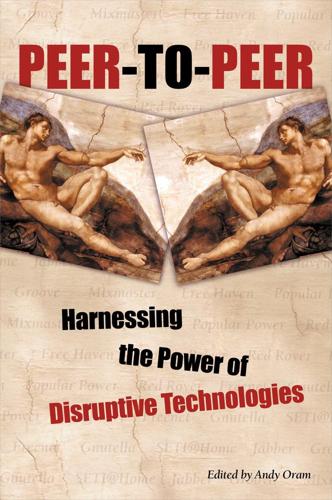
Peer-to-Peer
by
Andy Oram
Published 26 Feb 2001
The user positioning (the benefit to the user) was best articulated by Bob Young of Red Hat, who insisted that what Red Hat Linux offers to its customers is control over their own destiny. The list of core competencies is much more focused and actionable. The most successful open source communities do in fact understand something about distributed software development in the age of the Internet, organizing developer communities, using free distribution to gain market share, commoditizing markets to undercut dominant players, and creating powerful brands for their software. Any aspiring open source player needs to be good at all of these things. We’ve replaced the negative messages used against free software with directly competing messages that counter them. For instance, where free software was mischaracterized as unreliable, we set out very explicitly to demonstrate that everyone counts on open source programs, and that the peer review process actually improves reliability and support.
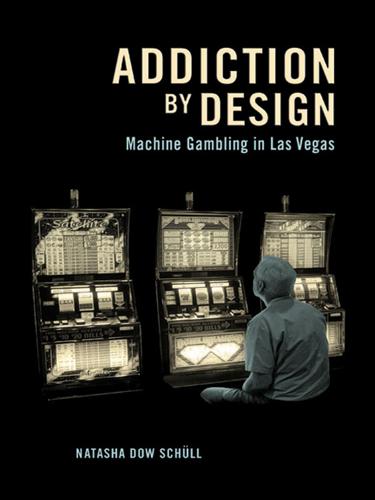
Addiction by Design: Machine Gambling in Las Vegas
by
Natasha Dow Schüll
Published 19 Aug 2012
From a Marxist perspective, Harvey (1989) and Jameson (1991) similarly argued that strategies of industrial Fordism had not been retired as much as they had been intensified within new forms of time-space compression; the underlying logic of capitalist accumulation remained the same. CHAPTER 2: ENGINEERING EXPERIENCE 1. Cummings 1997, 64, 63. 2. Before the commoditization of gambling lent it a new, productive value within a changing economy, it was regarded as “an occasion of pure waste,” as Caillois characterized play activities (1979 [1958], 5). The association of play with nonproductivity had much to do with its lack of a material product (Malaby 2007), an association that has waned with the increasing prevalence of “immaterial” forms of labor and consumption within the service economy (Hardt 1999; Negri 1999; Terranova 2000; Courtwright 2001, 2005; Dibbell 2006, 2007, 2008; Andrejevic 2009).

Aerotropolis
by
John D. Kasarda
and
Greg Lindsay
Published 2 Jan 2009
If you can afford to invest in face-to-face meetings and travel, then by all means do it. There’s no way to avoid human contact, especially when you’re in a bleeding-edge industry—you can’t even explain this stuff on the phone. Having said that, the software industry is going through a major restructuring. It’s becoming commoditized. And although we still concentrate in Walldorf, Paris, and Palo Alto, at some point even those locations are going to start affecting the bottom line. All of the software companies have major, major physical plants around the world. And I think those are going to start going away,” Las Colinas included.

The Long Twentieth Century: Money, Power, and the Origins of Our Times
by
Giovanni Arrighi
Published 15 Mar 2010
Marx’s general formula of capital (MCM ') can therefore be interpreted as depicting not just the logic of individual capitalist investments, but also a recurrent pattern of historical capitalism as world system. The central aspect of this pattern is the alternation of epochs of material expansion (MC phases of capital accumulation) with phases of financial rebirth and expansion (CM' phases). In phases of material expansion money capital “sets in motion” an increasing mass of commodities (including commoditized labor-power and gifts of nature); and in phases of financial expansion an increasing mass of money capital “sets itself free” from its commodity form, and accumulation proceeds through financial deals (as in Marx’s abridged formula MM '). Together, the two epochs or phases constitute a full systemic cycle of accumulation (MCM').

This Is Service Design Doing: Applying Service Design Thinking in the Real World: A Practitioners' Handbook
by
Marc Stickdorn
,
Markus Edgar Hormess
,
Adam Lawrence
and
Jakob Schneider
Published 12 Jan 2018
Whichever of these applies, the need for innovation is driven by a changing and super-connected (business) world, an immense shortening of business cycles, and a general ubiquity of technology and information which makes it easier than ever to copy. If an offering has value and is easy to reproduce, then it will be copied directly or indirectly, legally or illegally by people who have not had the development costs and can offer it cheaper. Even if they offer it at the same price, the result is the same – commoditization. There will be two or more similar offerings on the market, and a price war will loom. Innovation is often focused on pleasing the customer, because new features are not new for long. In various models of customer satisfaction, 20 it’s clear that aspects of an offering that are initially seen as delightful soon become expected.

The Social Life of Money
by
Nigel Dodd
Published 14 May 2014
Besides Polanyi’s double movement thesis, other examples of such an approach include Richard Titmuss’s study of blood donation and Fred Hirsch’s work on the “commercialization effect” (Titmuss 1971; Hirsch 1978). According to Zelizer, all of these thinkers unnecessarily dramatize the moral dangers of the market with “nightmarish visions of a fully commoditized world” (Zelizer 2011: 370). Zelizer argues that culture is not exogenous to money. Rather, money is the site on which culture and economy reciprocally interact. This is the basis of her critique of Simmel: “Suffering from a sort of intellectual colour blindness, Simmel’s brilliant analysis of money failed to capture the rich new social hues emerging in a monetary economy as people improvised different ways to personalise and differentiate monies” (Zelizer 1997: 201).

The Innovators: How a Group of Inventors, Hackers, Geniuses and Geeks Created the Digital Revolution
by
Walter Isaacson
Published 6 Oct 2014
She used the same open development process when she served as the technical lead in coordinating the creation of COBOL, the first cross-platform standardized business language for computers.79 Her instinct that programming should be machine-independent was a reflection of her preference for collegiality; even machines, she felt, should work well together. It also showed her early understanding of a defining fact of the computer age: that hardware would become commoditized and that programming would be where the true value resided. Until Bill Gates came along, it was an insight that eluded most of the men.12 Von Neumann was disdainful of the Eckert-Mauchly mercenary approach. “Eckert and Mauchly are a commercial group with a commercial patent policy,” he complained to a friend.

The Code: Silicon Valley and the Remaking of America
by
Margaret O'Mara
Published 8 Jul 2019
“Semiconductor processing technology is today’s crude oil,” Sanders liked to say, “and the people who control the crude oil will control the electronics industry.”2 And that’s what gave Jerry Sanders heartburn. America still made the vast majority of the world’s microchips, but Japanese firms were gaining—fast. Even worse, Japan had started hacking into the most technologically advanced end of the business. Silicon Valley had invented and commoditized 4K RAM memory chips, but now the state of the art was 16K RAM. Japanese firms now accounted for more than forty percent of that market.3 More ominously, Japan had started a government-funded research consortium a few years earlier to develop the next wave of super-powerful chips, cramming many thousands more integrated circuits on one sliver of silicon to create computers thousands of times more powerful than any seen before.

Four Battlegrounds
by
Paul Scharre
Published 18 Jan 2023
While only the most capable actors may be able to build the largest, most advanced models, the combination of open publication and improved computational efficiency through hardware and algorithmic improvements may mean that within six to twenty-four months other research labs are able to replicate their findings. Within five to ten years, AI breakthroughs may be commoditized, available to anyone through a free app on their mobile device. Control over leading-edge compute may give some actors an edge over others, but any advantage is likely to, at best, give leaders only a few years’ head start over competitors. Compute is likely to remain a key element in AI competition and power, but compute alone won’t determine which countries are able to most effectively translate AI into military, economic, and political power.

Solr in Action
by
Trey Grainger
and
Timothy Potter
Published 14 Sep 2014
Providing more information at query time based on domain knowledge, your users’ behaviors, and the preferences of your users generally serves as the quickest and most impactful way to improve relevancy within your search application. The remainder of this chapter will focus upon ways to integrate this information and measure the overall impact upon the relevancy of your searches. 16.5. Personalized search and recommendations As search technology has become commoditized through the growth of open source technologies like Solr, organizations have been able to move beyond investing time in basic keyword matching to solving much harder problems within their search applications. One of these problems is how to move beyond a transactional search experience, in which a user is forced to type a keyword and browse through results, often filtering down to specific documents with the use of facets and providing an initial inspection of the content through the use of hit highlighting.

Americana: A 400-Year History of American Capitalism
by
Bhu Srinivasan
Published 25 Sep 2017
For software companies, it was far easier to write a program once for a large market than to write separate versions, so Microsoft became the de facto industry standard for which everyone wrote programs. This reinforcing efficiency, where one standard was cost-effective for both the hardware makers and the software makers, turned Microsoft’s operating system into a natural monopoly. Microsoft would so commoditize the hardware part, since all IBM PCs worked the same on it, that IBM would eventually exit the personal computer business, seeing its diminished profitability. The largest profits in the computer business turned out to be in software—Microsoft made money each time a computer was sold with its operating system, which the vast majority of computers sold over the next twenty years would have—and the benefits of this natural monopoly would accrue to the man who never built computers.

Tools of Titans: The Tactics, Routines, and Habits of Billionaires, Icons, and World-Class Performers
by
Timothy Ferriss
Published 6 Dec 2016
Ramit convinced me to send plain-text email for my 5-Bullet Friday newsletter, which became one of the most powerful parts of my business within 6 months. Some Tools of His Trade Infusionsoft: Complete sales and marketing automation software for small businesses, with a particular focus on “funnels” Visual Website Optimizer: A/B testing software for marketers Advice from a Mentor “Tactics are great, but tactics become commoditized.” TF: If you understand principles, you can create tactics. If you are dependent on perishable tactics, you are always at a disadvantage. This is why Ramit studies behavioral psychology and the elements of persuasion that appear hardwired. One of his most-gifted books is Age of Propaganda by Anthony Pratkanis and Elliot Aronson, and his favorite copywriting book is an oldie: The Robert Collier Letter Book, originally published in 1931.

Hunger: The Oldest Problem
by
Martin Caparros
Published 14 Jan 2020
It’s not because our market is based on the rates determined at the Exchange. Rather, it’s because there’s some motherfucking governor who is using the resources in his province for his own benefit, using the government airplane to take Caribbean vacation. I’m just saying that there are complicated problems that have nothing to do with the market or the commoditization of food.” I had heard similar arguments before. In other books, in other contexts, I have called this idea “honestism”: the supposition that the most the important factor in a society’s economic situation is the honesty of its leaders—above and beyond the operations of market capitalism and the distribution of assets—or a lack thereof.

Americana
by
Bhu Srinivasan
For software companies, it was far easier to write a program once for a large market than to write separate versions, so Microsoft became the de facto industry standard for which everyone wrote programs. This reinforcing efficiency, where one standard was cost-effective for both the hardware makers and the software makers, turned Microsoft’s operating system into a natural monopoly. Microsoft would so commoditize the hardware part, since all IBM PCs worked the same on it, that IBM would eventually exit the personal computer business, seeing its diminished profitability. The largest profits in the computer business turned out to be in software—Microsoft made money each time a computer was sold with its operating system, which the vast majority of computers sold over the next twenty years would have—and the benefits of this natural monopoly would accrue to the man who never built computers.

Accessory to War: The Unspoken Alliance Between Astrophysics and the Military
by
Neil Degrasse Tyson
and
Avis Lang
Published 10 Sep 2018
Knowing there were still dimmer things we weren’t detecting, we would have yearned for bigger telescopes to collect more light. We would have needed money, engineers, another dome, another mountaintop. In the early days of CCD technology, chips were small, with few pixels. Some were manufactured in university or industrial laboratories specifically to serve the astrophysicist. But as the CCD became commoditized, especially because of demand for digital cameras, the price, quality, and pace of improvement grew rapidly. The CCD transformed astrophysics, giving new life to small telescopes and endowing large ones with previously unimaginable powers of detection. Some researchers made entire careers of redoing earlier brilliant work whose authors had approximated and speculated about what could be lurking beyond the available data.

Seeking SRE: Conversations About Running Production Systems at Scale
by
David N. Blank-Edelman
Published 16 Sep 2018
. :-) 15 Thank you, Randy Bias. 16 Thank you, Bernard Golden. 17 Except, of course, where they aren’t. 18 Leading to the inevitable addition “Poultry < Insects.” Or whatever slightly less bug-related mascot we eventually land on FaaS offerings like Lambda, GCF, Azure Functions, and OpenWhisk. Protozoa perhaps? 19 Which given how much shorter the reign of each successive paradigm in the Mainframe > Commoditization > Virtualization > Containerization timeline has been — and how much less mature when production services began shifting to it — should be approximately 8:45 AM next Tuesday. 20 Error budgets have been covered extensively in O’Reilly’s first SRE handbook as well as in an inordinate number of conference talks (of which I am perhaps guilty of having given an inordinate percentage).
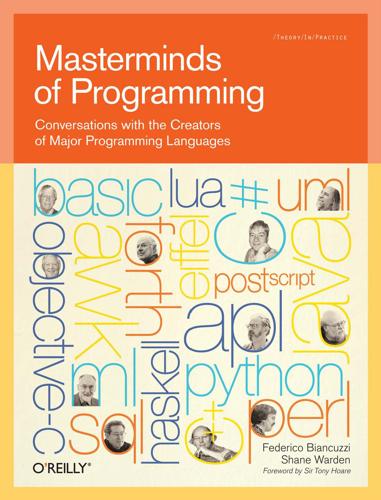
Masterminds of Programming: Conversations With the Creators of Major Programming Languages
by
Federico Biancuzzi
and
Shane Warden
Published 21 Mar 2009
In something as trivial as clothing this may be acceptable, but with the size of our investment in software this is wasteful, expensive, and absurd. The latest trend is “being agile” (as exemplified by Scrum). The “agile” movement has reminded us that people matter first and foremost when developing software. This is not really new—this theme resurfaces every decade or so as naïve managers try to mechanize and commoditize what is basically an exercise in creative problem solving. It is important that we not lose track of how to work as a team, how to collaborate, how to document what we do, and how to plan our work on daily, weekly, and monthly timescales, etc. But in bringing these things back to focus, much is lost or obscured by new terms for old things, creating the illusion of something completely new.

Designing Data-Intensive Applications: The Big Ideas Behind Reliable, Scalable, and Maintainable Systems
by
Martin Kleppmann
Published 17 Apr 2017
The network is the only way those machines can communicate—we assume that each Unreliable Networks | 277 machine has its own memory and disk, and one machine cannot access another machine’s memory or disk (except by making requests to a service over the network). Shared-nothing is not the only way of building systems, but it has become the domi‐ nant approach for building internet services, for several reasons: it’s comparatively cheap because it requires no special hardware, it can make use of commoditized cloud computing services, and it can achieve high reliability through redundancy across multiple geographically distributed datacenters. The internet and most internal networks in datacenters (often Ethernet) are asyn‐ chronous packet networks. In this kind of network, one node can send a message (a packet) to another node, but the network gives no guarantees as to when it will arrive, or whether it will arrive at all.
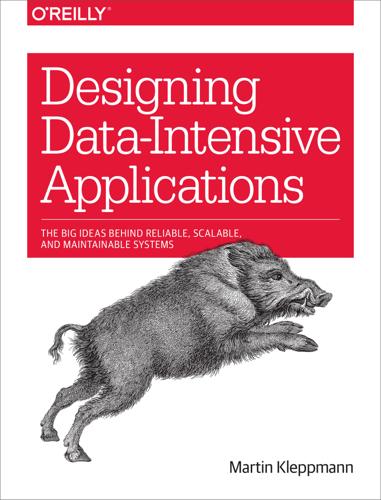
Designing Data-Intensive Applications: The Big Ideas Behind Reliable, Scalable, and Maintainable Systems
by
Martin Kleppmann
Published 16 Mar 2017
The network is the only way those machines can communicate—we assume that each machine has its own memory and disk, and one machine cannot access another machine’s memory or disk (except by making requests to a service over the network). Shared-nothing is not the only way of building systems, but it has become the dominant approach for building internet services, for several reasons: it’s comparatively cheap because it requires no special hardware, it can make use of commoditized cloud computing services, and it can achieve high reliability through redundancy across multiple geographically distributed datacenters. The internet and most internal networks in datacenters (often Ethernet) are asynchronous packet networks. In this kind of network, one node can send a message (a packet) to another node, but the network gives no guarantees as to when it will arrive, or whether it will arrive at all.
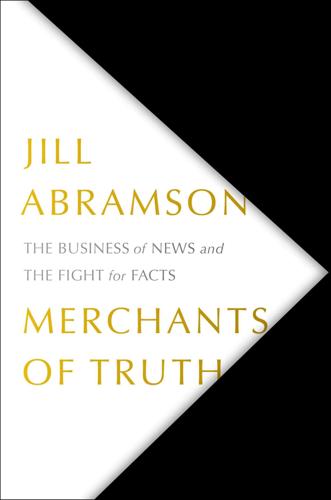
Merchants of Truth: The Business of News and the Fight for Facts
by
Jill Abramson
Published 5 Feb 2019
Trying to answer them would take time, but working on this book, a narrative history told through four different news companies, would give me a passport into the newsrooms on the front lines. After two years of hanging out with their leaders, their technologists, their reporters and editors, I might have some sense of whether there was a future for quality news. What do I mean by “quality news”? News that isn’t commoditized, merely chronicling what happened and where, like the stories doled out by public relations firms or announced at staged events. Such stories were published every day. Quality news involves original reporting, digging to find the real story behind the story. Investigative reporting on the murky nexus of money and politics and corporate behavior.
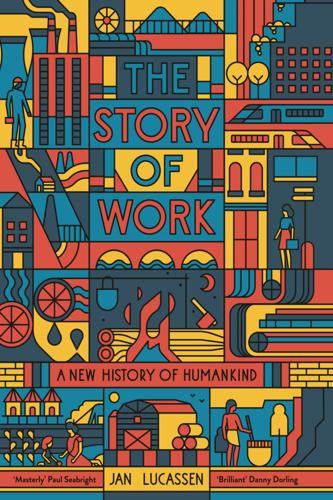
The Story of Work: A New History of Humankind
by
Jan Lucassen
Published 26 Jul 2021
‘In other words,’ they conclude: the more people claim to value work for itself, the less they work; the more they work, the less importance they place on work. Why? One explanation is that as countries become wealthy, two things happen. On the one hand, standards of living rise and consumption is increasingly commoditized, requiring additional income-earning labor . . . to live at a generally accepted standard. On the other hand . . . People are more likely to be working for someone else and correspondingly less committed to work for its own sake. So as nations grow richer their people work more and like it less.34 This at least goes for paid work, which invariably maintains a high status.

The Golden Passport: Harvard Business School, the Limits of Capitalism, and the Moral Failure of the MBA Elite
by
Duff McDonald
Published 24 Apr 2017
In 1986, when nearly a third, or 29 percent, of that year’s class took jobs in investment banking, that’s what they told themselves. And they might have been right. The economy needed to be reconfigured, and Wall Street took the lead in doing so. Of course, the money eventually became obscene, while the intellectual challenges were drained from the jobs as the forces of commoditization did as they always do, which is to eat their way up the value chain. Whereas an investment bank in the 1950s may have been so crucial to an initial public offering as to be worth their 5 percent fee, by the 1990s, the process had become so institutionalized that they weren’t worth a fraction of that amount.

The Web Application Hacker's Handbook: Finding and Exploiting Security Flaws
by
Dafydd Stuttard
and
Marcus Pinto
Published 30 Sep 2007
For example, a given country may have thousands of small retailers that want to offer their customers in-store payment cards and credit facilities. These retailers outsource this function to dozens of different credit card providers, many of whom are themselves start-ups rather than long-established banks. These credit card providers offer a commoditized service in which cost is the main discriminator. Accordingly, many of them use an ASP to deliver the web application that is provided to end users. Within each ASP, the same application therefore is customized for a huge number of different retailers. Figure 17-5 illustrates the typical organization and division of responsibilities in this kind of arrangement.
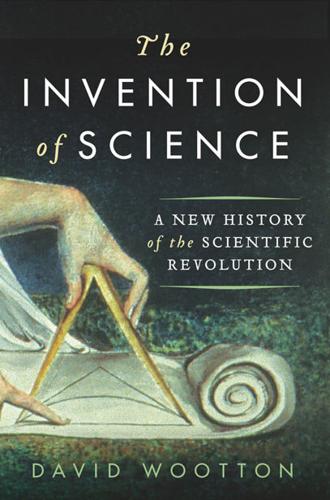
The Invention of Science: A New History of the Scientific Revolution
by
David Wootton
Published 7 Dec 2015
‘Black Boxism and the Sociology of Science: A Discussion of the Major Developments in the Field’. Sociological Review 18 (1970): 61–92. Wierzbicka, Anna. Experience, Evidence and Sense: The Hidden Cultural Legacy of English. Oxford: Oxford University Press, 2010. Wigelsworth, Jeffrey R. Selling Science in the Age of Newton: Advertising and the Commoditization of Knowledge. Farnham: Ashgate, 2011. Wilding, Nick. Galileo’s Idol: Gianfrancesco Sagredo and the Politics of Knowledge. Chicago: University of Chicago Press, 2014. ———. ‘The Return of Thomas Salusbury’s Life of Galileo (1664)’. British Journal for the History of Science 41 (2008): 241–65.

Hawaii
by
Jeff Campbell
Published 4 Nov 2009
Formal is the byword: either a jacket or collared long-sleeved shirt is required for men. Return to beginning of chapter DRINKING & ENTERTAINMENT There’s no denying it: Waikiki is tourist central with all the telltale signs: weak alcoholic fruity umbrella drinks and a unique culture sometimes reduced to a coconut bra. But underneath all of the commoditized cheesiness, you’ll find both traditional and contemporary Hawaiian music and hula dancing making a real comeback. Most of these live performances are free too. For LGBT nightlife, Click here. Hawaiian Music & Hula Performances are free, unless otherwise noted. All schedules are subject to change.
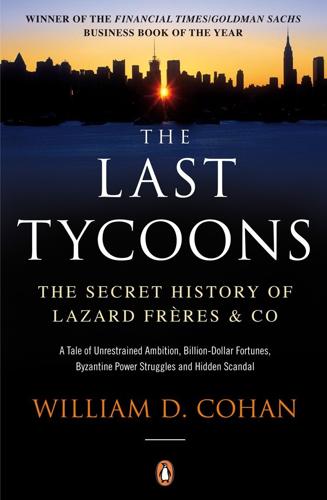
The Last Tycoons: The Secret History of Lazard Frères & Co.
by
William D. Cohan
Published 25 Dec 2015
How much one company could afford to pay for the shares of another could be determined easily. Internal rates of return could be calculated instantly, as could earnings dilution. A certain numerical precision overtook the world of deals--so-dubbed analysis paralysis. Now, inevitably, some of this precision proved to be false, and expensively so. And a backlash against the commoditization of advice followed, too. Manzi himself was one of many CEOs who came to recognize, over time, that the value of a banker's judgment was more important than his or her ability to perform a financial analysis. "There are some incredibly smart people who have worked in investment banking before, during, and since [the spreadsheet revolution] who understand that it isn't really only about the numbers but it's really about the judgment being applied and whether there is sort of core economic logic here and whether the resulting team is going to be able to execute on what they're contemplating as opposed to this sort of stupid half-inch-deep thinking about the numbers squaring in the spreadsheet," he said.